



Introduction
Marc Garrett, curator of the current incarnation of the Children of Prometheus exhibition at the NeMe gallery, interviews artist Joana Moll about the artwork, The Virtual Watchers, developed in collaboration with french anthropologist Cédric Parizot.
This project began in 2010, and looks critically at an online platform group, consisting of 203,633 volunteers surveilling the US-Mexico border, through a social media platform, such as Facebook. The community of The Virtual Watchers existed well before, and briefly, during, President Donald Trump’s signature promise in 2016 to build a wall at the US southern border, to stop more migrants crossing over onto US soil. The project also touches upon the wider online culture of attacks by bots and trolls from clandestine right-wing groups. The interview also explores Joana Moll’s interpretation of the Children of Prometheus exhibition, and briefly discusses other projects such as CO2GLE, which is an attempt to visualize how much carbon dioxide the company is emitting per second.
Interview
Marc Garrett: I remember when I first came across The Virtual Watchers, it left a deeply, unnerving impression on me. It reminded me of how threatening people can be towards others through the Internet. The project illustrates how participatory platforms which have come about, due to the rise of Web 2.0 culture; has not only paved the way for positive forms of mass communications for small groups and individuals to connect with each other, and with families and friends, but, there is also a darker side that people around the world have only in the last few years become aware of.
Out of the many scenarios you have witnessed when studying this virtual surveillance group, what has grabbed your attention the most, or feels most significant to you?
Joana Moll: The platform that gathered this group of people was specifically created to crowdsource national security by allowing citizens to monitor and report illegal activity in the us/mexico border. Ultimately the project shows how citizens can easily, and silently, be militarized by means of free labour, by translating a physical territory into social media, in this case, a border. Personally, what surprised me the most was the fact that most of the users we investigated, were either retired, unemployed or sick and couldn’t leave home.
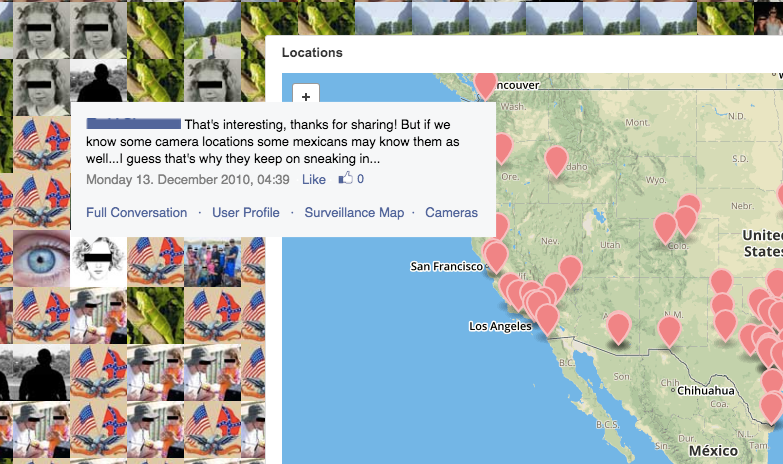
The platform was a stage which allowed them to socialize and feel useful. A couple of users even claimed that the platform saved their lives, that their days became meaningful again. This use of the platform also revealed something important: according to the authorities, and this was that it was quite ineffective when it came to stop illegal activity around the border. Actually, some Sheriffs claimed that the amount of reports that they received on a daily basis were useless and difficult to process. However, the platform worked quite well in terms of keeping a large number of users monitoring the border. It had more than 200.000 registered users which spent more than 1 million hours securing the border for free.
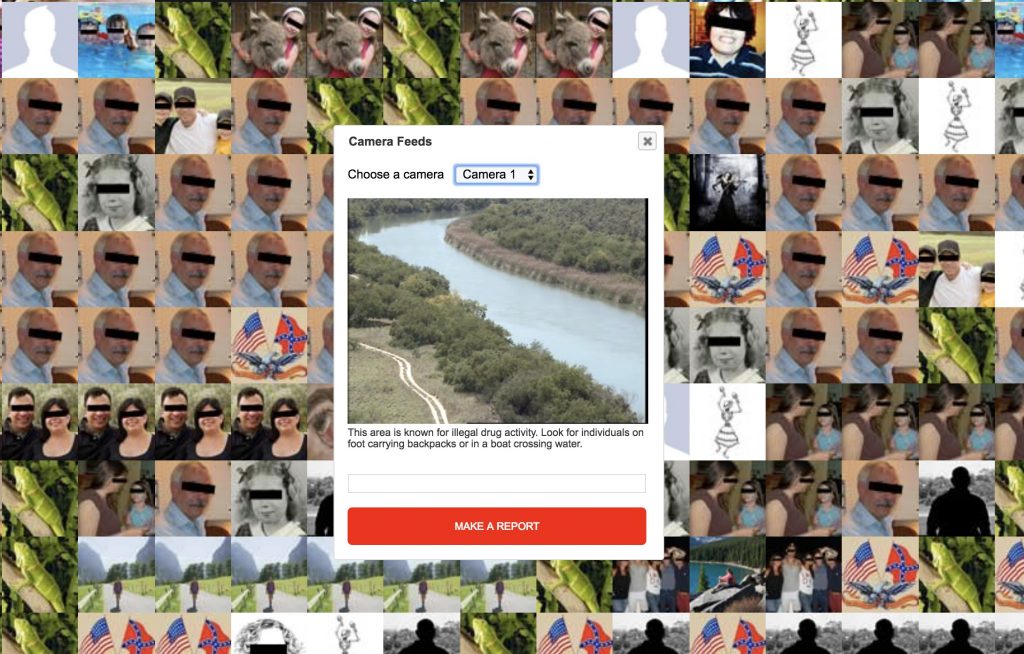
Marc Garrett: This project and or artwork, has been around for nine years now. Yet, its subject matter was ahead of its time, and looking at it now it feels even more relevant. For example, across the world, the general public is only now coming to terms with the political and social, aspects and consequences behind the varied forms of virtual surveillance, dominating online interaction.
This is also true in regard to climate collapse, which brings me to your essay Deep Carbon (2018 ), where you say, the “amount of users and network connections has increased at a whooping pace ever since. In 2015, the Internet registered 966 Exabytes of IP traffic (1.037.234.601.984 GB) and is expected to reach 1579,2 Exabytes by 20182.”
And, then you say, “despite the growing number of Internet users and information flows, the material representation of the Internet and surveillance economy behind it remains blurred in the social imagination.”
What do you think will help to resolve the difficult issue in respect of material representation, in your terms?
Joana Moll: This is quite a difficult question to answer, indeed! I think there has to be a radical change in the way we produce and consume data, but most importantly, in the way our interfaces and interactions are designed. Even though our internet ecosystem is expansive we only interact with it through interfaces, and I really believe interfaces hold the key to start solving the problem. The energy consumption of most of our interactions in the digital realm are very opaque, we have no idea about all the processes that are taking place beyond the interface (i.e. a website, an app) and where all our data is going. I’m about to launch a project called The Hidden Life of an Amazon User which tries to bring to light all the amount of processes that are triggered by doing a simple purchase in Amazon. The amount of information that is involuntarily being loaded in the user’s browser is massive, let alone its energy consumption and environmental impact.
Since 2015, within the Critical Interface Politics group I founded at HANGAR (Barcelona), we’ve been developing experimental workshops that focus on developing sustainable interfaces. We usually work with a limited energy budget, which means that the interfaces we design can just use a certain amount of energy. It is really amazing how this seemingly small shift radically changes the way we think and design online interactions. If this would be a standard process when it comes to design our online experiences (which it should), would possibly have tremendous collateral positive consequences for the entire internet ecosystem, specially in terms of preventing to collect massive amounts of user data, which consume vast amount of resources. In this sense sustainable websites would be privacy friendly 😉
Marc Garrett: In what way do you think your own work fits into the context of the exhibition?
Joana Moll: It’s always hard to talk about my own work beyond my own work, but I’ll do my best! I feel my work tries to reveal very complex and hard to grasp techno-social arrangements in a very simple way. To allow people to understand the infrastructures and processes that govern their day to day lives without feeling smashed about their complexities it’s a central concern in my practice. I think my work fits in the exhibition in many ways, but I believe that this need to urgently discuss critical implications of our technologies with broader communities is one of the most relevant.
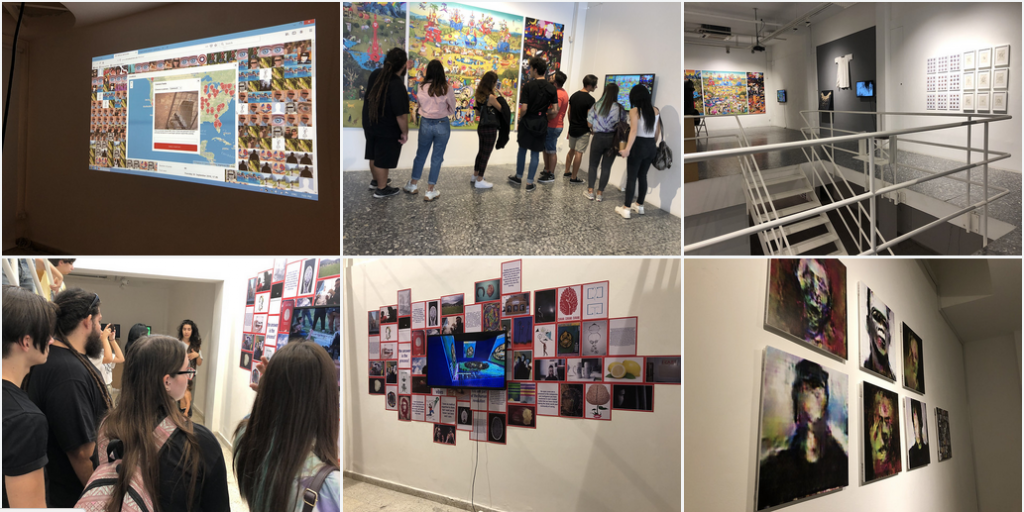
Marc Garrett: The postmodernist, feminist and theorist, Donna Haraway has recently re-emphasized the importance of re-evaluating certain contemporary contexts, especially those involving the patriarchy, politics, and climate change, in the age of the Anthropocene. I consider yourself, and myself, have been exploring our practices in parallel to Haraway’s critical ambitions, in respect that, we share similar values, but express them differently.
Thus, we need to re-examine our relationship with the world in the midst of spiraling ecological devastation, and find new ways to reconfigure our approach and connection to the earth and all its inhabitants.
Could you give us an example of your current works that you feel could be materializing Haraway’s writings, but as part of your own artistic production and or intention, and what the links and differences are?
Joana Moll: I agree, our work involves many of Haraway’s concerns, indeed. As for my practice, I believe politics, patriarchy, climate change and technology are continuously meeting and being questioned, in the sense that I always approach this contexts from different angles, which also talks a lot about my own process of understanding complex contemporary arrangements and how they affect and modify each other. For example, in my latest projects: The Dating Brokers and The Hidden Life of an Amazon User (HLAU), I examine how user activity, or in other words free labour, is heavily monetized by third parties. However in HLAU I also examine the energy costs that such exploitation is involuntarily assumed by the user. Graham Harman said it is very important no to assume that everything is connected, but to continuously trace the connections between things, which is something that I try to remember when I do a new project and I believe that Haraway’s body of work heavily points in that direction. However, I believe that techno-colonialism is a central issue to tackle while re-evaluating technology, politics, environment and most importantly, the way it affects and informs our ability to think and imagine. Together with my colleague Jara Rocha we’ve been recently collaborating in a series of projects and workshops that aim to reveal tangible outcomes of techno-colonialism in our daily lives.
Marc Garrett: The Children of Prometheus exhibition was mainly inspired by Mary Shelley. What elements in the exhibition’s: themes, ideas, and contexts, do you relate to personally?
Joana Moll: I relate to all of them, they are all so relevant and urgent! As for my work, I especially connect with the way invisible processes triggered by human-centered technologies affect our natural habitats. I believe that the exhibition opens highly relevant and urgent discussions about how society has been “Frankensteined” at large. The way our technologies are designed, produced and used are seriously damaging not just our life-giving habitats but also our relationship to them, our ability to imagine habitable ways to inhabit this planet.
Conclusion
When I first began the Children of Prometheus exhibition project, it was called Monsters of the Machine: Frankenstein in the 21s Century. Both titles fit the same curation function, and that is, to examine critically with other the artists in this touring show, Mary Shelley’s questions, that were asked in 1818, today, looking through her eyes.
I can’t imagine what she would think of Trump and all the other extreme right-wing, racist, groups and politicians, and dodgy corporations, exploiting people’s data, whilst adding to the destruction of the planet. However, in the spirit of Shelley, we have individuals such as Joana Moll who can play that role, with other artists doing what Shelley did so well then, but today. Our world is dying and those in power are part of non-friendly systems designed to kill it further, while the poor and oppressed take the brunt of it all. Moll, and the other Artists the exhibition, are presenting us with serious questions. But, accompanying these necessary and urgent concerns, are also answers at the same time. But there’s not much time.
Joana Moll is part of the touring exhibition, Children of Prometheus currently at the NeMe Arts Centre, Limassol, Cyprus 11 Oct – 20 Dec, 2019. This exhibition was originally produced in partnership with LABoral, in Gijon, and is an extension of the Monsters of the Machine: Frankenstein in the 21st Century, 18 Nov 2016 – 21 May 2017. We are currently negotiating other venues, in different countries across the world. Please contact if you’re interested in the exhibition.
Joana Moll will also be leading a workshop, THE INTERFACE, DECONSTRUCTED, and participating in a conversation with Tatiana Bazzichelli, founder of Disruption Network Lab as part of ACTIVATION: Collective Strategies to Expose Injustice, Saturday, 30 November 2019.
Artist Bio
Joana Moll is a Barcelona / Berlin based artist and researcher. Her work critically explores the way post-capitalist narratives affect the alphabetization of machines, humans and ecosystems. Her main research topics include Internet materiality, surveillance, social profiling and interfaces. She has lectured, performed and exhibited her work in different museums, art centers, universities, festivals and publications around the world. Furthermore she is the co-founder of the Critical Interface Politics Research Group at HANGAR [Barcelona] and co-founder of The Institute for the Advancement of Popular Automatisms. She is currently a visiting lecturer at Universität Potsdam and Escola Superior d’Art de Vic [Barcelona].
Interview by Ruth Catlow
Transcribed by Anna Monkman
Ingrid LaFleur is on a mission to ensure “equal distribution of the future”. The curator of Manifest Destiny in Detroit, she also recently stood for mayor with an Afrofuturist manifesto.
Detroit has long played a critical role in the history of ‘domestic and global labor struggles.’
And now its quest for social justice has an avant-entrepreneurial dynamic, working across art, politics and technology. Activists respond to the city’s (often highly racialised) political failures to provide basic utilities with impressive social innovation. The recent boot-strapping community mesh networks for instance, was a response to the fact that 40 percent of Detroit residents have no access to the Internet at all. The alliances and networks formed in this project are now providing the social grounding for peer-to-peer technical education and experimentation with emerging decentralisation technologies. DACTROIT (an EOS project) is now exploring how payment for this infrastructure might be made through a community token.
I first interviewed LaFleur in July shortly before Detroit Art Week and the opening of Manifest Destiny at Library Street Collective Gallery.
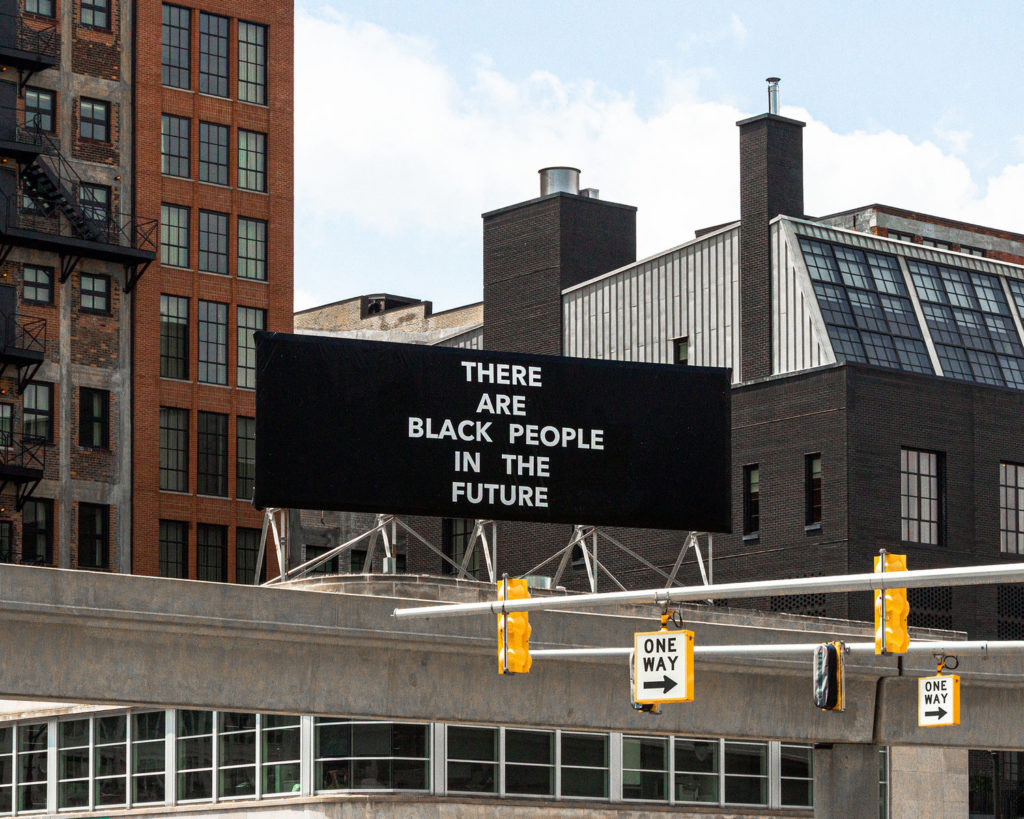
Ruth Catlow: I have wanted to talk with you for a while about your current curatorial work. But first I think it’s worth noting that we share a number of unusual preoccupations. We are both inspired by the social justice sci-fi of Octavia E Butler; we root our work in locality; and have experimented with blockchain technologies as a site for artistic experimentation and social change. I have not however, stood for mayor. You have, and we will come to that later.
Please can you start by telling us about your exhibition Manifest Destiny.
Ingrid LaFleur: I only curate once every two or three years, almost like a museum curator. Manifest Destiny is a culmination of things that I have been thinking about for a while. Working across art and blockchain technology I’ve been very action-oriented thinking about what we need to be implementing, learning, adapting, innovating, in order to basically get free – that’s the whole point of my work.
I’m constantly trying to figure out how Black bodies can be free, which means I really need everyone to be free. And so I’m constantly unpacking, dissecting Afrofuturism as a framework or launchpad. I’m working to see what I’m missing, where are the gaps and how can I fill them in so that we can then make pathways forward and develop the futures that we really want to see. The exhibition title comes from this work.
I wanted to look at this in an abstract way. For instance, the painting series by Satch Hoyt, The Course of Stars of the Sirius System, are illustrating the star Sirius constellation, ground us in an ancient history which I think is very important as we plan and create these processes for manifestation. Satch Hoyt’s painting, Afro-Sonic Map (Black Mapping), is looking at how sound has been cultivated and informed by the different places through which it has travelled. And I’m pulling this interpretation out, because I believe that as we are imagining our destinies we have to be grounded in ancestral wisdom and Afro-Sonic Map (Black Mapping) reminds us of that ancestor from which the sounds are coming… But how they’ve also been wonderfully altered and transformed as a result of coming in contact with different realities – meaning that different times and history have informed the music, have informed how we are communicating sonically.
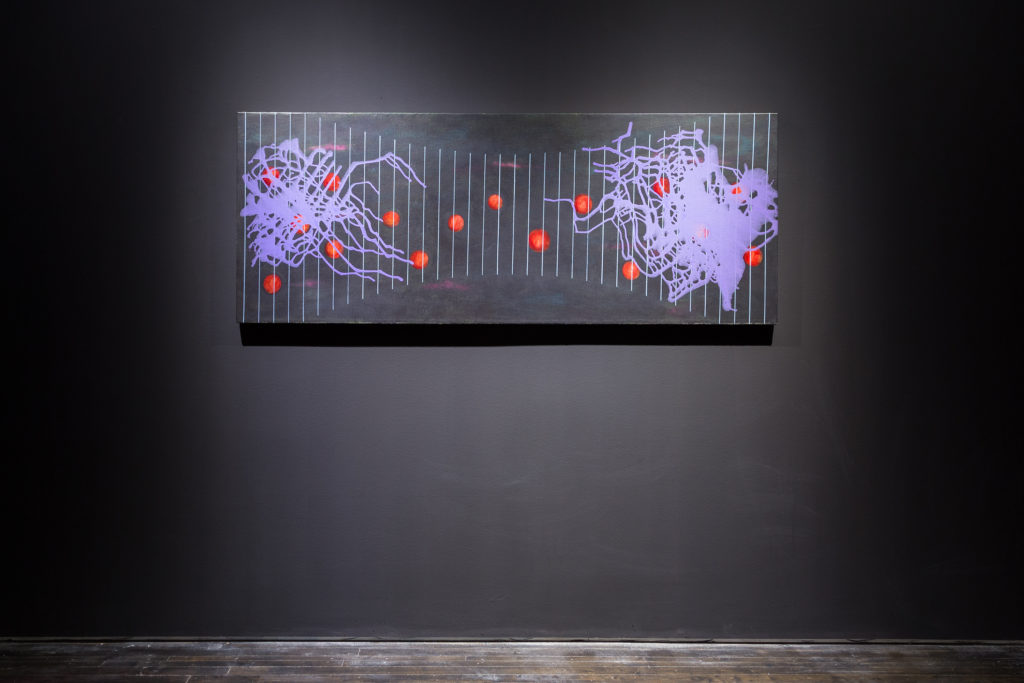
So this is a type of time travel, but it is not just time, it is realities, places and environments and all of these things that inform the work and how there is still always this thread that can always lead back to the original.
And in speaking of the original, the exhibition begins with an Afrofuturist boutique called DINKINESH. I created it because I really wanted to be able to provide items that were affordable and Afrofuturistic. One of the issues that I am having especially when it comes to Afrofuturist imagery is that it is very digital. I am here to bring it out into a physical space and make it both portable and affordable so then people can have it in their homes, place of work, wherever in the physical realm. The whole purpose of Afrofuturism is to shift consciousness and so I want it to be as available as possible. DINKINESH means “you are marvelous” and it is the name that was given to the oldest human remains found thus far, and they were found in Ethiopia. So this store is greeting you, it’s welcoming you into this space, but it’s also a gentle reminder that we all come from this one woman who is in, what we call now, Africa. And we are united by her. So DINKINESH initially will have this Afrofuturistic focus but over time it will grow to include Chicanofuturism and Indofuturism and all the futurisms of Black bodied and Brown bodied people. I am working on the boutique with Utē Petit who is based in New Orleans but from Detroit. He is designing the space and he is using imagery of flora from the Ethiopian region where Dinkinesh was found. The flora has been woven into the wallpaper for the space, so that is really exciting. I am very excited about DINKINESH.
RC: So people will be able to buy Afrofuturist art in the boutique.
ILF: Yes, like digital prints
RC: And will they be buying work that relates to work across the whole show?
ILF: Not really. Some of the artists will have products in the store like zines, hand-printed bags, but they were curated separately from the exhibition.
RC: This is work produced by just one artist or a group of people?
ILF: It’s literally like a retail store so it is work by a lot of different people. It’s like a museum store so it’s a lot of different people from all over. I am basically trying to gather it all together into one space. We don’t currently have one physical store to go and buy Afrofuturist anything.
RC: Wow! How have you sourced all of this? Is it all Afrofuturist art?
IF: Yeah, it’s a combination of people that I have been following online, or different groups that I have heard about, some of my friends might have items that I like, I know some of the artists personally, so it’s a variety of things. It is great, it is exciting, and slightly overwhelming- because it will keep going. To live on, beyond this exhibition.
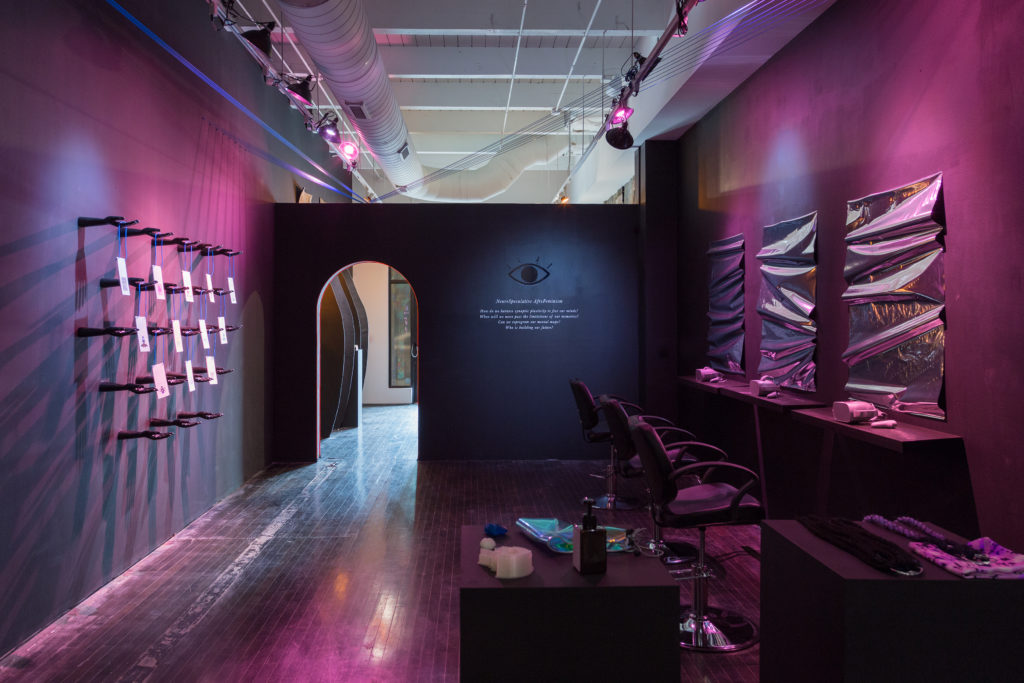
RC: How will it live on afterwards?
ILF: We’re going to be popping up in different places, I can’t announce it yet. I imagine that each place will offer different kinds of experiences. There will be some augmented reality involved in this iteration. I want to grow that, and expand into virtual reality experiences.
RC: I can see why that would be a bit daunting, because if it’s a boutique and people will be buying things it means you will need to keep it stocked.
ILF: It’s a real store!
RC: And are you selling things on the blockchain?
ILF: That might become complicated. But eventually I do want to accept crypto once I find a point of sale system I feel comfortable with. But first, right now, I just need to understand what it means to have a retail space.
RC: To come back to Manifest Destiny, Can you tell us a little bit about the title of the exhibition? What’s the context and significance of Manifest Destiny as a phrase or as a name?
ILF: I am looking at what does it take to manifest one’s destiny. So as I mentioned before, the guidance of ancestral wisdom is really important, otherwise the possibilities of the past become inaccessible in the present. I’ve also learned, as we move into working with new technologies like blockchain, and the philosophies that are behind it, and becoming more familiar with the tech industry in general, how important it is that the planning phase should be a heart-led process. We can see how a person’s perspective is really going to affect the tech and how it interacts with the world and so I’ve become very sensitive to how we’re planning and approaching a thing in order to manifest it.
And then finally there are the tools to make the physical thing and that’s when I get really excited. Implementation.
RC: OK So can you talk me through the exhibition?
ILF: Yes, so it starts off with DINKINESH. Then it goes into Hyphen Labs’s NeuroSpeculative AfroFeminism project which recreates a Black hair salon where you are getting your brain optimised. This is like that beginning process. And I think of the optimisation process as a way of decolonising because you don’t want to plan something that is a result of a colonised, limiting, narrow kind of perspective that is really based on someone else’s agenda. So you want to clear that and clean that up. Then Satch Hoyt’s beautiful paintings, Afro-Sonic Map (Black Mapping) and The Course of the Stars of the Sirius System. These give a reminder of the foundation of histories and ancient ancestral lineage. Then Alisha B. Wormsley created this really wonderful installation that is connecting the two gallery spaces. We also have her billboard that is placed outside of the gallery space above a bar right by public transportation, that says ‘There Are Black People In The Future’. I’m really excited about that because downtown Detroit has become 90% white even though the city is 85% Black so it’s like a little colony. The billboard is disrupting that space.

In the second gallery we have Maikoiyo Alley-Barnes has created a black and white film called Sacred, which is accompanied by a gorgeous sound that creates an ethereal multi-reality. Sacred is hard to talk about without giving away the mystery that’s embedded in it, but the thing that is sacred, you come to understand is sacred to us all. He has also created two sculptures that expresses the continuum that is necessary for the evolution of the future. And then there is Jasmine Murrell who created a collage tapestry, one of them titled Walking Time Travelers: Future will remind you of what is most important, what was lost, what was stolen, and what can never be replaced. Jasmine also created a deconstructed sculptures of hands that are coming through from a different reality.

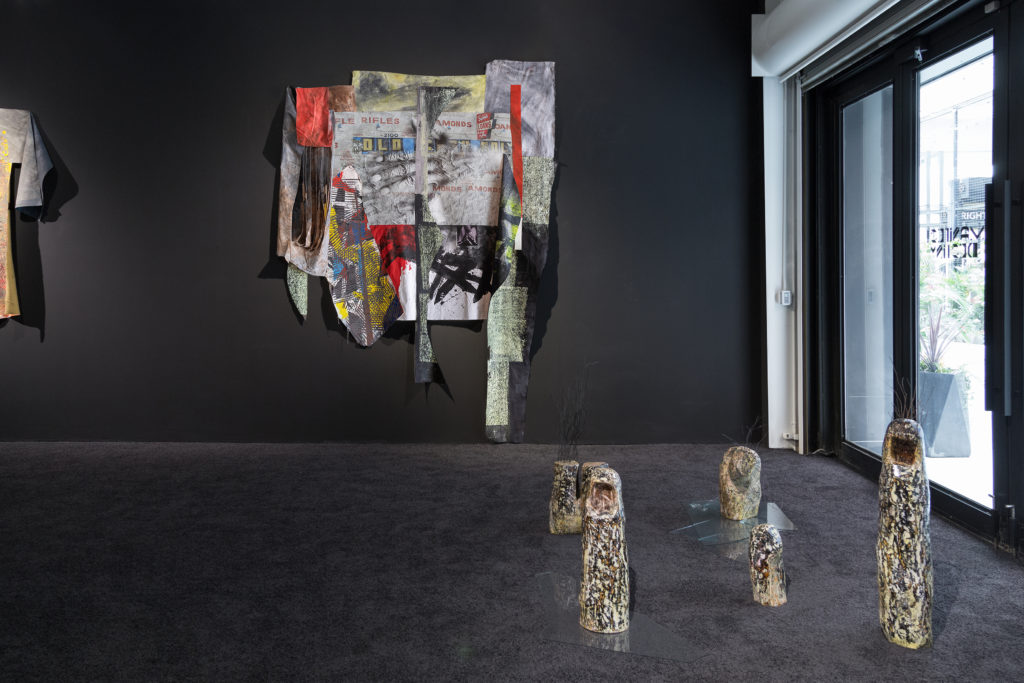
That second gallery space opens up to an alleyway that has been fully renovated where there are clubs and restaurants and bars and all types of artwork, there will be five very large panels that will have augmented reality artwork. This work is coming from the Digitalia exhibition that was shown in San Francisco at the Museum of the African Diaspora, MoAD. I was such a fan of the exhibit that I invited Lady PheOnix who is the curator of Digitalia to travel a portion of the exhibition to Detroit. I was able to choose some images from that exhibition that is on display in the alleyway called The Belt. It will be up for a year. I’m very excited about this because not everybody is going to walk into the gallery space so this is a way of making the afrofuture a little more public, also because augmented reality is participatory it’s a fun activity that everyone can enjoy. For many this will be their first introduction to AR.
The last component of Manifest Destiny is the skills training through a series of workshops. The workshop programme includes a talk by Rasheedah Phillips who is known for her theoretical work on quantum futurism. The Black School reimagines the art school into a Black art school taught participants about ancient architectural techniques and fractals and then as a group built a pyramid. Creative technologist Onyx Ashanti held a 3-D printing workshop. And I gave a workshop on decentralizing power and new economies. The programme ends with DC comics writer Tony Patrick who led us into a worldbuild session over three days. We developed a vision for Detroit in 2040 that will become a comic and eventually a virtual reality experience.
RC: It sounds just amazing! Like there are a lot of different ways in for different kinds of people. How much do you think or care about who this is for and how they find out about it, and also what their experience of it is.
ILF: This show is literally for Detroiters. I am constantly thinking about the exhibitions, the materials, the exposure, making sure that Detroiters have exposure to what is happening in the entire world and I really don’t care if you have never been to a museum or if you go all the time. Most of my work has been directed towards people who might be in-between. They like art and are curious but maybe they are not going to gallery exhibitions all the time or following museum shows. I am very much aware that the gallery space is on the alleyway, The Belt, which is party central for downtown, day and night in the summer. What I love is part of the exhibition in the gallery is visible in The Belt because one of the walls is all window. Downtown attracts all kinds of people, definitely people who have probably not experienced as much artwork by Black artists in their life and who might be a little afraid of Black bodies and hopefully they can develop a new relationship based on this show.
I’m very clear with artists about where they are showing, the politics of what’s going on and who’s going to come through those doors, because some artists might be sensitive to this. Some artists might want to engage in a very particular way as a result. One artist wanted to do something a little more artistic that would work in MOMA, and I was there with him, I got it, but I was like, I just want you to understand that the people who are going to come through these doors have been day drinking. They are going to be in shorts and flip flops, like ‘oh this looks cool’ and ‘oh this is great’ and within minutes they are gone. To help ease people into the space I asked for black carpeting on the floor because I want people to pause when they enter, I want the hushness when you come in so you are a little more reflective. This did happen but also what I did not expect is how people then felt comfortable to sit and chat on the carpeted floor. That warmed my heart. I love when a traditionally austre space becomes an inviting one.
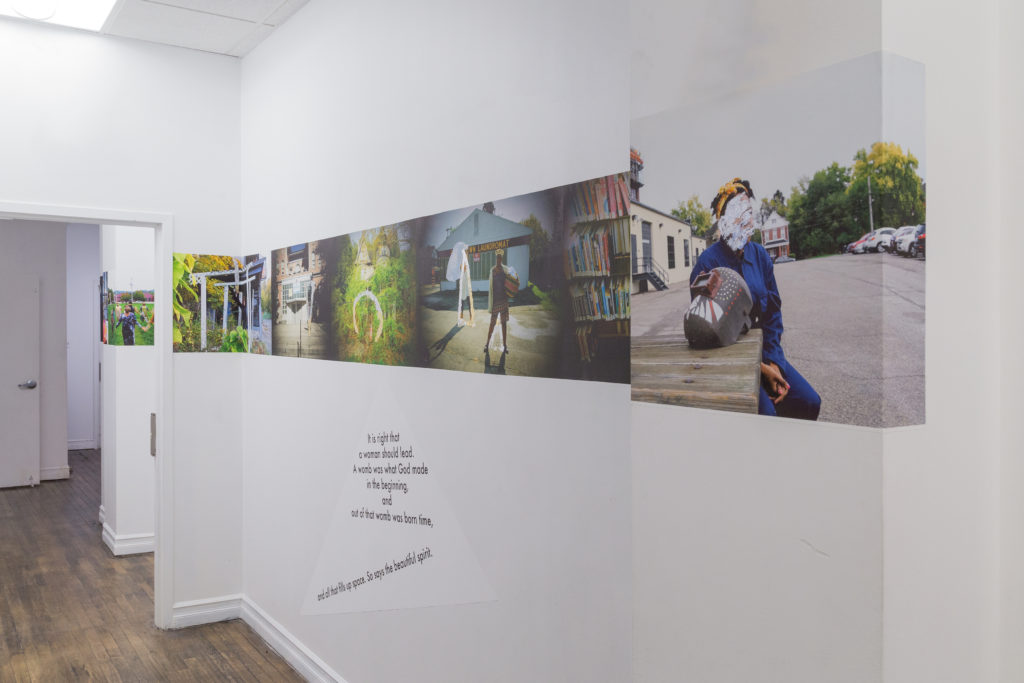
RC: So we run a gallery in the heart of a public park in North London, so we also get the day drinkers, and we also welcome the day drinkers! So it’s interesting to hear you talk about this.
RC: Given that Furtherfield has a readership from all over the world, I imagine that many people will not really have a sense of Detroit. So it would be great to hear you talk about why it’s important to you that this is happening in Detroit. And why Detroit?
ILF: Detroit is going through a major transformation, and some of us are in the midst of it, some of us are making it happen, and then some of us are running behind watching it happen and trying to figure out where we fit in. There is really no reason to leave anyone behind. It’s a critical moment because we are getting an influx of white people moving into a majority Black city. White people in the United States of America are not used to being minorities. Being a minority in their minds mean they have less power. It seems like they are saying to themselves, ‘I’m not used to being the only white person in a room so I’m going to stick with all the gentrified places where I remain majority in the room and I feel safer, more comfortable’. But what that means is that they are still not confronting their fear of Black people so it’s like they’ve decided to live in a tiny hut in a big forest and won’t explore the forest even though it offers new insights and experiences. And it’s ok if that’s what they really want, but then don’t stare or become hostile because Black people have entered a space.
My presence as a Black person can be very disruptive in these spaces, it’s like people forget that they are in a majority Black city. Nobody really cares when there are white people walking into a majority Black bar. The reason we don’t care is because we are in our safe space so a white person coming in is like [shrugs]. But when a Black person enters a majority white space a mixed bag perspectives awaits–a sprinkling of Trump supporters or a sprinkling of racists. A Black person has to figure it out in real-time constantly, whereas a white person coming into a Black space we are just like, ‘do you want a drink?’ It’s not like ‘Where are you from?’, ‘Why are you here?’. We don’t have it in us to do all the microaggressions that white people do and I really think it’s the lack of understanding Black people and culture that has caused a lot of harm. Also, the constant reinforcing of whites to separate themselves from people just because of the color of their skin, it’s dehumanising, causing a level of fear and depression that then becomes violent.
This exhibition is my way of confronting the anti-Blackness and making people face their fears, see it and think about it. What does it mean? Why is there a sign that says ‘There Are Black People In The Future’? Why is it even necessary to say that? What does that make me feel? What does that make me see in the future? And then it makes you question, how was I imagining the future? Did I imagine Black people there? Was I just imagining me and my people? It’s very much confrontational but in a very loving way and that’s why I put DINKINESH, our mother at the beginning.
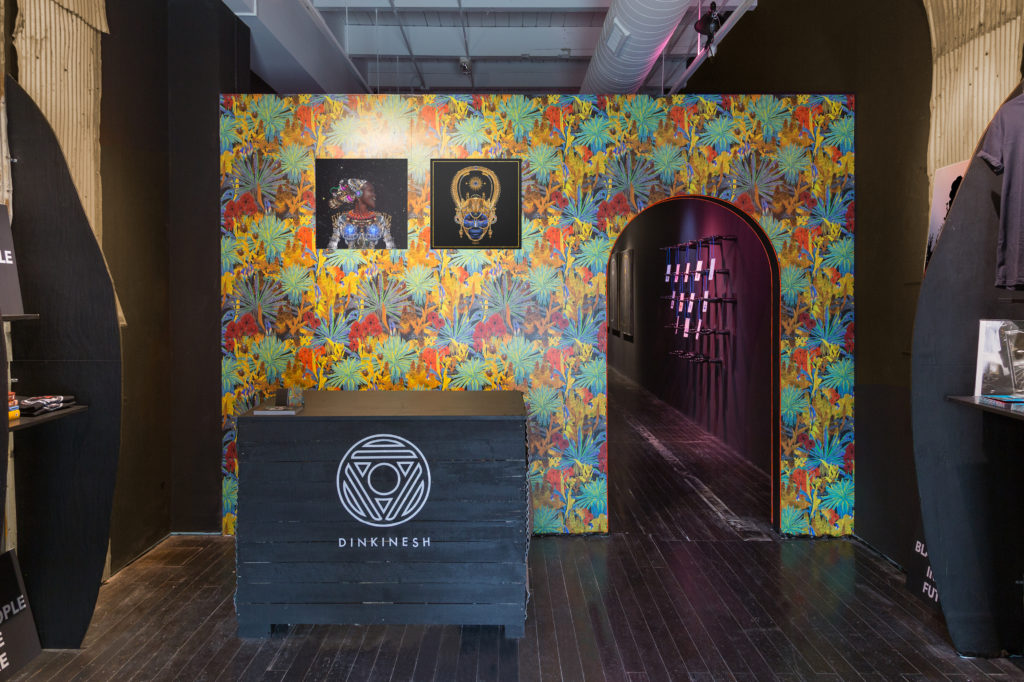
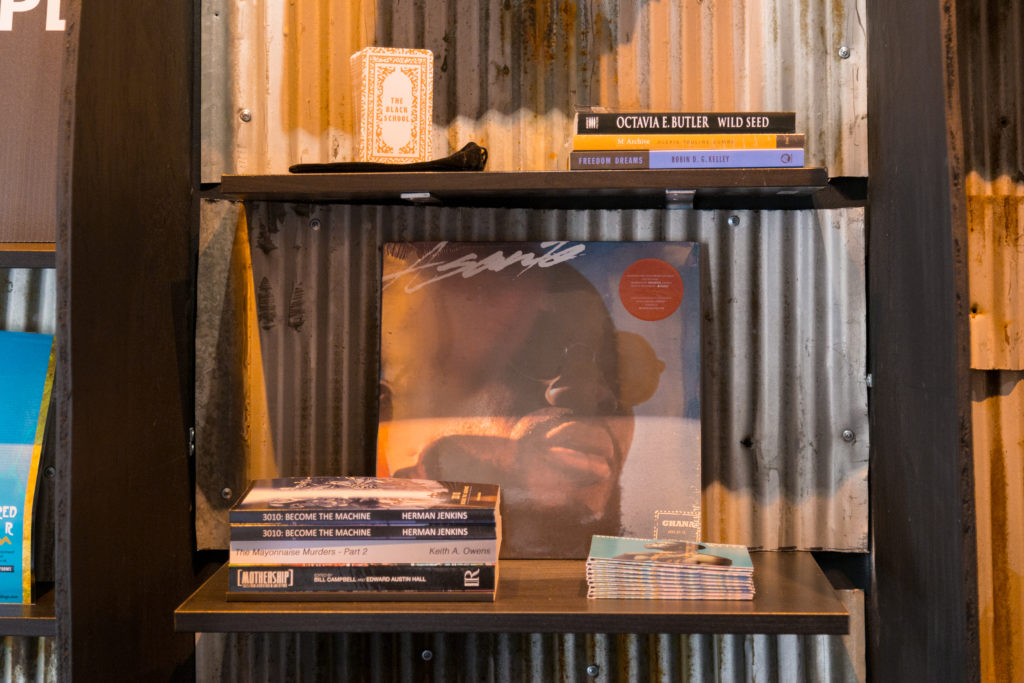
RC: You talk about confrontation but you are also confronting the fear. So you are recognising what’s at play not just at the surface, but on many levels here.
ILF: Exactly. You cannot heal that which you do not acknowledge exists, so I need people to confront the fact that the fear exists somewhere, subconsciously, in your DNA, your heart. Once the fear is acknowledged, the healing begins and then liberation is close. But the problem in the United States is that whites don’t have to confront their fears. But what is misunderstood is how by not confronting fear they are limiting their own life, and they are denying themselves access to humanity.
RC: The first time I met you was at The Gray Area festival when you were talking about running as mayor with an Afrofuturist manifesto. I love that I can now wrap up this interview with a question about your political career!
ILF: Yes! I was the first political candidate to use Afrofuturism as a framework in a mayoral campaign. It was very much of a process to understand what it means to be an Afrofuturist within a political sphere because it had never happened before.
RC: And we should also look for the connection between your work with Decentralised Detroit and your curation of Manifest Destiny?
ILF: As I stated before, I have been in a space of action and because I am an impatient person and I would love to see everyone liberated and happy in my utopia while I am alive, I began investigating ways to tackle the poverty issue in Detroit. It was after I proposed a universal basic income using a cryptocurrency Detroit would create that I began exploring how cryptocurrency and blockchain technology allows for the development of new economies and ways to make money but how it is a tool allowing for efficiency when creating and building with people. Anybody who has worked in groups understands we need as much organization as possible so as a result of working with blockchain technology I’ve come to learn about decentralised autonomous communities and that’s when I become really excited. This is my Afrofuturist self trying to figure out what are the obstacles that Black bodies face in imagining futures, new futures, decolonised futures, futures of their own making from the desire of their own heart, not because of someone else’s agenda or brainwashing.
There are a lot of obstacles but I’ve come naturally and organically to a point where I decided to focus on economics. And so economic justice has been my centre point for a couple of years now. By really attending to the racial wealth gap (it would take the average Black American family approximately 228 years to accrue the wealth of the average white American family), we will then be able to see people have more control over their lives and the neighborhoods they live in. Now we have a pathway for growing wealth, which was something that was denied to Black Americans for over 400 years and continues today.
For me everything is always related, all of it, the art, the blockchain, everything. I am trying to attend to the mind, body, and soul, all at the same time. It is hard for me to focus on just one pathway towards liberation. I like to understand and be involved in multiple pathways to freedom. That’s what keeps me exploring, curating, teaching, lecturing and creating workshops.
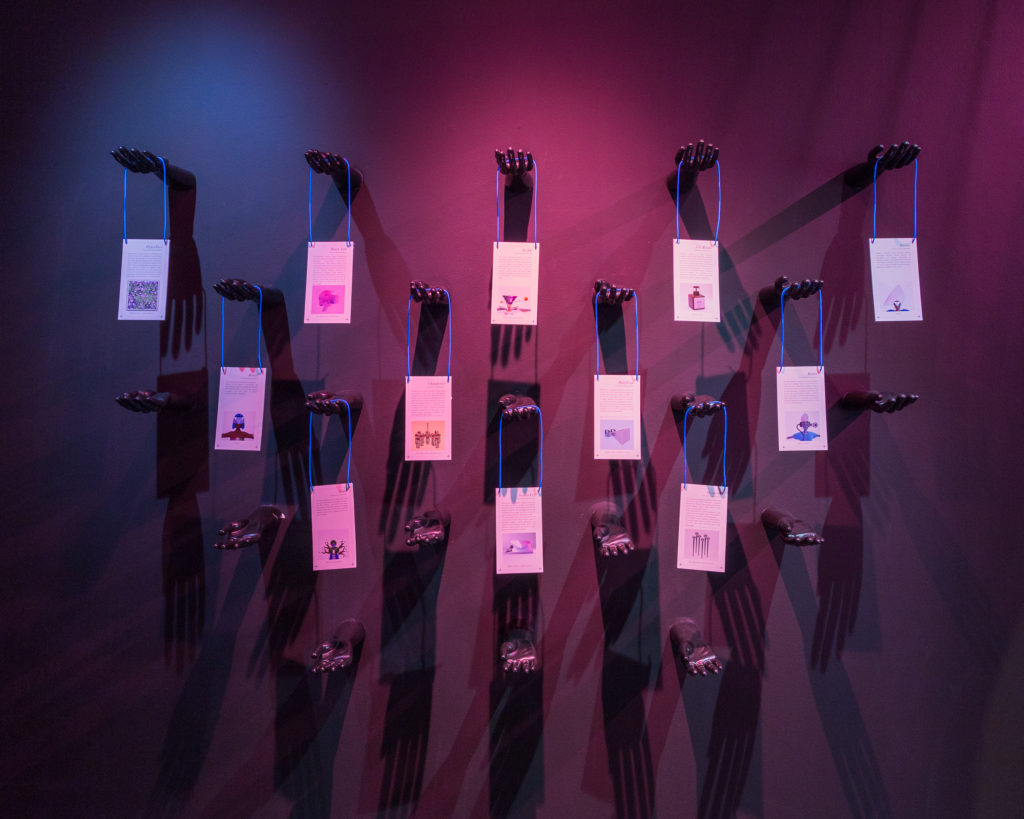
Manifest Destiny, is curated by Ingrid LaFleur. It is now on view at the Library Street Collective Gallery until 5 October 2019
Curator, pleasure activist and Afrofuturist. Her mission is to ensure equal distribution of the future, exploring the frontiers of social justice through new technologies, economies and modes of government. As a recent Detroit Mayoral candidate and founder and director of AFROTOPIA, LaFleur implements Afrofuturist strategies to empower Black bodies and oppressed communities through frameworks such as blockchain and universal basic income. Ingrid LaFleur is currently the Director of Social Impact for Detroit Blockchain Center and curator of Manifest Destiny currently taking place at Library Street Collective in Detroit.
In this interview with Tatiana Bazzichelli, artistic director and curator of the Disruption Network Lab, in Berlin, we discuss questions about art as a process for investigating political misconduct and wrongdoing.
Disruption Network Lab is an ongoing platform of events and research focused on art, digital rights, hacktivism and disruption. So far, they have hosted twelve conference events in Berlin and one in London. The programme creates a conceptual and practical space in which whistleblowers, human right advocates, artists, hackers, journalists, lawyers and activists are able to present their experience, their research and their actions – with the objective of strengthening human rights and freedom of speech, as well as exposing the misconduct and wrongdoing of the powerful. The programme has been covering topics such as the drone war, whistleblowing, counter-surveillance, ISIS media propaganda, hate speech, and artistic and activist strategies in times of increased geopolitical control (see: disruptionlab.org).
Marc Garrett: Why do we need the Disruption Network Lab now?
Tatiana Bazzichelli: The goal of the Disruption Network Lab is to present and to generate new possible routes of social and political action within the framework of hacktivism, digital culture and information technology, focusing on the disruptive potential of artistic practices. We aim to investigate projects that disrupt the field of information technology in unexpected ways, shedding light on interventions that provoke political and social change from within closed systems. The curatorial strategy aims to connect and to bring into dialogue experts that unfold inner structures of political, economical and technological systems, therefore promoting an in-depth understanding of digital culture in everyday life and society.
I believe that the Disruption Network Lab is necessary because we create a dialogue among people and practices that not necessarily meet often. For example, we connect whistleblowers and artists, policy makers and hackers, investigative journalists and activists. Most of the time, these people are acting within specific scenes, without having occasions of exchange. The curatorial methodology is based on a montage of practices, as well as of fieldwork, to create a conceptual network of multiple points of view.
Each event starts with an in-depth investigation of a subject that is pressing and urgent, and that sometimes needs to be revealed or exposed to the general public. It is not only about organising events, but also to research on what is important to cover according to what is happening in politics, culture and society at a specific moment.
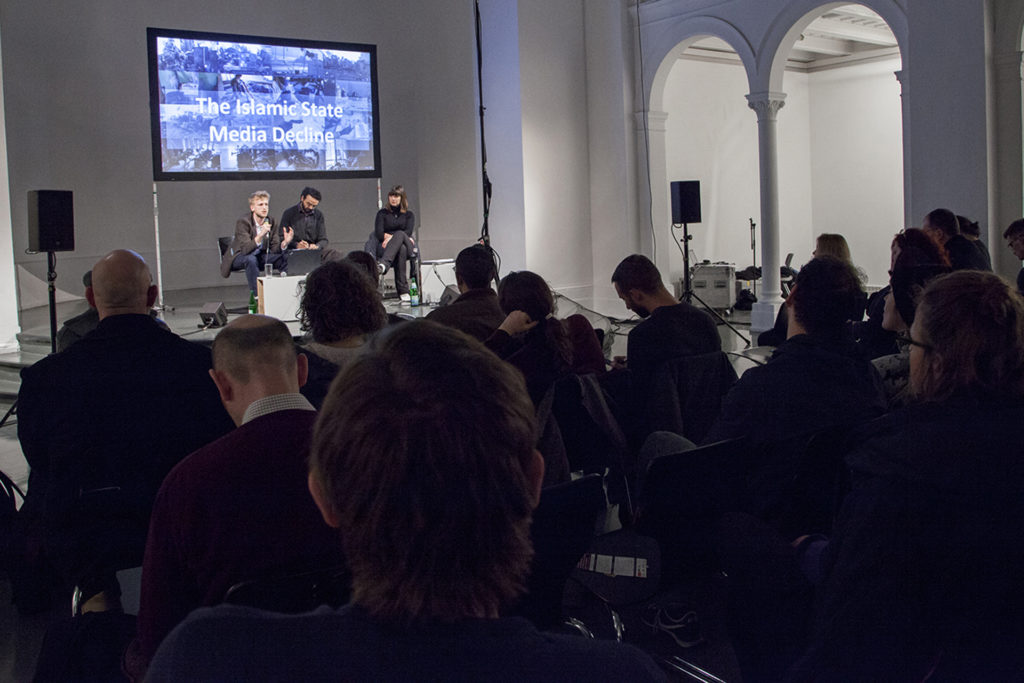
MG: An aspect I find really interesting about DNL is its investigative approach. It deals with those current issues usually tackled by journalism, but manages to go much deeper through the lab and conference formats. It also bridges other political, economical and technological systems, and digital culture. I’m wondering why you’ve chosen an investigative approach?
TB: Our aim is not only to comment on subjects of analysis, but to invite people that experience such subjects themselves, often at a high personal risk, and are able to offer to the public concrete advice and countermeasures that go beyond theoretical speculation. Our objective is to provoke change: change of opinion, practical change in our everyday life, and change in political and cultural terms.
At the core of my curatorial and research analysis is the reflection on practices that work from the inside of social, political and technological systems, questioning such systems themselves. This research path follows my theoretical investigation initiated with my PhD research “Networked Disruption: Rethinking Oppositions in Art, Hacktivism and the Business of Social Networking” (published in 2013 by the Digital Aesthetic Research Centre of Aarhus University in Denmark, and followed by a traveling exhibition in various European venues: aksioma.org/networked.disruption).
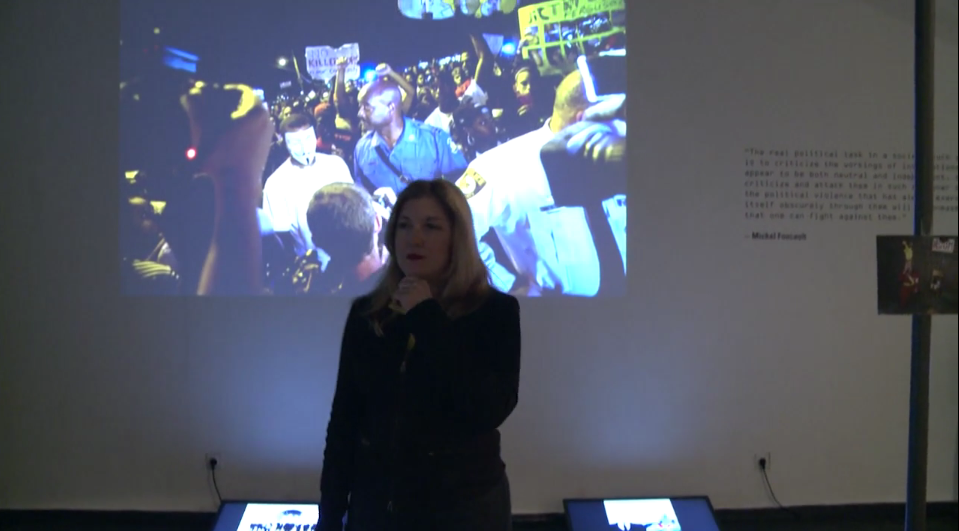
Since the first conference in April 2015, the Disruption Network Lab has been investigating the concept of whistleblowing, bringing attention to abuses of governments and large corporations, involving speakers such as Laura Poitras, Brandon Bryant, John Kiriakou, Annie Machon, Cian Westmoreland, Mustafa Al-Bassam, Abdalaziz Alhamza, Trevor Paglen, Henrik Moltke, a.o.
I come from a practical and theoretical background that combined art, hacking and political activism, but since 2014 my attention has been oriented to art as a act of investigation, thanks also to the work of Laura Poitras that deeply inspired me. I am progressively getting interested in artistic practices and investigations that provoke concrete outcomes, that are even difficult to be defined as “art”. Hacker art was my field of interest since the emergence of hacker culture in the 1990s, but thanks to the Disruption Network Lab activity I got even more concrete, and I started being passionate about the field of investigative journalism.
My intent is to combine the culture of investigation with artistic practice, or even operate a conceptual shift, by starting to define investigative journalism and whistleblowing as art.
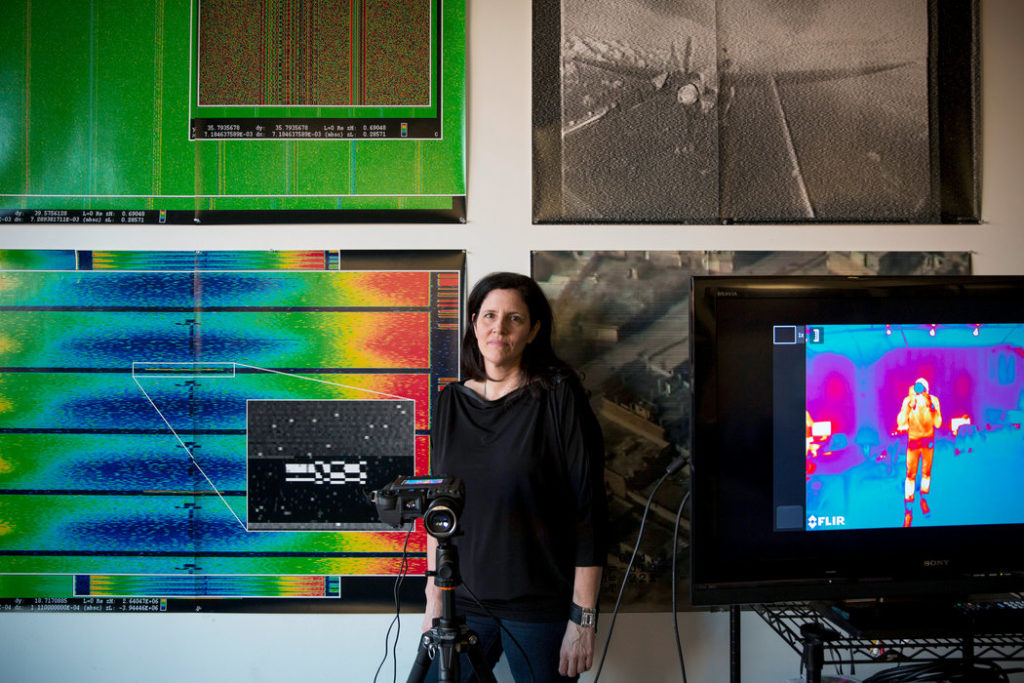
In the act of whistleblowing is embedded a deep change of perspective, where the unexpected emerges. This search for a radical change of point of views, which results in a deep disruption of individual life is something extremely valuable not only in political and cultural terms, but also on an artistic level. It is the contemporary Avant-garde, the search for a profound unexpected gesture that interferes with society and politics at a global level.
The investigative approach is necessary not only in the realm of journalism and whistleblowing, but also in the art context. It is thanks to an artistic approach that many discoveries can be done because artists are able to see reality as a challenge, and in a sense there is an important thread that connects them with whistleblowers. When I brought together these expertise during the Disruption Network Lab conferences, I could really see how it was possible to combine such methodologies and how whistleblowers and artists were intellectually benefiting from each other.
MG: To what degree does your investigative approach stem from what in the media art world has been termed as Tactical Media or Post-Tactical Media?
TB: There is for sure a connection with the tradition of tactical media strategies, and the discourse of post-digital interventions. The idea is to go beyond the digital per se, to focus on the impact of technology on the everyday life, culture, society and politics. However, I like to involve people that do not necessarily theorise on the methods, but that are coming from concrete fields of investigation and would never define themselves as “artists”. It is my conceptual “pleasure” to define them as such, but I know that for them it is not really necessary to present their practices via such definition.
A whistleblower wants to provoke real change, she/he/they is a person that was part of a specific institution or organisation and often is a person that believes in systemic structures. It is perhaps because this person believes so much in them that gets frustrated and decides to disrupt an entire life to reveal a wrongdoing. I find this gesture something impressive, it is a work of art by itself. My question would be how much many established artists would be able to risk to provoke changes. Is actually contemporary art able to provoke concrete changes? For sure the meaning of artistic practice is making us reflect on the concept of change, but I feel that nowadays we need more than that. Power is becoming stronger and more pervasive, my opinion is that art needs to have a stronger and more pervasive impact, beyond distribution of ephemeral privileges.
Just to say something about this curatorial approach: it is absolutely not easy. I see the difficulties when I am looking for funds for the Disruption Network Lab. Cultural funders have difficulty to understand how investigative journalism might be considered useful in the realm of art; alongside, political funders don’t like us to use the word art because they want to give money to something that appears more impactful on society. I like to connect dots, and to be in between, because it is thanks to this liminal zone that change can really emerge and that we can provoke it. Therefore I am choosing the most difficult path, but luckily until now we managed…
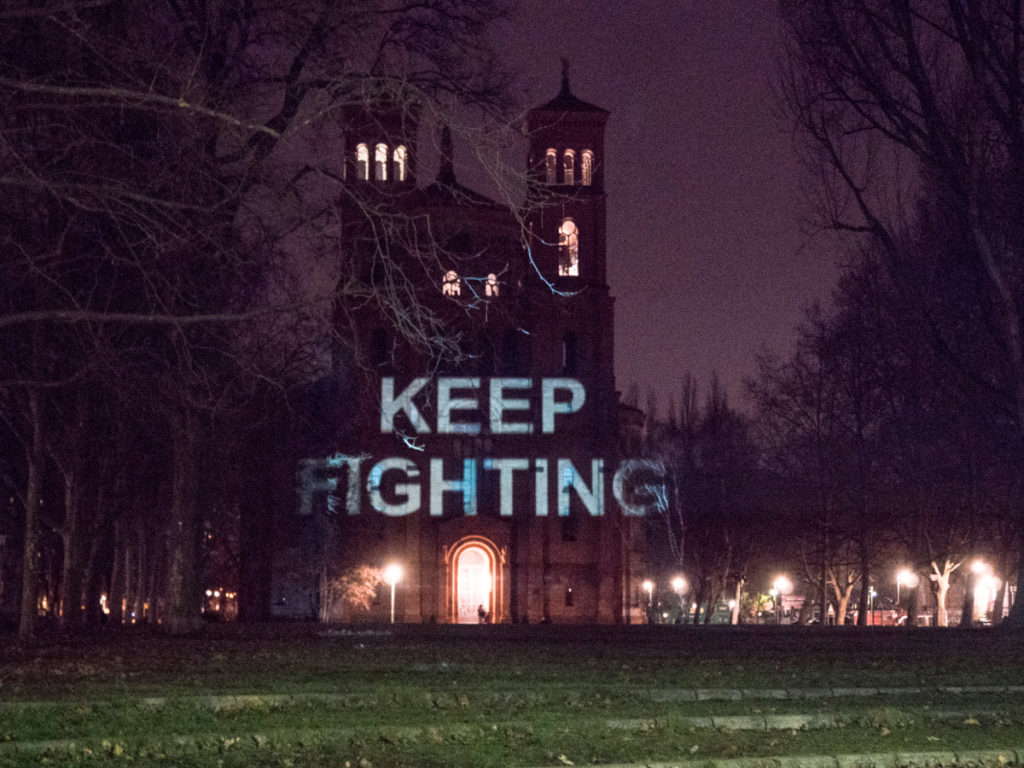
MG: What values are you trying to communicate through this way of working with others?
TB: We want to provide challenging debates within local and international communities, developing a context of critical reflection and analysis beyond what is usually communicated by mainstream media. The format of two-days events with a keynote and a panel each day encourages a very strong community sharing, which works on two levels: first, between the participants altogether, as they often know each other’s work, allowing them to meet for the first time in person and engage in actual discussions about their research; second, among the audience, that is usually formed by real experts working on the topics under analysis, as well as by people interested in getting a deep insight.
This unique combination of expertise creates a solid space for critical questions and discussions during the collective moments of sharing, as well as during breaks and dinners, which add to the Lab’s credibility to handle and discuss sensitive topics in a safe context.
Since each of our events requires a deep content research before the finalisation of the programme, it is extremely important to us to feel supported by organisations that we can trust and allow our research becoming concrete. The challenge of being independent while also looking for funding is very hard, and often some team members have to handle parallel jobs and sustainability struggles. Considering that we work with whistleblowers and people at risk, as it happened in the November 2017 event “TERROR FEEDS”, in which we needed to hire private security, having precarious finances is a severe challenge to the realisation of the project. This is the reason why we try to sensitise our network to sustainability issues in culture production.
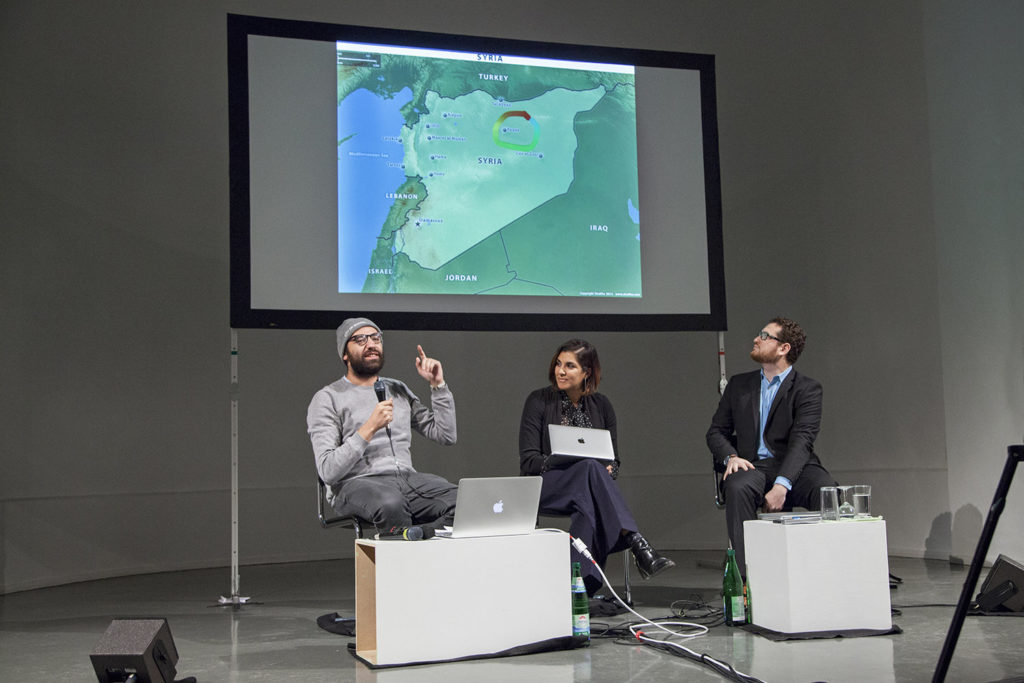
Since 2014 I have been working with wonderful and competent women in my team: Daniela Silvestrin, Kim Voss and Nada Bakr (Project Managers), Claudia Dorfmüller and Rahel Währer (Project Managers and Administration Officers), and with Jonas Frankki that has been shaping the visual identity of the conference programme since the start.
The Disruption Network Lab project was founded in 2014, and since 2016 it is a registered non-profit association in Germany (Disruption Network Lab e.V. – gemeinnütziger eingetragener Verein). The Disruption Network Lab e.V. produces the Disruption Network Lab programme.
The founding of the association was a solid step towards presenting and promoting the topic of digital culture in Berlin and internationally. We evolved from a single, private initiative, to an organisation devoted to digital culture and its applications on politics, technology, and society, locally and internationally. The grounding of the association was supported in 2016 by the Open Society Foundations (OSF) with a structural funding. For the organisation of the events, however, the association has been dependent on external private and (mostly) public funding. The first series of events in 2015 started thanks to the support of the Capital Cultural Funds of Berlin.
I want to be open on these details because they are really important for the way we shape our work. Often organisations in our field do not speak about the “making of”, but to be transparent it is part of our values. In our organisation we unfortunately do not benefit regularly of structural grants, and we have to search for grants event after event. During the production of our conferences, we have to undertake fundraising activities and this makes our lives very precarious.
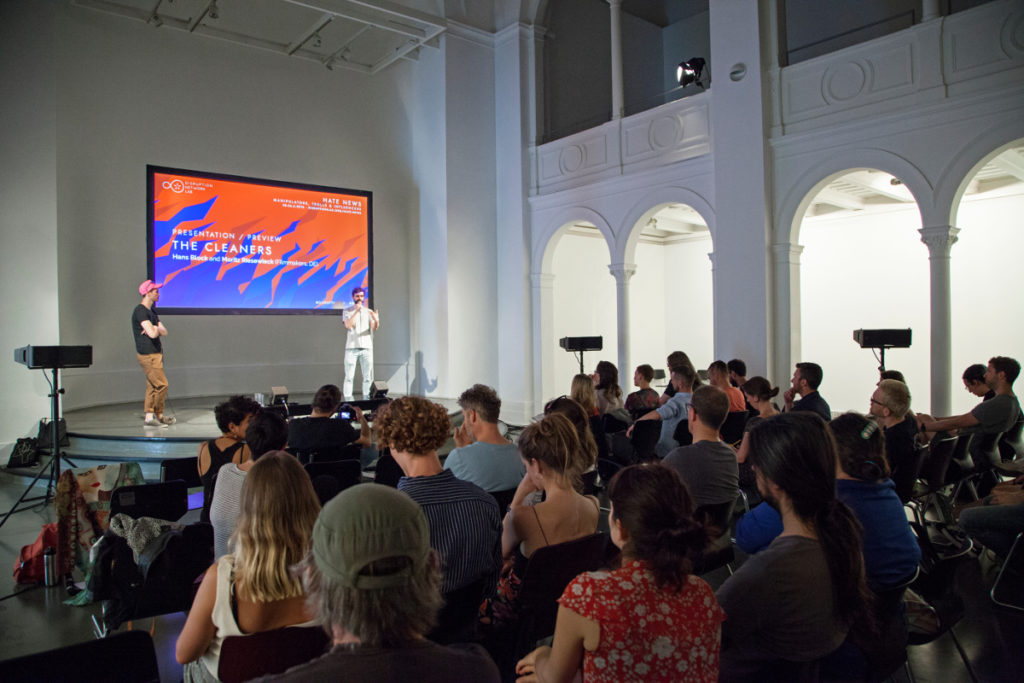
While in 2015, 2016 and 2018 we got funding support from the City of Berlin, this did not happen in 2017. This pushed us to look for international funds, which was a very complex task while being busy with production – thing that almost compromised the whole conference series. This search opened us toward international foundations that are working with human rights, social justice and investigative journalism, such as the Reva and David Logan Foundation, the Bertha Foundation and the Mozilla Advocacy Fund, which supported us in 2017 (and in the case of the Reva and David Logan Foundation, also afterward). This pushed me to research more extensively the field of investigative journalism, because I understood that there was a concrete need for such practices and approaches in the cultural production scenario, and at an international level.
MG: Could you give us an idea of what the composition of the audiences at the DNL conferences
TB: The audience of our conferences is formed by activists, artists, journalists, computer experts, cultural producers, human right and whistleblower advocates, students and researchers. Entrance ticket is very accessible, only 5 Euro per day. After the conference, we provide a video documentation of the events to reach a broader international audience (youtube.com/c/DisruptionNetworkLab).
We have been collecting a lots of video material in the past four years. At the moment I am researching possible grants to see if we will be able to support the activity of archiving such contents in a systematic way, providing additional references and creating useful infographic. This would be something really important to offer to our public in the future.
MG: I was fortunate enough to be asked to chair two different DNL conferences. The one which affected me most, was “DRONES: Eyes from a Distance” which took place in April 2015, at Kunstquartier Bethanien in Berlin. The keynote speaker Brandon Bryant, was whistleblower and former drone-operator. It all felt very intense. The space was full, and the audience were very inquisitive, they wanted to know more. The length of the panels and discussions are longer than usual panel discussions. Yet, strangely, they go very quickly.

Could you expand on how and why you choose this way of presenting a cultural forum as a platform?
TB: Since 2015 the Disruption Network Lab e.V. produced thirteen conference events (in Germany, UK and Austria). The conference “DRONES” with keynote Brandon Bryant was the first of the series. After that we kept investigating on related subjects, such as activist and resistance strategies after the Snowden-Leaks (“SAMIZDATA”: keynotes Laura Poitras and Jacob Appelbaum); whistleblowing (“TRUTH-TELLERS”: keynotes Grace North and Mustafa Al-Bassam; “PRISONERS OF DISSENT”: keynote John Kiriakou), the ISIS media propaganda (“TERROR FEEDS”: keynotes Charlie Winter, Sue Turton, and Abdalaziz Alhamza): hate speech and political misinformation (“HATE NEWS”: keynotes Nanjala Nyabola and Andrea Noel).
Currently we are working on developing a new conference on the subjects of populism, right-wing extremism, and alt-right, and the effects of such phenomena in art, media, politics and society, under the title of INFILTRATION: Challenging Supremacism (September 7-9 in Berlin at Kunstquartier Bethanien).
Each conference requires a previous research, and an analysis of the topics that are important at the moment. This allows us to be exactly on time for the investigation of current phenomena. It was the case of the last conference, HATE NEWS, which was the result of a funding application done in December 2017, but since the production started later in 2018, I could focus on the “hot news” of the Cambridge Analytica debate, and be really fortunate to have with us David Carroll and Nanjala Nyabola.
Sometimes the topics are also the result of a common sharing within my own community (which actually crosses many communities). It was the case for the first conference event “DRONES” in April 2015. During some months I was sharing ideas with my friends and colleagues Chantal Meloni (criminal lawyer at the ECCHR in Berlin) and Laura Lucchini (freelance journalist) about the topic of the consequences both on military networks and civil society of an increasing automatism of conflicts. Chantal Meloni suggested me to contact former drone operator Brandon Bryant, that at the moment was not well-known as today – she saw him speaking at the ECCHR during an event related to human rights and the drone war. I reached out to him and we decided together how to shape his Keynote – you saw the results. Brandon Bryant was really important for the start of the Disruption Network Lab, his gesture of coming to us was really brave, generous and impactful. In a sense, it was the beginning that shaped the future of our activity.
MG: What responses have you received from your audiences in respect of this way of presenting and the content being explored?
TB: Our audience is usually really committed. I am always impressed when after four hours of discussions, at the Q&A in the late evening, I see people asking very deep, incredibly detailed and specific questions. I have to say that this has been my deep surprise in Berlin since I moved here 15 years ago, to experience that people are so committed, critical and well-informed during events. But of course at the Disruption Network Lab the feedback it brings a more intense value, because I have the feeling that people are enjoying the unexpected connections that I put together after hard work. And the most fulfilling result is when they got them!
However, it is not always easy to keep the public interested in such deep topics, especially because in Berlin the competition with openings, clubs, and parties during the weekend is tough. In the past 4 years we have been shaping our community of passionate people that are regularly coming and following us, even from abroad. The challenge for me now it is to open up more, and to reach new people that are constantly flowing in the city. The support of our close community is important also for this scope, we need to support each other to keep doing what we do.
MG: Since starting DNL what highlights do you remember that have made you feel you are part of something special?
TB: The work before each conference is hard, we are only five people, and in the past we were just three. So at a production level, there is a lots of work which implies fundraising, press and communication, the whole organisation of the logistic and speakers presence. Plus of course, the curatorial work and the research beforhead. We often arrive to the conference very excited but also really tired. However, every time, it is thanks to the speakers and the audience that we get our energy back. In the past conferences we had really unique and wonderful speakers that shared with us their stories, many of them really difficult, heartbreaking and a real challenge to be communicated. This was the case of (among others) Brandon Bryant, Cian Westmoreland, John Kiriakou, Laura Poitras, Jake Appelbaum, Annie Machon, Andrea Noel, Grace North, Mustafa Al-Bassam, Abdalaziz Alhamza, and the constant very important presence of the Chelsea Manning Initiative before Chelsea Manning was released.
I felt that all these people were trusting us and our public by sharing their stories with us. Each conference has been offering an important context at a human level, a moment of reflection, revelation, and also the sensation to belong to a community. With some people I am still in contact, other entered in contact with each other and are still working together on other projects. This is for me the most important result, to see that the Disruption Network Lab is useful not only to inform, but also to make people feel part of something in common.

When the speakers are with us and open their minds to our topics, I feel that we are receiving a gift from them. I come from a tradition in which communities, networks and the sharing of experience were the most important values, the artwork by themselves. By combining all these expertise, I feel the responsibility of creating each time the context for a collective artwork, And this is something special, especially nowadays in which the discourse of networking has been completely commercialised. I feel to thank all these people, not only the ones that worked with me and supported us, but also all the people that shared their experiences and the ones that came to listen to them. I am sure that this path will go on, either with us, or among the people that found themselves related thanks to our conferences.
Tatiana Bazzichelli (1974, Rome) is artistic director and curator of the Disruption Network Lab, a program of conference events at Kunstquartier Bethanien in Berlin. She is currently visiting lecturer at the Fachhochschule Potsdam at the Department of Applied Culture. She has been based in Berlin since 2003. Bazzichelli received a Ph.D. in Information and Media Studies (2011) at Aarhus University in Denmark. In 2012–2014 she was postdoctoral researcher at the Centre for Digital Cultures, Leuphana University of Lüneburg. She founded the networking project Activism-Hacking-Artivism in Rome in 2001 and managed the aha@ecn.org mailing list on art activism. She was program curator at transmediale festival, where she developed the year-round initiative reSource transmedial culture berlin and curated several conference events, workshops and installations (2011–2014). Bazzichelli wrote the books Networking (2006), Networked Disruption (2013), and co-edited Disrupting Business (2013). She curated exhibitions such as Hack.it.art (2005), HACK.Fem.EAST (2008), Networked Disruption (2015), and SAMIZDATA (2015).
The next Disruption Network Lab conference event is INFILTRATION: Challenging Supremacism, as part of the 2018 thematic series “Misinformation Ecosystems”, scheduled on September 7-8, 2018, at Kunstquartier Bethanien in Berlin.
The conference wants to reflect on the practice of political, investigative and activist infiltration as a form of betterunderstanding aims, lifestyles and methods of right-wing extremist groups. What is the reason for people to join extremist groups? How can we analyse their dynamics from the inside? What are the reasons of fascination among young generations of right-wing propaganda and supremacist outrage?
Among the confirmed speakers are Daryl Davis (Musician & Author, USA) famous for being a black American befriending members of the KKK since the 1990s and making possible to convert around 200 of them (the film “Accidental Courtesy:Daryl Davis, Race & America” will be screened at the DNL event on September 9). Other participants are Patrik Hermansson (Anti-racist Activist, “Hope Not Hate” Researcher, SE/UK), Julia Ebner (Terrorism and Extremism Researcher and Author, DE/UK), Stewart Home (Artist and Author, UK), Florian Cramer (Research Professor in New Media at Hogeschool Rotterdam, DE/NL), Janez Jansa (artist, SI), and others. Stay tuned at: disruptionlab.org/newsletter/
Main Image: Brandon Bryant, Former US-Drone Operator speaks at Disruption Network Lab, DRONES, April 17 2015, Berlin. Photo by Nadine Nelken.
Tatiana Bazzichelli is the artistic director and founder of the Disruption Network Lab. Former programme curator at transmediale festival in Berlin from 2011 to 2014, she developed the year-round ‘reSource transmedial culture berlin’ project and curated several conference events. She was visiting lecturer at the Fachhochschule Potsdam at the
Department of Applied Culture in 2016 and 2017, where she taught classes about art, hacktivism and whistleblowing. You can read more about her here.
INFILTRATION: Challenging Supremacism
September 7-8 · Studio 1
Kunstquartier Bethanien · Mariannenplatz 2 · Berlin
Partner Event @ Spektrum · September 9
More info: disruptionlab.org/infiltration
Way back in 1995, the artist collective Critical Art Ensemble (CAE), said “What your data body says about you is more real than what you say about yourself. The data body is the body by which you are judged in society, and the body which dictates your status in the world.” These words now haunt us, and take their place alongside numerous other ignored warnings about global threats to the wellbeing of our societies and the planet.
In this interview with curator Dani Admiss, we discuss how the data-driven gamification of life and everything has shaped the development of Playbour – Work, Pleasure, Survival at Furtherfield and why the Gallery is currently being transformed into a psychological environment.
Gallery visitors are presented with a series of game-like installations, which are the result of the shared and collective cognitive labour of artists, curators and gallery staff. First the artists, and then the public (as players) are invited to test the processes and experiences offered by new mechanisms of play and labour. Each ‘game’ simulates an experience of how some techniques and technologies of gamification, automation, and surveillance, are at work in our everyday lives, in order to capture all forms of existence.
Marc Garrett: Before the exhibition, you initiated an open call for a Lab. You invited participants to join a three-day art and research lab at Furtherfield Commons, Finsbury Park, London. Could you elaborate why you did this and how it informed the exhibition?
Dani Admiss: A couple of months before the exhibition, I ran a 3 day co-research lab that brought together artists, designers, activists, and researchers. I like to refer to it as a performative, temporary exhibition in the form of a lab. There were discussions, performances, interventions, games, and exercises. We had discussion with Jamie Woodcock on gaming and digital labour, he walked us through an interview session with gamers on the Twitch platform. Steven Levon Ounanian held a performative experiment where we thought about how we might render the suffering online in the real world, Itai Palti worked with us to think about design principles and neuroscience. FUN! The idea was that we would collectively explore, discuss and define key issues that we thought were important to then take forward to develop into games and experiences to share with the public. The aim was to play off each other in a live context to generate new perspectives and ideas.
Building on this, I decided to hold an open call for participants. In my most idealistic moment, I’d say I wanted to try and find ways to expand who gets to produce, stage and display, how we define what these issues actually are for wider audiences. Can this lead to new stories about art, tech, society? Like any project it is never exactly as you imagined it, but I think the majority of people got a lot out of working like this. I did. Working with people that aren’t always the people you expect to be attached to a project always throws up unexpected experiences. Everyone brought their best themselves with them. Open. Interested. Warm. Prepared. Ready to listen, and for fun!
I’d make the lab longer next time, so it wasn’t as intense, and I’d try to have more people join the open call.
MG: The open-curation process you have developed is core to the realisation of the Playbour lab and exhibition. It resonates strongly with Furtherfield’s DIWO ethos. It turns on its head, the traditional approach to curating thematic group shows. Please can you tell us about the process and say why this new approach is important at this time?
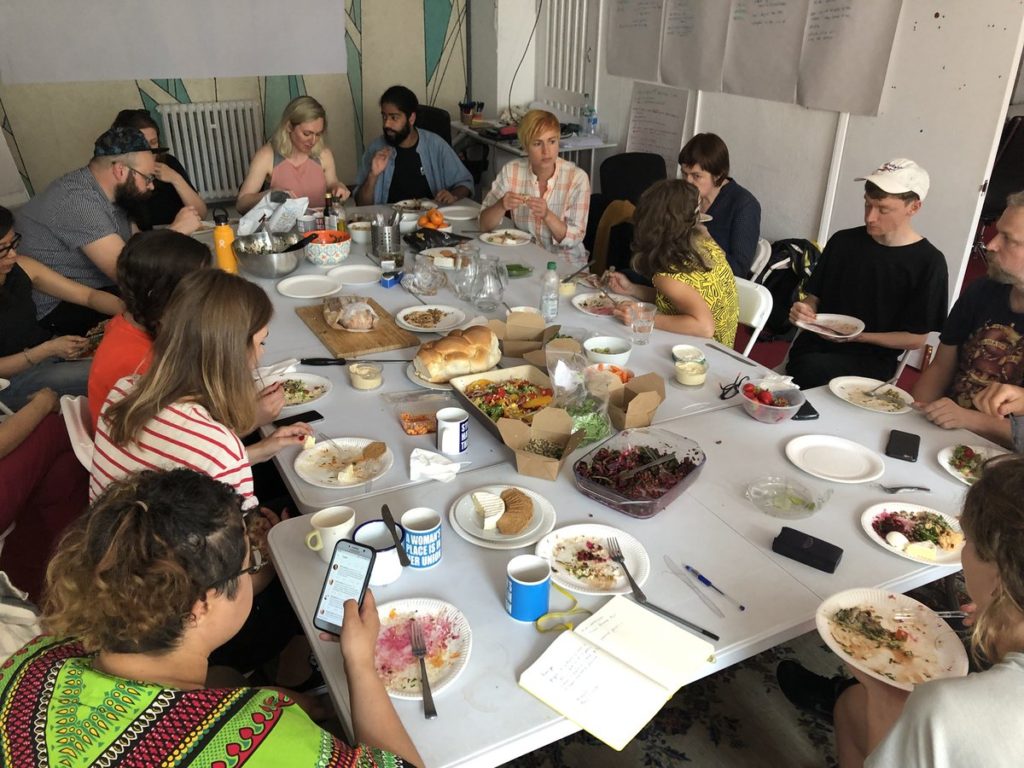
DA: DIWO definitely informed Playbour! I think the spirit of co-creative discovery is a powerful tool that curators should use more. I refer to it as co-research, which is ultimately a way to research-with others. What separates it from more traditional approaches to curating is the unclear distinction between author/researcher and subject/participant. The aim is to achieve closer equality between the participant and subject area, in the form of valuing a person’s idea’s and lived-experience as much as other ‘expert’ forms of knowledge. Historically, it has roots in a highly specific context of the radical Left in post-war Italy with Operaismo. This is where the seeds of debate on post-immaterial labour emerged, arising from Hardt, Negri, Bifo, Terranova, etc, and why I originally was interested in working in this way because of the subject matter of the project, however, it became something so much more.
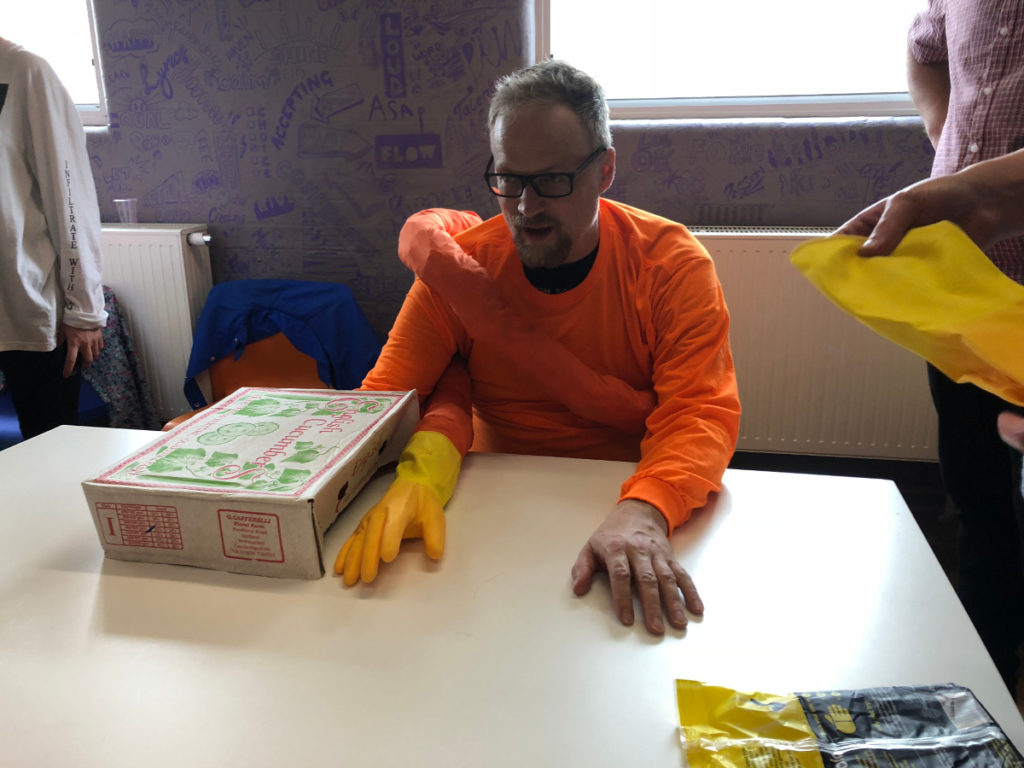
For me, as a curator, creating projects about complex subject areas that bring together embodied and embedded social relations with technical worlds, is something that needs to be done with people rather than to them. I think the most interesting works of art being produced today are treated less like things and instead draw into the very making of the ways in which we get to know what we know. You can see this in works from Cassie Thornton’s project Collective Psychic Architecture (an exploration of “bad support” in Sick Times) 2018, where she extends the responsibilities of the gallery or institution through performative means, or in the high-profile modeling and mapping practices coming out of the Forensic Architecture network. How can curating exist in a wider space than before? I’m trying to work in much more extended and expanded ways with the primary intention to include more end users into the areas we are looking at.
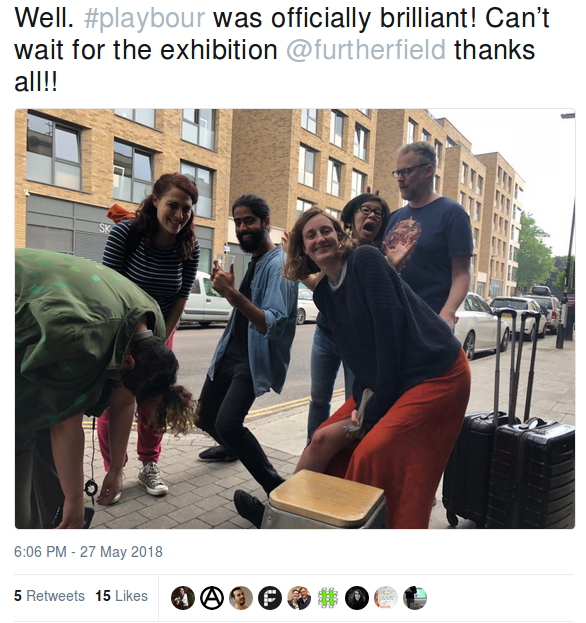
Adopting a co-research model (in the lab, in the show, in the publication, in the micro-commissions) meant that the aim of the exhibition shifts, it becomes less about what the topic is and how it works and more about how it came to be. Brian Holmes once wrote that making an image remakes the world. Yes, but it also distances us from it. Playbour asks people to consider how the world organises us by facilitating moments where people can identify with particular phenomena. I feel this is more fitting and has more potential to create moments of personal learning and change than trying to represent it through curatorial practice. Why do we need this in an age of information? My thinking is that knowledge-projects are not simply objective processes but deeply subjective ones that are enacted through and with others. Finding ways for people to identify in more meaningful ways with the subject will hopefully lead to greater chance that people will gain greater perspective and agency over their own worlds.
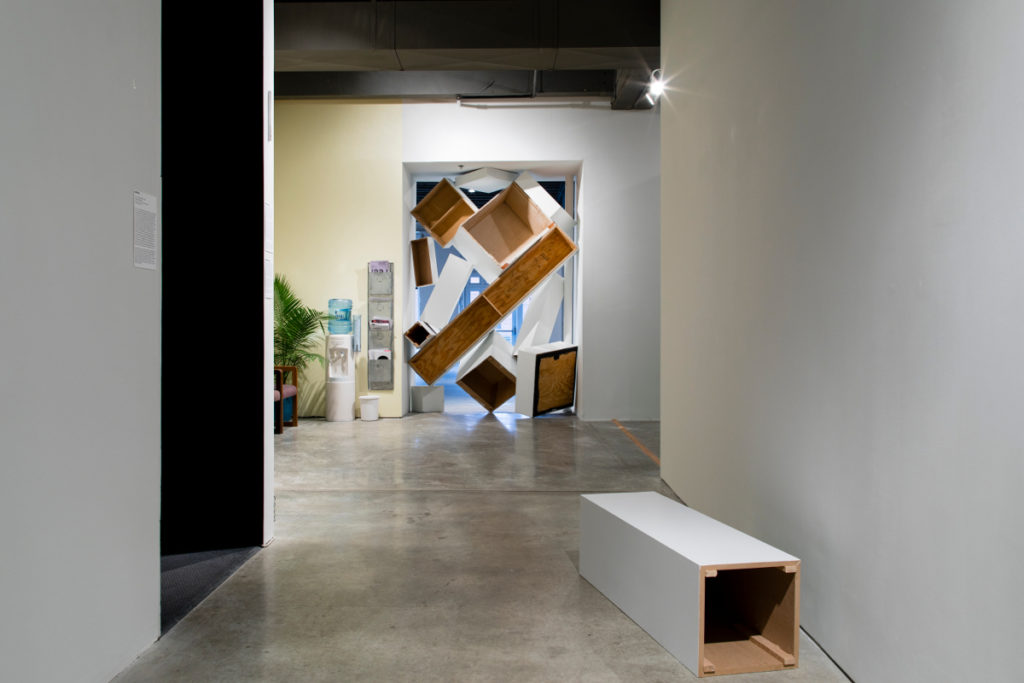
MG: The term Playbour brings attention to critiques of gamification and to the extraction of value via social media platforms. But your subtitle then opens up a whole other world of reflection. What are you discovering about the relationship between “work, pleasure and survival”?
DA: The project is exploring the role of the worker in the age of data technologies, but this looks less at the “future of work” and chooses instead to focus on the shifting roles and blurred boundaries of work, play and well-being – how do we place value on these areas, how do we work with and against them?
Quite often when we talk about opaque terms like immaterial labour and cognitive capitalism we fail to grasp the production processes of these phenomena. Immaterial labour depends on the self and our social relations. We are asked to ‘post’, ‘share’, ‘network’, ‘emote’, ‘communicate’, ‘know’. Not so much ‘understand’. These acts inform the control and creation of our subjectivity. At the same time, very little discussion is happening about the fact that so much exploitation -physical, ecological, economical- sits behind the new commons we are all talking about.
Opening the project out to think about work, pleasure, survival, is a provocation. On one level, it is a nod to the fact that this conversation is for a privileged few. Many choose what they do and this ‘choice’ is supposed to operate as an expression of one’s personality. On the other, it’s human nature to get swept up in what is considered the norm, so it’s also a challenge to think about what are your own limits, returning to the idea of inviting people to find moments of identification with these broader issues to their own lived experience.
MG: Why is it important that the work being prepared for Furtherfield gallery is conceived of more, as a series of game experiences, than a display of discrete art objects, or a didactic exhibition on the topic of Play and Labour? Has the gallery’s location in a public park influenced your thinking at all?
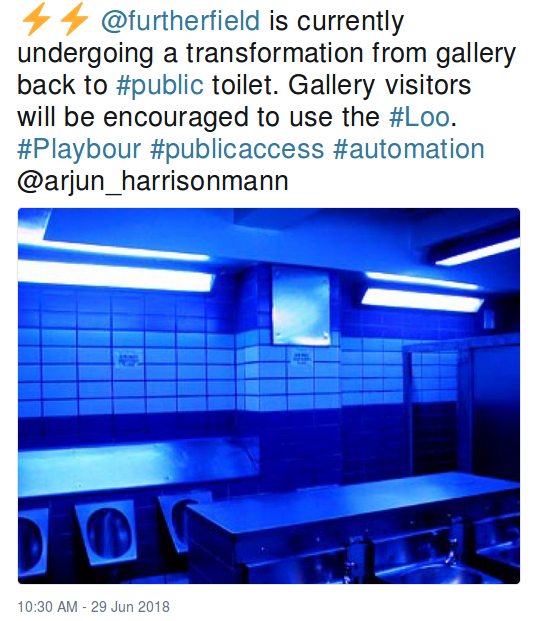
DA: Well, first off, it has been a collective process and so I wanted to show that process to people. Secondly, you have to invest part of yourself in play. The more I research the areas of digital and immaterial labour the more I’m keen to work with others to understand the not yet completed transformations of body, society, and world, into a global capitalist system. These are suffuse and pervasive and nudge our behaviours all of the time. Organising the exhibition as experiences is a way for us all to live-out (at least temporarily and in a safe, playful space) the tentacular effects of immaterial labour and economies of knowledge and information. This is not to say let’s walk away from a highly networked society, it’s an invitation back into perspectival agency.
MG: You’ve chosen to put together three themes for the exhibition, ranging across work, pleasure, and survival. Why was it important to choose these three themes in particular?
DA: I’m fascinated by how we are involved in the making of worlds we are then conditioned by. From the learnings in the lab, my own research and collaborations leading up to Playbour, I think gamification, automation, and surveillance are three key areas that scaffold a lot of the debate on digital and immaterial labour.
1) SURVEILLANCE. How we are measured and how we measure ourselves? Traditionally, government control used to come from top-down surveillance techniques, such as the type Michael Straeubig’s Hostile Environment Facility Training (HEFT) is looking at. However, I think we should be talking about how forms of control are exercised through our own self-monitoring processes – self-improvement culture is a perfect example of this. Cassie Thornton’s Feminist Economics Yoga (FEY), is a wonderful remedy for this.
2) AUTOMATION. How technology is removing decision-making from us in the pursuit of a frictionless universe. In Harrison-Mann’s Public Toilet he is talking about how automation is used to address the need of social issues. The starting point is the lack of public services offered in Finsbury Park and how that is altering how we use and experience the public space of the park. He is interested in making a connection between this and how metrics can often end up being exercised in controversial and even arbitrary ways inhibiting people getting what they need, such as disability benefits in the UK.
3) GAMIFICATION. How are rewards and competition embedded into our online interactions and interfaces? Jamie Woodcock has this excellent term that describes gamification-from-above and gamification-from-below. Like the Situationist socialism-from-below. How we might use gamification for our own positive manipulations, diversions and distractions? I think a lot of media and new media practice has long been engaged in gamification-from-below. Marija Bozinovska Jones’ piece Treebour (201) plays on this, transferring manipulation of social relations levelled at online interactions to the “natural” networking of trees.
MG: After visitors have experienced the exhibition, what emotions, thoughts and understandings, would you like them to leave with?
I think you introduced the show in an interesting way in your opening text with the notion of the data body and the extension of our bodies into new spaces with unknown consequences. These happen inside the screen, at the edges of the world, in transit, at the end of the supply chains. At the same time, they also operate on semi-conscious refrains, in our behaviours, actions, thoughts and emotions about the world. Taking part, thinking-with, making-with, are strategies to find ways to open up discussions about how we are all involved in making and unmaking our worlds via different actions. Something like digital and immaterial labour is not a discrete issue reservable for experts who work in this area, the connections and consequences weave in and out of our lives and impact us all. We are constantly reacting to thing around us, taking in these cues and pushing them back out into the world.
In terms of emotions, I don’t want to spread fear and despair, I’m hoping that some visitors will identify with some of the ideas in the show and relate them to something in their life that perhaps they’d not thought of in that way before.
Notes: Main top image by Marija Bozinovska Jones, Treebour 2018.
DIWO – Do It With Others: Resource
archive.furtherfield.org/projects/diwo-do-it-others-resource
Since the financial crash 10 years ago, we’ve learned that it tends to be everyday people, on the ground, who pick up the pieces and not governments. Millions have been dragged into poverty while those who caused the “crisis”, after creating dangerously high levels of private debt, remain unscathed. [1] The UK Conservative government’s response was an Austerity policy, driven by a political desire to reduce the size of the welfare state. Amadeo Kimberly says, “austerity measures tend to worsen debt […] because they reduce economic growth.”[2] The effect has been devastating, creating all together, more homelessness, precarious working conditions and thus pushing working communities, deeper into debt. In the UK, the NHS is being privatized as we speak. According to a CNBC report, medical bills were the biggest cause of bankruptcies in the U.S in 2013, with 2 million people adversely affected. [3]
The work of artist and activist, Cassie Thornton is included in the upcoming Playbour– Work, Pleasure, Survival exhibition at Furtherfield, curated by Dani Admiss. In this interview I wanted to explore the following questions as revealed in her current Hologram project:
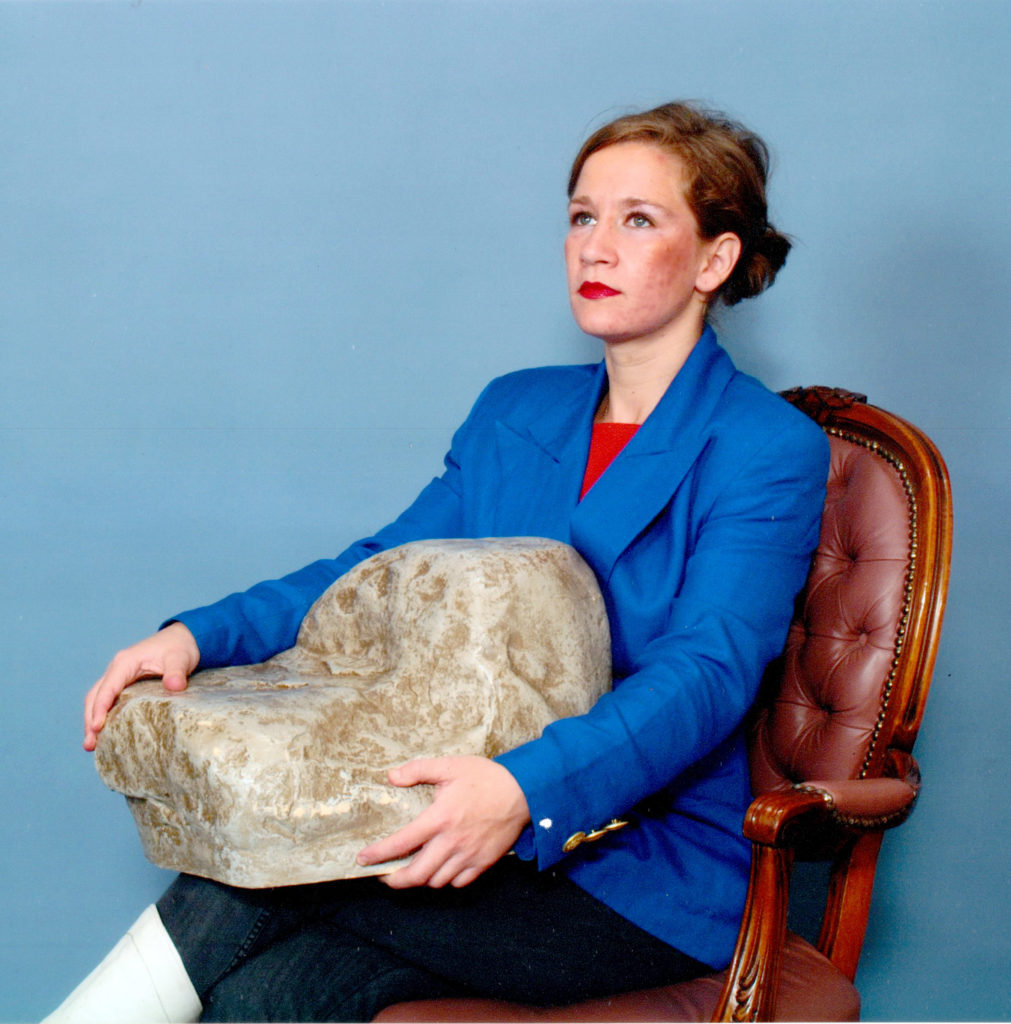
Cassie Thornton is an artist and activist from the U.S., currently living in Canada. Thornton is currently the co-director of the Reimagining Value Action Lab in Thunder Bay, an art and social center at Lakehead University in Ontario, Canada.
Thornton describes herself as feminist economist. Drawing on social science research methods develops alternative social technologies and infrastructures that might produce health and life in a future society without reproducing oppression — like those of our current money, police, or prison systems.
Marc Garrett: Since before the 2008 financial collapse, you have focused on researching and revealing the complex nature of debt through socially engaged art. Your recent work examines health in the age of financialization and works to reveal the connection between the body and capitalism. It turns towards institutions once again to ask how they produce or take away from the health of the artists and workers they “support”. This important turn towards health in your work has birthed a series of experiments that actively counter the effects of indebtedness through somatic work, including the Hologram project.
The social consequences of indebtedness, include the formatting of one’s relationship to society as a series of strategies to (competitively) survive economically, alone, to pay the obligations that you has been forced into. It takes so much work to survive and pay that we don’t have time to see that no one is thriving. Those whom most feel the harsh realities of the continual onslaught of extreme capitalism, tend to feel guilty, and/or like a failure. One of your current art ventures is the Hologram, a feminist social health-care project, in which you ask individuals to join and provide accountability, attention, and solidarity as a source of long term care.
Could you elaborate on the context of the project is, as well as the practices, and techniques, you’ve developed?
CT: Many studies show that the experience of debt contributes to higher levels of anxiety, depression, and suicide. Debt disables us from getting the care we need and leads us away from recognizing ourselves as part of a cooperative species: it is clear that debt makes us sick. In my work for the past decade, I have been developing practices that attempt to collectively discover what debt is and how it affects the imagination of all of us: the wealthy, the poor, the indebted, financial workers, babies, and anyone in-between. Under the banner of “art” I have developed rogue anthropological techniques like debt visualization or auxiliary credit reporting to see how others ‘see’ debt as an object or a space, and how they have been forced to feel like failures in an economy that makes it hard for anyone (especially racialized, indigenous, disabled, gender non-binary, or ‘immigrant’) to secure the basic needs (housing, healthcare, food and education) they need to survive, because it is made to enrich the already wealthy and privileged.
“The rise of mental health problems such as depression cannot be understood in narrowly medical terms, but needs to be understood in its political economic context. An economy driven by debt (and prone to problem debt at the level of households) will have a predisposition towards rising rates of depression.”[4]
After years of watching the pain and denial around debt grow for individuals and entire societies, I was so excited to fall into a ‘social practice project’ that has the capacity to discuss and heal some of this capital-induced sickness through mending broken trust and finding lost solidarity. This project is called the hologram.
MG: What kind of people were involved?
CT: The entire time I lived in the Bay Area I was precarious and indebted. I only survived, and thrived, because of the networks of solidarity and mutual aid I participated in. As the city gentrified beyond the imagination, I was forced to leave. I didn’t want to let those networks die. So, at first, the people who were involved were like me– people really trying to have a stake in a place that didn’t know how to value people over real estate and capital
The hologram project developed when, as I was leaving the city, I had invited a group of precariously employed, transient activists and artists to get together in the Bay Area for a week of working together. We aimed to figure out ways to share responsibility for our mutual economic and social needs. This project was called the “Intentional Community in Exile (ICE)” [the ICE pun was always there, now an ever more intense reference in the public eye] and it grew out of an opportunity offered by Heavy Breathing to choreograph an event at The Berkeley Art Museum. They allowed me to go above and beyond my budget to invite a group of 8 women together from across the US to choreograph methods of mutual aid: sharing resources, discussing common problems and developing methods for cooperating to co-develop an economic and social infrastructure that would allow us to thrive together, interdependently. What would it mean for our work as activists and artists to feel that we had roots within an intentional community, even if we didn’t have the experience of property that makes most people feel at home?


Facebook event: “In departing from the idea of a long term home, family, property, or ownership, ICE models a mutual aid society to sustain creative and political practices within a hostile economic system. This project is about finding ways to exit economic precarity by building human relationships instead of accumulating capital– or to make exile warm. After a one week convergence of a small group of collaborators, ICE presents a discussion and performance of life practices as well as frameworks for material and immaterial mutual support.”
The Hologram was one of many ideas that developed as part of this project. One of the group members, Tara Spalty, founder of Slowpoke Acupuncture, (and one of the two acupuncturists you will see at SF protests or homeless encampments) and I fell into this idea when combining our knowledge about the solidarity clinics in Greece, our growing indebtedness and lack of medical records, and the community acupuncture movement. Then the group brainstormed about what the process would be like to produce a viral network of peer support.
MG: What inspired you to do this project? (particularly interested in the Greek influences here and what this means to you)
CT: My practice of looking at debt became boring to me by 2015 as it became more and more clear that individual financial debt was a signal of a larger problem that was not being addressed. The hyper individualism produced by indebtedness allows us to look away from a much bigger deeper story of our collective debts, financial and otherwise. We don’t know what to do with these much bigger debts, which include sovereign debts, municipal debts, debts to our ancestors and grandchildren, debts to the planet, debts to those wronged by colonialism and racism and more. We find it so much easier to ignore them.
When visiting austerity-wracked Greece after living in Oakland, I noticed that Oakland appeared to have far more homeless people on the street. It made me realize that, while we label some places “in crisis,” the same crisis exists elsewhere, ultimately created and manipulated by the same financial oligarchs. The hedge funds that profit off of the bankruptcy in Puerto Rico are flipping houses in Oakland and profiting off of the debt of Greece. We’re all a part of the same global economic systems. The “crisis” in Greece is also the crisis Oakland and the crisis in London. For this reason, I have been interested in what we can all learn from activists, organizers and others in crisis zones, who see the conditions without illusions.
This led me to an interest in the the Greek Solidarity Clinic movement, which since “the crisis” there has mobilized nurses, doctors, dentists, other health professionals and the public at large to offer autonomous access to basic health care. I went to go visit some of these clinics with Tori Abernathy, radical health researcher. Another project using this social technology is called the Accountability Model, by the anonymous collective Power Makes Us Sick. These solidarity clinics are run by participant assembly and are very much tied in to radical struggles against austerity. But they have also been a platform for rethinking what health and care might mean, and how they fit together. The most inspiring example for me was in at a solidarity clinic in Thessaloniki, the second largest city in Greece. The “Group for a Different Medicine” emerged with the idea that they didn’t want to just give away free medicine, but to rethink the way that medicine happens beyond conventional models, including specifically things like gender dynamics, unfair treatment based on race and nationality and patient-doctor hierarchies. This group opened a workers’ clinic inside of an occupied factory called vio.me as place offer an experimental “healed” version of free medicine.
When new patients came to the clinic for their initial visit they would meet for 90 minutes with a team: a medical doctor, a psychotherapist and a social worker. They’d ask questions like: Who is your mother? What do you eat? Where do you work? Can you afford your rent? Where are the financial hardships in your family?
The team would get a very broad and complex picture of this person, and building on the initial interview they’d work with that person to make a one-year plan for how they could be supported to access and take care of the things they need to be healthy. I imagine a conversation: “Your job is making you really anxious. What can we do to help you with that? You need surgery. We’ll sneak you in. You are lonely. Would you like to be in a social movement?” It was about making a plan that was truly holistic and based around the relationship between health, community and struggles to transform society and the economy from the bottom-up . And when I heard about it, I was like: obviously!
So the Hologram project is an attempt by me and my collaborators in the US and abroad to take inspiration from this model and create a kind of viral network of non-experts who organize into these trio/triage teams to help care for one another in a complex way. The name comes from a conversation I had with Frosso, one of the members of the Group for a Different Medicine, who explained that they wanted to move away from seeing a person as just a “patient”, a body or a number and instead see them as a complex, three dimensional social being, to create a kind of hologram of them.
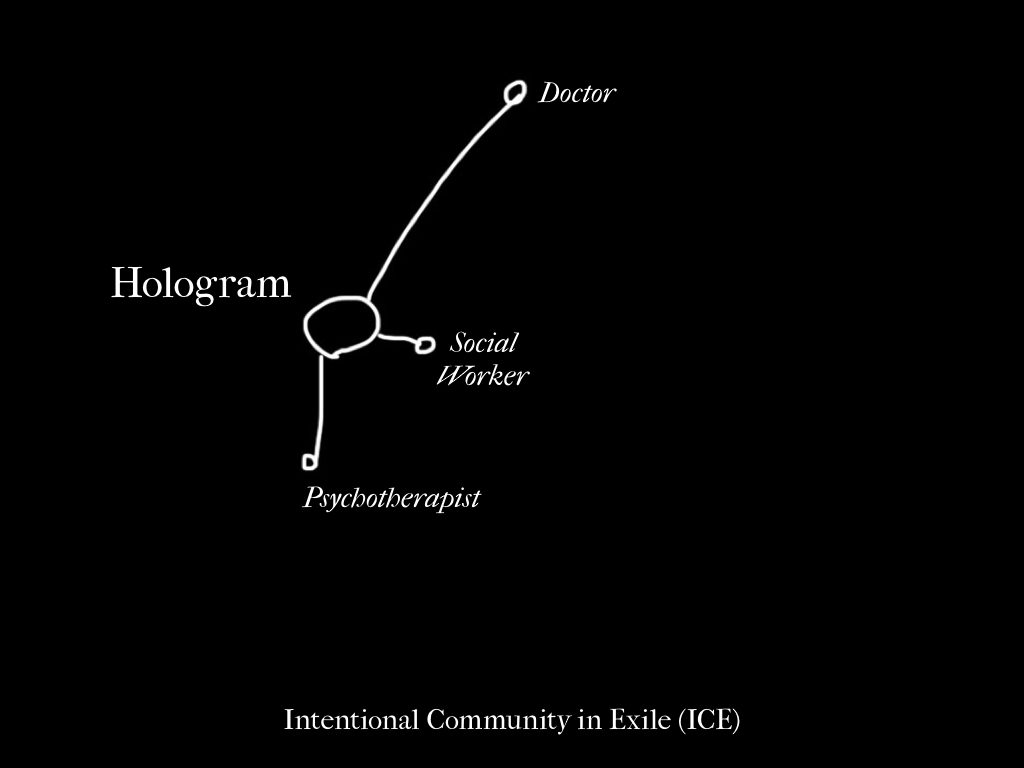
MG: Could you explain how the viral holographic care system works?
CT: Based on the shape above, we can see that we have three people attending to one person, and each person represents a different quality of concern. In this new model, these three people are not experts or authorities, but people willing to lend attention and to do co-research, to be a scribe, or a living record for the person in the center, the Hologram. We call these three attendees ‘patience’. Our aim is to translate the Workers’ Clinic project to a peer to peer project where the Hologram receives attention, curiosity and long term commitment from the patience looking after her, who are not professionals. Another project using this social technology is called the Accountability Model, by the anonymous collective Power Makes Us Sick.
So the beginning of the process, like that of the Workers’ Clinic, is to perform an initial intake where the three patience ask the Hologram questions which are provided in an online form, about the basic things that help or hurt her social, physical and emotional/mental health. When this (rather extended) process is complete, the Hologram will meet as a group every season to do a general check in. The goal of this process is to build a social and a physical holistic health record, as well as to continue to grow the patience understanding of the Hologram’s integrated patterns.
Ultimately, over time we hope to build trust and a sense of interdependence, so that if the Hologram meets a situation where she has to make a big health decision (health always in an expansive sense) about a medical procedure, a job, a move, she will have three people who can support her to see her lived patterns, to help her ask the right questions, and to support peer research so that the Hologram is not making big decisions unsupported.
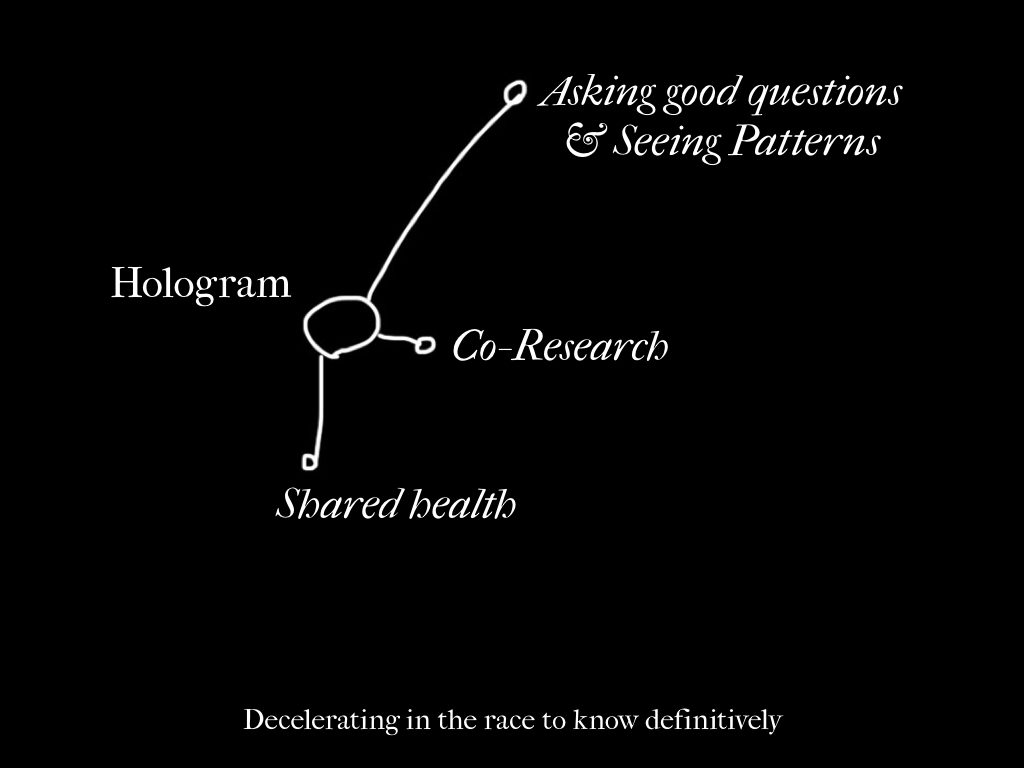
But, in order for the Hologram to receive this care without charge and guilt free, she needs to know that her patience are taken care of as she is. I think this is one part of the project that acknowledges and makes a practice built from the work of feminists and social reproductive theorists – you can’t build something new using the labor of people without acknowledging the work of keeping those people alive; reproducing the energy and care we need to overturn capitalism needs a lot of support. Getting support from someone feels so different if you know they are being, well taken care of. This is also how we begin to unbuild the hierarchical and authoritarian structures we have become accustomed to – with empty hands and empty pockets.
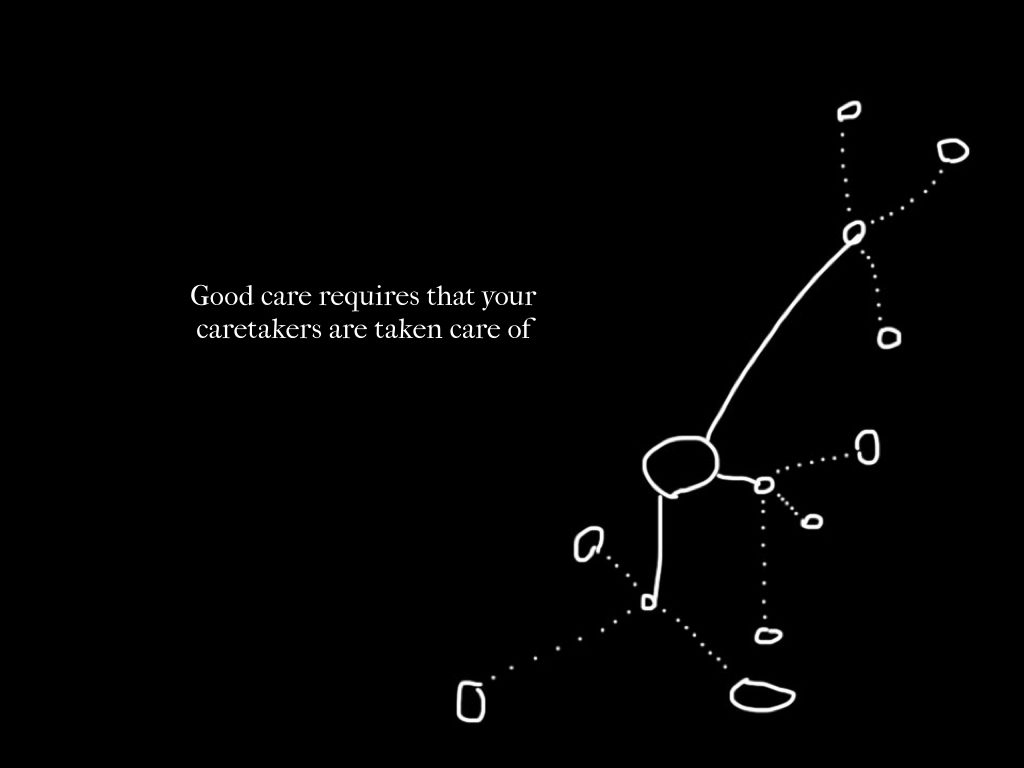
And then, the last important structural aspect of the Hologram project is the real kicker, and touches on the mystery of what it means to be human outside of Clientelist Capitalism – that the real ‘healing’ (if we even want to say it!) comes when the person who is at the center of care, turns outward to care for someone else. This, the secret sauce, the goal and the desired byproduct of every holographic meeting– to allow people to feel that they are not broken, and that their healing is bound up in the health and liberation of others.
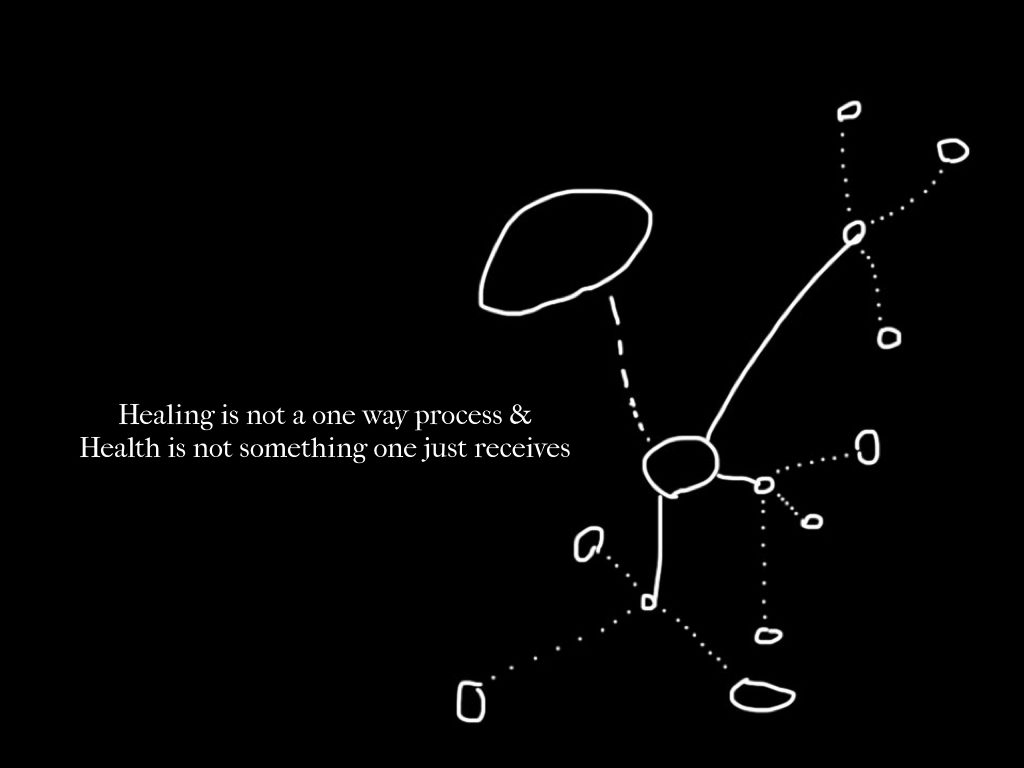
The viral structure, is built into this system and there is a reversal of the standard way of seeing the doctor and patient relationship. In this structure it is essential that we see the work of the Hologram as the work of a teacher or explicator, delivering a case that will ultimately allow the patience to learn things they didn’t previously know. This is the most important, (though totally devalued by money) potent and immediately applicable, form of learning we can do, and it is what the medical system has made into a commodity, at the same time as it is seen as ‘women’s work’ or completely useless.
MG: Could you take us through the processes of engagement. For instance, you say a group of four people meet and select one person who will become a Hologram, and that this means they and their health will become ‘dimensional’ to the group. Could you elaborate how this happens and why it’s important for those involved?
CT: We are about to experiment, this fall, with what it means for these groups to form in different ways. We will start with four test cases, where an invited, self-selected person will become a Hologram. She will be supported to select three Patience in a way that suits her, based on an interview and survey. The selection of Patience is a part of the process that we have not had a chance to refine. It is not simple for any individual to understand what support looks like for them, or who they want support from, if they’ve never really had it.
The experiments we will work through this fall will attempt to understand what changes in the experience of the whole Hologram when the Hologram is supported by Patience who are trusted friends and family, acquaintances or highly recommended strangers. An ‘objective’ perspective from an outside participant also adds a layer of formality to the project, because, instead of a casual gathering of friends, an unfamiliar person signals to the other members of the hologram to be on time, and make the meetings more structured than a regular friend to friend chat.
The onboarding process for the Hologram and the Patience includes a set of conversations and a training ritual, which are still quite bumpy. The two roles every participant is involved in, requires a different set of skills, and so they both involve a special kind of “training” that one can do in a group or independently. This “training” is a structured personal ritual that allows participants to witness and adapt their own communication habits so that they feel prepared to participate and set up trust, curiosity and solidarity for the group in the opening intake conversations.
At the completion of the intake process, the Hologram (1) transitions to become a Patience. At this time, the Hologram (1) begins a short training to transition to the other role, and she is supported by her Patience to do this work. At the conclusion of the Hologram’s (1) transition to Patience, and the completion of the new Hologram’s (2) intake process, the original Hologram’s (1) Patience become Holograms (3,4,5).
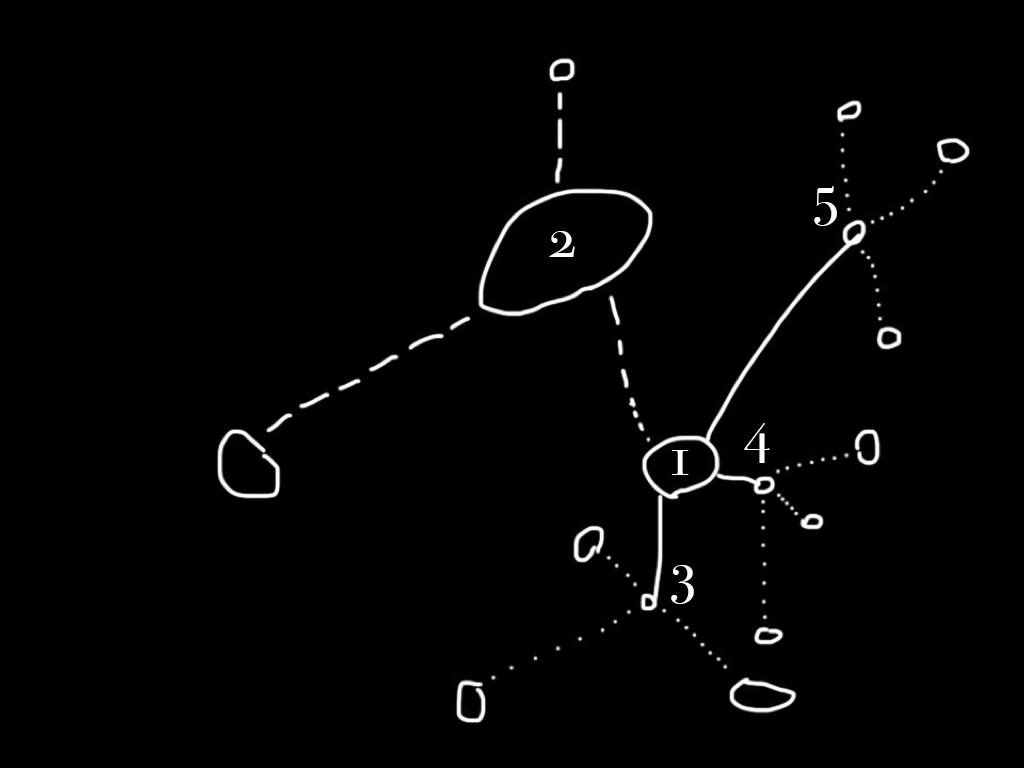
MG: The Hologram project was first trialed as part of an exhibition called Sick Time, Sleepy Time, Crip Time at the Elizabeth Foundation Project Space in New York City, March 31-May 13, 2017. What have you learnt in more recent undertakings of The Hologram project?
CT: Since the original trial one year ago, which lasted for 3 months, the research has shifted to looking at building skills and answering acute questions that will accumulate to support and build the larger project. Starting in the Spring of 2017, I began to offer the Hologram project as a workshop, where participants could test the communication model that is implicit in the Hologram format. The method for offering it is, as a performance artist and rogue architect, creating a situation in a space where people go through a difficult psycho social physical experience together. In the reflective conversations that follow, I ask the groups to use the personal pronoun ‘we’ for the entire duration of the conversation. The idea is that one person’s experience can be shared by the group, and even as temporary Patience we can take a leap and share their experience with them for a duration of time, allowing a Hologram to feel as if their experience is “our” experience. And this feeling that one is not alone in an experience, if carried into other parts of life, has the potential to break a lot of the assumptions and habits that we have inherited from living and adapting to a debt driven hellscape.
Artist and designer Ling Tan talks about the SUPERPOWER! workshop that explored ways to empower young women through a creative exploration of wearable technology in public space.
Last summer, artist and designer Ling Tan worked with young peer leaders from All Change Arts, and the Furtherfield team to devise a project called SUPERPOWER! Finsbury Park. It brought together young women from different walks of life to discuss their relationship with the city. The project explored the ability for technology to bring about female empowerment, and question the participant’s role as female in regards to decision making about our city.
Three common themes by the participants were collectively identified, and linked to a place in Finsbury Park. Using the themes to co-create a series of wearable devices that enabled them to record their subjective perceptions of the city using gesture sensing technology. These were: Cultural diversity and inclusivity in our community; Safety of individuals in the London Borough of Islington and; Wheelchair accessibility around Finsbury Park area
It was all co-scripted and used for an exploration walk, involving the team walking around a specific area of Finsbury Park, performing and recording their subjective experiences using the wearable devices that catalogued their gestures. During the workshop, participants designed body gestures using the wearable technology which track their body gestures and communicate remotely with each other through haptic/audio sensors.
Marc Garrett: Where did the idea for the workshops come from and how did the concept of superpower shape what participants did with your wearable technology.
Ling Tan: In SUPERPOWER! Finsbury Park, the participants were young women aged 15-25 years old and almost all of them have no prior knowledge of electronics and coding. Instead of the workshop being about coding and making, I wanted it to focus on empowerment, challenging them to go beyond their comfort zones. Hence the term “superpower” became a powerful concept to get them to think about technology as a form of superpower that extends their perception into the environment. The idea for the workshop built upon a couple of projects I was doing over the past few years; WearAQ and Fakugesi Social Wearables. The projects use wearable technology to enable different communities to actively record and map out their relationship with their cities through individual subjective perception in the form of body gestures. For example, perception of air quality in London, UK and perception of safety on the streets in Johannesburg, South Africa.
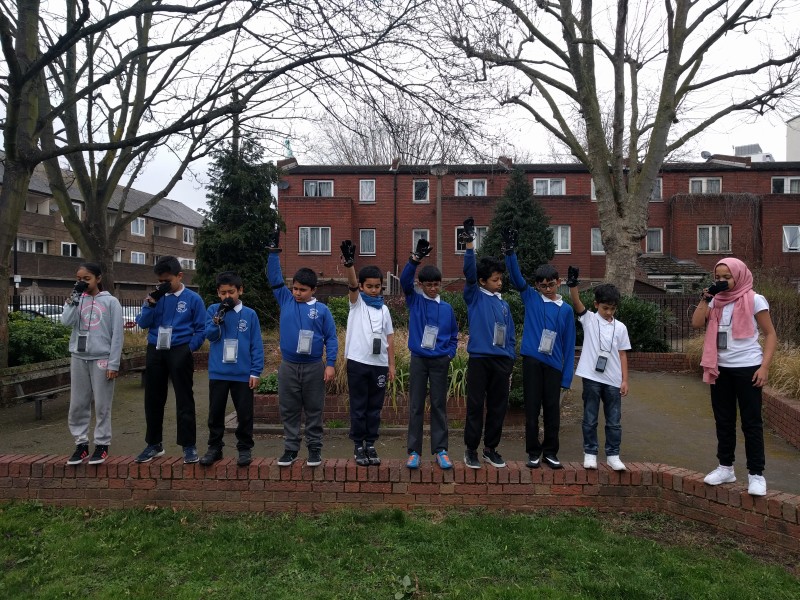

In the workshop, participants discussed about their relationship with Finsbury Park, designed experiments and body gestures to map out their own relationship through the use of an existing set of wearable devices, went out into public space and run with experiments with strangers, park users. For me, learning about what they want to do with technology is more important than picking up skills like coding or fabrication.
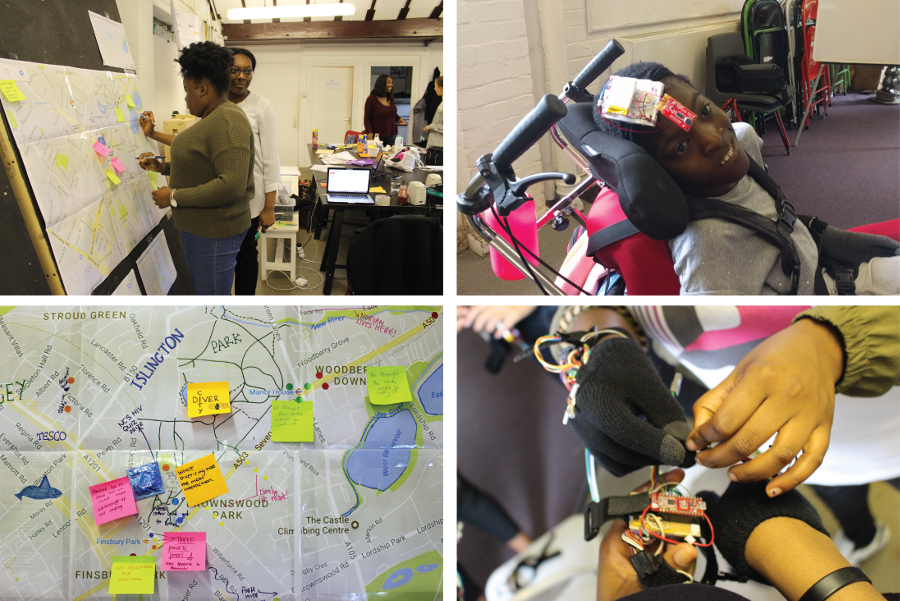
MG: We were surprised to hear how much the young women had appreciated being taught in depth about how the wearable technologies worked as part of this workshop. Do you think this informal workshop format offers a different way of supporting learning about and working with technology? What most surprised you about the way that the young women responded?
LT: I wanted to steer away from a conventional technology workshop where participants would focus on coding and fabrication, than design, because these are skills that they can pick up themselves through on-line documentation and support. For me, what is more important is to figure out what their own interests are with technology, by learning it through hands on design activities with ready made wearable technology. That way, it makes them feel comfortable with tackling complex technology and it also gives them the opportunity to learn about issues that might occur when technology is tested in the real world, checking it out when it does not work and why.

I was most astonished by their speed of learning and how well they picked up the tech knowledge. For example, one part of the workshops involved learning about the body gesture and what the wearables can detect through decoding “1” and “0” read via the body gesture sensors. I was very surprised that they were able to quickly translate that into their own body gesture design.
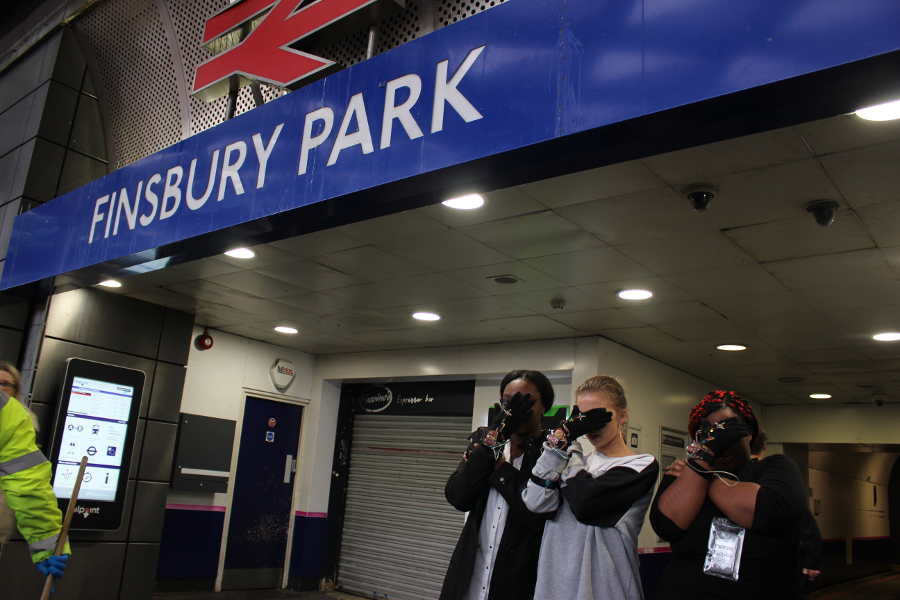
MG: Your workshop addressed questions of value in technology innovation, in the particular context of working in the public space of the park. Please tell us about how you approached these questions and why this is important to you.
LT: I think its is important to demystify technology especially given that we are living in an era where technology is so embedded into our everyday life that we take it for granted and do not notice its impact. It is important for the younger generation to learn about ethics of technology, to be curious about who and why companies are designing specific types of technology, and most importantly, to learn that technology does not always work, that technology cannot solve all our problems. They need to learn to be proactive and have a sense of agency in tackling issues concerning their own environment. For example, issues such as safety on the streets cannot be solved entirely by technology, it also needs other input such as citizen vigilance, policy and law changes.
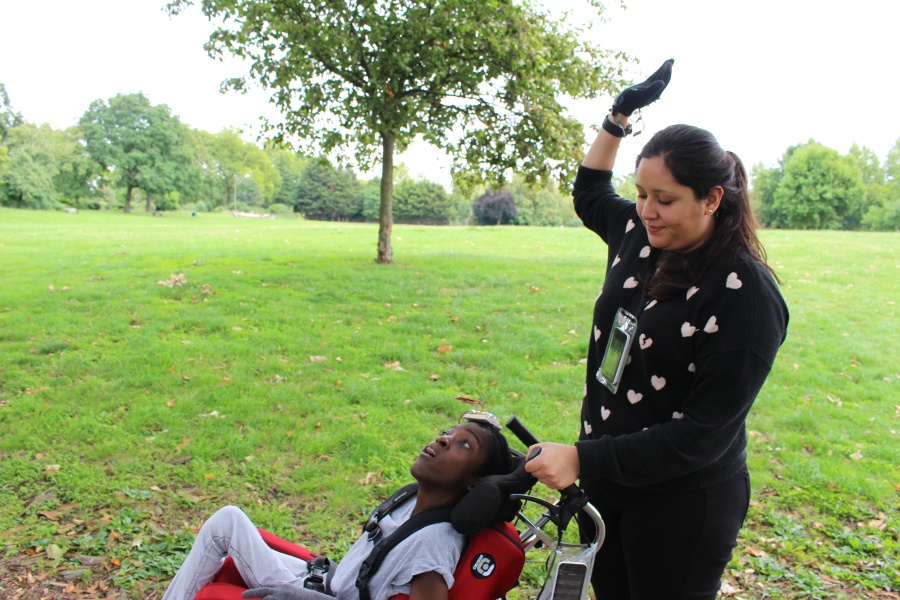
SUPERPOWER! Finsbury Park was a part of the B Creative Summer School, a programme of arts projects created by young women for young women aged 16 – 25 in Islington.
Special thanks to:
All the participants involved in the project
Peer leaders from All Change
Ella Medley Whitfield
Commissioned and supported by: Furtherfield and All Change
This project has been funded with the support from the European Commission. This communication reflects the views only of the author, and the Commission cannot be held responsible for any use which may be made of the information contained therein.
This interview was originally printed in Artists Re:Thinking the Blockchain published in partnership with Torque Editions in 2017.
Marc Garrett: One of many interesting and experimental things about the album Platform, released with Holly Herndon in 2015, is the decision to break away from the perspective of singular genius, and involve a variety of collaborators. This included artist Spencer Longo, Claire Tolan (of Tactical Tech), and Dutch design studio Metahaven. On the 4AD press release page it says that it ‘underscores the need for new fantasies and strategic collective action.’ Under the name of Holly Herndon, along with Holly, you all became a kind of cooperative, collective construction. What inspired you and Holly to explore what could be seen as a decentralized body, or assemblage of individuals as a collective? Or how would you describe your working identity and the importance of this move?
MD: To put it in pretty boring terms, it has become a core part of our mission to be pretty candid about what we do. Holly had been making albums and touring by herself, and then during the early experiments that later became Platform (Chorus and Home) we had begun working together, as we were occupying this tiny apartment in San Francisco, and I was working on this weird net concrete stuff in one room, and Holly was writing for voice in the other, and I think both of us picked up from the ambient sound that the two worked really well together! For the Chorus video we had seen the work of the Japanese artist Akihiko Taniguchi, and really enjoyed the collaborative process of putting that video together, and so then sought out Metahaven, who we’d been in touch with for some time out of aligned interests. Basically most art production at a certain high level is collaborative, and I think it’s just part of our idealistic view on the world that this be transparent and celebrated. Beyond that, when we were coming up with the vision for Platform it also felt very necessary as a political gesture to make a point of the project being aligned with certain political interests, and a politicized way of working and acknowledging others. Working this way has changed my life, and made everything more fun and exciting without diminishing the importance of any individual contributions. It makes for better results, I feel, better general feeling, and also creates these very tangible collaborative connections between fields. It’s also just an interesting experiment to run in music when it feels like so many sonic experiments have been done to death – I’m personally interested in how decentralized practices, collaboration and connectivity, can change the construction and dissemination of music, and ultimately it’s power to be a force in the world.
HH: It sometimes feels like our society is ‘every person for themselves’. We promote hyper individualism at the cost of the planet and social health, and the music industry largely parrots this mentality. We realized how problematic this is, and if we are going to be true to ourselves, then the practice should reflect that concern. It’s been a learning curve for me; learning to not control every single aspect (I tend to micromanage), to hear other opinions, to let go, and not feel threatened if someone else’s idea is better than my own. Releasing my debut album solo was an important step in building my confidence, however ultimately the work itself is the most important, and not the ego. Not to mention that we spend a lot of time on computers, which can be lonely, so working with other people helps us to unplug and see the world around us a little more.
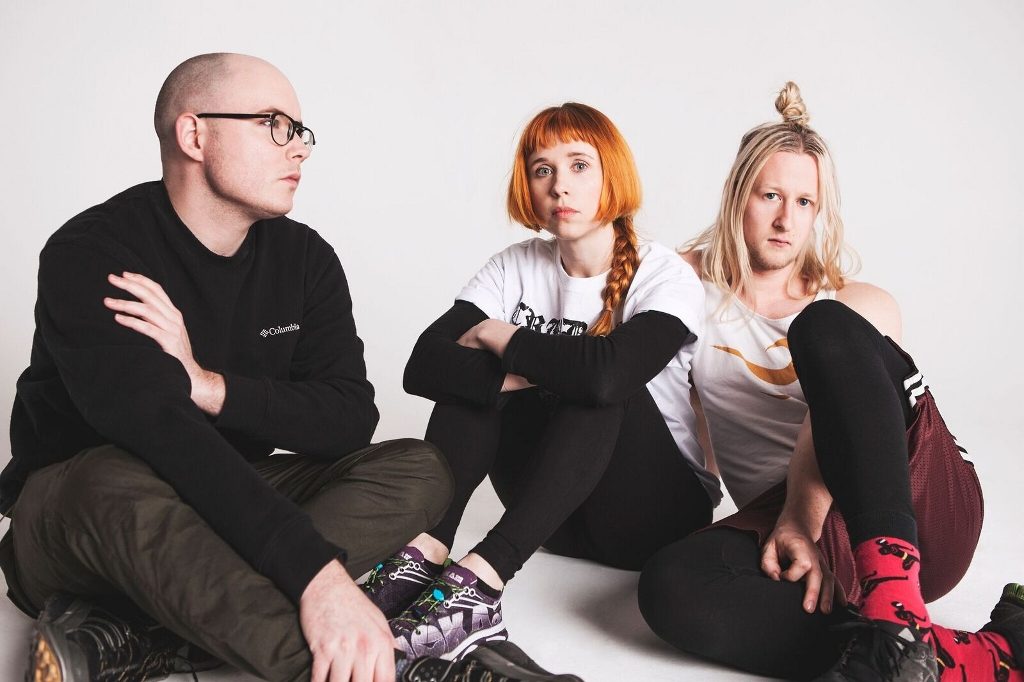
MG: In a world that traditionally, economically and politically, supports the values of individuality above community, or peer to peer collaboration. How did the audience, the music industry, and others in the world (presuming they have) come to terms with this adventurous, creative intention?
HH: It was varied, but overwhelmingly positive. When we were doing press around the record, it was difficult to get some journalists to write about the other artists and thinkers that I was collaborating with, or even just referencing. Those that understood the gesture really embraced the idea, and that successfully provided a platform to highlight everyone’s work.
There are a few industry complications; for example, the project is released under my birth name, so in some ways I am still at the centre of the orbit, which is a problematic professional necessity, but also helps somehow. We used the idea of the Trojan Horse a lot, as in a way my easily understood singular presence served as a gateway into this whole other universe of people. It’s a balancing act, as in various different scenarios you feel different expectations as to what the industry wants; on a pop level they want a simple narrative of my face, and tend to focus on often mundane characteristics such as my gender and education. On other levels you see that the experiment has opened up a different narrative potential, where people’s interest in the record and it’s cast forks off into the direction of their choosing.
It’s really noticeable live, where the audiences have been really supportive. After the shows you experience all kinds of people who come along, hanging out with different people who were on stage – Mat has his own audience somehow, and the same with Colin Self, who often tours with us. As a result of opening up the process and allowing the full breadth of interests and approaches to shine through a little more than is standard, at different shows we have people come up to talk to us about the music, or nerd out about cryptocurrencies and ICO’s, or Chelsea Manning. It feels meaningful, and gratifying for that. We always address the location of the show, whether through the visual or sound, and try to always be alert and responsive. It’s a special privilege to share that time with people, and I think that the concept comes across quite effectively in a live situation as each individual serves a very different purpose in constructing the collective experience.
MD: I think that Platform was received really well. Holly opening up her practice didn’t diminish her signature on the artworks, and I think that it has really won a lot of people over. I think you can feel at our shows that we have a greater principle to what we do, and I think it has maybe made a lot of space for people to conceive of their own experiments and maybe not be concerned at how being ambitious on a conceptual level will affect the ability for the art to travel in the world. Naturally there is also a throttling effect within aspects of the creative industry, where maybe they didn’t want to deal with the bigger ideas around the record, however I feel that the music is strong enough to kind of live in those circles without knowing the story behind it. Overall I think people were refreshed and encouraged by the idea, and transparency of the whole thing. For us now it is a way of being. In my mind, there is more room for individuality to shine when you can guarantee that someone’s work and ideas will be respected and celebrated. The canon of artistic history has omitted so many people’s ideas and contributions for the purpose of having a simpler market narrative, and yet we live in a time when people can and want to dig deeper, and perhaps have a greater capacity for complexity of information – so we want to try and harness that for something positive. Particularly given our interests in subcultural music history, software, crypto etc. there is really no other option but to put the community first. Without community literally none of this exists. Zero. All of our talents and ideas have been incubated in community environments, so channelling that legacy is important.
MG: On Platform you released the track called DAO. I am always interested in shifts between the use of technologies as metaphor and as tools that change practice. So, what was interesting to you about Decentralized Autonomous Organizations (DAOs)?
MD: I’ll let Holly talk more about where DAO came from, with the telematic performance work she was doing at Stanford. Regarding the blockchain, I’ve been developing my own decentralized publishing framework for the past few years, that shares a lot of the same principles as the Ethereum logic, and I’m looking to have it interact with the blockchain in its next iteration. A lot of the spirit behind the crypto community is so synonymous with the models of collectivity we have already been exploring in our work that it’s the logical next step. I’m particularly interested in what this architectural/infrastructural new capacity can mean for the medium of music itself. With Saga you have this whole other performative dimension added to media with the ability to version work, fork it, and have it perform in real time to it’s surroundings online, which I think is a whole other proposition for the medium very much worth exploring. It’s also fascinating regarding the question of attribution and collaboration, as we have grown to understand that the web as it stands currently is very much designed to privilege those who appropriate and curate others creative work and ideas for free – mirroring greater society, it is a winner takes all environment. I want systems of virtuous attribution that do not consolidate the DRM era of copyright takedowns, but instead build markets and new interactions around collaboration, augmentation and live interaction. There is so much more that could be done, and a lot of the blockchain tech emerging offers clues as to how we can get there quickly. There are also a lot of old ideas masquerading as something shiny and new, so you kind of have to read the small print to distinguish what is a genuinely new proposition, but it is our job as members of marginal communities to educate ourselves and anticipate the best options.
HH: DAO came out of a piece that I wrote called Crossing the Interface, with a libretto by Reza Negarestani. The piece was my first venture into telematic performance, where a soprano (Amanda DeBoer) was in another geographic location, but the audience could hear her physical body moving throughout the space using ambisonics. I wanted her to be hyper present, and physically super human, moving in ways impossible to a human body, to be able to be in multiple places in the room at once, as eventually her voice and her body separate, stalking the room. I was trying to find a way to make something so clearly highly mediated, feel extremely personal and embodied at the same time, which seems appropriate for the DAO concept as it exists in the world – this simultaneously complex and distributed network that is also hyper intimate and moves with collective intent.
The vocal work that Amanda delivered while workshopping that performance was really great, so I used some of those outtakes for the vocal work in DAO. With the instrumental I was simply just trying to capture an atmosphere, a heavy energy with lots of wide stereo movement. It’s also really fun to play live with Colin, because he sings the soprano line with live processing, which creates a nice contrast of heavy electronics with extremely expressive alien vocals, taking the entire gender spectrum and contorting it into a circle.
MG: Do you have any plans to formalize any part of your creative collaboration to work on the blockchain?
MD: Holly and I are starting a studio after we finish this next album to more formally develop work and devices that exist in this new frontier, as it has been so instrumental in our discussions for the past few years. I describe it as a frontier deliberately, as if we are to task ourselves with actually experimenting with our work then it feels almost like a duty to get our hands dirty in these areas. We have already started work on two new projects in this domain, but it’s hard to tell when they will be ready to show to people, and what shape they will eventually take.
MG: OK. Last question, in light of the current suppression of the spirit of humanity by despots, and the rich buying up democracy for their own ends, what part do you see artists playing in the world of blockchain, to disrupt the regurgitation of an already bankrupt system?
MD: IMHO, there are two dimensions to this. First, I encourage artists to become familiar with the language and potential of blockchain technology, as there are a lot of opportunities to attempt to re-engineer how we experience, transact and grow community in the arts outside of centralized traditional channels. Real money is being made, and there is a lot of good will amongst the crypto community who invest faith that better systems can and will be constructed using these logics.
I also encourage artists to develop some fluency around the blockchain ecosystem, for exactly the reason that there needs to be wary and critical voices guarding the community from the business-as-usual corporate crowd, who are increasingly flexing their muscles and influencing the course of its development and maturity. By getting involved early, and being vocal, there is an opportunity to intercept plans for how this next internet runs, and who ultimately it will benefit.
The best case scenario is that we can develop our own systems along the blockchain to change music and the arts for the better. Alternately, we need critical voices active within these conversations to avert the worst case scenario of power consolidating itself even further outside of the greater public awareness.
I should say that the third wild card possibility is that blockchain technology is inherently flawed and infeasible once it has been properly stress tested at scale. Irrespective, if your mandate is to be experimenting, and abreast of where things may be going, there are fewer areas of interest more dynamic and potentially transformative. It’s a lot of fun to think about.
Most households have an unsolved Rubix Cube but you can easily solve it learning a few algorithms.
The interview is taken from the recently published book Are We All Addicts Now? Digital Dependence edited by Vanessa Bartlett and Henrietta Bowden-Jones, Liverpool University Press, 2017, and published with permission from the publisher. Available from the LUP website here – the interview is published in parallel with the exhibition Are We All Addicts Now? at the Furtherfield Gallery, London 16 September – 12 November 2017.

Ruth Catlow: In your exhibition Are We All Addicts Now? That opens at Furtherfield, Autumn 2017. You will be presenting a number of works and installations made in response to your research into online addictions. What prompted your interest in this matter?
Katriona Beales: I have insomnia on and off — like a lot of precarious workers. And to deal with being awake for long-stretches at night I go online, parse hundreds of hyperlinks, images, videos. It’s like an out of body experience: I detach, temporarily, from anxieties, pressure, claustrophobia via total preoccupation. Reflecting on these experiences caused me to question whether there was something inherently ‘addictive’ about the conditions of the digital. My research has developed to look at the burgeoning field of neuromarketing and how much online content is ‘designed for addiction’ (to borrow the title of Natasha Dow Schüll’s scorching analysis of machine gambling in Las Vegas). [
note]Natasha Dow Schüll, Addiction By Design: Machine Gambling in Las Vegas (Princeton: Princeton University Press, 2012).[/note] 1] Gamification strategies and various psychological techniques such as variable reward (originally employed in the casino) are now utilised to mass effect on social media platforms, search engines, email accounts, and news sites.
RC: Can you give us an example of digital content, an interface or a device that you personally experience as addictive?
KB: I find the infinite scroll function on sites like Instagram and Twitter very compulsive. It removes the natural breaks that are built into technologies like the book, with chapters starting and ending. Then again, I used to be a compulsive reader and now I am a compulsive scroller… But I keep circling back round to think about the specific qualities of the conditions of the digital. The infinite, hyperlinked and networked nature of online content means scrolling, scrolling, scrolling never needs to end. There is also a correlation between these repetitive physical actions and meditative type states.
RC: Yes, this connects with theories of flow employed in game design. The idea is to design activities that produce the fulfilling feelings of focus, and to minimise a questioning of the context or frame of play. And there is very little critical discussion in mainstream culture about the gamification of everything, which replaces individual agency with a kind of soft coercion. It’s problematic because the less we notice how our attention and experiences are being harnessed by external forces (commercial or state based), the harder it is to connect and collaborate with others outside the given frames.

KB: Totally. I like your phrase ‘soft coercion’ because I think that sums up nicely what I’ve found troubling. Take this quote from Nir Eyal: “Variable schedules of reward are one of the most powerful tools that companies use to hook users… levels of dopamine surge when the brain is expecting a reward. Introducing variability multiplies the effect, creating a frenzied hunting state… When Barbra lands on Pinterest, not only does she see the image she intended to find, but she’s also served a multitude of other glittering objects… Before she knows it, she’s spent 45 minutes scrolling.” [2]
RC: We initially had reservations about applying the concept of addiction to internet usage, partly because the addiction label is usually used to attach blame to individuals. However, after conversation it became clear that you are exploring a political question. Why is the concept of addiction important to you?
KB: Too much discussion about addiction is focused on the responsibility of people to help themselves. The fact that many can’t is often seen as a kind of moral failure. There’s also the disputed status of internet addiction in itself as documented by Mark D. Griffiths and his colleagues in their contribution to this book. We can’t pretend that there aren’t lots of people out there experiencing unhealthy and compulsive relationships to their technologies. But what kind of language is most appropriate to define this? What I am interested in is the phenomenon of what could be understood as addictive behaviours (including my own) being normalised in relation to digital devices. Kazys Varnelis [3] describes network culture as demanding connectedness, with power concentrated in nodes of hyper-connectivity. The more views, the more likes, the more power is accrued. Addictive behaviour is both normalised and valorised in late capitalism as it is associated with the public performance of productivity. Whilst these actions appear to be the choice of individuals, how much is due to the influence of mechanisms and systems of control? Ultimately, I am interested in the idea of the addict as a perfect capitalist subject. However, can we/I be both active-users and critical participants? I am concerned about how many of these platforms function as closed systems in which we contribute (without remuneration) our creative and emotional labour and yet can’t shape the conditions in which it is displayed, performed and monetised.
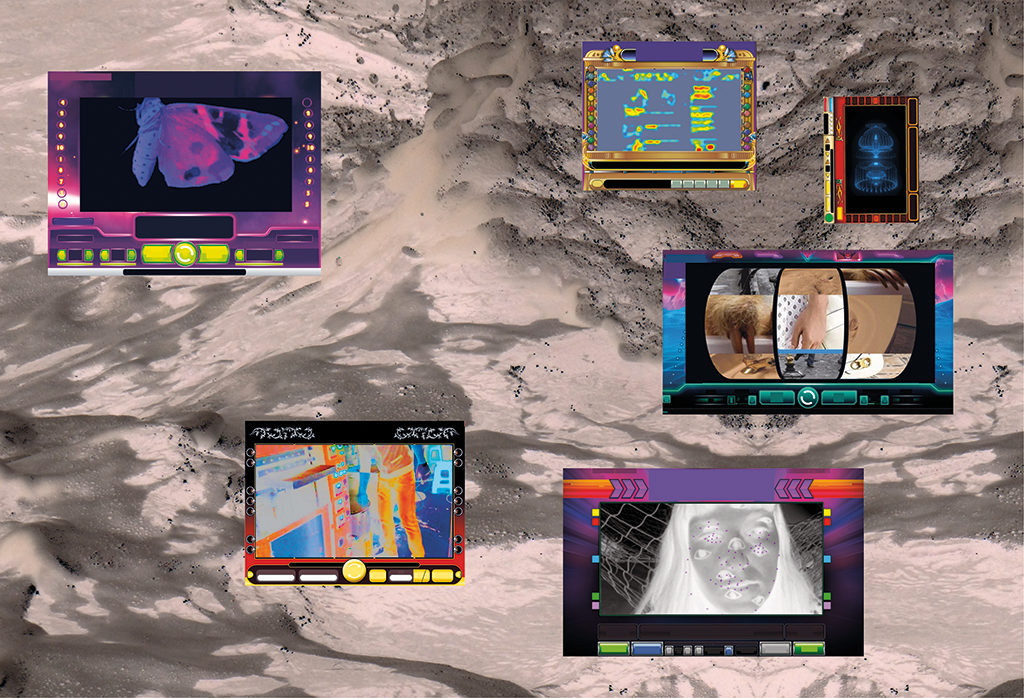
RC: You have collaborated with scientists as well as other artists and curators. How has this worked and what have these collaborations produced?
KB: The space of art offers an opportunity to tap into diverse fields of research, as a kind of (un)informed amateur. I find a Rancièrian strategy of ‘deliberate ignorance’ liberating. As an artist, I find myself in a position where I can turn my lack ofspecialist knowledge in fields like neuroscience into a kind of asset. I’m not answerable to a canon so can make unorthodox connections. In 2012, I started a conversation with clinical psychiatrist Dr Henrietta Bowden-Jones. Henrietta is fascinating as she started the first NHS clinic for problem online gambling and is now one of the leading experts in the field of online behavioural addictions. My collaboration with Henrietta has flourished, I think, because there is a recognition that there is a mutual benefit from the conversation but not an ownership or entitlement to each other’s outcomes.
RC: How does your work deal with the relation between physical and virtual presence?
KB: I am a tactile person, the sort who goes into a shop and strokes things with their face. I am fascinated by how digital devices act as portals into virtual worlds but often their own physicality isn’t dwelt on. Yet these devices connect us in a very tangible way to a globalised workforce and unethical labour practices. My iPhone has parts in it that were constructed by hand in an environment that resembles the Victorian workhouse more than the shiny aesthetics of the Apple store. These deeply dystopian factories create objects that seem so sleek, so smooth, so modern, as if they’ve arrived whole from outer-space. But they were created by workers who do compulsory over-time, sleep in triple bunk beds in small dorm rooms and aren’t even allowed to kill themselves. (I’m specifically referencing the suicide prevention netting that Foxconn put up around their buildings after a spate of mass suicides.)1 I’m emphasising physicality to connect my body lying in my bed to the body of someone bent over a production line; it is far too easy to dismiss the impact of our insatiable appetite for electronic goods.
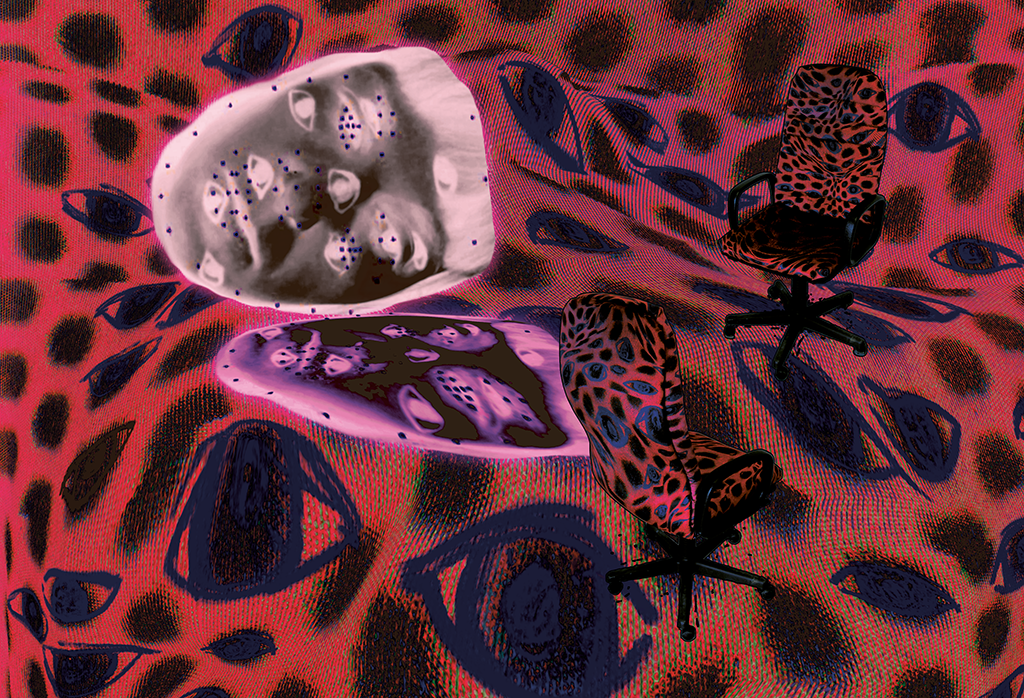
RC: Your exhibition at Furtherfield is to be sited in the heart of a public park. How are you thinking about the relationship of digital devices to the natural environment?
KB: I continue using my smartphone when I step inside the park gates, in a continuum of ongoing augmented experiences where my physical environments are overlaid with digital content. The park acts as a fulcrum for changing understandings of leisure as labour, labour as leisure, and is the perfect site for encouraging reflection on this relationship. As part of this, Fiona MacDonald, who has been working with me on Are We All Addicts Now? as both a curator and an artist, is developing a mycorrhizal meditation piece, looking at network culture from an organic non-human perspective.
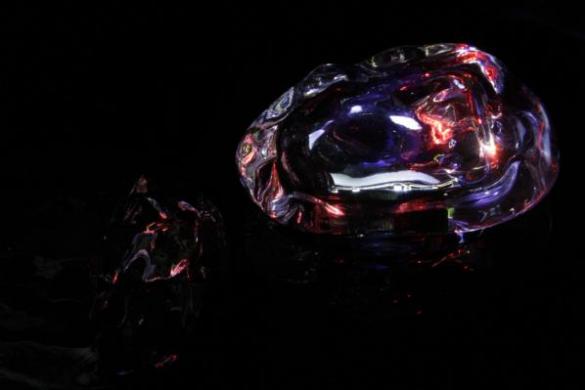
RC: I’d like to end with a description of some of the artworks and installations you are making, the materials you are using, and, in the context of the un-ideal strategies used by designers of mobile interfaces, what condition do you aspire to cultivate in visitors to your exhibition?
KB: I’m making a sunken plunge pool of a networked nest-bed, with glowing screens on which moths flutter embedded in glass orbs. Bed hangings embroidered with dichroic screens stripped from smartphones shimmer overhead, iridescent in the reflected light. I’m trying to communicate how seductive I find the screen in that dark, warm space – in those moments when I am more intimate with my device than my partner. There will be some participatory sculptures referencing pachinko and prayer beads, rhythmic movement, trance-like repetition, lulled into endless hypermobility in the closed systems of ‘communicative capitalism’. [5] I’m also working on some moving image works in which makeup is used as a tool to undermine eye tracking software, which I am hoping will incorporate some specialist hardware generating a live-feed of eye-tracking data from audience members. A series of table-top glass sculptures and embedded screens will explore interfaces that are ‘designed for addiction’ and the way notifications, for instance, are neuromarketing strategies seeking to ‘awaken stress — the mother of all emotions.’ [6] I’d like the audience to share in my disquiet, and hopefully leave encouraged to engage more critically with shaping their online worlds.
In her work, using video, performance and the Internet, Annie Abrahams questions the possibilities and the limits of communication, specifically its modes under networked conditions. A highly regarded pioneer of networked performance art, Abrahams brings her academic training in both biology and fine arts to develop what she calls an aesthetics of trust and attention. She creates situations that “reveal messy and sloppy sides of human behaviour” making that reality of exchanges available for reflection. We first worked with Abrahams in her exhibition ‘If not you not me’ in 2010 and then as part of a group show ‘Being Social’ 2012. In this interview we ask her to reflect on the limits and potentials of art and human agency in the context of increased global automation.
Catlow & Garrett: While predicated on the idea of connectedness, the global social media platforms are designed to profit the companies who create them and to keep billions of us in a state of trance-like immersion which has in turn been shown to cause many of us to feel more isolated. At Furtherfield we have always worked to grow more communal and collaborative contexts for artistic production. What does your current thinking – through your work on Participative Ethology in Artificial Environments: ethnological approaches to Agency Art – reveal for the potential of genuine, participatory networking environments?
Annie Abrahams: Participative Ethology in Artificial Environments: ethnological approaches to Agency Art sounds nice, but it needs a question mark at the end. It’s an interrogation. In times when our technological environment uses all kinds of behavioural techniques to make us uncritical users of their interfaces, it’s important to become aware of our behaviour, to test and experiment with it. My artistic work is based on doing that, but I always had great difficulties explaining it to art institutions etc.
A discussion I had with my friend Cor whom I studied biology with in the seventies, helped me find this latest description. I told her, that I think about my work as having human behaviour as its main aesthetic component and why I call it, silently, “behavioural art”. I compare what I do now to what I did when I studied biology. In both cases I observe behaviour in constrained situations. The monkeys, that were the study objects “became” humans and the cage the Internet.

Because the behavioural science of the late seventies didn’t suit me very well – using Skinner boxes, operant conditioning techniques and related to sociobiology, with a link to eugenics – it has become impossible to use this historically contaminated term. The wish to control, mold nature, and humans wasn’t mine. “Behavioural” was and still is a “stained” word for me. But even so, I do study behaviour and create constrained situations. I ask people to perform in a frame, they are framed in an apparatus, which is more or less perfect – the Internet provokes, lags, bugs, glitches, the computer is old or new, fast or slow, the interface determines how the performers can interact or not, the domestic situation interferes with noise and cats wanting to join in. There is a protocol/a script/a scenario but no rehearsal, just some technical tests. My approach is more phenomenological than scientific, I don’t measure anything. It’s up to the performers to explore their own behaviour, to reflect on it and to learn together what it means to be connected.
I told Cor, my annoyance with the tendency of art institutions to categorise art. Video art, poetry, contemporary art, literature, dance, painting, music and media art, computer art, code art, … It’s so impractical and superficial and it always takes a technology or a medium as its anchor point. It doesn’t say anything about what it makes possible, about what we can experience through it. Maybe that’s why I started to use the word performance, and performance art more and more. It’s a cross-discipline word. It’s multi purpose, but also a bit empty, I must admit.
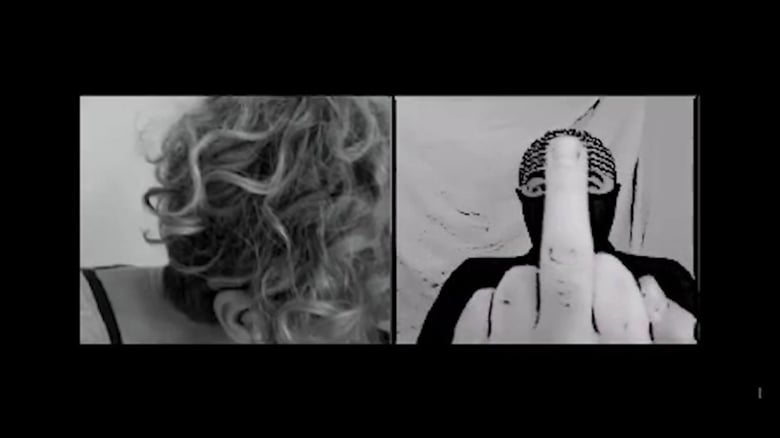
“Agency Art is art that makes it clear to the receiver via his or her body what is at stake, where opportunities for action lie, and which virtual behaviours he or she can actualize. It demonstrates how choices work.” Arjen Mulder, The Beauty of Agency Art, 2012.
In his article The Beauty of Agency Art, Arjen Mulder uses the concept Agency Art to indicate interactivity as the important component of an art work. It is an interesting attempt to develop a discourse for technology/media art in relation to the contemporary art discourse. He embeds his ideas in history and goes back to thinkers such as: Shannon, Wiener, MacKay, McLuhan, Cassirer, Langer, Gell, Latour, Heidegger, Derrida, Badiou, Rancière, Danto, Whitehead, Steiner, Rolnik and more. I like the concept because it determines art that has behavioural choices and gestures as its centre. Its meaning is the acts that are made possible. What is also important in Mulder’s reasoning, is the concept of “virtual feeling”, introduced by the philosopher Susanne K. Langer in her groundbreaking book Feeling and Form (1953). Langer explains how each individual art medium evokes, manipulates and investigates “virtual feelings” in its own way.
“A painting calls forth virtual depth with lines and colours; a sculpture constructs a virtual volume around itself; a novel constitutes virtual memory, tracked through virtual time. Dance follows virtual forces of attraction and repulsion. All the experiences that are part of this “feeling” are spaces of possibility, virtual feelings waiting for actualization; their nature, allurements and dangers must be studied, and art is where this investigation takes place” Arjen Mulder, The Beauty of Agency Art, 2012.
This is how to think of behaviour as an aesthetic force, I told Cor. This is a concept that I can use to talk about what is important to me. For me, the words are empowering and stimulating, pointing to Butler, ANT theory and Karen Barad, I cannot and won’t leave them behind me.
collectively made – refusing hierarchy- a knitting together of artists and performers in the moment of the event – erasure of the artistic ego – practice – changing rules – choices – connecting – accepting the unexpected – responsive – shared – collaboratively authored – open to all – working with temporal behavioural phenomena – healing – enactment – improvised – including environmental conditions – attentional strategies – instructions – protocols – apparatus – meeting – embracing the ordinary – rehearsing alternatives – re-hijacking therapy – exercising our relations to others – our social (in)capacities – exploring rituals – being together – participatory – concerns individuals and politics
These are keywords found while researching work (from fine art, dance, theater, music, performance, digital art to electronic poetry) I could consider being Agency Art : Deufert&Plischke’s work, LaBeouf, Rönkkö & Turner’s HEWILLNOTDIVIDE.US, Building Conversation by Lotte van den Berg, Deep listening by Pauline Oliveros, Poietic Generator by Olivier Auber, Lingua Ignota by Samantha Gorman and Walking Practices by Lenke Kastelein.
Using Agency Art also means being able to make cross sections through disciplines and to open up closed domains of practicing. And that is the moment in our conversation where Cor, who has also a degree in philosophy said : “It’s easy, call your work participative ethology in artificial environments.” I am still pondering and that’s why there has to be a question mark. There always have to be question marks.
#PEAE = #Participative #ethology in #artificial environments #ethnological approach #AgencyArt?
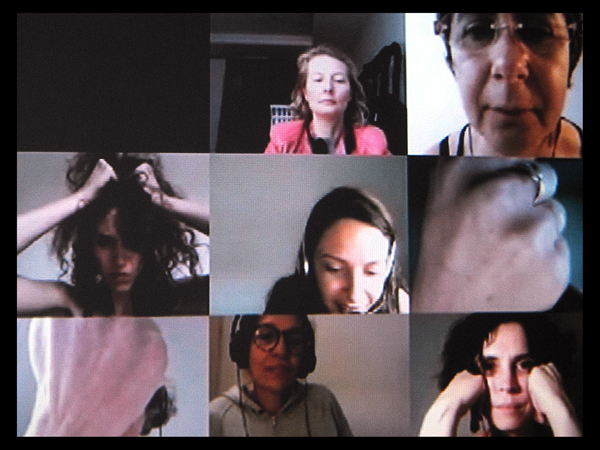
C&G: Katriona Beales drew our attention to the Kazys Varnelis’ essay in the Dispersion catalogue (ICA 2008) which talks about the concentration of power in nodes of connectedness. She says “So even if I write a response to Donald Trump’s tweet saying “I hope you’re impeached”, for example, I add to his power, just through the interaction. I end up contributing to his power base even though I explicitly disagree” This effectively rewards, with attention, those who inspire intense outrage, fury and derision. Interfaces play a crucial role in your network performances and deliberately prompt very different kinds of behaviour – we’re thinking in particular of Angry Women. What kinds of behaviours and responses does your work inspire?
AA: I agree the concentration of power in nodes of connectedness is disturbing and confusing. It puts us in a double bind situation, becoming petrified, unable to act or to flee because we can not choose. I think this might be true when we consider our role in big networks, but it is definitely different when we talk about smaller networks. There it matters what we say and especially how we say it. A big part of my work is to create situations / interfaces / performances that permit us to experiment and train our (un)capacities to do so in networked environments. Participating in one of my performances means taking risks – nothing is rehearsed, means accepting you can’t control everything, it means committing to continue even if all seems to go wrong, to be attentive to the others around you with whom you share the performance space, with whom you are co-responsible for the shared moment in time.
From the people watching I ask that they are aware of what is at stake in a performance. That they watch it not with a connoisseurs regard, but that they see it as an aesthetic experiment in which behaviour is the main aspect / asset. If they become sensitive they have access to a very intimate and fragile aspect of our being, to something we absolutely need to discover further if we want to escape an allover binary future.
For myself I analyse the “concentration of power in nodes” phenomenon as the result of something you could call a lack of res-ponsability in our online affect management. When you are always scrolling you are unaware of the reaction you provoke, you are not awaiting a reply, but already on the next, next, next photo or short text. There is very little interactivity, and even less exchange. We act without caring for what our words, actions, and ideas bring forth. We might not be aware but our words, actions, and ideas live beyond us, they do intra-act with the actual situation. They are things acting in a world. (**)
** I have been reading texts on intra activity, a neologism introduced by the physicist, and feminist theorist Karen Barad. It’s difficult stuff. This video (Written & Created by: Stacey Kerr, Erin Adams, & Beth Pittard) gives easy access to one of her most important points.
C&G:
Yes, it is now totally normal to refer to “people” as “consumers”, every organisation an “enterprise”, which in turn leads to proposals for the nation-as-a-service, populated and run in the interest of private enterprise as offered by the e-stonia bitnation project.
By accepting the impoverishment of experience and reduction in agency implied by this label we can forget about ourselves as “actors” in the world, and become the cattle of the few. The only agency we are offered is as a responsible consumer (in which our powers are reduced to a binary option to buy or not). This is the new democracy.
In the UK these days, art audiences are often described as “consumers”. How else in your view might we conceive of “audiences”. What agency might we wish for them. And what part might our relationship with devices and digital networks play in this new description?
AA: We are not yet used to machines reacting to and using affects, tapping into our endocrine system. Articles like “Our minds can be hijacked’: the tech insiders who fear a smartphone dystopia” make us more and more aware of how we are manipulated and distracted, how our attention is designed, guided, influenced, used. But a lot of it is still hidden and because it’s so rewarding and because we “need” the attention we continue to click and vote. It is possible to create environments where people can slow down and have more subtle, nuanced agency, where they can participate and become aware and reflect on of their own behaviour. DIWO projects for instance have that power. People, especially art lovers, can be challenged to engage with others in interesting actions and conversations.
With Daniel Pinheiro and Lisa Parra in Distant Feeling(s) we invited the audience to join us in an experiment where we share an interface, normally used for online conferencing, with our eyes closed and no talking allowed. It led to very diverse observations shared via social media and email exchanges: liminal space – pure motion – an intimate regard – a field of light – dissolved, destabilized – an altered state – a telematic embrace – a silent small reprieve – hanging out with friends – machines conversing across the network only when the noisy humans finally shut up – an organic acceptance of silence?
Keywords from the reactions : http://bram.org/distantF/
Distant FeelingS #3 | VisionS in the Nunnery – Oct5-Dec18 2016
C&G: Unlike technologies and forms of production that work in the area of speculative realism, automation and AI, you still place humans and human relations at the centre, how do you view the current moves to shift agency away from humans into these ranges of techno-social systems?
AA: I am particularly intrigued and troubled by what is called deep learning. The algorithms produced by the machines themselves have a big influence in and, we must be honest, potential for for instance the health care business. They also determine on what moment of the day, depending on your mood you will see which advertisement on your device. As explained in The Dark Secret at the Heart of AI nobody can really understand how these applets produce their outcome – not even the programmers who build them.
For me this is problematic. Algorithms cannot invent what didn’t exist before and so they tend to reproduce / to select more of the same / to reinforce the existent. (see deep dream images) Moreover a lot of deep learning is based on the algorithm learning to produce a desired outcome.
As the machines are also designed to make us ready for their coercion, we are already subconsciously, intuitively adapting to these black box processes. We need to try to understand how these processes influence us, not because they are necessarily bad, but because our interests might not always coincide, we might want to differ. We don’t all have to learn programming the machines. That has become far too complicated and specialist and maybe not the best route to take. But we could engage in projects who try to find out how to influence machine behaviour, how to keep some agency. Maybe by introducing noise and entropy into the processing, so, together with the machines we can continue to cherish difference and diversity.
C&G: This question connects with the previous one. How do you see the role of artists in finding ways to negotiate a healthy relationship between artistic agency and capital-driven-machine worlds?
AA: This is a very difficult question to which every artist has to formulate her own answer. But it for sure passes by trying to open up spaces and discussions with people who have other opinions than yours, to going beyond safety-zones, to finding ways to communicate with and about hatred, angst and love.
*——————–*
This editorial series, takes digital addiction as its theme, and sits alongside the Are We All Addicts Now? exhibition, book, symposium and event series, we are hosting at Furtherfield. Are We All Addicts Now? Is an artist research project led by Katriona Beales and has been developed in collaboration with artist-curator Fiona MacDonald: Feral Practice, clinical psychiatrist Dr Henrietta Bowden-Jones, and curator Vanessa Bartlett. It looks at the application and impacts of many different research findings in the creation of digital interfaces, devices and experiences under the conditions of Neoliberalism.
Hi Shaina! Tell us about the genesis of CAMP? How are you part of it? Why are you called CAMP?
CAMP came together as a group in 2007, initially consisting of me, Shaina Anand (filmmaker and artist), Sanjay Bhangar (software programmer) and Ashok Sukumaran (architect and artist) in Mumbai, India. The intersection of our skills and different backgrounds created a vital spark in which to experiment with technology and ask deep questions about form and ways of making radical political work. We are called CAMP as we are not an artist’s collective (though we began as a collaboration with KHOJ which was an artist’s collective in Delhi, which you headed operations for) but we call ourselves a studio. In this process, we try to move beyond binaries of art vs non-art, commodity market vs free-culture and to build media for the future. Personally, it gives me the platform to eschew conservative approaches to documentary filmmaking with “the colonial male gaze.”
How did you decide to create new-media and be part of CAMP coming from a strong documentary tradition?
Oh, for that I would like to describe the response my younger self (1992-2004) had to making traditional documentaries. Travelling around India with my mentor, filming a documentary about life in villages for the anniversary of Indian independence, I described how they’d turn up in jeeps, find the subjects, and ask important questions for the nation. I became increasingly disillusioned by what I saw as the repeated orchestration of finding a subject, interviewing, zooming in, asking questions until the subject ends up crying. So, once while analyzing the relationship between filmmaker and subject I echoed the question hovering over so many discussions, “who speaks for the subject and from where?”
That’s when I decided that I had two choices, to either move into fiction which was perhaps less problematic, or to “stay with the trouble”, to let the problems drive the work into becoming something more in line with my politics. I also wanted to “trouble” the triangular relationship of author, subject and technology, so that it favored the subject more.
Very interesting! You mentioned Haraway’s “staying with the trouble”. Were you influenced by her work? Say more! I relate to that experience, having switched from working in Bollywood to doing social documentaries and now learning new-media art. So, what role do you think technology plays in fostering that relationship between the subject and the author and more importantly, how does it “favor” the subject?
Well, yeah. I feel influenced by her as a woman media-maker where I draw from her reflections on race, technology and gender. In CAMP’s work at various biennials, I have often felt that every part of the process of documentary-making had been deftly unpacked and put back together again to reflect vital contemporary political concerns within the actual structure of the work or even its distribution, not just its content. By that, I felt we succeeded in using technology to foster that relationship.
I find it fascinating that technology is not a toy or gimmick in your work but rather gives to access to places and people which traditional approaches to documentary wouldn’t. In this context, could you throw some light on the use of CCTVs in your work esp. at a time when they were increasingly being used as a tool for surveillance?
In our work Al jaar qabla al daar (The Neighbour before the house- 2009), we used CCTV cameras and set them up to film the houses where eight Palestinian families had been forcibly evicted and are linked to remote controls in new homes or refugee places where the families now live. We were then able to zoom and tilt the cameras to spy up washing or as they went about their business. The complexities of the power relations between the observer and observed are dazzlingly deft and agile, giving energy to the otherwise hopeless situation of displaced Palestinians in Jerusalem. We only hear their voices as they trace the lines of personal memory in their old neighborhoods or stalk the new inhabitants of their former homes with the remotely operated CCTV placed on nearby rooftops. We see soldiers training, Orthodox Jews going to prayer, a boy skateboarding, roofs, water tanks, a veranda built by their own families. Their bodies exert a ghostly presence on the very image we see onscreen as a small boy exhorts his mother to “zoom, zoom”– to spy on one of the new inhabitants leaving the house. But nonetheless through the active manipulation of this technology we had “captured” a settler.
Do you think technology facilitates a democratic or rather liberal exchange for the subject? Let’s say immersive technologies like virtual and augmented realities, which I’m interested in, blur the point of view of the author and the subject. What do you think?
The act of wrangling the technology to record the voices of the camera operators while simultaneously filming does create a power shift. For example, in our work, the Palestinian families may be physically invisible in the places they once lived, but their voices and ability to control how we see with even the crudest of cameras, exerts its own pressure. It acknowledges and celebrates the democratization of the camera and makes us question the veracity of all the other images we have seen about Palestine. We hear details about the neighborhoods, how the evictions happened through impossible laws or enforcements as the displaced families observe how the new families don’t clean the stairs or water the lemon tree.
Yes, I liked the use of the footage as a timeline for viewers to edit which led you to form Pad. Ma (Public Access Digital Media Archive) which I was a part of too, at some point. Interestingly, here at UCSC, I met and heard Bernard Stiegler who had long ago worked with annotating found-footage with his students thereby that puts CAMP in that discourse. Say something about that.
Well, for me, the most radical and exciting approaches to documentary were in the 60s in India. Since then, what has changed? Nothing here. CAMP’s work provides a sense of new possibilities as it steals back technology and puts it into that utopian discourse of Stiegler and others to shift our perspective closer to the subjects. By “troubling” the traditional methods of creation and dissemination it empowers both the viewer and the viewed with a fresh perspective.
Some of your work is about migrant population, home and displacement which strikes a chord with my interest in human-rights and immigration. Tell us about this work and its approach.
A privileged perspective into the worldview of another is contained in our work, From Gulf to Gulf invited by the Sharjah Biennial a few years ago.Yet again it is a document of a much richer process that began as an artwork/ community provocation/ friendship built over four years between CAMP and a group of sailors from the Gulf of Kutch in India. Initially CAMP produced radio programs culling material from sailors’ songs, conversations, phone calls etc. and later that evolved into a new-media piece that showed this totally different space in a radically fresh way. It is composed of footage of their journeys and extended selfie- films shot by the sailors on their long voyages, often accompanied by songs which they Bluetooth to each other.
Fascinating! Lastly, I’m keen to hear about what CAMP wants to do with technology next?
At any given time, CAMPwants to challenge the triangular relationship of author, subject and technology, thereby splintering the privileged gaze and our standard mode of perception. That’s our motivation behind whatever we have or will do.
Thank you Shaina for speaking as an artist from CAMP. It was great to talk to you and have worked with you all!
Choose Your Muse is a series of interviews where Marc Garrett asks emerging and established artists, curators, techies, hacktivists, activists and theorists; practising across the fields of art, technology and social change, how and what has inspired them, personally, artistically and culturally.
Ryota Matsumoto is a principal and founder of an interdisciplinary design office, Ryota Matsumoto Studio, and an artist, designer and urban planner. Born in Tokyo, he was raised in Hong Kong and Japan. After studies at Architectural Association in London and Mackintosh School of Architecture, Glasgow School of Art in early 90’s, he received a Master of Architecture degree from University of Pennsylvania in 2007. Before establishing his office, Matsumoto collaborated with a cofounder of the Metabolist Movement, Kisho Kurokawa, and with Arata Isozaki, Cesar Pelli, the MIT Media Lab and Nihon Sekkei Inc. He is currently an adjunct lecturer at the Transart institute, University of Plymouth.
Marc Garrett: Could you tell us who has inspired you the most in your work and why?
Ryota Matsumoto: As I have collaborated with the founders of the Metabolist movement of the 60s, Kisho Kurokawa and Arata Isozaki, and had the opportunity to meet Cedric Price at Bedford Square, I am keenly aware of the participatory techno-utopian projects by the Situationist International group. Some of the projects by Japanese Metabolism, Yona Friedman, and Andrea Branzi drew inspiration from the concept of unitary urbanism and further developed their own critical perspectives. Their work has helped me to create my own theoretical platform for the status quo urbanism and its built environment.
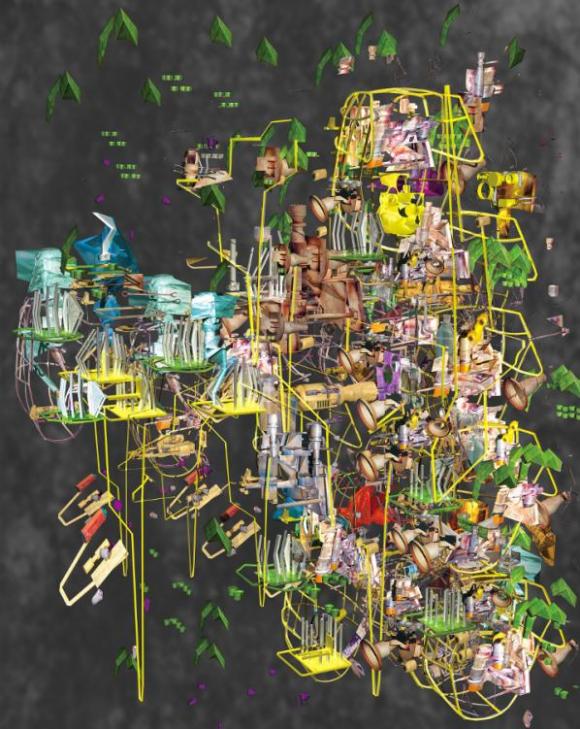
MG: How have they influenced your own practice and could you share with us some examples?
RM: I identify with the free-spirited and holistic approaches of these theorists on the relationship between language, narrative, and cognition. They embraced a wide range of media for visual communication that simultaneously defied categorization as either art or architecture and denounced the rigid policy-driven urban planning. Who would have thought of using photomontage, computer chips, PVC, or anything else they could get their hands on for architectural visualization in those days? Furthermore, their urban strategy of mobile/adaptable/expandable architecture and the theory of psychogeography dérive resonate with my own creative thinking. I interpret urbanization as the outcome of self-generating, spontaneous and collective intelligence design process and believe that the strategic use of hybrid media with incorporation of multi-agent computing provides an alternative approach for both art and design practice.
MG: How is your work different from your influences and what are the reasons for this?
RM: The utopian aspirations of the groups in the 60s were very much the product of the counter-cultural movement of the time: they were politically engaged and had optimistic outlooks for technology-driven progress of cities. In contrast, while I tend to address the current socio-cultural agendas of urban and ecological milieus, my work doesn’t necessarily evoke or represent the utopian or dystopian visions of spatial cities.
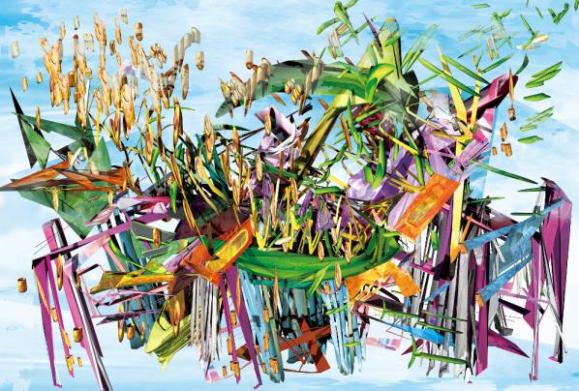
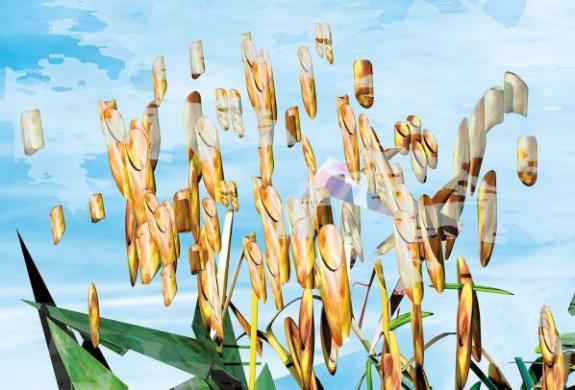
MG: Is there something you’d like to change in the art world, or in fields of art, technology and social change; if so, what would it be?
RM: I explore and question both sustainable and ethical issues of the urban environment that have been influenced by the socio-political realities of the Anthropocene, using visual/cognitive semantics, analogical reasoning, and narrative metaphors. As human population and energy use have grown exponentially with great acceleration, the interactive effects of the planet transforming processes on the environment are impending issues that we have to come to terms with. Thus, my projects hinge on how trans-humanism, the emergence of synthetic biotechnology, and nano-technological innovations can help us respond to the current ecological crisis.
“The themes of my work hinge on how the scientific tenets of trans-humanism, the emergence of synthetic biotechnology and Nano technological innovations might respond to the Anthropocene epoch, and, eventually foster critical thinking in relation to the underlying agendas of the increasing dominance of human-centric biophysical processes and the subsequent environmental crisis.” [1] (Matsumoto 2017)
With my recent work, the symbiotic interplay of the advanced biosynthetic technologies and the preexisting obsolete infrastructures has been explored to search for an alternative trajectory of future environmental possibilities. In short, new technologies can complement old ones instead of completely replacing them, to avoid starting over from a blank slate or facing further ecological catastrophes.
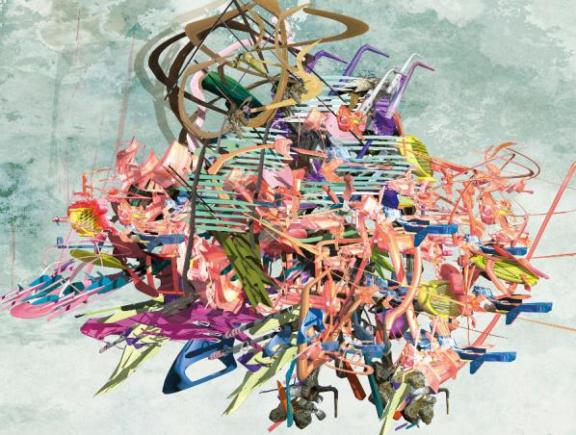
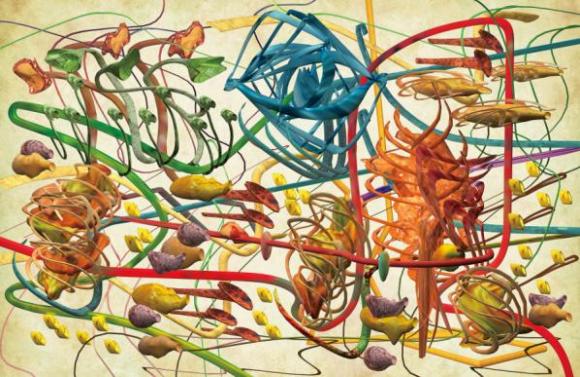
MG: Describe a real-life situation that inspired you and then describe a current idea or art work that has inspired you?
RM: I was fortunate enough to experience firsthand Hong Kong’s rapid urbanization driven by the staggering economic growth throughout 70s and early 80s. In hindsight, it could be called the beginning of rising prosperity in the Pearl River Delta region. I was fascinated by the fact that both the unregulated Kowloon Walled City and the newly-built Shanghai Bank Tower stood only a few miles apart from each other around the same period. They could be seen as two sides of the same coin, as they both represented the rapid and chaotic economic growth of Hong Kong at that time. It suddenly dawned on me that the juxtaposition and coexistence of polar-opposite elements connoted both visual tension and harmony in a somewhat intriguing way, regardless of their nature, function, and field. That contradiction nurtured and defined my own aesthetic perceptions in both visual art and urban design.
MG: What’s the best piece of advice you can give to anyone thinking of starting up in the fields of art, technology and social change?
Although it might sound like a career detour at first, it is always helpful to go off the beaten path before starting out as an artist. In my case, my experience as an architectural designer and urban planner certainly helped me to break the creative mold and approach my work with a broader perspective. Even now, I still firmly believe that it is always helpful to learn and acquire the wider knowledge and skills from other fields, and that opening up your mind to new ideas will allow you to discover your own unique path in your life.
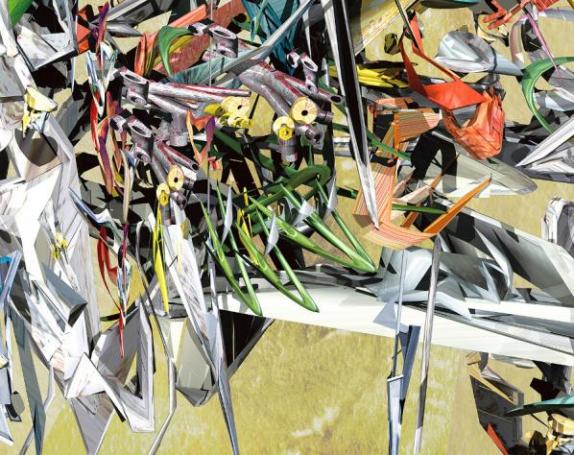
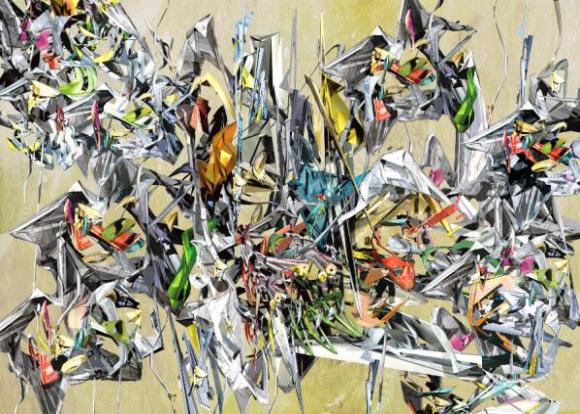
RM: Finally, could you recommend any reading materials or exhibitions past or present that you think would be great for the readers to view, and if so why?
The retrospective of Le Corbusier’s work is the last exhibition I’ve seen and it was very fascinating. He is a great innovator, who had managed to continually reinvent himself to stay ahead of the curve over the course of his life. If you are interested in 20th century architecture encompassing early modernism and the Brutalist movement, it is definitely worth visiting.
CS: Tell us a little bit about how the collaboration between Palais de Tokyo’s residency Pavilion Neuflize OBC and Fluxum/Flux Laboratory came about. Did this directly contribute to the hybrid of visual/dance performance art or was it the artists’ call?
FD: During two years, the Pavillon Neuflize OBC has worked with the National Opera of Paris for projects at the crossroads between contemporary art and choreography. We wanted to develop this perspective which is a kind of tradition in the history of the Pavilion (created in 2001), if we remember that our institution has a long interest for transdisciplinarity. So the hybridization between visual art and performance wasn’t the artists’ call. On the contrary, we asked them to step aside for collaborating with choreographers. It was really experimental for them.
CS: Neither Palais de Tokyo or Fluxum/Flux Laboratory are situated in Greece. What was the reason for its inception to take place in Athens? Was it because of the traffic Athens would see due to documenta 14 or was it a suggestion by Andonis Foniadakis, the choreographic director?
FD: Since its creation, Fluxum/Flux Laboratory has developed many dance projects in Greece. And it’s due to its founder, Cynthia Odier, that Ange Leccia and myself met Andonis Foniadakis. We started the dialog with Andonis right at the moment of his nomination as the Ballet Director of the Greek National Opera, o Athens appeared quickly as the perfect place for our collaboration. We decided just afterwards to take advantage of the presence of documenta 14 in the city.
CS: The result is quite impressive – specifically since, and correct me if I’m wrong – the work produced was created in only two weeks in March. How did you find the process of working and creating collaboratively in addition to being in an unfamiliar city?
FD: The residents came to Athens for the first time in November 2016. During the first week, we had met the choreographers and dancers but also people who are engaged in the artistic life of the city. We tried to understand and use the pulse of this specific urban energy. We visited some sites for the exhibition and began to question the relevance of our own presence here. The conversations with the choreographers permitted us to create a strong link with Athens and not feel like tourists. We came back for a three-week workshop in March, just before the opening of our show. Between these two stays, we discussed a lot and had decided to start from our situation with the desire to move away from an artificial subject. The notion of the collective seemed a good way of taking charge of what we tried to do – especially because the Pavilion tries every year to create a specific group that gives a specific form to its structure.
CS: Prec(ar)ious Collectives feels like it could be quite nomadic as it is in an unfamiliar environment; however nomadic does not mean it feels odd or out of place – in fact it felt quite the opposite. As a curator, how did you approach Athens and stay conscious of the context(s) surrounding it?
FD: The fact that we didn’t exhibit in a white cube or an artistic space helped us. When we decided to occupy this abandoned building on Akadimias Street, I was sure that we would be related strongly to the city and its history. The context wasn’t outside of the walls – it was here, with us. Of course, we were all conscious that we needed to stay in relation to what was happening in the city. That’s why nobody arrived with their work completed and done. The materials and the main elements of the creations were an artistic answer to this particular context.
CS: I am very curious about the building. I understand it used to be the Diplomatic Centre for the Third Reich during the Second World War. How did you become aware of its existence, and did your decision to curate Prec(ar)ious Collectives have anything to do with the building’s history? If not, what was the reason for selecting this building?
FD: In January 2017, the director of the Pavilion Ange Leccia was in Athens to present some of his work. He visited the exhibition organized by Locus Athens in this space and it impressed him quite a bit. We wanted to work in an abandoned site for underlining the economical and cultural situation in Greece. And Akadimias Street 23 seemed perfect. We didn’t choose it for its history, even if these multiple layers added some density to our proposal. For sure, the different atmospheres of the rooms immediately gave us the possibility to create dialogs between the works while preserving the integrity of each. So, it was a question of ambience in the sense of the architectural conditions aiding the experience of the audience.

CS: I found that a continuous theme within the exhibition was not only the creation of a utopic community, but also an ambience that generates a state of limbo – of transition. Was this a reference to the state of Athens or to the state of artistic production or work?
FD: The notion of limbo is stimulating. And it insists on our «spectral approach». It means that we have tried to give life to this abandoned building. And some installations can be described as floating. In Manolis Daskalakis-Lemos and Lola Gonzalez’s videos, for example, there is the idea of apparition. And even with Taloi Havini’s huge ephemeral camp, we can feel a sort of «in-between» space, archaic and futurist, protective and dangerous. Maybe it was a re-transcription of our impressions about Athens, so appealing and full of energy, but at the same time, so undermined by the political situation.
CS: As a final note, what is the next step for Prec(ar)ious Collectives after its brief residency in Athens? Are there any plans to simulate the experience, albeit differently, again in another context or place?
FD: There won’t be another step for Prec(ar)ious Collectives as a group exhibition. It was really the result of a one-month workshop. But it happens for the best that some encounters initiated in the Pavilion can be developed after the time of the residency.
CS: And any future projects that you will be a part of?
FD: On my side, I will develop a curatorial project next year in Los Angeles in the frame of FLAX residency. Titled The Dialectic of the Stars, I will organize several evenings in different institutions which will permit artists? to drift in the city from one site to another for catching some contradictory parts of the L.A. atmosphere. The idea is to mix French artists and Los Angeles-based artists and to trace a political and poetical constellation.
To find out more read Chloe Stavrou’s recent review: Community Situation: Prec(ar)ious Collectives and documenta 14
Alan Sondheim has been ploughing a very singular furrow through art, music, writing, philosophy and much else since the late sixties. On the occasion of his participation in the Children of Prometheus exhibition at Furtherfield Gallery we present here an interview conducted by the artist and writer Michael Szpakowski in which Sondheim gives a broad overview of his artistic formation, practice and philosophy.
Michael Szpakowski: I first came across your work through the Webartery mailing list in 2001. I remember being knocked out by your productivity, a productivity that seemed to be allied to an incredible intellectual curiosity and restlessness, resulting in in words, images, movies, music – I remember once you started making little programs in some variant of Visual Basic… All of these posted day in, day out, come rain or shine, to the list… And, obviously I preferred some to others and for anyone to follow every piece of work you made would mean doing little else with their lives, but the quality, the variety, of what you made was ( and remains) staggering.
I found this compulsion to make work both admirable and invigorating and I’ve followed your work ever since. I think I even once compared you to Picasso on DVblog because I couldn’t think of anyone working in art for the net (and every such description is problematic, I’ll ask something more specific later) who seemed to come anywhere near to that fecundity allied to quality too…
I think of this interview as a general introduction to your work for someone who maybe has only happened across it for the first time in the exhibition at Furtherfield so I’d like to ask, first of all, for you to give us a sketch of your intellectual and artistic formation and the milieu(x) in which you have worked (I mean right from the beginning – tell us what makes you, you!):

Alan Sondheim: Of course this is difficult to answer; I began with writing and around the age of 19, started making music as well, but I was always restless. The compulsion has personal roots, but also a desire to move into an environment, habitus, and explore its limitations and promises; in all of this, I’m concerned with the interplay of the somatic and consciousness on one hand, and abstraction, the inertness of the real, mathesis (the mathematization, structuring of the world) on the other. So there’s this dialog at the limits. My first production was a book of experimental writing, An,ode ; around the same time I made three recordings, two for ESP-Disk; this was around the late 60s. Clark Coolidge, the poet, was very important to me early on; I met him at Brown; he introduced me to Vito Acconci and shortly after, early 70s, I moved to NY, eventually SoHo in its heyday. I’ve never been a traditional artist/writer/musician/etc. but move among these areas; I’m concerned with what for me are fundamental issues of philosophy, body, and the world. I want to explore at the limits of what I’m capable of doing. How is consciousness in relation to the world? How is the world?
I’m driven to create daily; while teaching at UCLA, I made a sound film (16mm for the most part) a week for 37 weeks; they ranged from a minute to an hour in length and were forms of deconstructed narrative. Now online, I try to make a work daily in whatever medium, including virtual worlds of all sorts; I continue to try to push limits – what I call ‘edgespace,’ – the space where gamespaces/worlds begin to break down, and what then? (By ‘gamespace,’ I mean, literally the space of a game, where rules hold – for example chess or football. The rules may be consensual or enforced, etc.) This is deeply involved with the politics and somatics of these spaces of course, and on the political spectrum, I’m leftist and deeply pessimistic; I don’t see internet or social media as salvation of any sort, but as fundamentally neutral, extraordinarily adaptable to any number of usages. I’ve written on the differences at the finest levels between the analog and digital, areas like that usually taken for granted; what emerges is a kind of granularity situated within an obdurate real world whose biosphere is faltering deeply.
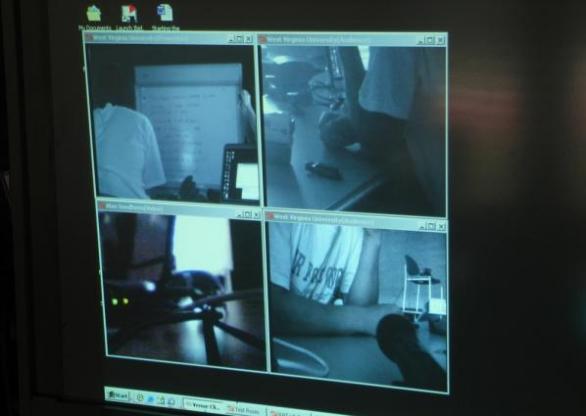
M: Although you are included in an exhibition in a physical space here the vast majority of your output has been presented on the net, usually in the context of one or more mailing lists. Could you say a bit about this. Was this a conscious choice or pragmatism or somehow both? Is there anything you particularly prize about the rhythm of work and presentation that comes with this kind of platform and has the eclipse of many of the old mailing lists with the rise of social media caused problems for you – have you tried to adapt to/utilise these newer modes?
A: It’s pragmatism combined with a desire to explore; edgespace teeters uneasily and tends towards what I call blankspace, where the imaginary exists – for example, the ‘heere bee dragonnes’ in unknown areas of early maps (I haven’t actually seen the expression, but it serves here). I present my work on Facebook and G+; I also used YouTube for a long time until I was banned from it.
M: Banned from it?
A: A long story that would take this too far afield…
I work well in presentation/talk/performance mode online and off. I believe in the depth of email lists of course. I do think my avatar work is really well suited to gallery spaces; I’ve had up to seven projections going at the same time. I’ve also performed live in virtual worlds or mixed-reality situations which are projected/presenced directly, and for a long time Azure Carter, my partner, and I worked with the dancer/performer/choreographer Foofwa d’Imobilite; the physicality of the work was amazing. And another aspect of what I do – what grounds me – is playing musical instruments, mostly difficult (for me) non-western ones; the instruments require tending and close attention. I tend to play fast. Most of them are strings, bowed or plucked; the music is improvisation. Recently I’ve been focusing on the sarangi, for example. And I’ve had something like 17 tapes, lps, and cds issued; the most recent is LIMIT, which was done in collaboration with Azure and Luke Damrosch, who did Supercollider programming based on concepts I’ve had about time reversal in real time – an impossibility in gamespace, but the edgespace is fascinating. The music products excite me; they’re out there in a way that my other work isn’t.
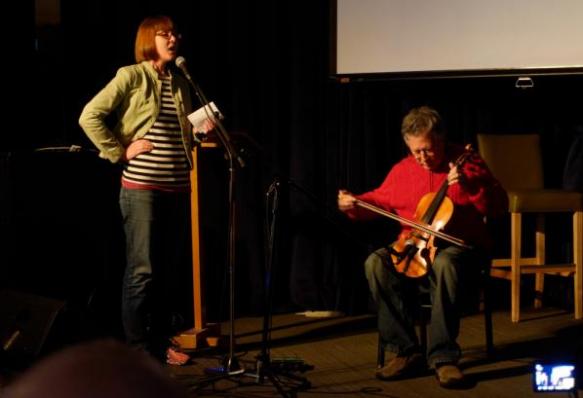
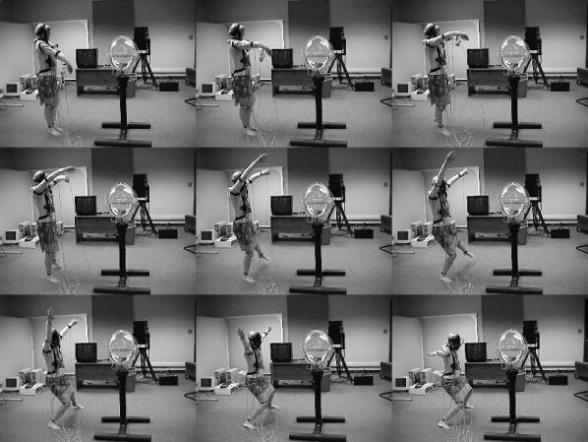
M: I remember when I first discovered internet art or whatever we want to call it (and there have been numerous quasi theological arguments about this) that there was an intense debate about whether the internet was a conduit or a medium – so many artist-scripters/programmer tended to rather look down on those who simply took advantage of the network’s distribution and dialogical properties (although I have to say that my view is that it was in this massive extension of connectivity that the real force of the thing resided – I remember being told in 2001 that moving image was not internet idiomatic which is amusing given the rise of YouTube &c.) Your work, certainly of the last 17 years or so, strikes me as being intimately tied up with the network and with the unfolding possibilities of new media but not necessarily in the sense that you work with the network itself to make objects, works and more in the second sense of the conduit…
A: It depends; for example one of the projects I initiated through the trAce online writing community in 1999-2000 – over the hinge of the millennium in other words – was asking a world-wide group of artists, IT folk, etc., to map traceroute paths and times from the night of 12/31 to the afternoon of 1/1; the internet was supposed to run into difficulties – over timing etc. – and I wanted to create a picture of what was happening world-wide. A second project somewhat later was using the linux-based multi-conferencing Access Grid system to send sounds/images/&c. from one computer to another in the Virtual Environments Lab at West Virginia University – but these images would travel through notes, much like the old bang!paths, around the entire world. So, for example, Azure would turn her head in what seemed like a typical feedback situation – the camera aimed at a screen, she’s in front of it, the result’s projected on the screen, &c. – but each layer of the feedback had independently circled the globe (through Queensland to be specific), creating time lags that also showed the ‘health’ of the circuit, much like traceroute itself. It was exciting to watch the results, which were videoed, put up online with texts &c.
Part of the difficulty I have is being deeply unaffiliated; I need others to give me access to technology. For example, I’ve used motion capture in three different places, thanks to Frances van Scoy and Sandy Baldwin at WVU; Patrick Lichty at Columbia College, Chicago; and Mark Skwarek at NYU. I also did some augmented reality with Mark, and with Will Pappenheimer. To paraphrase, I’m dependent on the kindness of others; I have no lab or academic community to work among in Providence; what I do is on my own. John Cayley gave me access to the Cave at Brown; Eyebeam in NY (I had a residency there) gave me space and equipment to work with, and in both places I was able to create mixed reality (virtual world/real bodies) pieces – those also bounced through the network…
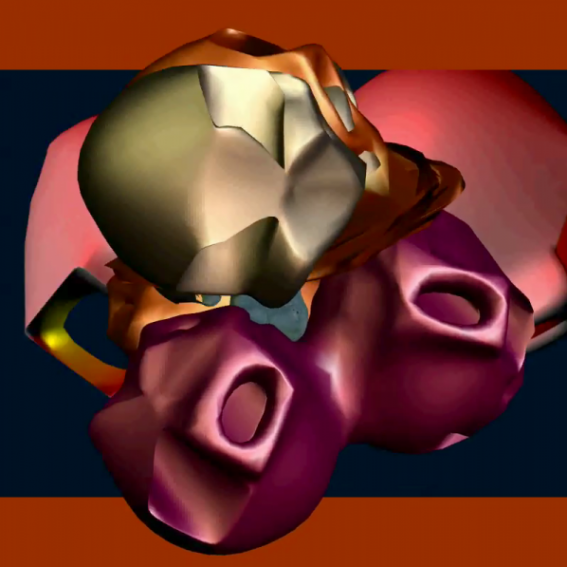
M: Could you talk, then, a bit about the motion capture/avatar work that seems to have been central to what you are doing over the last ten years or so. I also don’t think I’m mistaken in detecting a very decided move back to music making of late (I know this has always been there but it feels foregrounded again)
A: The mocap work has been ‘deep’ for me; it involves distorting the entire process, in other words distorting the somatic world we live in. There are numerous ways to do this; the most sophisticated was through Gary Manes at WVU, who literally rewrote the mocap software for the unit they had. I wanted to create ‘behavioral filters’ that would operate similarly to, say, Photoshop filters; in other words, a performer’s movement would be encoded in a mocap file – but the encoding itself during the movement itself, would be mathematically altered. Everything was done at the command line (which I’m comfortable with). The results were/are fantastic. A second way to alter mocap is by physically altering the mapping – placing the head node for example on a foot. But I worked more complexly, distributing, for example, the nodes for a single performer among four performers who had to act together, creating a ‘hive creature.’ All of this is more complicated than it might sound, but the results took me somewhere entirely new, new images of what it means to inhabit or be a body, what it means to be an organism, identified as an organism. This is fundamental. I’m interested in the ‘alien’ which isn’t such of course, which is blankspace. (The alien is always defined within edgespaces and projections; we project into the unknown and return with a name and our fears and desires.)

Most of what I do, for me all of what I do, is grounded in philosophy – ranging from phenomenology to current philosophy of mathematics to my own writing. So these explorations are also artefactual; I think philosophy is far too grounded in writing as gamespace; writing for me, when it’s touched by the abject, the tawdry, the sleazy, the inconceivable, opens itself up.
As far as music goes, I touched on it above in regard to LIMIT. One thing that concerns me is speed, playing as fast as possible, so that the body and mind move on de/rails that are at my limits; I think of this as shape-riding and the results and internal time dilations involved keep me alive…

M: You are genre/practice/technique promiscuous and you have a high level of skill in all –you could equally (and have been) styled Alan Sondheim ‘writer’ , Alan Sondheim ‘musician’, Alan Sondheim ‘maker of moving image work’ (with a marvellous sub-category ‘Alan Sondheim ‘maker of dance related video works’, for a while). Is one of these, in your heart of hearts, central, and, whether this is so or not, how do you place yourself in respect to the various traditions around these areas of work. How do you fit into the art world, into literature or the experimental film tradition? How do you relate to net art/networked art/new media &c.?
A: I don’t seem to fit into the artworld, net art, poetry world, music world &c. – it’s difficult for me to get my work around as a result. Nothing is central but a desire to see how systems form, coagulate, degenerate, collapse, become abject, &c. in relation to consciousness: How are we in the world? On a concrete level, finance enters into the picture; what can I do given a kind of lack of community around me? How can I push myself?
I’m not sure what ‘net art’ is, but certainly the Access Grid pieces &c. are of that, although not of Web-based protocols. There are so many ports out there to use! I do think of myself as a new media artist or someone burrowing into post-media. I’ve always had a few people who believe in what I do, who have helped or worked with me, and I’m really grateful for that. But in terms of institutions, I feel like an outsider artist and am treated like one. It came to a head for me years ago one day when I was living in Soho; I had a call from Vito who said he had realized that whatever I am, I’m not an artist; the same day Laurie Anderson spoke to me and said she realized that whatever I am, I am an artist. So my identity has been far more fluid than I’ve been comfortable with, and it’s affected my career. (There was that tape Kathy Acker and I made 1974, and I read an interview a few years ago, forget the source, with Edit Deak who said the tape wasn’t art at all; in the meantime, it continues to be shown at various venues.)
M: Finally, could you say a little about the work in this particular show?
A: The work in the show is a group of 3d-printed avatars distorted through the mocap process described above. For me they connect, deeply, with charred bodies, with anguish, with genocide and scorched earth. They appear also in number recent videos created in various virtual worlds, moving/performing etc. The anguish, so close to death and unutterable pain, is there. I’ve talked about the kinds of brutal killings occurring now worldwide, from Finsbury Park to the United States, the rise, not only of racisms, but violent nationalisms, in the U.S. certainly encouraged by the present regime. I’m sick of it. We all have nightmares. I want to understand this, this grounding in the blooded earth that shakes our very ability to speak, to think, to act.
And yet of course we must resist.

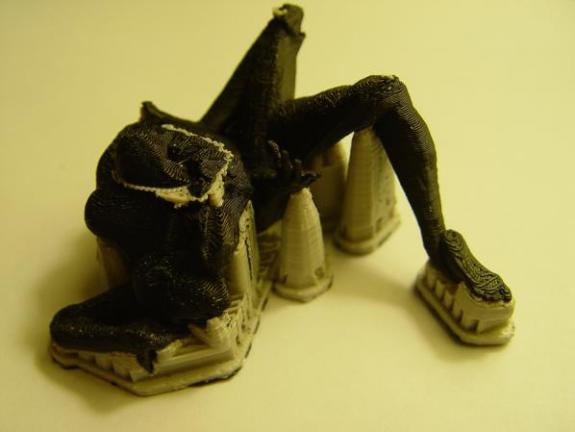
The work in the show is also critical, then, of technophilia, technological answers to the world, utopian dreaming. The top one percent benefit most from the results. I see utopian thinking as dangerous here. Our so-called president has his finger on 4000-5000 nuclear warheads. That’s the reality for me, and why I don’t sleep at night.

Michael Szpakowski: 聽琴圖 (listening to [Alan Sondheim playing] the qin), after Zhao Ji
// gravure, urushi lacquer & pigment on found wood // 30.5X7.5″
When Charlotte Webb asked me to write a piece about the future of work for Furtherfield, I immediately thought about Utopoly. Even though this game doesn’t directly discuss how we will be employed or occupied in the future, it creates a rare space where people can re-imagine a different society in which values, forms of exchange and social relations are reconsidered and reconfigured.
To better understand the ethos behind Utopoly, I interviewed Neil Farnan, who is currently undertaking a PhD at University of the Arts London with the research title ‘Art, Utopia and Economics’. He became an Utopoly advocate, introducing many ideas and concepts featured in its current iteration. Neil’s interest in designing a utopian version of Monopoly was initially shaped by his previous studies in User Interface Design, where he developed an interest in Scandinavian design practice and Future Workshops.
Francesca Baglietto: What is Utopoly? More specifically, how does it relate to and differ from Elizabeth Magie’s original version of Monopoly?
Neil Farnan: Utopoly is both a tool for utopian practice and a fun game. It draws on Robert Jungk’s Future Workshop methodology to re-engage people’s imagination and ideas for a better society and incorporates the results into a ‘hack’ of Monopoly.
Elizabeth Magie’s original game (1904) was intended to show how landlords accumulate wealth and impoverish society. Players could choose either a winner takes all scenario or one where wealth was distributed evenly via a land tax. Magie also hoped that children’s sense of fairness meant they would choose the latter and apply these ideas in adulthood. But the Monopoly we have today normalises and celebrates competitive land grabbing and rentier behaviour and Magie was airbrushed out of history and replaced with a more acceptable mythology of the American Dream.
Whilst Magie’s game informed players about the current situation, Utopoly gives people the opportunity to imagine and incorporate values and attributes they would want in a more utopian world. Players are able to determine the properties, the chance and community cards and even rules of the game. The rules being determined by the players means the game is a work-in-progress, however some features that work well can get adopted and carried through to the next iteration.
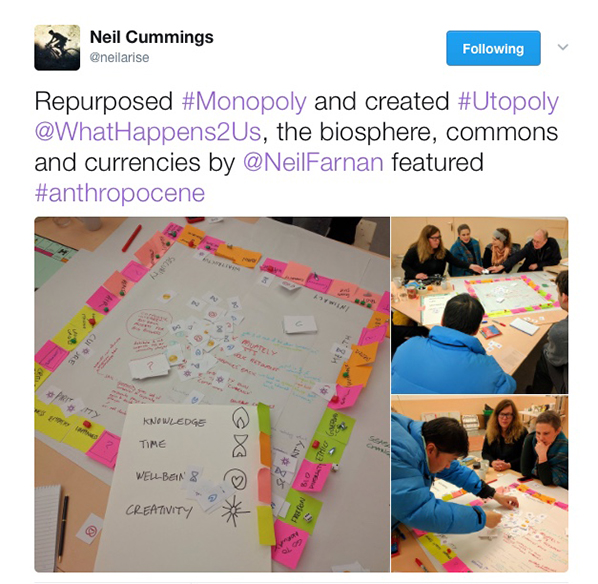
FB: As you just said, Utopoly doesn’t have a definitive form and rules but changes with each interaction. So, while the future of Utopoly is still in progress, what I would like to know is who started the project and how has this evolved so far?
NF: Critical Practice, a research cluster at Chelsea College of Arts, played a central role. We were concurrently developing both Utopoly and an event #TransActing – A Market of Values, and the current version of Utopoly is a synergy of aspects of these two projects. The first ‘hack’ of Monopoly occurred at Utopographies, co-organised by Critical Practice (28th – 29th March 2014), where the elements of the game were redesigned to incorporate utopian values. Inspired, we decided to continue developing the ideas and a second ‘hack’ took place (December 2014). Some of the ideas and values that emerged from this iteration fed into and were represented in the design of the currencies used for #TransActing. A further opportunity presented itself for another ‘hack’ within the research event ‘What Happens to Us’ at Wimbledon College of Art. This iteration was hosted by Neil Cummings and I was invited to include the currencies developed for #TransActing. It was here that Utopoly as a ‘method’ began to emerge, a method for collectively producing possible futures. I have since convened a number of iterations using a large laminated board to facilitate design adaptations and ease of play.
Additionally, researchers from the international ValueModels project (modelling evaluative communities utilising blockchain technology) recently visited Chelsea – we played Utopoly and they loved the method. They have since been inspired to use Utopoly in their research, and I’m excited to receive their feedback on how their version develops.
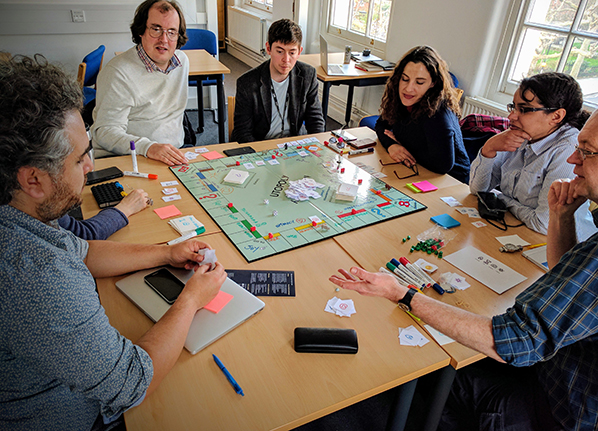
FB: Utopoly is experimenting with possible new monetary ecosystems in which multiple currencies and values might be exchanged. How might these currencies work and what are they inspired by?
NF: The currencies developed for #TransActing generated the concept of an ecosystem of value exchange and these are used in Utopoly. I have since come across the work of economist Bernard Lietaer, who highlights the problems of mono-currency economies and advocates for a monetary ecosystem using multiple currencies. With their origins in subjugation and taxation, mono-currencies are tools for value extraction. They also contribute to cycles of boom and bust, resulting in the withdrawal of money from the economy and the prevention of economic activity. Historical evidence suggests that economies operating multiple currencies are more resilient – they work in a counter cyclical manner compensating for this withdrawal and allow the economy to keep working.
The irony of Monopoly is that the winner is ultimately left in control of a non-functioning economy. A more preferable state would be to have a healthy flow of values in balance where people are able to exchange their contributions in a mutually beneficial way. A feature of Utopoly is that players no longer seek to own all the property but work together for the common good. The currencies are used to bring privately held properties back into the commons. The economist Elinor Ostrom won the Nobel prize for debunking the myth of the “tragedy of the commons” (Ostrom, 2015) demonstrating the benefits and effective use of common resources. Utopoly also allows economies of gifting and sharing.
I am currently working on ways of modelling innovations such as the blockchain and associated digital currencies.
FB: How would you interpret “work” in this utopian economy? For example, do you think the relation between paid work and unpaid work and/or people’s dependence on employment might be shaped in an ecosystem in which assets/values are brought into the commons to generate value/wealth for all?
Whilst not directly about work, Utopoly reflects the future nature of wealth and values in a Utopian economy. It touches on the current abstract separation of paid work from non-paid work and people’s employment dependency.
In Magie’s original game the players collect wages as they pass ‘Go’. They then buy properties and accumulate wealth extracted from other players. On one corner of Magie’s game is the Georgist statement “Labor Upon Mother Earth Produces Wages”, reminding us that land ownership should not provide unearned income.
As an economy develops people become less self-sufficient and more dependent on employment to meet their needs and a mono-currency makes the separation of paid and unpaid work even starker. The social contract that existed from 1950-70s where employers had a responsibility to their employees is disappearing. Outsourcing, short term and zero-hours contracts make the future of paid work increasingly precarious, and we also face further threats from automation and artificial intelligence.
Economist Mariana Mazzucato (2011) documents the substantial contribution of public investment to the success of today’s businesses. These businesses stand not so much ‘on the shoulders of giants’ but on the shoulders of a multitude of diverse contributions from society at large. A new social contract is needed to take this into account.
Fintech companies make much of the term ‘disintermediation’, but we also need a new form of ‘intermediation’ where contributions are reconnected and recognised. An ecosystem of currencies which register currently unpaid valuable activities together with a basic income could meet this need. This approach is suggested in Utopoly where people collaborate to contribute values and are valued for their contributions. The properties are brought into the commons to generate value and wealth for all.
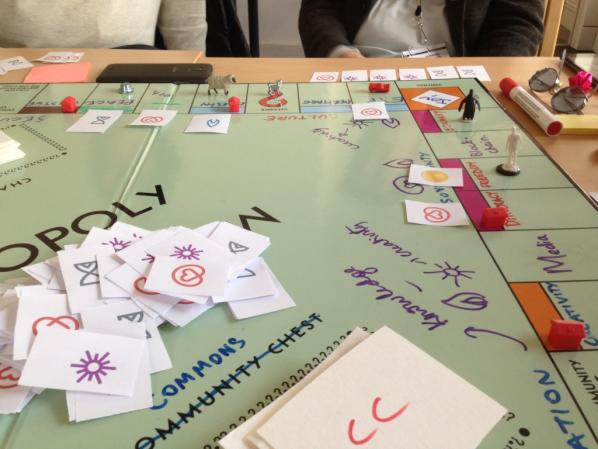
FB: Playing seems to provide a very rare space in which, by operating in an interstice between reality and fantasy (what the psychoanalyst Winnicott called a transitional space), it is still possible for the players to imagine alternatives to our current economic system. Would you agree that the main political purpose of Utopoly is to provide such a space in order to reopen the capacity to be imaginative about economic and societal organisations?
NF: This is the utopian aspect of Utopoly, using people’s imagination as a means of prefiguring the future. We endure in a society where the mainstream orthodoxy would like us to accept that ‘there is no alternative’. One of the last great taboos is money and the associated economic system. If you consider our mono-currency as a societal tool imposed from the top down, it shapes and informs how we behave and the values we are expected to live by. In a way, it is like DNA; if we can change the DNA of our economy we could create new exchanges, values and social relations. We have become so used to this abstract construct that it is the water we swim in and the box we need to think out of. In order for people to start thinking that another world is possible we need to open up a space for imagination to play out. Art, games and play are some of the few remaining arenas available to engage in speculation about the future. Utopoly fulfils many research functions including acting as a tool for inquiry and reflexion, and a means of modelling future possibilities. It is rare for people to have the opportunity to criticise the existing state of society and work out how to reshape it. By allowing people the space to consider different approaches we can start to encourage better societal norms of exchange and interaction and construct new social contracts.
In 2011, Rachel Clarke and Claudia Hart co-curated The Real-Fake, a post-media exhibition engaging art made in synthetic spaces, shot with virtual cameras, and emerging from “other spaces” like code-space and biotech. In 2016, Clarke and Hart together with Pat Reynolds updated the show at the Bronx Artspace, with over 50 artists working in immersion, virtuality, game space, digital photography, and so on. Two months after the launch of real-fake.org, and in the first month of the US Trump presidency, which could be argued as the first presidential campaign simulated in Baudrillard’s terms, Claudia Hart and I talk about what “real-fakeness” is, how it arrived as an art notion, and how it has informed two exhibitions.
PL: What, in your mind does the show represent as an expression of contemporary culture?
CH: The Real-Fake remake opened on November 19, slightly after the election. I was actually in the air when Trump won, landing in Bucharest, several hours later. The culture there is still overshadowed by the history of the totalitarian regime of Nicolae Ceaușescu. The contemporary art museum actually sits in a corner of his Palace of the People, which was built in the style of WWII Italo-fascist Neoclassicism. The whole experience was ominous and frightening in relation to the autocratic, punitive Trump. I began obsessively tracking “fake news”, both because of its relationship to the kind of propaganda used by the Trump/Bannon team to hijack the presidency, but also because of the hacking of the democratic party and collusion of the Republicans with the government of Vladimir Putin.

In both the 2011 and the 2016 versions of the Real-Fake exhibition, we tried to deconstruct, for simplicity’s sake, what I’m now calling “post-photography”, or what Steven Shaviro termed as the “Post-Cinematic.” This relates to digital simulations of the real made with current technologies of representation and post-mechanical reproduction. Post Photography can be defined by what it is NOT in relation to everything documentary and verité about photography. It suggests a radical paradigm shift with significant cultural ramifications. Post Photography does not purport to “slice” from life, but rather is a parallel construction of it, numerically modeled with the same techniques used by scientists, and also by the game and Hollywood special effects industries. The artists working with it all use specialized compositing and 3D animation software. But instead of capturing the real in an indexical fashion, Post Photography artists use measured calculations to simulate reality.
Our deconstruction of the post-photographic real-fake was made in relation to cultural myths about the truth, through viewing the work of 50 artists. They are all part of a larger community acutely aware of the implications of using a computer model of the real as opposed to traditional capture technology. The issues implied by this choice have obviously been made manifest at our own historical juncture, when the culture of science and climate-change deniers rule America. The manufacturing of fake truth in the form of misinformation and ubiquitous infotainment are now profoundly epic.
I’m currently reading Gabriella Coleman’s Hacker, Hoaxer Whistleblower, Spy: The Many Faces of Anonymous (Verso, 2014) a history of hacker culture related to both the esthetics of “Real-Fakeness” and also the actual milieu that it emerged from. I’m inspired at the moment by that book, and the brilliant essay “Tactical Virality” by Hannah Barton (Real Life, February 14, 2017) because they’ve helped me to articulate what I now feel is the relationship of The Real-Fake to our current cultural and political quagmire. What excited me about the Barton article is that she finds language to talk about the fake news, meaning in larger terms, the fake media strategy so successfully implemented by the Trump/Bannon team. Both of these men are fake-media production experts, and individually built lucrative empires with their expertise. Fake news is a product, and one can trace its lineage from the first alt-right radio flamers, through Fox, Breitbart and now, embodied in the personage of Steve Bannon, straight into the oval office. Fake news is a semiotic morph, a kind of hybrid of advertising and spectacular entertainment covered by a gloss surface of “news” or facts, that can be output in a range of forms from talking-head news commentators, to pseudo down-and-dirty cinema verité documentary. It is a knowing contemporary version of propaganda, and in fact, as reported by Joshua Green in Bloomberg Politics in 2015 even, in a chilling profile of Steve Bannon (https://www.bloomberg.com/politics/graphics/2015-steve-bannon/), Andrew Breitbart himself called Bannon out as “the Leni Riefenstahl of the Tea Party movement.”
So, with Bannon/Trump, we have entered into a paradoxical social-media semiotic in which that which most strongly resembles what Stephen Colbert dubbed as “truthiness” must be suspected as being the biggest lie.
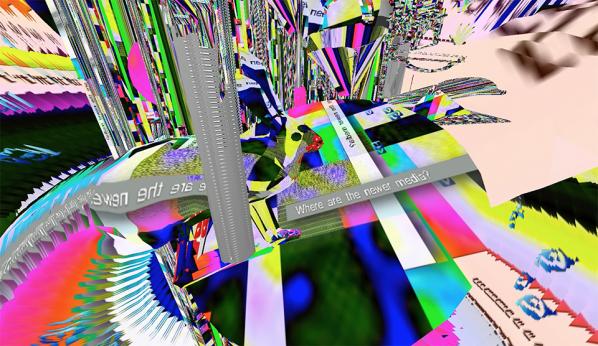
PL: And to focus this back to art, perhaps what we might say is that instead of Picasso’s axiom of artists telling lies to reveal the truth, to make a fake “real” is to go through the machinations of media manipulation that Robert Reich talked about, like pulling the media in and driving conversation until it’s “almost real.” Maybe that’s the quality of “Real-Fakeness,” or even “Fake-Realness” (to do a structural inversion). And with “Simulationists” as we are, and postinternet artists, perhaps veracity and verisimilitude aren’t the point anymore. Maybe it’s just what’s in the boxes and “teh netz”.
CH: Exactly. All of these players are deploying the representational tactic of structural inversion, one of the techniques used to grab audience attention and leverage in the Internet media economy. Bannon’s professional canniness in rerouting the attention economy into fake news, was that flaming mis/information could be sold as a very lucrative attention-economy product. Likewise Trump made a fortune within this economy. Both are experts in the tactics required to make a thing go viral, in hacking the media/entertainment system for maximum clicks. Their approach obviously works. And you can see this in some of the work in the show.
PL: Jean Baudrillard famously wrote about the simulated image in media culture that finally is believed to supplant the Real, i.e. “The Desert of the Real”. Do you think this is where we are with the notion of “Real-Fakeness”?
CH: Tactically viral fake news resembles the Situationist practice of détournement – what Barton called “virtuosic prank-like acts designed to turn expressions of the capitalist system against itself.” This impulse lurks behind most of the hacker culture that Gabriella Coleman documented. Even with the most sincere and political of intentions, hacker culture denizens share a position of deep Duchampian irony. Hackers are all, more or less, in it for the lulz – a kind of dark, aestheticized Nietzschean “lol” which injects noise as agents of chaos, being much different than tactical artists who fight the system. This darkness characterizes a time in which artists and cultural commentators routinely meditate on how one might psychically navigate the end of civilization, for example Roy Scranton’s brilliant Learning to Die in the Anthropocene,” (CIty Light Books, 2015) and the Morehshin Allahyari /Daniel Rourke 3D Additivism project that I feel so profoundly connected to.
And in case of point, Morehshin is a “real-fake” artist.
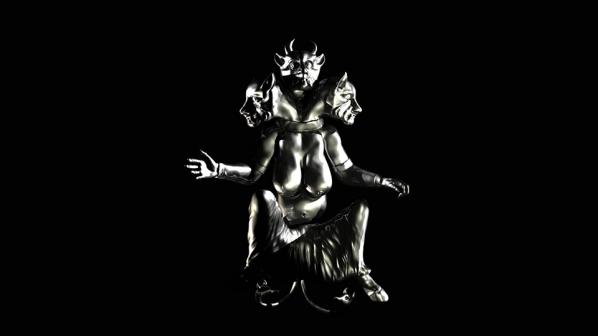
PL: I have a lot of support for it, too. I think that projects like 3D Additivism are really significant on so many levels, as things like tactical aesthetics, media art, and criticism lend themselves to collective projects. I mean, most likely more than half of my work and collaborations are collective; RTMark, Terminal Time, Yes Men, Second Front, Pocha Nostra, Morehshin’s My Day Your Night project with Eden Unulata… It just seems that these areas of work build community, and that’s something I’ve always believed in. 3D Additivism really addresses critical aspects of the explosive nature of digital making, its pitfalls, and how to deal with these Anthropocene issues through the problematics of the very technology that it critiques. That’s the issue with ”real-fakeness”; it lives in this tactical center where it’s by necessity earnest, yet ersatz at the same time, kind of like Dubai.
CH: Exactly. What this specifically means in terms of the work we exhibited was that it routinely coopts strategies of representation often found in advertising slogans, media products and propaganda, to serve an alternative agenda – sometimes to propose a ludic reality and sometimes to propose a more utopian one as opposed to the dystopic one of Fake News. This is the premise of REAL FAKE art, and is related to the Simulations discourse of Baudrillard.
PL: And then the Real-Fake artist takes the Real, verisimilitude, and détourns it into sets of aesthetic tactics that reframe the nature of the work itself, radically shifting its art historical context.
CH: The approach of the artists in the Real-Fake is the tactic of détournement that the Situationists introduced in the late 1950s and 60s. They were also countering a reactionary Cold-War culture, ironic in terms of Trump’s oligarchical relationship to Moscow. The idea of Situationist détournement, which is so connected to the ideologies and tactics of hacker culture, is to irritate conservative, Capitalist hegemonic power. I mean YOU were part of The Yes Men, and détournement strategy was very influential to that group. The tactic of détournement tweaks entrenched bureaucratic power structures … there is nothing intrinsically political about it in itself. It’s a kind of publicity stunt, a way of grabbing media attention and thumbing one’s nose at the powers that be. It is the posture of the trickster. To quote Barton, détournement “can be reduced to an ideologically flexible logic of inversion and appropriation.”
PL: Right. And this relative, flexible set of significations inevitably creates paradoxes and contradictions that hegemony/Deep Power/the Superstructure can’t process.
CH: In real-fake simulations, the détournement is of representations that are “impossible” – that appear both real and unreal at the same time, being inherently uncanny in the Freudian and Mori-an sense – both dead and alive simultaneously, it is a paradoxical state in which opposites collide. What happened in the prelude to the 2016 US presidential election then is that is that pro-Trump fake news, advised by Bannon, tactically assumed that position by playing the “outsider’ card, and pantomiming resistance. However, we all know they simultaneously bequeathed the benefits of it onto a gang of billionaire plutocrats – the richest oligarchs and corporate leaders in the world. They seized the power of the news media, itself already perceived by the masses as truthy “information,” which this oligarch gang, for the most part, owned (Fox News for example, is owned by the rightist Rupert Murdoch). It was done to further consolidate power and seize the government. They then staged a “return of the repressed” (or the emergence of a new ‘oppressed’), for the Trump “base” – a fringe hate-mongering hyper-aggressive “wrestling” culture to borrow from a related ethos. This demographic was duped into believing that they were speaking their truth to entrenched liberal governmental power, although they were actually being used and manipulated as mouthpieces of a feudal corporate bloc who by then had completely co-opted the federal government. Videos of this radical fringe were then recorded to flame hate and racism, opening Pandora’s Box for white Middle Americans to enact similar cultural forbiddens that had been oppressed by the corporate institutional repression of “Political Correctness”: sexism, racism and religious xenophobias. Hate was linked to the First Amendment, and it unified Trump supporters, and Fake News coopted Yes Men tactics to oppose the Left, the strategy of détournement. But as was recently said, détournement is not ideologically married to the Left, and yes, this is where we are at right now. The question at this time is if we can re-take these strategies to take some power back.

PL: On the other hand, Western society is confronted with the notion of Fake News, “Alternative Facts”, and the like. Again, I will draw on Picasso saying that artists tell lies to reveal the truth. Do you think this is the difference between “Real-fakeness” and “Alternative Facts”, which are propositions that willfully try to obscure reality for their own ends?
CH: In her article, Gabriella Barton analyzes how fake news manages to go viral. Our current media ecosystem, the one in which fake news played out during the election, is a fluid information economy in which stories bring together groups on the basis of group identity around their positions. These need not have any relation to fact…they are actually reflections/inversions of ideologies, and can be thought of as contemporary mythologies in the sense of Roland Barthes. That’s structurally how fake-news is used to manipulate the populace, and how the populace makes certain fakeries go viral. In the culture of social media, where clicks are king, people create their identities by associating themselves with “links” to such media mythologies, pseudo info bytes that resemble information and news, in order to associate themselves with whatever community they identify with.
Barthes’ 1957 Mythologies examined our tendency to create versions of myths from the ubiquitous media that surrounds us. Trump/Bannon came to the same conclusions as Barthes, though doubtfully by reading him, surely as a result of their first-hand experience as media-moguls. They’ve pushed Barthes’ insight to its ultimate conclusions, creating fictional mythologies that simulate information as news in order to build their community. This community is ultimately nihilistic, and is unified primarily by their fear and an anxiety about the loss of their white dominance in an emergent, global post-industrial culture. The Trump/Bannon team built their base, giving them material to construct individual identities by viralizing propaganda and simulated information.

What I’d like to propose alternatively is that now as media artists specifically, we can similarly build mythologies not of authoritarian dominance but of resistance. For example: I love Catwoman! I find her to be an emotional paradigm symbolizing resistance. I wish I had invented her myself. I wish I was her! I’d like to propose to contemporary media artists that they perform alternative mythological identities of resistance created in the space of public media, as a means of creating community. I believe in community and believe it’s only through community that we can drive a wedge into autocracy. I think we can use media to mythologize emotional truths of resistance, Barthean mythologies that are more communal and constructive, to inspire activism and resistance.
Perhaps Trump will implode eventually. Since he’s seized power, he’s made many references to fake news in tweets. To quote Barton again:
This is tactical virality now reified as strategy by a sitting administration defending the executive branch’s power. In his Twitter performances, incoherence has become a coherent approach, seeking to pre-emptively absolve Trump of accountability.
So, in response, I’d like to believe that, if we follow Barthes’ thought to its logical extreme, Trump is now inverting his own inversion, a reification and draining of his own mythological power. Then, if the Goddess is on our side – he folds in upon himself!
PL: Do you think what we are doing with “Real-Fakeness”, Simulationism, and the like is sampling reality as a medium, a toolkit?
CH: Yes! I hope! I’m a simulations artist and real-fakeness is my tool. I hope that with it we can both inspire resistance and build an alternative world. Aside from lending my body to street manifestations and calling my congress-people, it’s what I can do now.
PL: How does all of this express itself in your work, and how do you feel you speak to the simulated spirit of the times?
CH: At the moment I’m developing several projects, post-Trump. The one that is most relevant to this converstion is The Beauty of the Baud, that I’m working on with LaTurbo Avedon – the virtual artist living only in the spaces of social media – meaning Facebook, Instagram, Twitter, Tumblr. She also is the curator of Panther Modern, a museum that also only exists virtually, exhibiting the post-photographic documentation of the exhibits that happen there. LaTurbo invites artists who work with VR software to create shows, offering each a room in her museum. She then displays simulated documentation of them at panthermodern.org.
Since 2007, I’ve developed a curriculum at the School of the Art Institute of Chicago, called X3D, a group of 8 classes that work with simulations technologies in the context of post-photography and experimental media. The Beauty of the Baud is a project led by LaTurbo Avedon and I in collaboration with one of those classes, my Experimental 3D 2017 class.
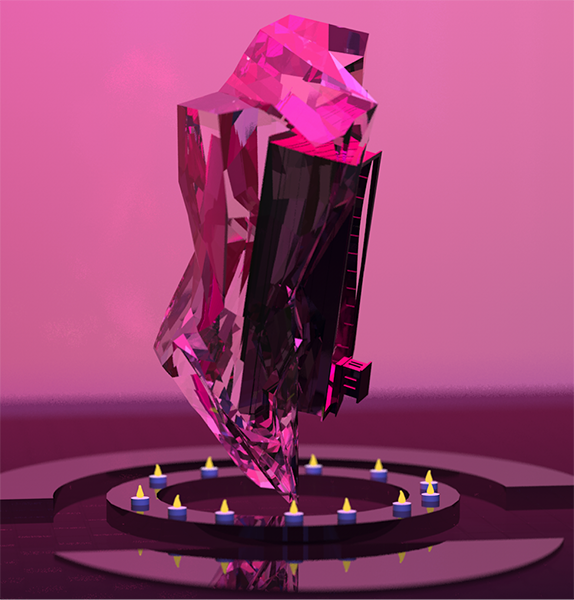
LaTurbo built “Room 17,” a special Panther Modern exhibition hall, to show works created by my Intro X3D class, a group of 14 Art Institute students using simulations software for the first time. Acting as both guest critic and curator of the first Panther Modern group exhibition, she is choosing 14 works, one from each student, out of a selection of renderings of solo shows, each produced for Room 14, The Beauty of the Baud room, inside Panther Modern. The whole thing is conceived in relationship to the 30th birthday of The Hacker’s Manifesto. We are also reading the Coleman book, and discussing it as we go.
The Beauty of the Baud will be shown online, in Panther Modern in May, 2017. Then a portfolio of archival prints of the computer-model images will be offered for sale, all proceeds from it donated to either international immigrant assistance, inner city education or climate research – my students are debating which among themselves even now. Both an exhibit in “real” as well as “virtual” life, The Beauty of the Baud will include the student portfolio, plus conceptually related works by LaTurbo Avedon and I, and will geographically be situated in Bucharest – the city that inspired me to go down this route in the first place- with the Romanian curator Roxana Gamart in her Möbius gallery. She is in conversation with several institutions there as well, and we are working on something for that context.
I’m very psyched about the Beauty of the Baud. It’s helping me to process it all. As an artist, at this moment in time, I’m afraid it’s the best I can do.
The productive alliance between instruments of computing techne and artistic endeavour is certainly not new. This turbulent relationship is generally charted across an accelerating process outwards, gathering traction from a sparse emergence in the 1960s.[1] Along the way, the union of art and technology has absorbed a variety of nomenclatures and classifiers: the observer encounters a peppering of computer art, new media, Net.art, uttered by voices careening between disparagement, foretelling bleak dystopian dreams, or overflowing with whimsical idealism. Once reserved for specialist applications in engineering and scientific fields, computing hardware has infiltrated the personal domain.Today’s technology can no longer be fully addressed through purely permutational or systematic artworks, exemplified in 60’s era Conceptualism. The ubiquity of devices in daily life is now both representative and instrumental to our changing cultural interface. Technologies of computing, networks and virtuality provide extension to our faculties of sense, allowing us phenomenal agency in communication and representation. As such, their widespread use demands new artistic perspectives more relentlessly than ever.
I, and no doubt many other academic observers, watched the Pokemon Go augmented reality (AR) game erupt into a veritable social phenomenon this year. The rapid global uptake and infiltration of AR in gaming stands in contrast to new media arts, still subject to a dragging refractory period of acceptance and canonization. Perhaps this is emblematic of a conservative art world that persistently recalls an ebullient history of computer art practices. In this lineage, many a nascent techno-artistic breach has been accused of deliberate obfuscation, of cloaked agendas under foreign (‘non-art’) orchestrations.[2] The seductive perceptual forms elicited through augmented reality (AR), virtual reality (VR) and immersive reality (IR) devices can be construed as mere spectacle, vulnerable to this type of critique. “Google Daydream” and “HoloLens” chime with a poetic futurism; cynics might instead see ready-to-wear seraphs veiling the juggernauts of Silicon Valley. However, the current groundswell in altered reality discourse may signal a divergence from such skepticism. One recent exemplar is Weird Reality, an altered reality conference that aimed “…to showcase independent and emerging voices, creative approaches, diverse and oftentimes marginalized perspectives, and imaginative and critical positions…. that depart from typical tech fantasies and other normative, corporate media.”[3] This is representative of the expanding, international trend towards artistic absorption of new media and technologies. It is a turn that emphasizes the potential for cultural impact, experimental daring, and even conjures the spectre of the avant-garde: radical transformation.
One of my PhD supervisors wisely admitted “…to stand out, the human artist must be more creative, diversified and willing to take aesthetic and intellectual risks. They can and must know the field they are creating in practically and philosophically, and confidence in their position and contribution to it is essential.”[4] Through this earnest lens, artistic production can serve as a conduit for ideas ranging from the speculative to the revelatory. In these divinations, we might trace a path through the sprawl of new media discourses, and find ourselves somewhere unexpectedly revitalizing. I hope to mark out some of this territory from a position of mediation. I want to invite art and art theory into an arena of uninhibited collusion, using critical writing to facilitate the exchange between digital media theorists and artistic practitioners in the most open sense. Furtherfield.org offers an allied platform for the aims of the Theory, Meet Artist [5] project, articulated here in an interview dialogue.
Originally published in The Fibreculture Journal, Edwina Bartlem’s 2005 article Reshaping Spectatorship: Immersive and Distributed Aesthetics proposes that immersive artwork practices have transformative potential. Across a range of modalities, these works can influence perceptions of ourselves and our extended digital presence in a variety of scenarios and configurations. Whilst participating in such practices, we are prompted to consider IR encounters as form of mediation around our human embodiment, subjective identities and cultural interactions. Bartlem touches on ideas of prosthesis and sensorial augmentation within these immersive experiences. Creation of a synthetic environment is posited as an opportunity for deepened self-reflexivity and awareness.[6] In parallel, a spectrum of narratives around the technologically adapted ‘post-human’ emerge. Their tone and reception hinges upon the artist’s individual performance in roles such as programmer, director, composer or overseer to such works.
Rachel Feery is an Australian artist interested in the intersection of visual art, soundscapes, video projection, experiential installations and technology. Her artistic practice explores alternate realms, the meditative headspace, ethereal imagery and immersive environments. For this interview, Bartlem’s paper is positioned alongside and in dialogue with Feery’s work, Clearing the Cloud.
Clearing the Cloud is described by the artist as “… a multi-sensory work inviting pairs to cloak-up, complete a circuit, and experience simultaneous mapped projections visible through a hooded veil. The artwork aesthetic draws from esoteric sciences and holistic health practices. The environment is intimate, quiet much like a room where one would go to receive therapeutic treatment.
Two participants at a time are invited to cloak up, remove their shoes, and step onto sensors on the ground to generate a circuit of light and sound. Starting with a ‘personalised scan’ followed by a projection of light and sound, all visible and audible within the suit itself, the individuals can either interact with each other or be still and silent. The robe, constructed of a semi-translucent, lightweight fabric with a soft skin-like texture acts as a supplementary skin. One’s field of vision is slightly inhibited by a lightweight mesh that both creates a screen-vision as well as the ability to see through it.”
Jess Williams: I first came into contact with your practice during your talk for Media Lab Melbourne in September this year. You chronicled your process, influences, past works and brought us to Clearing the Cloud. I was struck by the experiential intimacy of the project, and the immersive qualities that you deployed though staging it. In her paper, Bartlem suggests that participants in immersive practices cannot be immersed without being affected by the environment on perceptual, sensory, psychological and emotional levels. What kind of sensorium did you want to create for Clearing the Cloud, and did you contemplate the possibility of this type of affective influence on your participants?
Rachel Feery: In one sense, the project came about while I was thinking about art as therapy, and thinking about technology that has the potential to create a meditative space. The site of the exhibition, Neon Parlour, was previously a centre for healing and meditation. I wanted to create an intimate room that would reflect the building’s history. Speaking of the sensorium, I was drawing from esoteric sciences, looking at auras, and Reiki practices whereby chakras are ‘cleared’. This is all reflected in the visual and environmental elements of the work, but ritual aspect is key. It’s important for participants to enter the artwork through the process of putting the garment on. The ritual is something you have to experience with someone else, and there’s a synchronicity between the people who participate. If either person takes their feet off the sensors, the ‘therapy’ is reset. It becomes apparent that there’s a level of commitment to it, that there’s a trust involved. If one person backs out, the interaction stops and resets.Clearing the Cloud ultimately asks participants to commit and experience the work together. Some participants responded that they felt lighter, and that time had passed out of sync with the seven minutes that had passed in reality. I thought this was an interesting reaction when nowadays, our attention spans are said to be dwindling. I feel there’s something significant in a lot of those esoteric sciences.
JW: Bartlem maintains that immersive art offers more than pure escapism into a constructed simulacra. These types of artworks can also elicit a type of self-awareness or meditation on perception and one’s own agency in the prescribed environment. I’ve noticed a strong tendency to consider transcendence, or the superhuman, in many futurist discourses around technologies that interface with the human body. This spans augmented reality, virtual environments and may well capture less conspicuous (yet ubiquitous) examples, such as fitness metrics or geolocation of the self through GPS. How do you position narratives of extending or ‘hacking’ embodiment within your own work?
RF: There’s an aspect of being both physically present and also outside of yourself whilst engaged in Clearing the Cloud. As a participant, you find yourself looking through a meshed veil that’s being projected on, and if you adjust your focus, you can see coloured projections on the other participant. This dual, simultaneous vision got me thinking about the ways that newer technologies such as AR and VR can affect what we see and the way that we see. Essentially, those applications allow you to see an environment with a filter over it. You have the sense during the ‘clearing therapy’ of an outer body experience, which is something that certain types of meditation aspire to. Escapism can imply you’re ignoring what’s happening in the outside world and going inside yourself, or elsewhere. But technology is blurring these boundaries, becoming increasingly intertwined in everyday activities, both personal and shared. You’re not really escaping if there’s an application present to assist with something, provide new information, or an augmented experience. In that sense, I would agree that it’s not pure escapism. You’re in two places at once. I would say that the word escapism has darker implications, such as detachment and avoidance of reality over a virtual space. Meditation, however, is affiliated with deeper understanding of oneself, and acceptance and appreciation of both worlds. As technology gets more advanced, I think it will have the ability to do both.
I like the idea that two people willingly participate in this scan and projection without question. I feel it relates to this influx of new technology applications that are free and that everyone’s willing to try. On the darker side, I wonder about the consequences of giving away information- effectively, parts of yourself- to participate in the unknown. I also like the idea that Clearing the Cloud is presented as a holistic therapy, a gesture of removing the build-up of accumulated information, or as protection from the data mining we’re exposed to through technological interfacing. We’re made vulnerable to hacking, but in a sense it’s not really hacking anymore, it’s just collecting what we’ve been giving. There’s such a rush to use new applications and technologies but everything is untested. Essentially people become trial subjects through their willing self-disclosure.
JW: You mentioned David Cronenberg’s 1999 film eXistenZ as a formative influence in your creative development. Underpinning the science fiction and horror themes, a specific abject revulsion is reserved in this film for prosthetic extension and modification to the human body. Could the veils (with their accompanying perceptual experiences) used in Clearing the Cloud be viewed as a form of sensory prosthesis?
RF: I would say I was more interested in the idea of accessorising tech, rather than prosthetics. I am drawn to the way that Cronenberg’s characters leave their physical body and enter another state, but again, this is quite geared towards escapism. Using the veils arose through researching a mix of religious and medical robes, futuristic fashion and science-fiction inspired fashion. They all seemed to be white. There’s also a relationship with the cloak to other forms of wearable technology. I’m interested in this – in Google Glass, VR headsets, and related items – as both a current fashion trend and also as a subtle way that technology encroaches on our day to day lives, present as we move through and see our worlds. While I perceive the cloak itself is not so much of a prosthesis, there are certain physical qualities of the material that feel both organic and synthetic. They’re made of a foggy, PVC translucent plastic: when worn, this fabric feels like a skin. The backwards-oriented hood also functions as a way to obscure the face, and presents a form of anonymity that is ultimately within the concept of ‘being cleared’ and ‘regaining yourself.’ There are other associations too: of a uniform, of being part of a community that has been cleared, or erased.
JW: Typically, when audiences are presented with new media or computer mediated artworks, they have limited access to the operational interior of the encounter. Whilst it can be argued that more traditional media or installation works also don’t completely disclose their construction or authorship, new media practices seem subject to increased scrutiny and distrust around how- and to what end- they operate. In her paper, Bartlem proposes that instead of masking the presence of technology and interface, immersive artworks tend to overtly emphasize the synthetic artifice of the experience. In regards to revealing the hierarchies of control implicit in executing works like Clearing the Cloud, how much do you wish the audience to have a certain ‘privilege of access’? For example, do you consider it necessary to directly reference programming script, hardware circuitry, or technologies of surveillance?
RF: The actual technology used in the exhibition was not necessarily about aesthetics. Hardware and devices, such as projectors and Raspberry Pis, were not elements that I wanted audience attention drawn to. Moreover, I think if you give spectators interior access, it can take away the simplicity of the art experience. The most that I would give away would be the materials visible or listed in the artwork. I actually tried my best to mask the technology, hiding cords and mounting the projectors up high to make it feel innocuous and to minimise its physical presence. Once people can identify familiar tech, there is an immediate undermining of mystical impact. For this artwork, I worked with artist and technologist Pierre Proske to write a code that triggers the projection once the sensor pads are activated. The hardware elements are present, but they’re definitely not the focus. Rather, it’s the experience itself, the meditative space created that participants are made most aware of. I think that’s why auras, and energy healing, are so fascinating: they rely on people’s ability to embrace and believe in the healing process, which in turn requires any distractions or doubts to be removed- or at least obscured. Obsfucation was deliberately built into the back-to-front hoods used in Clearing the Cloud. Restriction of the visual frame of reference was intended to encourage immersion in the experience.
JW: As we’ve discussed, the eponymous gesture of “clearing the cloud” reads as recuperative, meditative, and somewhat subversive towards strategic or commercial use of new technologies. This is a position that Bartlem suspects is endemic within artistic instrumentalisation of these types of media. Do you feel a sense of alignment with a more radical manifesto in new media practice?
RF: A lot of my ideas draw from or relate to concepts that have been proposed in science-fiction films… science-fiction is radical. Sci-fi extrapolates the current social, political or technological trends, or explores alternate models. Clearing the Cloud also proposes a need for something that hasn’t quite been quantified, a therapy to restore and protect from encounters with technology. Clouds traditionally connote lightness, and formlessness, but today they weigh heavily on us in a digital data context. We carry more and more information, and give more and more of ourselves. We’re now clouded by our metadata trails, and it’s radical to think that a therapy can address this, and return us to a state of clarity, in a literal and metaphysical sense.
JW: After your talk, I asked you a question around whether Clearing the Cloud‘s artistic narrative could function beyond a ‘closed-circuit’ proposition. Whilst Bartlem scopes immersive and telepresent practices in her paper, she doesn’t directly address works that hybridise the two concepts. She frames telepresent artworks as those that link participants from distant locations, precipitating notions of networks and a multi-user participation within art. How would a multiplicity of network relations impact on a scenario like that you have staged in Clearing the Cloud?
RF: An excellent question, and very relevant to the nature of the work. The participant’s experience centres on a propositional ‘defrag’ of their personal hard-drives, regaining clarity, allowing independent thought free from the prison of past browsing histories and metadata maps. Those in a networked community also benefit from this speculative process: the more persons ‘cleared’, the stronger the authentic connections would be. If you were to be ‘cleared’, and your online history erased, the persons closest to you would also need to be erased in order to completely eliminate any trace of you. It’s like a chain reaction. Although only two people might be scanned at a time, for a complete ‘clearing’ you would need the eventual interfacing of everyone you’ve ever come into contact with. Ideas around utopias were intrinsic to the development of Clearing the Cloud. In one view of the work, those people who have been ‘cleared’ became part of a separate, even sanctified community. This meditation was idealistic, borne of the desire to find a way to protect our identities and those of our networks when they are potentially threatened or compromised by interactions with technology.
Clearing the Cloud was originally exhibited in 2016 as part of This Place, That Place, No Place curated by Irina Asriian (Chukcha in Exile) at Neon Parlour, Melbourne, Australia.
As curator of the exhibition Monsters of the machine: Frankenstein in the 21st Century, I thought it necessary to interview the artists in the exhibition, while it is shown in the magnificent gallery space at Laboral, in Spain, until August 31st 2017. I wanted to get more of an idea of how they see their work in the show relates to the core themes. Mary Shelley’s book Frankenstein; or, The Modern Prometheus, has been interpreted in numerous ways since was written in 1816, and then published anonymously in London in 1818.
Eugenio Tisselli is a Mexican artist and programmer. He is a PhD candidate at Z-Node, the Zurich Node of the Planetary Collegium. Previously, he worked as an associate researcher at the Sony Computer Science Lab in Paris and was also a teacher and co-director of the Masters in Digital Arts program at the Pompeu Fabra University in Barcelona. In his role as director of the ojoVoz project, he has carried out extended workshops with small-scale farming communities in different parts of the world. The ojoVoz project may be accessed at http://ojovoz.net. His personal projects may be accessed at http://motorhueso.net
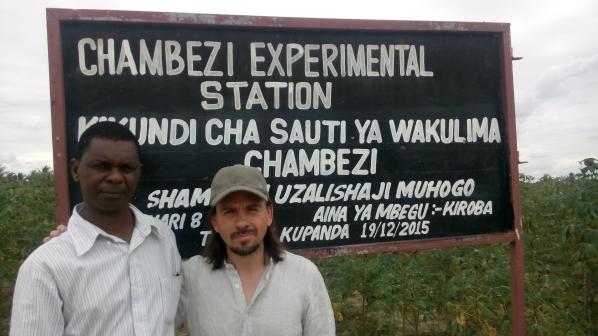
Marc Garrett: Can you explain how and why the Sauti ya wakulima, “The voice of the farmers” project came about?
Eugenio Tisselli: In 2010, I came to realize that the way we feed ourselves is actually one of the main drivers of the accelerated destruction of societies and ecosystems that is currently underway. I felt like I had been living in La-La-Land before the veil was ripped off. My life changed radically. At that time, I was collaborating in the megafone.net project which had worked since 2004 with several groups of people at risk of social exclusion in different parts of the world. By offering an unfiltered communications platform, consisting of mobile and web applications, the megafone project tried to help these groups to make their voices widely heard. But, in 2011, I left the project with the purpose of offering its tools and methodologies to farming communities who wished to seek recognition and explore different forms of communication.

The first opportunity took shape in Bagamoyo, Tanzania, where a group of farmers expressed their interest in trying out these tools. I came in contact with this group through a scientific project that studied the direct and indirect effects of climate change on agriculture. The original goal of ‘Sauti ya wakulima’ was that the farmers would use smartphones and a web application to create a collaborative, audiovisual knowledge base of weather-related events, such as droughts, floods or crop diseases. However, the farmers eventually discovered that they could reshape this goal, and started to use the phones to interview other farmers with the purpose of creating a network of mutual exchange of knowledge about agricultural practices and techniques.
Episodes of fruitful learning have happened since then: one farmer learned the proper way to grow maize thanks to a picture taken by one of his colleagues. Another one learned a clever way to build chicken sheds during a trip to an agricultural fair. He took pictures of the sheds and when he came back to his community, he formed a cooperative for chicken production together with three of his colleagues. I could go on, but the project is still active after six years and that is probably the best thing that can be said of ‘Sauti ya wakulima’. It is alive because farmers find it useful, and it’s inspiring to learn from them that the mutual exchange of knowledge can become a key to a more resilient and interesting life. To me, the agricultures depicted in the photos posted by the Tanzanian farmers are not echoes of ‘the past’, but pathways to the future.
MG: What particular themes in the exhibition do you feel relate to the “The voice of the farmers” installation?
ET: I imagine ‘The monster in the machine’ not as a horrible, threatening ghoul, but as a weird and tricky creature made of language. The ‘body’ of this creature is made up of what we would call ‘principles’, ‘values’ and even ‘ideologies’. And it silently lurks inside the technological artifacts we use every day. The smartphone, for instance, epitomizes the ideal 21st century citizen: a self-sufficient, competitive and efficient individual. And, indeed, the monster that lives inside our smartphones is made of those values: its presence is inscribed in the device’s circuits and from there it casts its spell. What I mean is that technologies are not neutral. They are not empty: they are haunted by whispering ghosts.
If you look at technologies used in agriculture, you will also find a multitude of monsters that softly dictate from the insides of things. Perhaps not by coincidence, genetically modified (GM) seeds speak the same things as mobile phones, only with different words. They tell farmers: “stop sharing seeds with your community, it’s a waste. Become an entrepreneur, there are shitloads of money to be made! Buy me! I’ll make you rich!” The sad thing is that these words are a trap: farmers ultimately become entangled in monetized loops that are beyond their control. Desperation sets in and, in absurdly horrible cases, such as GM cotton farmers in India, suicide becomes the only exit. But there are, indeed, other exits.


It is possible to rewrite the values and ideologies inscribed in technologies, in order to make them speak words that will do less harm. This is one of the key components of Sauti ya wakulima. From the very beginning of the project, the farmers agreed to redefine the smartphones as communal tools for collaborative documentation. They still share them and, when it is someone’s turn to use one, that person knows that she will not be taking pictures and recording sounds with a personal device, but with one that belongs to the group. These dynamics of sharing can create or strengthen reciprocal bonds. Renalda Msaki, a farmer who participates in Sauti ya wakulima, once said that the project had brought the group closer together. When I reflect upon her words, I can see how the monster in the machine can be transformed into a gentler creature that, nevertheless, remains weird and tricky.


MG: What role do you think the artist has when dealing with questions such as Monsters of the Machine exhibition?
ET: I think the artist can take up an incredibly vast range of roles when dealing with machines. But, whatever one does, one shouldn’t be naive about technology. Happily, the times when media artists created huge and complex pieces filled with little technological wonders just because it was exciting to celebrate their ‘magic’ is (almost) over. I used to say that (most) media art was the smiling face of techno-capitalism. Now I would add that, while technology was generally understood as a mediator between us and the world, it has now become a vector that uses humans to create its own mediations with the world. The roles have shifted, and things have taken a perverse turn. There’s a growing chorus of techno-objects that insistently asks us, humans, to drill the Arctic, build pipelines, burn coal, destroy forests and dig up more minerals. And we obey: we must feed the monster. Artists who approach technologies as materials to play with need to be aware of these power relations. We must acknowledge that technologies of all sorts have become overpowering actors that like to command.
Tisselli warns us that we need to be more aware of our responsibilties when implementing technologies into the environment. An important factor of the exhibition was to bring about a vision where the art was not just one type of art. This means different engagements in how we see and work with technology, are reflected as part of its context. Also, technology is not only a human skill, ’21st century scientific studies indicate that other primates and certain dolphin communities have developed simple tools and passed their knowledge to other generations.'[2]
As I write this conclusion, ‘Trump is poised to sign an executive order that will dramatically reduce the role that climate change has in governmental decision-making. The order could impact everything from energy policy to appliance standards.'[3] We live in a time where US policies are written via Twitter, and the rich are typically risking ours and the world’s future for their own ends. Tisselli and the farmers, remind us that, we need to be connecting with the land once more. We need to reclaim the soil before it is lost forever.
Mary Shelley’s distrust of the patriarch in the form of Dr. Victor Frankenstein, is as relevant now as it was 200 years ago. ‘Her portrayal of Dr. Frankenstein as an egocentric obsessive who will stop at nothing until he completes his mission in bringing his creature to life; represents man’s blind quest in pushing on until the precarious end, at whatever cost.'[4] Tisselli echoes this with his own critique towards artists working in technology. If we are to rethink what innovation can be now, what would that look like if we were to update it in a way that included indigenous voices, other levels of equality, and practices beyond what now seems like tired, machismo, and over obsessive, tech-enchantment?
The ‘Monsters of the machine: Frankenstein in the 21st Century’ exhibition is on at at Laboral, in Spain until August 31st 2017. http://www.laboralcentrodearte.org/en/exposiciones/monsters-of-the-machine
Those involved in the Sauti ya wakulima / The voice of the farmers project.
The farmers: Abdallah Jumanne, Mwinyimvua Mohamedi, Fatuma Ngomero, Rehema Maganga, Haeshi Shabani, Renada Msaki, Hamisi Rajabu, Ali Isha Salum, Imani Mlooka, Sina
Rafael.
Group coordinator / extension officer: Mr. Hamza S. Suleyman
Scientific advisors: Dr. Angelika Hilbeck (ETHZ), Dr. Flora Ismail (UDSM)
Programming: Eugenio Tisselli, Lluís Gómez
Translation: Cecilia Leweri
Graphic design: Joana Moll, Eugenio Tisselli
Project by: Eugenio Tisselli, Angelika Hilbeck, Juanita Schläpfer-Miller
Sponsored by The North-South Center, Swiss Federal Institute of Technology – Zürich
With the support of The Department of Botany, University of Dar es Salaam (UDSM)
Since 2005, Inke Arns has been the curator and artist director of Hartware MedienKunstVerein, an institution focusing the cross-section between media and technology into forms of experimental and contemporary art. This year, she was the curator for the exhibition titled alien matter during transmediale festival’s thirty-year anniversary. I had the pleasure of meeting Inke and taking a leisurely stroll with her around the exhibition.
The interview is written as part of a late-night email exchange with Inke a couple of weeks following our initial meeting.
CS: How did the idea come about? In your introductory text you mention The Terminator. Were you truly watching Arnold when alien matter occurred to you as an exploratory concept?
IA: Haha, good question! No, seriously, this particular scene from Terminator 2 (1991) was sitting in the back of my head for years, maybe even decades. It’s the scene where the T-1000, a shape-shifting android, appears as the main (evil) antagonist of the T-800, played by Arnold Schwarzenegger. The T-1000 is composed of a mimetic polyalloy. His liquid metal body allows it to assume the form of other objects or people, typically terminated victims. It can use its ability to fit through narrow openings, morph its arms into bladed weapons, or change its surface colour and texture to convincingly imitate non-metallic materials. It is capable of accurately mimicking voices as well, including the ability to extrapolate a relatively small voice sample in order to generate a wider array of words or inflections as required.
The T-1000 is effectively impervious to mechanical damage: If any body part is detached, the part turns into liquid form and simply flows back into the T-1000’s body from a far range, up to 9 miles. Somehow, the strange material of the T-1000 was teaming up with Jean-Francois Lyotard’s notion of “Les Immatériaux” (1985). Lyotard tried to describe new kinds of matter, that at first sight look like something that we know of old, but in fact are materials that have been taken apart and re-assembled and therefore come to us with radically new qualities. It is essentially alien matter which Lyotard was describing.
CS: You also comment on intelligent liquid and then make reference to four subcategories for the ‘rise of new object cultures’: AI, Plastic, Infrastructure, and the Internet of Things. Is this what makes up ‘alien matter’ to you? Inorganic materials? Simultaneously, HTF The Gardener and Hard Body Trade explicitly and dominantly utilise nature.
IA: Well, the shape shifting intelligent liquid acts more like a metaphor. It is a metaphor for the fact that the clear division between active subjects and passive objects is becoming more and more blurred. Today, we are increasingly faced with active objects, with things that are acting for us. The German philosopher Günther Anders, yet another inspiration for alien matter, described in his seminal book The Obsolescence of Man (Die Antiquiertheit des Menschen) how machines – or computers – are “coming down”, how over time they have come to look less and less like machines, and how they are becoming part of the ‘background’. Or, if you wish, how they have become environment. That’s what I tried to capture in these four subcategories AI, Internet of Things, Infrastructure and Plastic. It is subcategories that reflect our contemporary situation, and at the same time are future obsolete. All of this is becoming part of the big machine that is becoming visible on the horizon. The description that Anders uses is eerily up to date.
Is this alien matter inorganic? Well, yes and no. It is primarily something inorganic as plastic could be described as one of the earliest alien matters – its qualities, like, e.g., its lifespan, are radically different from human qualities. However, it is something that increasingly merges with organic matter – Alien in Green showed this in their workshop that dealt with the xeno-hormones released by plastic and how they can be found in our own bodies. They did this by analyzing the participants’ urine samples in which they found stuff that was profoundly alien.
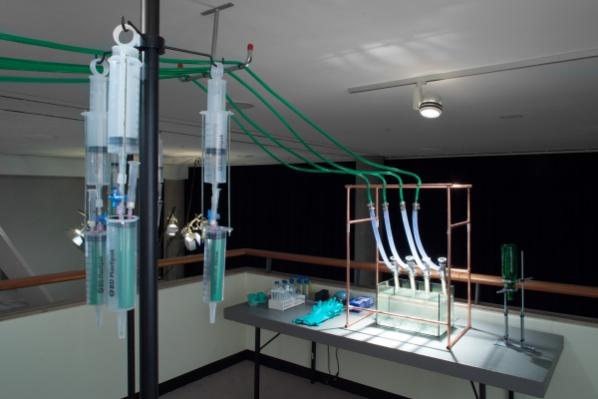
In the exhibition, everything is highly artificial, even if it looks like nature, like in Ignas Krunglevicius’ video Hard Body Trade or Suzanne Treister’s series of drawings/prints HFT The Gardener. The ‘natural’ is becoming increasingly polluted by potentially intelligent xeno-matter. We are advancing into murky waters.
CS: There is no use of walls in the exhibition, other than Video Palace, standing as a monumental structure made out of VHS tapes. Why did you decide to exclude setting up rooms or walls for alien matter?
IA: I knew right from the beginning that I wanted to keep the space as open as possible. Anything you build into this specific space will look kind of awkward. This is also how I make exhibitions in general: Keeping the exhibition space as open as possible, building as few separate spaces as possible in order to allow for dialogues to happen between the individual works. For alien matter we worked with raumlaborberlin, an architectural office that is known for its unusual and experimental spatial solutions and that has been working with transmediale for quite some time now. I have worked with them for the first time and I am super happy with the result. We met several times during the development process, and raumlabor proposed these amazing tripods you can see in the show. They serve as support for screens and the lighting system. (Almost) nothing is attached to the walls or the ceiling. raumlabor were very inspired by the aliens in H.G. Wells’ War of the Worlds – where the extraterrestrials are depicted with three legs and a gigantic head. Even if the show is not about aliens I really liked the idea and the appearance of these tripods. They look at the same time elegant, strange, and through their sheer size they are also a bit awe-inspiring. Strange elegant aliens so to speak to whom we have to look up in order to see. At the same time they are ‘caring’ for the exhibition, almost as if they were making sure that everything is running smoothly.
CS: What can you tell me about the narrative behind Johannes Paul Raether’s Protekto.x.x. 5.5.5.1.pcp.? You mentioned that it was originally a performance in the Apple Store, nearly branding the artist a terrorist.
IA: Correct. The figure central to the installation is one of the many fictional identities of artist Johannes Paul Raether, Protektorama. It investigates people’s obsession with their smartphones, explores portable computer systems as body prosthetics, and addresses the materiality, manufacturing, and mines of information technologies. Protektorama became known to a wider audience in July 2016 when a performance in Berlin, in which gallium—a harmless metal—was liquefied in an Apple store, led to a police operation at Kurfürstendamm. In contrast to the shrill tabloid coverage, the performative work of the witch is based on complex research and visualizations, presented here for the first time in the form of a sculptural ensemble including original audio tracks from the performance. The figure of Protektorama stems from Raether’s cyclical performance system Systema identitekturae (Identitecture), which he has been developing since 2009.
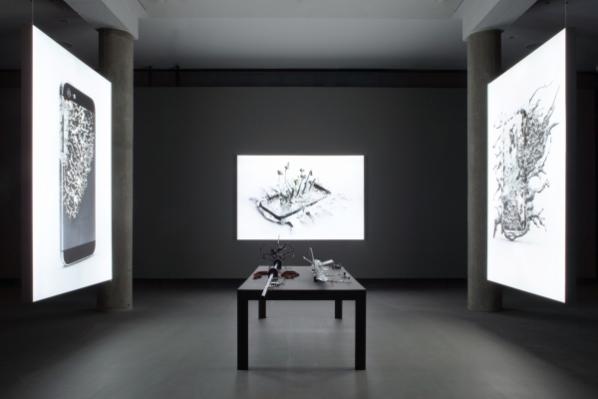
CS: Throughout the exhibition there is an awareness that technological singularity can and possibly will overcome the human body and condition. In the context of the exhibition, do you think that we may be accelerating towards technological and machinic singularity? As humans, are we already mourning the future?
IA: The technological singularity is a trans-humanist figure of thought that is currently being propagated by the mathematician Vernor Vinge and the author, inventor and Google employee Ray Kurzweil. This is understood as a point in time, and here I resort to Wikipedia, “at which machines rapidly improve themselves by way of artificial intelligence (AI) and thus accelerate technical progress in such a way that the future of humanity beyond this event is no longer predictable.” The next question you are probably going to ask is whether I believe in the singularity.
CS: Do you?
IA: Whether I believe in it? (laughs) The singularity is in fact a kind of almost theological figure. Technology and theology are very close to one another in a sense. The famous American science fiction author Arthur C. Clarke once said that any sufficiently developed technology can’t be differentiated from magic. I consider the singularity to be an interesting speculative figure of thought. Assuming the development of technology were to continue on its course as rapidly as it has to date, and Moore’s Law (stating that computing performance of computer chips doubles every 12-24 months) retained its validity, what would then be possible in 30 years? Could it really come to this tipping point of the singularity in which pure quantity is transformed into quality? I don’t know. What is interesting right now is that instead of the singularity, we are faced with something that the technology anthropologist Justin Pickart calls the ‘crapularity’: “3D printing + spam + micropayments = tribbles that you get billed for, as it replicates wildly out of control. 90% of everything is rubbish, and it’s all in your spare room – or someone else’s spare room, which you’re forced to rent through AirBnB.” I also suggest to check out the ‘Internet of Shit’ Twitter feed.
CS: You come from a literary background. Noticing the selection and curation of alien matter, it becomes clear that you love working with narratives. Do you feel as though your approach of combining narrative and speculative imaginations is fruitful and rewarding?
IA: I do (if I didn’t I wouldn’t do it). I think narrative – or: storytelling – and speculative imaginations are powerful tools of art. They allow us to see the world from a different perspective. One that is not necessarily ours, or that is maybe improbable or unthinkable today. The Russian Formalists called this (literary) procedure ‘estrangement’ (this was ten years before Bertolt Brecht with his ‘estrangement effect’). Storytelling and/or speculative imaginations help us grasping things that might be difficult to access from our or from today’s perspective. It’s like an interface into the unknown. Maybe you can compare it to learning a foreign language – it greatly helps you to understand your own native language.
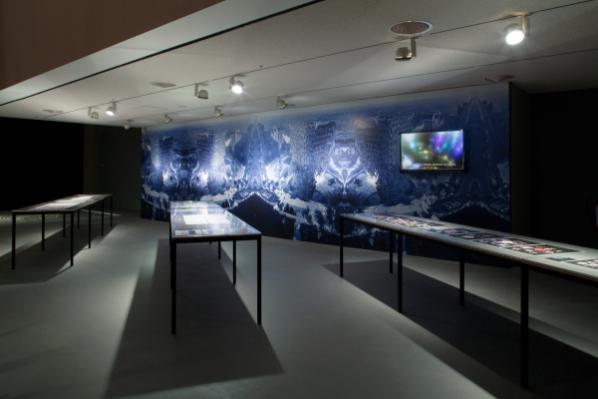
CS: On a final note, I’d like to revisit a conversation we had during transmediale’s opening weekend. We spoke about a potential dichotomy or contention between the discourse followed by transmediale and that of the contemporary art world, using the review by The Guardian about the Berlin Biennial as an example. Beautifully written, albeit you seemed to disagree with some points made – particularly at the notion enforced by the writer that works shown there, similar in nature to the works in alien matter, are not ‘art’. Could you elaborate on your thoughts?
IA: You are mixing up several things – let me try to disentangle them. I was referring to the article “Welcome to the LOLhouse” published in The Guardian. The article was especially critical of the supposed cynicism and sarcasm it detected in the Berlin Biennale curators’ and most of the artists’ approaches. Well, what was true for Berlin Biennale was the fact that it showed many younger artists from the field of what some people call ‘post-Internet’ art. This generation of artists – the ‘digital natives’ – mostly grew up with digital media. And one of the realities of the all pervasive digital media is the predominance of surfaces. The generation of artists presented at the Berlin Biennale dealt a lot with these surfaces. In that sense it was a very timely and at the same time a cold reflection of the realities we are constantly faced with. I felt as if the artists held up a mirror in which today’s pervasiveness of shiny surfaces was reflected. It could be interpreted as sarcasm or cynicism – I would rather call it a realistic reflection of contemporary realities. And it was not necessarily nice what we could see in this mirror. But I liked it exactly because of this unresolved ambivalence.
About transmediale and the contemporary art world: These are in fact two worlds that merge or mix very rarely. I have often heard from people deeply involved in the field of contemporary art (even some friends of mine) that they are not interested in transmediale and/or that they would never attend the festival or go and see the exhibition. And vice versa. This is mainly due to the fact that the art people think that transmediale is too nerdy, it’s for the tech geeks (there is some truth in this), and the transmediale people are not interested in the contemporary art world as they deem it superficial (there is some truth in this as well). For my part, I am not interested in preaching to the converted. That’s why I included a lot of artists in the show that have never exhibited at transmediale before (like Joep van Liefland, Suzanne Treister, Johannes Paul Raether, Mark Leckey). However, albeit the borders, the fields have become increasingly blurred. It is also visible that what is coming more from a transmediale (or ‘media art’) context clearly displays a greater interest in the (politics of) infrastructures that are covered by the ever shiny surfaces (that bring along their own but different politics).
I could continue but I’d rather stop, as it is Monday morning, 3:01 am.
You can also read a review of alien matter, available here.
alien matter is on display until the 5th of March, in conjunction with the closing weekend of trasmediale. Don’t snooze on the last chance to see it!
All in-text images are courtesy of Luca Girardini, 2017 (CC NC-SA 4.0)
Main image is a still from the movie The Terminator 2 (1991)
Choose Your Muse is a new series of interviews where Marc Garrett asks emerging and established artists, curators, techies, hacktivists, activists and theorists; practising across the fields of art, technology and social change, how and what has inspired them, personally, artistically and culturally.
Gannis is informed by art history, technology, theory, cinema, video games, and speculative fiction, expressing her ideas through many mediums, including digital painting, animation, 3D printing, drawing, video projection, interactive installation, performance, and net art. However, Gannis’s core fascinations, with the nature(s) and politics of identity, were established during her childhood in North Carolina. She draws inspiration from her Appalachian grandparents singing dark mountain ballads about human frailty, her future-minded father working in computing, and a politicized Southern Belle of a mother wearing elaborate costumes, performing her prismatic female identity.
“I am fascinated by contemporary modes of digital communication, the power (and sometimes the perversity) of popular iconography, and the situation of identity in the blurring contexts of technological virtuality and biological reality. Humor and absurdity are important elements in building my nonlinear narratives, and layers upon layers of history are embedded in even my most future focused works.” Gannis.
We begin…1. Could you tell us who has inspired you the most in your work and why?
The complete list of people who have inspired me is inordinately long. I’m sharing with you here clusters of some of the “most most” inspiring.
Lynn Hershman Leeson, Maya Deren, Lady Ada Lovelace, Mary Wollstencraft – I saw Lynn Hershman Leeson’s Conceiving Ada in the late 90s. It was my first introduction to her work, and
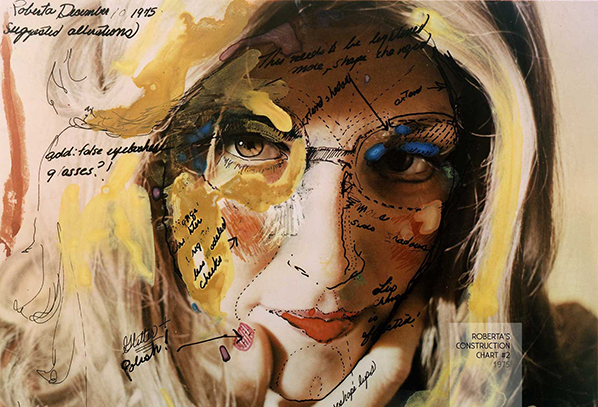
I have been blown away by her prescience ever since. Deren, Lovelace, and Wollstencraft, like Leeson, have all been groundbreaking in their creative, scientific and intellectual contributions to humankind.
Yael Kanarek, Marge Piercy, Octavia Butler, Sadie Plant, Jonathan Lethem, Harry Crews and Flannery O’Connor – Artist Yael Kanarek’s “World of Awe” was one of the first net art pieces, through its poetry and world building, to inspire me to transition from painting into a new media arts practice. Piercy and Butler are two favorite authors, and they have both written novels where women travel into the past and to the future to reconcile their identities, to come to terms with their present selves — themes that constantly recur throughout my work. Plant opened up broad vistas to me as a woman and feminist working with technology, and the melange of genres Lethem mashes up in his fictional works: sci fi, noir, autobiography, and fantasy, appeals to my own hybrid sensibilities. Crews and O’Connor testify to the absurdity of the human condition, and being a native of the “American South,” their gothic sensibilities resonate with me deeply.
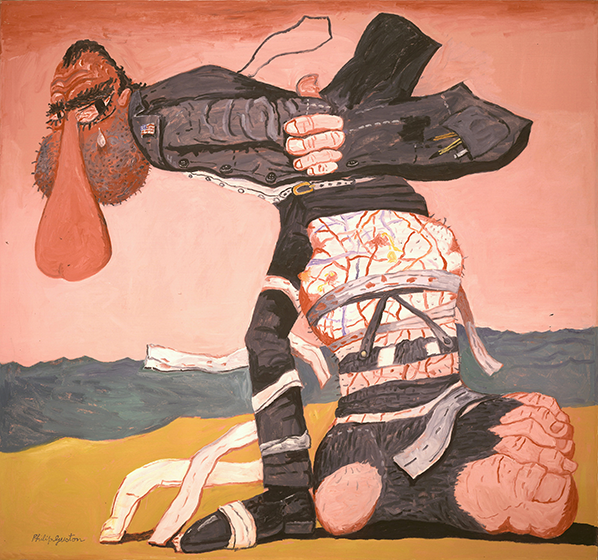
Philip Guston, Suzanne Valadon, Artemisia Gentileschi, Louise Bourgeois, Hieronymus Bosch and Giotto di Bondone – I studied painting at a school where Guston had taught (many years before I arrived there), and coincidentally we share the same birthday. I have always felt a very strong connection to his work, particularly to his late work, where he resisted the art establishment and made pictures that he felt truly represented his time. Valadon, an autodidact, likewise bucked the conventions of 19th century “lady painting” focusing on the female nude throughout her oeuvre. Gentilsechi in the 17th Century established herself as an artist who painted historical and mythological paintings, rendering women with more agency and strength than her male contemporaries. Bourgeois’s work, the rawness of her drawings particularly, were quite significant to me as a young artist. Twice I got to attend her Sunday Salons in New York, sharing my work with her. She was a tough critic by the way. Bosch and Giotto have long been favorites, the enigmatic quality of Bosch’s vision, and the amalgam of Medieval and Renaissance perspectives colliding in Giotto’s paintings.
Charlie White, Laurie Simmons, Gregory Crewdson, Renee Cox & Cindy Sherman – I think of these photographers as important conceptual forerunners of a Post-Photography movement that seems to be reaching its apogee now. They were each essential to me as I searched for a new aesthetic language, after throwing away my oil paints and canvases.
And today there are so many younger artists who I have deep respect for, Gretta Louw, Angela Washko, RAFiA Santana, Jeremy Bailey, Lorna Mills, Andrea Crespo, Clement Valla, Faith Holland, Jacolby Satterwhite, Morehshin Allahyari and Alfredo Salazar-Caro (to name only a few). They all have significant presences online, and I encourage readers to “google them” for glimpses into the contemporary visions that are shaping and predicting our future.”
2. How have they influenced your own practice and could you share with us some examples?
In my teens and 20s I copied much of the work of my sheroes and heroes. There is little I can share with you of that work now, as I’d copy then delete back then. To be more accurate, since it was physical work, I’d copy and destroy. I destroyed more work than I saved until I found a way to absorb and remix through the filter of my own identity.
Today I identify as a visual storyteller who cuts and pastes from the threads of googleable art history, speculative fiction and networked communication in efforts to aggregate some kind of meaningful narrative. Appropriation feels like an authentic artistic response to mediated culture, registering at a different conceptual frequency than simple mimicry. I mean making a painting like Giotto or Bosch doesn’t make sense in the 21st century, well, unless you “emojify” it (wink). Here is one recent work where my quotation is obvious, “The Garden of Emoji Delights.” In the other works below, a collection of influences are embedded, but perhaps less perceptible on first glance.
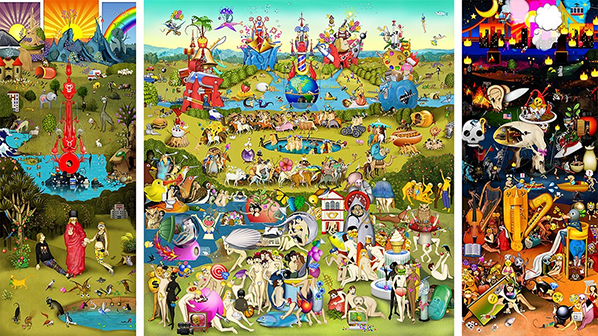

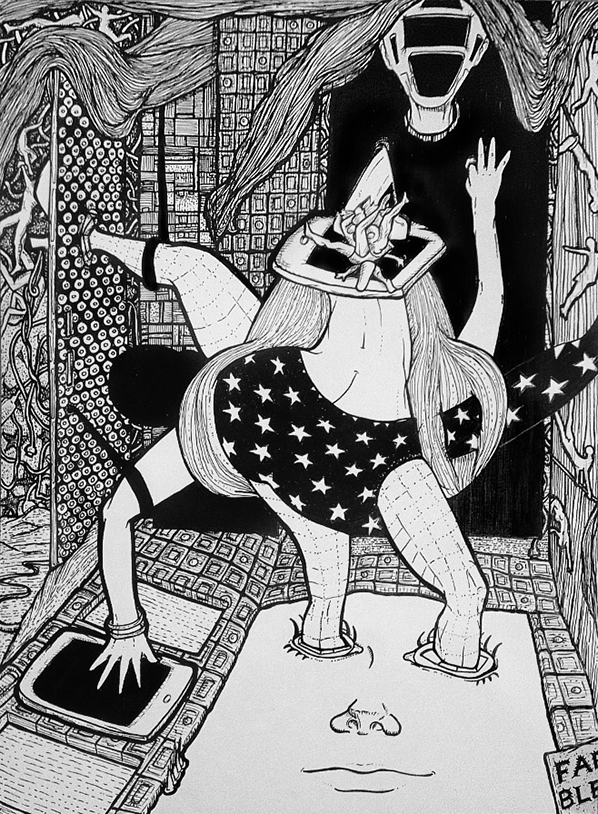
3. How is your work different from your influences and what are the reasons for this?
It is essential that my work be different semiotically from the historical influences I mentioned above, if I am to actually understand the nature and power of their work — how each of them were incredibly perceptive and responsive to “their time.” They produced authentic images or texts (or code) that were assembled from aspects of their cultural milieu. Their expressions were comprehensible to their contemporaries, even if at times only a few of their peers engaged. Communication is key to every human enterprise. Nonetheless the infinite (and often futureminded) perspectives of these historical figures still reverberate in our contemporary collective consciousness and influence us to “perceive differently” in our own time.
To be different from influences who are of my own time also involves comprehending why they have an impact on me. They avoid any kind of creative and intellectual status quo. Being unique seems improbable in the internet age, but there are still innumerable ways that we can creatively parse our relationships to the past, present and future, both in concert and contrast to one another.
4. Is there something you’d like to change in the art world, or in fields of art, technology and social change; if so, what would it be?
There are many art worlds. In the more mainstream, celebrity-dominated, auctioneer enabled art world, whose market I rarely follow, but when I do, I find it to be bloated by One Percenters consumed by commodities trading, I would advocate for, if I had the power to do so, more economic temperance, less aura fetishization, and yeah, VR headsets that provide clothes for hackneyed metaphors.
It’s demoralizing that I cannot foresee, at least in the short term, a world without radical income inequality. Our world continues to be populated by a majority of “have nots” who are dominated by a tiny dominion of “haves.” It seems in every financial, social, educational, and entertainment sector, including the visual arts, capital obstructs as much as it supports creativity. Still I believe that the “other art worlds” can and will affect, actually currently are affecting change (incremental as it may seem), through social advocacy programs that embrace and foster diversity; through economic and technological models that celebrity the ubiquity instead of the scarcity of contemporary digital art; through independent artists who define their success in terms of cultural, instead of, or in addition to market value.
Positive changes are happening. Compare our cultural landscape to even two decades ago, and we see a much more diverse population represented in the arts. A new generation of artists and technologists are hopeful about their capacity to shape a better future, while being mindful of what’s a stake if they do not.
That said, and to finally answer your question directly, I’d like to see a change — a major turn in the tides of fascism, racism, xenophobia, and misogyny that are flooding countries around the world — so that the various art worlds, the ones that frustrate me, and the ones that inspire me, can survive.
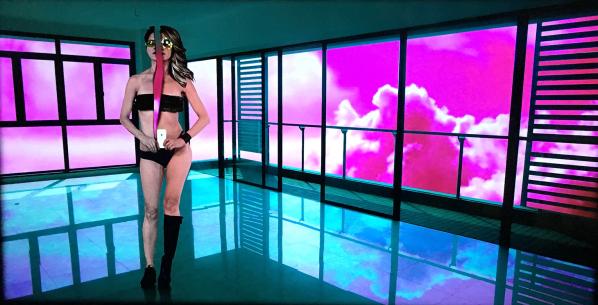
5. Describe a real-life situation that inspired you and then describe a current idea or art work that has inspired you?
Sitting with and drawing digital portraits of my 99 year old Grandma Pansy Mae in January of 2015 inspired me to begin “The Selfie Drawings” project. Being in the presence of someone who has witnessed so much radical social and cultural change, over the course of almost a century, motivated me to interpret, and then stage a series of reinterpretations of myself/selves, within the context of a post-digital age. Pansy Mae was a woman born before women had the right to vote in the United States, a woman with only an 8th grade education who raised my mother, and myself to never let our gender or our class (personally) deter us from pursuing our ambitions. Grandma is now 101 years old, and I wished her Happy Birthday in binary code this past December 31st.
“Nasty Woman” is a current meme that has really struck a chord with me. I have worn a “Nasty Woman” necklace everyday, since November 7th, (the day I picked it up from the studio of artist Yael Kanarek). Embracing the nomenclature that was meant to denigrate a woman has instead empowered and galvanized a collective of women as they face, and resist, the alarming possibilities of increased subjugation under Trump’s leadership.
I recently participated in the NASTY WOMEN exhibition in New York city, (which raised over $42,000 for Planned Parenthood), because I am such a woman, a nasty woman, a bitch, a Jezebel — a complex and empathetic human being who believes change and equality can only occur when we speak up, when we eschew “politeness” in the face of serious threats to our autonomy and personhood.
6. What’s the best piece of advice you can give to anyone thinking of starting up in the fields of art, technology and social change?
I’ve got a few bits of advice. First, as an artist, work; as a technologist, feel; and as an advocate for social change, empathize. Then toss up your FEW cards (feel, empathize and work) and apply them to other aspects of your life as well.
Secondly I suggest losing, if you possess, the sense of what you think you’re entitled to because you are more special and deserving than others. This doesn’t mean you deny the gifts you possess. Nor does it mean you eschew your ambitions or balk at your successes. Brand yourself, or your cause, by all means, if that informs your practice or generates support for your work. But the “I’m a genius, so I have the right to be licentious, egotistical and completely selfserving at the sacrifice of others” trope may (temporarily) get a man into the White House, but generally is tiresome, if not loathsome, to progressive art professionals.
7. Finally, could you recommend any reading materials or exhibitions past or present that you think would be great for the readers to view, and if so why?
What I’ve been reading lately: Object Oriented Feminism edited by Katherine Behar; Artemisia Gentileschi, The Language of Painting by Jesse Locker; Lynn Hershman Leeson Civic Radar edited by Peter Weibel; Hope in the Dark | Untold Histories, Wild Possibilities by Rebecca Solnit; The Year of the Flood by Margaret Atwood
I recommend these books as a resistance to sophomoric twitter threads usurping all of your attention.
Pipilloti Rist : Pixel Forest New Museum, http://www.newmuseum.org/exhibitions/view/pipilotti-rist-pixel-fores
It is okay for art to wash over you, so that you can revel, even relax, in its beauty…for a while.
____________________________________________________________________
Monster of the Machine : Laboral
curated by Marc Garrett http://www.laboralcentrodearte.org/en/exposiciones/monsters-of-the-machine
A timely and provocative exhibition (thrilled to have work included).
__________________________________________________________________
Dreamlands: Immersive Cinema and Art 1905-2016
http://whitney.org/Exhibitions/Dreamlands
A landmark show for moving image works!
__________________________________________________________________
Women’s March On Washington (Saturday, January 21st!) https://www.womensmarch.com/
…or one of the other 386 protests taking place on the same day around the world!
https://www.womensmarch.com/sisters
#notmypresident
Choose Your Muse Interview: Jeremy Bailey | By Marc Garrett – 26/06/2015
http://furtherfield.org/features/interviews/choose-your-muse-interview-jeremy-bailey
Choose Your Muse Interview: Annie Abrahams | By Marc Garrett – 10/09/2015
http://www.furtherfield.org/features/interviews/choose-your-muse-interview-annie-abrahams
Choose Your Muse Interview: Lynn Hershman Leeson | By Marc Garrett – 13/07/2015
http://www.furtherfield.org/features/interviews/choose-your-muse-interview-lynn-hershman-leeson
Choose Your Muse Interview: Stanza | By Marc Garrett – 03/11/2015
http://www.furtherfield.org/features/interviews/choose-your-muse-interview-stanza
Choose Your Muse Interview: Igor Štromajer | By Marc Garrett – 09/06/2015 http://www.furtherfield.org/features/interviews/choose-your-muse-interview-igor-%C5%A1tromajer
Choose Your Muse Interview: Mike Stubbs, Director of Fact in Liverpool, UK | By Marc Garrett – 20/05/2015
http://www.furtherfield.org/features/interviews/choose-your-muse-interview-mike-stubbs-director-fact
In the second part of this two-part interview series Carleigh Morgan interviews Jussi Parikka about Burak Arikan’s work, discussing the way data and networks condition and construct the way we view and interact with the world. The first part of the series, an interview with Burak Arikan, can be read here.
Burak Arikan is one of Turkey’s leading media artists. Through his practice he maps relations of power and invisible infrastructures using network mapping tools. Arikan’s Graph Commons, an online network mapping tool, is an open platform for the creation of networks that encourages its users to explore the functional limits of network architectures as a mechanism for storytelling, data visualization, and modelling our contemporary moment, from graphing financial microtransactions to mapping superstructures splayed across a continent.
Arikan’s most recent body of work, Data Asymmetry, was hosted at the Winchester School of Art from November 10-24, 2016. The exhibition was curated by new media theorist Jussi Parikka (Professor in Technological Culture & Aesthetics at Winchester School of Art) who comments on the themes, provocations, and challenges that this show invites its audience to consider.
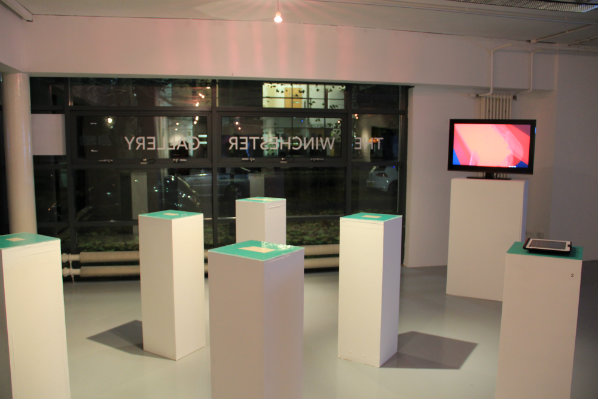
CM: In your essay New Materialism as Media Theory, you conclude: “I propose a multiplicity of materialisms, and the task of new materialism is to address how to think materialisms in a multiplicity in such a methodological way that enables a grounded analysis of contemporary culture. Such methodologies and vocabularies need to be able to talk not only of objects, but also as much about nonsolids and the processual…so we can understand what might be the specificity of this brand of materialism that we encounter (but do not always perceive) in contemporary media culture.”
Are network visualizations like those in Burak Arikan’s art practice—for example, Islam Republic Neoliberalism, which organises data collected about the urban infrastructure—one way to capture the materialism that “we encounter but do not always perceive”? Are networks as a vocabulary sufficient to do this, and are these limitations to Burak’s methodologies that alert us to this kind of multiplicity of materialisms that cannot conform to the network graph?
JP: The network is one form of seeing the world; it gives one form to things we might sense around us as intuitively present even when we are not sure how to express that. The network is not necessarily an end in itself but one particular frame through which to map things – such as urban transformations, architectures as they pertain to our lived experience – and allows you to put yourself on that map. I don’t see networks as an overarching ontology but as a methodological entry to those relations that then scale on other levels too: experiences, narratives, etc. What’s interesting is how Burak’s work plays out this network relationality not only as a visual reality to be looked at, but as a collective form of doing: how to build a network through workshops, or how to express things that we feel crucial to our existence, especially in some of the more politically oriented activist works.
CM: Networking mapping seems to cover a range of modes: cultural epitome, critical methodology, data visualisation tool, a kind mediation narrative etc. Is there a danger to the multiplicities and modalities of representation that networks capture, namely a danger of being misused or misunderstood?
JP: I remember earlier discussions with Benjamin Bratton where we discussed “big data apophenia”: a particular sort of disorder that is conditioned by data: namely, to see relations and to establish them, even if they are not necessarily as real as one can infer from data. The same thing pertains to network methods: you could use it as a pataphysical tool as well to create imaginary worlds of relations, to offer causalities across logical relations, and to create as such a speculative alternative world. Oddly enough, this is exactly something that speaks to the now hot topic of “post truth politics”: how to manipulate and cater data and “information” in ways that becomes effective whether true or not. We are in any case talking of such methods than can be mobilized for multiple uses.
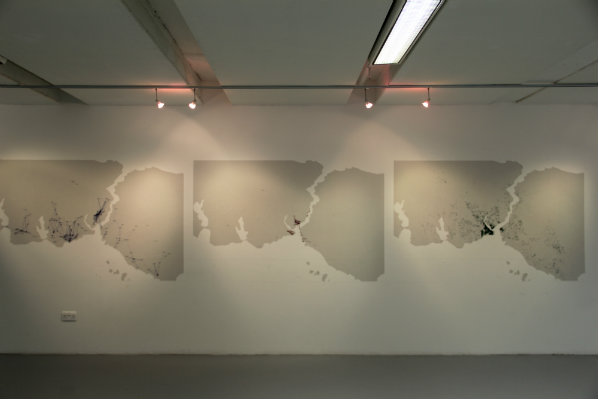
CM: “To produce maps is a method of mapping power, addressing by visual means the asymmetry that defines our situation. Not only asking where we are, but inquiring: where is our data and who owns your data trail? This exhibition maps the shift from information asymmetry to data asymmetry, where aggregation of data is where contemporary power lies.”
Do you see network mapping as inherently emancipatory? Is the need to orient oneself via networking mapping also an exercise in self-reflexive targeting, one that uses modes of surveillance and data capture in an attempt to evade those same modes of capture executed at the level of the corporate-state nexus–is this a contradiction and a risk worth taking in order to achieve an orientation within our own data?
JP: It’s a great point—and demonstrates the paradoxes in this sort of activist work. It’s pretty much a necessity to engage head on and inside such techniques to understand their work: the critical distance often required in institutional or political critique is not really sufficient if we want to understand data culture. We need to be able to work inside such techniques and data, also institutions, in order to be able to shift, transform and manipulate those tools to other ends.
CM: Any other comments on the Furtherfield show and Burak’s body of work?
JP: For us it was a really pleasurable opportunity to bring an internationally known artist’s work to Winchester Gallery, and exhibit work that is at that interesting triangle of activism, contemporary media arts and issues that we discuss in media and network studies. Hence while the exhibition was on in the gallery, we also wanted to expand it into other forms of work that build on our earlier collaborations, like at transmediale where we also had Burak as our guest. We also introduced his work into workshops we organised in Winchester and London. It’s this sort of dynamic exchange that also make his works alive: his practice does not merely look at maps and visual relations of data, but also engages, understands, and uses them.
—
Burak’s visit was part of our AHRC funded project Internet of Cultural Things but also our new research group, or office “AMT”: Archaeologies of Media and Technology.
Burak Arikan’s most recent body of work, Data Asymmetries, was hosted at the Winchester School of Art from November 10-24, 2016. His network mapping tool, Graph Commons, is viewable here.
*Inline image photo credits: Olcay Öztürk
Feature image: Winchester School of Art Exhibition of Data Asymmetries. Image Credit: Olcay Öztürk
Burak Arikan is one of Turkey’s leading media artists, a figure who straddles the lines between technologist and practitioner. He explores relations between data and transactions, the regimes of datafication and identification as control, and maps relations of power and invisible infrastructures with network mapping tools. According to new media theorist Jussi Parikka, Burak’s pieces “raise questions of the predictability of ordinary human behavior with MyPocket(2008); reveal insights into the infrastructure of megacities like Istanbul as a network of mosques, republican monuments and shopping malls (Islam, Republic, Neoliberalism, 2012); remap and organise recurring patterns in the official tourism commercials of governments with Monovacation (2012); explore the growth of networks via visual and kinetic abstraction with Tense (2007-2012); and showcase collective production of network maps from the Graph Commons platform.”
Burak’s creation of the Graph Commons, an online network mapping tool, is an open platform for the creation of networks that encourages its users to explore the functional limits of network architectures as a mechanism for storytelling, data visualization, and modelling our contemporary moment, from graphing financial microtransactions to mapping superstructures splayed across a continent.
Burak Arikan’s most recent body of work, Data Asymmetry, was hosted at the Winchester School of Art from November 10-24, 2016. His network mapping tool, Graph Commons, is viewable here.
In the first of this two part interview series, Carleigh Morgan speaks to Burak Arikan about his practice. In the second part of the series Morgan interviews Jussi Parikka about Arikan’s work and the way data and networks condition and build the way we view and interact within the world.
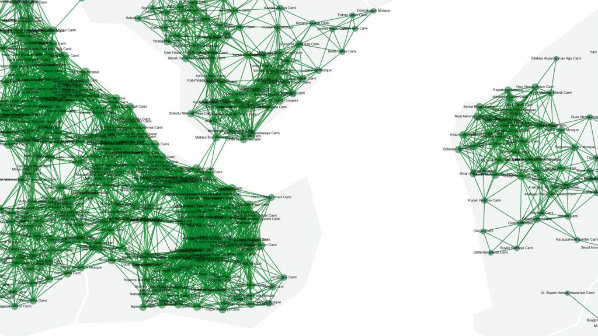
CM: The aim of the Graph Commons is to “empower people and projects through using network mapping, and collectively experiment with mapping as an ongoing practice.” But every visualising methodology has its hermeneutical blindspots and invisible shortcomings.
With those boundary constraints and affordances in mind: What are networks in art, and how are they are extensions of or departures from the networks that they attempt to depict?
BA: I use network as a map vs network as an event separately in my work.
Network as a map is simply using dots and lines to represent observed or measured relationships in order to explore the structures of rather complex systems in life. For example, I am interested in revealing the institutionalization without walls in the world of art, so I look at relationships of artists exhibiting together with other artists, art institutions related by the artists they show, influence of collector-artist relations etc. Such network mapping reveals central actors, indirect connections, organic clusters, structural holes, bridging actors, outliers etc. Network mapping provides a view of such qualities about that particular art world that you wouldn’t see otherwise.
A network map is both a visual and a mathematical language, that you can visually follow dots and lines with your eyes, as well as apply calculations on this data diagram. When you simply record and measure activities as data points, then you can link them to generate more insight and value from the linked whole than the sum of its parts. This is typical data linking method is commonly employed in security, marketing, finance, and social media industries by governments and corporations. One position I have in my art is to use such data mapping and analysis capacity on power relationships, mapping the ones who are mapping us. No need to say, my work is not necessarily about the internet of art things, but I’ve been interested in revealing the relations at scale in variety of fields ranging from juridical systems to cinematic languages.
Network as an event is a living substrate, it is people hanging out together, machines transmitting data packages, neurons firing signals, online platforms for social networking, physical ecosystems of humans and animals where widespread infectious disease can occur. These are physical, digital, hybrid living and multilayered systems maintained by diverse interactions between independent agents, where their small interactions governed by certain protocols together constitute an ever changing larger whole. Building a living network, or network as an event is another line of effort I’ve been pursuing in my work. For example, in 2007 I’ve built Meta-Markets, an experimental online stock market for trading social media profiles, where users did IPO (Initial Public Offering) their profiles and traded with others, with a goal to evaluate the value of a social media profile, the information you cannot get from the service provider company. It ran for 2 years and a community of members formed a dynamic trade network among a couple of thousand social media profiles.
CM: What types of agencies do network maps engender their makers with, and what kinds of constraints to they bring to bear on their creators? As an artist who works with the form of networks, have you witnessed a formal re-alignment of your thinking to reflect these structures? Through ongoing interrogations with and construction of networks as an aesthetic model, would you consider yourself more alert to the networks that condition our contemporary moment?
BA: As with any research, network maps are subjective too. Because by just measuring a reality you claim a subjective position. Thus, data points are always generated, rather than collected. Furthermore, network diagrams are usually totalizing and contemplative. As McKenzie Wark writes criticizing Frederic Jameson’s cognitive mapping: network maps freeze into a contemplative totality that prescribes an ideal form of action that never comes.
My network mapping work starts with raising new questions on critical relations that scale. Then I conduct research to generate data about a “particular world”, which enables many stories, interpretations, and use cases.
As a response to the lack of the “dialectical” in the frozen totality of static diagrams, I started using algorithmic interfaces in my installations. Such interactive network maps let you touch and change the positions of the dots on a map, yet browse the names without losing their relationality to each other as the software simulation continuously organizes the network layout. This way, normally invisible relations not just become visible, but also touchable, which enables us to effectively explore the chain of influences and relationality at scale. Touching the nodes also displays information cards, where you can get richer information about individual data points. By using an algorithmic interface you navigate back and forth between an abstract large picture and concrete juicy details of a complex issue. I think such encounters help the viewer to effectively interrogate the particular issue at hand and develop better insight. This aesthetic and pedagogical experience of interactive cartography is very different from a static diagram, that still lacks criticism.
CM: There’s a resounding common thread in your work [the mapping of the urban infrastructure of Istanbul in terms of its mosques, malls and national monuments in Islam, Republic, Neoliberalism demonstrates this clearly] that seeks to articulate the imbricated matrices of politics, art, and the practices of everyday life that are often not apprehensible to the individual occupied with the attention-consuming projects of being and living.
How does your work position the actor within the network, and what kinds of political commitments do you see expressed from your position as the authoritative designer/person who captures these networks in artistic form?
BA: Since a network map provides a world rather than a story and is thus a nonlinear medium, there is no flow of introduction, development, and finalization, neither a single story. So you start exploring a network map from a “you are here” point, a familiar name or an interesting image, which may be different for every other viewer. Then you do an unplanned journey through a topology of connected information points, navigate from one connection to another. You experience a traversal, a situationist dérive on a data network.
In my workshops and lectures I tell people not to use network mapping against themselves. Network mapping is a powerful tool, it makes structures transparent. Keep the maps about yourself to yourself. Turn it around and map the ones who map you.
In fact, when you click on a follow button, swipe a metrocard, or use your credit card your data is being captured and mapped by data-driven oligarchies. Obviously, this is not just a concern of privacy violation, in this day and age, data capturing is about ownership and control, thus capital and power.
CM: MyPocket generates data from bank transactions, Monovacation from tourism commercials, Islam Republic Neoliberalism organises data collected about the urban infrastructure, Tense Series generates semi-random numbers and uses it as data.
How does your work foreground how data–as algorithmic material that exists at the level of computation, below the thresholds of human apprehension– conditions and structures the world we live in?
BA: Data about us, metadata, make our everyday behaviour more predictable. No one wants to live such a boring predictable life. In MyPocket (2008), by predicting and publishing what I will buy every other day, I demonstrated how easy it is to algorithmically predict our mundane behavior. With this work, in a way I sacrificed myself by making my data no more exclusive to a bank but available to anyone else, so that you can start thinking what corporations can predict about yourself and what it might mean to you.
By turning data around, we can reveal systematic yet invisible power structures. For example in 2012, I mapped a network of Istanbul’s 3000 mosques based on their overlapping call to prayer sounds. Most people living in Istanbul are born into this and take it for granted. However, the mosque network constitutes a subtle power structure, which became quite apparent to many as the government used this network to make calls to city squares in the days following the coup d’etat attempt on July 15th, 2016.
In most of my mapping work, I simply investigate data about one critical relation that connects many agents and constitutes more power as it scales. When completed, a data network is formed and I put that particular world to use.
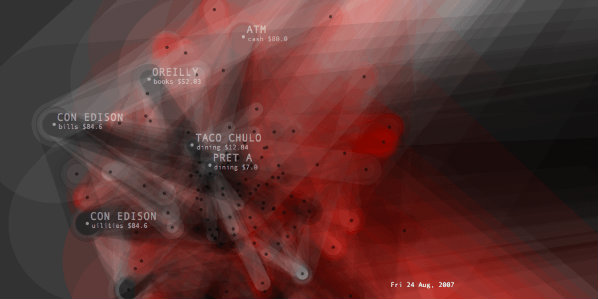
CM: MyPocket discloses your personal financial records to the internet public by exploring essential patterns in your transactions and deploying software to analyse those transactions. The software, which predicts future spending, sometimes determines your future spending choices. Mark B Hansen calls this a “feed-forward” relationship—one where statistical forecasting, future prediction, and probability calculation can code user behaviour “ahead of time,” framing the future-oriented choices of a subject.
What is an example of a consumer choice you’ve exercised that you were directly influenced to make by this software prediction? Did knowing that your personal financial data was being tracked impact your financial management or change your spending behaviors at all?
BA: MyPocket software was able to successfully predict when and where am I going to buy coffee. It predicts ordinary futures. Our lives have such repetitive patterns, which are not so hard to guess right for a supervised algorithm. With MyPocket, I put myself in an experiment of living under excessive forecast about my everyday purchasing behavior. Would I change my habits, would I abide by the predictions, would I care, would I notice, would I ignore? All of these applied at various stages as I lived with this software system for 2 years.
Today, protecting your privacy is akin to quitting smoking or exercising a vegan lifestyle. Changing habits is clearly hard, but once it starts rolling, it causes a big positive change. I believe, in a society of control that monitors, simulates and pre-mediates individual identities in relation to their data trails, behavioural dissidence is superior to reactionary resistance.
CM: You are an artist and technologist. Does one of these identities emerge more frequently in your work? Did your programming skills drive you to explore the aesthetic possibilities of networking mapping? Was there a sequential logic to your artwork as a secondary and subsequent extension of your work in the computational sphere? How do you situate your artistic practice—one that is reliant on a high degree of technological literacy—to the tools of computer technologies?
BA: My art making is a subjective exploration raising questions, whereas my tool making always wants to be objective, tapping an issue with a solution. I practice them in parallel and they feed each other. Making tools helps me examine all kinds of infrastructures closely thus provides lenses for new questions in my artwork. Artistic inquiries help me change my beliefs about the world.
In the first class of an introduction to computer programming course at MIT, students are told that programming is unrelated to computers in a way that geometry is unrelated to geography. Mastering programming takes years. In fact, in my very early work, technology and algorithms had authority on the outcome, whereas later works have been freed from technological capacities.
BA: Do you find that the procedures for mapping with non-digital tools change your artistic strategies and the types of networks you produce? In a similar vein, is the medium of Graph Commons as a digital interface important to the co-collaborative possibilities that this online platform enables? Would you describe the network mapping that Graph Commons enables as an act that is inherently political, or aligned with activist models of representation?
BA: I always start modeling an idea by sketching on a paper, by discussing with people, by taking notes here and there. It is often a contemplative process that I don’t find possible in a digital tool. As the idea gets mature, the amount of related material might not be manageable on paper – then I start organizing it using digital tools, write some code to scale it and observe its extents.
Obviously, digital tools on the Internet are best for asynchronous communication. The Graph Commons data mapping and publishing platform is great for internet-scale data mapping collaborations. Network mapping particularly is a powerful tool, it makes things more transparent. So activists, journalists, researchers, and civil society organizations around the world use it to untangle complex relations that impact them and their communities.
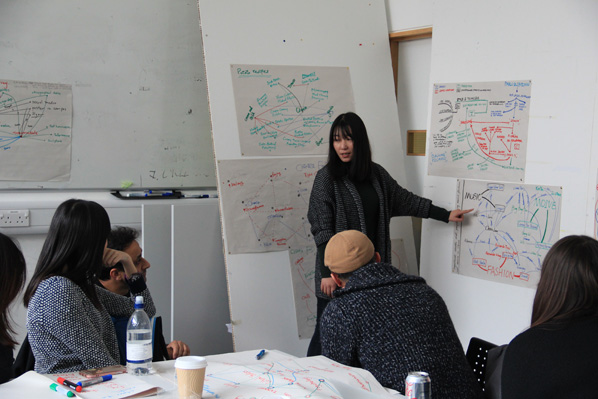
CM: Do you see networks as maps? Monovacation seems to deploy features of both in its networked parody of the commodity forms and repeated images that characterize the tourism commercial as a typology. What are some key distinctions that might separate these two forms from one another in their attempts to frame, visualize, and enclose data?
BA: As I mentioned earlier, I use network as a map vs network as an event separately in my work.
Monovacation introduced network traversal as a method to deconstruct and explore movies as databases. The official tourism commercials of countries in competition with each other have been selected and each film has been divided into the possible tiniest clips. The 3-4 second long clips have been coded with tags. Tags with shared clips are connected to each other (weighted with number of clips) on a network diagram, which runs as a self-organizing software simulation. A new movie has been algorithmically generated through a traversal on this network map, a program navigating from one node to another, following the weighted path among the tags. Seashores from Egypt to Portugal, women from Israel to India, mythological figures from Thailand to Turkey formed an extracted fantasy of “vacation”.
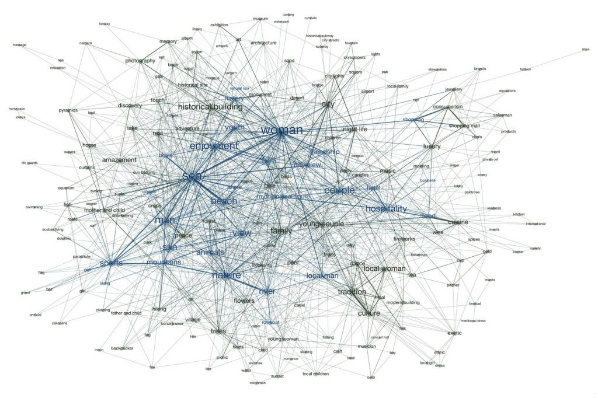
CM: The Graph Commons platform contains an additional axis that static graphics do not: time. How does working within digital media open up new models for orienting the user within data collections, particularly where the ability to represent change-over-time is at play?
BA: Networks are inherently dynamic, undergoing constant changes, both within the composition of nodes, and in the relations between nodes. To help you understand how the network changes and behaves over time, Graph Commons provides a timeline interface. It animates your network map as nodes leave and enter the network and the map expands or contracts in time. The network shape, radius, density, intensity, and emergence of clusters, central and peripheral actors all become observable and comparable using the timeline feature.
CM: Networks are the predominant and paradigmatic episteme of the information age. What kinds of relationalities, phenomena, data collections, or texts do they fail to capture? In other words:
a. What the network is NOT suited to do/perform
b. On speculating through an accelerated lens, what will the predominant formal and organisational structure of the next century look like? Will networks continue to play a role, or will they be completely surpassed by new organisational and structural logics?
BA: Bare network mapping may not be sufficient in studying multilayered diverse network dynamics where actors (nodes) and relations (edges) is not clearly distinguishable from one another as in swarms of species or molecular activity. Moreover, at the heart of capturing data lies the question of measurability. If something analogue can be measured it becomes digital, then it can be linked to other data points and become a subject of a network analysis. I think in this day and age, even emotions, intentions, and desires could be measured to a degree, if not socially reproduced.
In a world where every atom can be addressable with an IP address (IP6), discussion of the possibility of capturing analogue things is increasingly less relevant. What becomes critical is the question of who captures and controls what data owned by whom. Do you own a self-driving car’s data captured from your neighbourhood? Are you in control of your data captured by the network medicine? Are you paid rent for the use of data that belongs to you? Data oligarchies will only continue to grow, and this situation of data dispossession will increasingly constitute what I call data asymmetry for many years to come, until we move from connectivity to collectivity, build purposeful exploitation-free autonomous zones, and reroute our life activities in solidarity.
Regarding the future of organizational structures as imagined to be constituted by cryptocurrencies, something clear from today is that decentralization is not necessarily democratic. It should be deliberately discussed that ones who design the protocols have power and network effects can generate inequality. A blind belief in decentralization would not be so different than a belief in free market ideology. When Poland, Chile, and Turkey opened their markets to the world in the 80s, globally networked corporations penetrated into these markets completely within the laws and yet left the small locally connected actors stagnant, this is one example how network effects could generate inequality.
Featured image: 98.235.73.27, 2016-07-10
Nye Thompson is a London-based artist whose work explores the interface between physical and virtual domains. Her recent artwork Backdoored involves the collection and online archiving of images taken via unsecured surveillance cameras worldwide. Backdoored was featured at Internet Yami-Ichi at Tate Modern in May this year. Backdoored.io, curated by Kosha Hussain, followed as a solo show at Bank Gallery, London in August. Artist Millicent Hawk interviews Nye on the technology, aesthetics and universal conditions that make this work both compelling and uneasy at once.
Millicent Hawk: Backdoored is transparent in its approach – the website tagline reads, ‘Intrusion | Surveillance | Exposure’. And whilst there have been a few (mostly misinformed) concerns aired publicly about the invasive nature to the work since the first solo exhibition of it this year, you’re not actually a hacker and these images existed already before – can you explain how these images are taken and the issues they raise.
Nye Thompson: To me, Backdoored highlights the technological erosion of our privacy and through this work I’m exploring the factors that make us active contributors to this process. A ‘backdoor’ is slang for a feature or defect in a device that allows the bypassing of normal authentication. These images are generated by softbots belonging to specialist search engines which trawl connected devices (the Internet of Things) for security testing. The bots take pictures when they discover an unsecured camera and save them into their search results. In most cases the owner of the camera has no idea this is happening.
For some time now I’ve been interested in the Internet of Things and its potential impact on our personal privacy and liberties, but how do you create artistic discourse around something so abstractly technical? So when I first discovered these images they were revelatory for me because they provided me with a ready-made visual language to talk about these issues. There is also a performative thread running through the project: every day I get sent new images, and I attempt to unpick meaning from their apparent randomness by developing taxonomies and applying them to each one.
MH: So how does one avoid being, ahem, Backdoored ?
NT: If you have an IP surveillance camera in your home then you are basically broadcasting your domestic life onto the internet. This data needs to be protected by setting a unique, secure passcode on the camera. The images in Backdoored come from cameras that don’t have this. Part of the problem is a toxic combination of low public awareness of privacy risks combined with profit-hungry manufacturers and lack of regulation. But these Backdoored cameras are just harbingers of what is to come – a future surrounded by smart objects all collecting and sharing data about us.
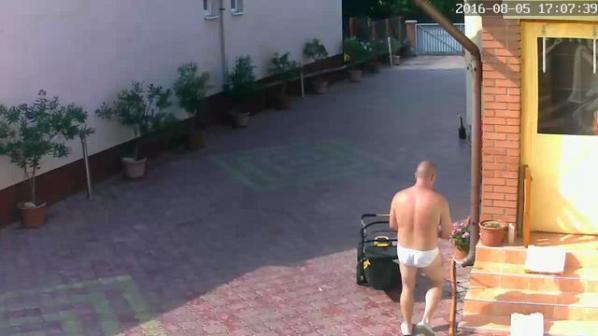
MH: The word ‘Backdoored ’ implies something that’s both disturbing but potentially exciting too, although, with explicit reference to the screenshots of a child or an elderly person in bed, combined with geo-location details – it’s totally creepy. However, those particular images aside, there’s something fascinating with many of the vidcam shots. Bots are set off to capture the image at a single point of finding unsecured domains so people are captured in their domestic settings – at ease in their pants, for example. This serendipitous and incidental timing without a human-decisive moment or any playing to the camera makes these images – albeit voyeuristic – seemingly more representative of the real and something nearer to the truth. So the digital aspect to the dark world of unsecured vidcams brings me intrigue as well as valid concerns over individual rights to privacy.
NT: Yes, although images of people in their homes form only a part of the surveillance images I find; there are wastelands, machinery, bars, building sites, hidden cameras, zombie cameras – forgotten but still broadcasting. They form a kind of covert mapping of contemporary concerns and anxieties worldwide.
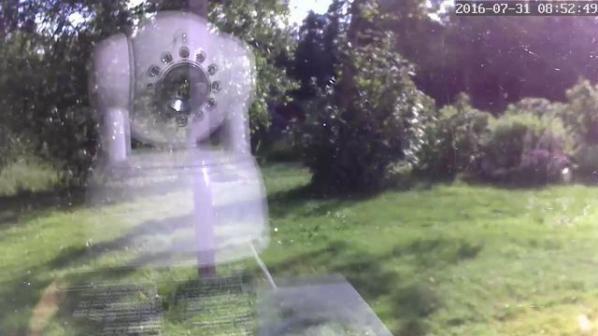
MH: Yes, this is different to public surveillance and government snooping which – for the most part – seems to have been accepted. Similarly to public surveillance though, home vidcams seem an unnecessary reaction to an underlying and excessive state of fear, and the voracity to control; anxieties in these images then are represented through the choice of self-prescribed surveillance.
NT: Yes, it seems like the scenes and objects in these pictures predominantly represent a kind of metaphysical anxiety, or a way to reassure ourselves of object permanence. These are things that we feel we need to monitor constantly in case something bad happens, although it’s not always clear how we would meaningfully intervene. It’s a classic case of a technology creating a need, and a new demand on our attention. Suddenly we have the ability to watch the people and things in our life 24/7, and so not watching can almost feel like a failure to care. Yet at the same time there is a distancing, as we engage with our babies, our elderly parents, our pets, our work colleagues, our possessions – as live video streams rather than through physical, embodied interaction.
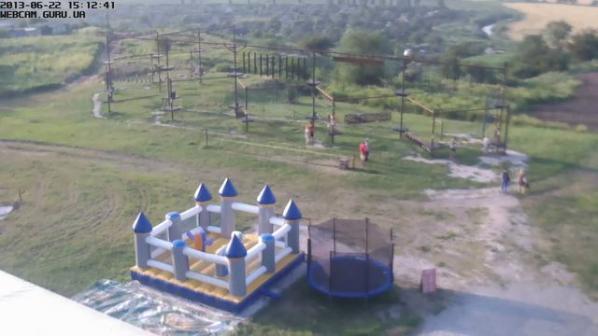
MH: Thinking back to earlier this year, Backdoored was a new idea for you. And something that I – and presumably many people – weren’t even aware was happening. At the time, we discussed the premise for this work and shared our concerns of how ethics get outpaced by rapid technological development. How do you reconcile Backdoored seeing that these images bring greater intrusion to those whose privacy they reveal?
NT: This is an important question. These images are already out there for anyone to find, and more significantly millions of these cameras are insecure and vulnerable, yet, as you said, many people are not aware of these facts. Of course I am conscious that by bringing people’s attention to them I am also amplifying the images, so there are ethical and curatorial challenges here. But these images do already exist and I’m using them in a very direct way – drawing attention to privacy and surveillance issues. There’s immediacy to imagery that resonates when a full-length article might not. I think public reports on privacy issues, by organisations like Privacy International & Big Brother Watch (to name just two), are massively important but they are endlessly firefighting this international problem. Who’s to say art can’t have an effect on these issues too?
MH: Raising awareness helps – last week I made a studio visit to an artist who had a Backdoored postcard on his desk, the tape over his webcam was a recent addition since seeing your work at Tate Modern. But, further to public awareness, lawmakers, regulators, manufacturers and commercial watchdogs need to work together to ensure privacy matters. That said, state surveillance is at a insanely invasive level – I’m thinking of GCHQ’s Smurf Suite and the Investigatory Powers Bill (which targets journalists’ privacy on whistleblowers) – vidcam backdoors perhaps seem trivial for a government to attempt to regulate and, perhaps, are even a welcomed accessory to state surveillance. On the issue of state surveillance, you were faced with some rather heavy legal threats – explain.
NT: Ah yes. Backdoored.io at Bank Gallery this year triggered an official complaint from the Hong Kong Commissioner. One of the works featured domestic scenes from Hong Kong – they seem to use a disproportionately high volume of unsecured surveillance cameras in their homes. First I received legal threats from a Chinese newspaper, then Channel 4 news weighed in with a recorded complaint from the Commissioner and demanded that I give them a (pre-recorded) interview in response. They then broadcast a sensationalised news piece, using a heavily cut version of my interview. The news article attacked me for my use of these images, while at the same time deliberately obfuscating the privacy and technology issues and how the images came to exist in the first place. Ironically, a few weeks later, the media was full of reports that the FBI was advising people to put tape over their webcams to protect their privacy!
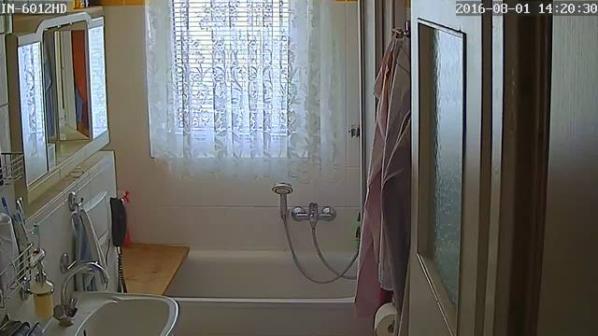
MH: Ha, fifteen years too late. In terms of the complaint from the Chinese Commissioner for Hong Kong, it seems rather duplicitous that a country with the most pervasive internet censorship to maintain control over it’s public (I understand ProtonMail has a large Chinese user base) would be interested in threatening a UK artist here – what’s the percentage of webcams that are manufactured in China?
NT: No comment 😉
MH: So what’s next for Backdoored and how do you see the future for privacy?
NT: Backdoored highlights this very real and disturbing fact – these images already exist. What does this imply for us now and what does it imply for the future? Backdoored foregrounds privacy and surveillance, although, as an artist, I’m also interested in these images as material: the social and cultural messages encoded within them; their robotic origin; and the complex responses they evoke in the viewer. These images are signifiers for some of the epic power struggles* currently taking place at the cutting edge of technological development. This surrendering of our privacy seems like a one-way ticket; once we’ve lost that could we ever get it back? What we want for our futures must be dealt with now.
* In recent weeks we have seen just how easily these unsecured cameras can be ‘weaponised’ by hackers. For example, millions of these cameras have now been infected with the Mirai and other viruses. This allows them to be conscripted into giant ‘botnet’ armies which can be used to attack or censor other parts of the Internet.
Nye Thompson’s Backdoored will be in TERMINAL, a group exhibition opening at Avalanche in December. For 2017 she is planning a UK touring show, and also a panel discussion on issues raised by the project. Event details can be found on the Backdoored website.
Contact:
@nyethompson
www.Backdoored.io
In many of the projects by French Vancouver-based artist Nicolas Sassoon, space and how we perceive it are two of the most inquired questions; it could seem casual that he mostly makes GIFs, but looking at his works you’ll realise the necessity of reflecting on environments, both artificial and spontaneous, using such a specific format. His works ask the viewer to not stop just at the first impressions; sure, most of his GIFs are astounding in terms of animation, use of colours and shapes, but all this technical skill is employed for inquiring our position within environments – not just laptop monitors, but real, concrete buildings and dreamy contexts as well. This is just one of the many introductory points from which we can start talking about INDEX, his latest work which has been featured on the homepage of Rhizome in the first weeks of October and that can be viewed here, on his website.
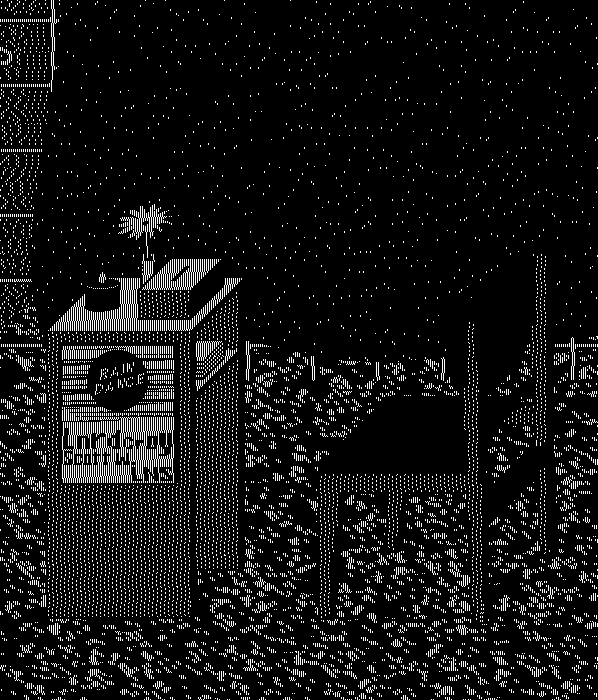
FL: One of the first things that struck me about this project is the relation between hypnagogic dimensions and the technical features of GIF format. The never ending loop of events and the way in which you can change your perception of the same object are important aspects of both; I wonder what you do think about this, especially from your point of view as an artist.
NS: INDEX is representing a project space/music venue in Vancouver BC where I co-organized electronic music events in 2015. It is depicted in the process of being setup for an event titled Rain Dance which happened in August 2015. When I started working on INDEX I was curious about the process of rendering a detailed scene from memory. I had many memories of the venue during the installation phase, a few days before the event. I began to render these memories and details from the installation period within what I could remember of the overall architecture. In that regard, INDEX is an effort to recollect and fixate details about this particular space at this specific time. Some parts of the work are relatively accurate while some other parts are imaginary. The hypnagogic and effervescent visual aspect of the work is informed by this process. It’s also informed by the nature of the events that took place at this venue.
FL: Speaking of memory, what could be a connection between it and GIFs in your own opinion? What are the technical features of this format that could it make appropriate as mean to show memories? Since you mostly worked with GIFs for many years, I wonder if you started to experience events and places as objects suitable to be translated into this format.
NS: The most tangible connection I can think of between GIFs and memory has to do with the history of the web since GIF is an image format that has survived throughout the evolution of the Internet; it is an ancient species that has survived numerous cataclysms. In my work, the connection between GIFs and memory comes from a desire to reconnect with specific moments and places, to create a form of record of these memories. The representation of these memories is an opportunity to formulate mental images of architectures, landscapes and other elements into visual forms that are minimal, incomplete, and encoded. I also enjoy using the GIF format as a very subjective archive; for example, in opposition to the objectivity of 3D scans from historical artefacts. INDEX contains some historical and factual data but it’s also completely skewed by my own perspective.
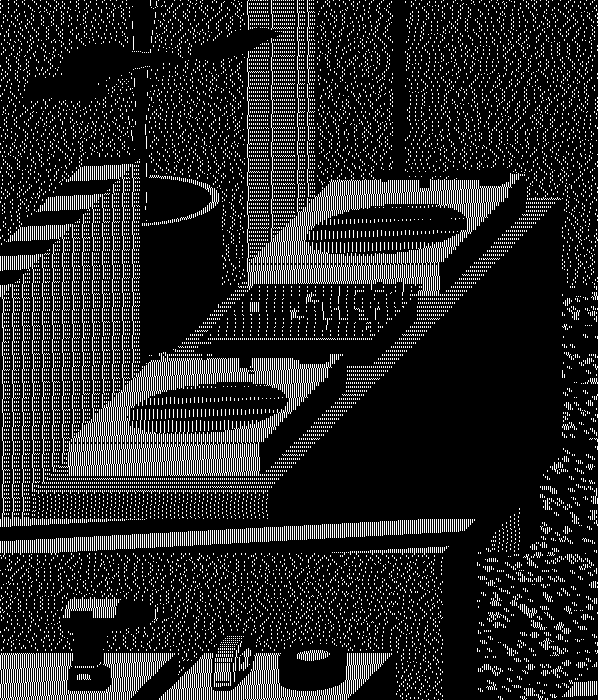
FL: This is an interesting reflection; I like the concept of the GIF format behaving as a selfish gene, in terms of adaptability throughout many different contexts and times. In your own opinion, what is the reason behind the fact it has so much importance in the last 20 years (and counting)? I can’t help but think about the relation between the ways we use to connect to the internet (ie the devices we use, the span of time we stay connected, the reasons we’re connected, etc.) and the faster and faster speed of our internet connections. What do you think?
NS: The continuous presence of GIFs online has to do with the format being perfectly adapted to web environments and its relentless user applications. If you look at early HTML pages, GIFs were always a highlight; they allowed users to add dynamic elements throughout their content. Inserting animations in the middle of text, images or diagrams was a novelty. GIFs embodied that novelty; they were a simple and accessible display of something “multi-media” so they became instantly thought after, heavily used, and stored into databases. GIFs are still pervasive today in forums as image profiles or as punctuation in comments; DUMP.FM personified that within the net-art community, but if you look at any forum or social medias platform it’s still present. From a technical standpoint, the GIF format is attractive because it works like simplified video editing; you set up an image sequence, decide on the speed, and loop it forever. Aside from the APNG format – which never really took off – no other image format offers these capabilities. It covers fundamentals, from traditional animation (frame by frame) but also offers flexibility in terms of input since you can make GIFs from literally anything. The looping function has infinite fields of applications and is impactful visually, which is perfect for the attention seeking nature of Internet space.
FL: Yes, GIFs have been very important in the first years of the Web especially because they bring depth to Web environments; the fact that artists like you are bringing this format from the usual contexts (ie laptops’ monitors, smartphones’ screens, etc) to physical spaces totally makes sense to me. In both cases, we’re talking about fixed environments where the never ending GIF’s movement affects their perception. What do you think? What does it change when you work on a project that will be on display on a Web site and another one which will be hosted on the facade of a building? I’m especially thinking in terms of spaces and perception of shapes and colours…
NS: It has been a challenging process to exhibit screen-based works into physical space, mainly because screen space and physical space are so different in terms of experience. Looking at something on a laptop screen feels intimate, but watching the same thing in a gallery or museum is more of a social experience determined by the immediate architecture. I think a lot in terms of experience in my work and I’ve come to adapt this thought process for installations. I determine the scale of my installations based on the architecture in context. I work primarily with projections whose shapes and sizes references windows, doorways, or other architectural features appearing in the space. These referential elements articulate my work in space like an environment adjusted to the architecture; an added layer which plays with the configuration of the space. I often see my installations as projected sets, or giant digital props injecting imaginary scenarios within architecture. It feels like a natural extension of what I’m trying to do with screen-based works, but it also really engages with the architecture in context.
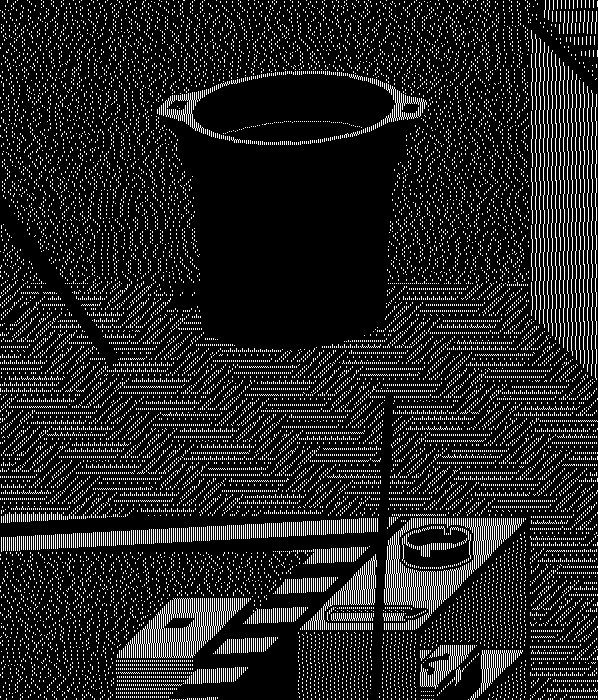
L: Speaking of the importance of GIFs in our daily online routines, I wonder if and how the so-called GIF art has been influential in respect to the broader use of this format by general public; I’m especially thinking to Simple Net Art Diagram (1997) by MTAA, to the way it used the features of this format to add a little magic to what would look like as a diagram – in other terms, do you think the irony, the cleverness and the experimental approach of the first artists working with GIFs have been understood and implemented by non-experts?
NS: I find early GIFs made by artists as influential as the GIFs made by early web designers, scientists, and other random users involved with the format. GIFs are created from pretty much anything and there has been an infinity of cross-overs in terms of influences. So many users have gone beyond the typical level of involvement with this image format, it would be presumptuous to give credit only to the artists. Still it’s amazing to see the format being acknowledged in the recent historical work on Internet Art, and I’m hoping to see many GIFs in the new Rhizome’s NET ART ANTHOLOGY! I also believe the history of GIF is a history of the vernacular which would deserve its own separate study.
FL: When you see the work, you can’t help but think of ’80s computers; in other terms, the black background and the blinking white dots and lines suggest this association. Can I ask you why you did choose this specific aesthetic?
NS: One of my interests for this type of early computer imaging has to do with the formal and optical properties of these graphics; the way they behave on screens and how they produce kinetic experiences. This is visible in works like PATTERNS where I focus on abstracted animations. Working with these out-dated graphics feels similar to working with an engraving technique or a type of craft that belongs to a certain time period. Some crafts and imaging techniques tend to be associated with specific eras. In the case of early computer graphics, their era is the end of the 20th century which I feel strongly connected to. I also look at these graphics for what they generate in terms of aesthetic experience. They are the primary visual language of the display technology we use today, and they’ve generated many revolutions in the way we perceive contemporary images.
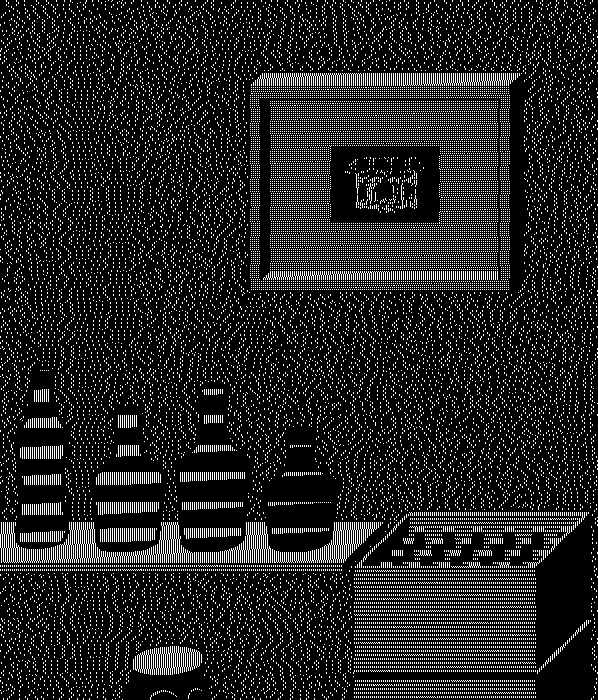
FL: You just highlighted one important aspect of your works as whole; This makes your projects, on one hand, to look modernist as they explore how minimum information can create a kinetic effect, rooted in the belief that objects can be reduced to quantifiable patterns and shapes; and on the other, they are nostalgic, reminding us of the times when when creating digital pictures was not so dissimilar from artisanship. What do you think? Am I wrong?
NS: I’ve always been attracted to the idea of developing a craft or skill as far as possible. My focus on early computer graphics was a conscious choice in that sense. It came quite late in my practice when I felt the need to make art for my own sake, without professional incentives. My generation grew up with the first home computers and there is often a generational shift of perception when it comes to early computer graphics. For me, this aesthetic is linked to childhood, fantasy, entertainment, while for other generations it doesn’t have the same emotional input. But no matter the generation, this aesthetic has a definite “time-stamp” and most audiences will associate this aesthetic with that “time-stamp”. The early stages of my practice were very focused on how to appropriate this aesthetic, to turn it into my own visual vocabulary and to articulate it with elements inside and outside of this specific “time-stamp”. I feel many affinities to painting because of this relationship I have with the visual components of my work.
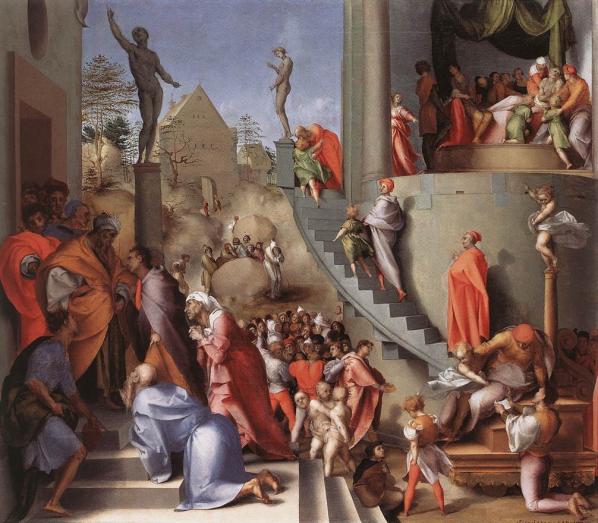
FL: Speaking of painting, the other day I was reading The Social History of Art (1951) by Arnold Hauser and one text passage struck me in relation to INDEX. “[Mannerism] allows spatial values, different standards, different possibilities of movements to predominate in the different sections of the picture. […] The final effect is of real figures moving in an unreal, arbitrarily constructed space, the combination of real details in an imaginary framework, the free manipulation of the spatial coefficients purely according to the purpose of the moment. The nearest analogy to this world of mingled reality is dream.” Now, I’m not suggesting the idea that your project is mannerist, but I can see some shared features; the way you constructed the space makes me feel a set of arbitrary rules working underneath the blinking white lights, the objects you depicted are somehow real but fixed in a non-realistic dimension. What’s your opinion?
NS: When I began this project, I wanted to develop a new direction that I approached with previous works like STUDIO VISIT. I wanted to portray a real space and make it exist within a different dimension. I was picturing an animated relic, completely isolated and playing itself indefinitely. I focused on my memories of the space and on the reasons that led me to render it. Index was a project space which felt important in the cultural landscape of Vancouver, it also had its own personality. I knew the venue would eventually disappear and be forgotten for the most part. I wanted the work to become an expressive record of this, charged with energy and subjectivity. There is also a form of nostalgia expressed in the visual language I use, and I wanted to articulate this sentiment with the work. This is what led most of my formal decisions. I worked with mental images of the space seen through a lens revealing the energy of each object, and how these objects were infused with the activity of the space. For instance, some parts of the floor were made of these very small sections of hardwood flooring, and it was an area where people used to dance. This translated into a very dynamic area in the work, like a multitude of small conveyor belts imbricated into one another.
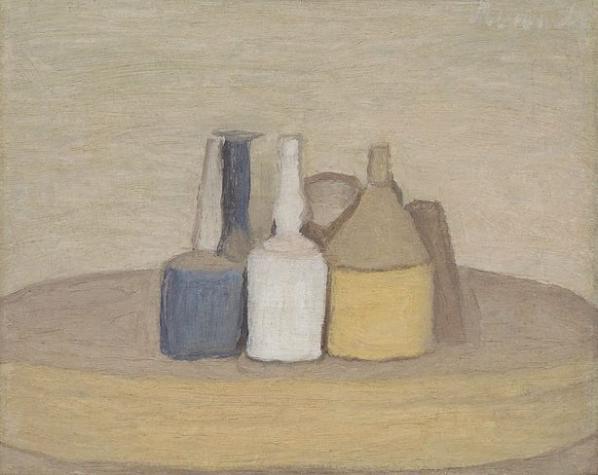
FL: It seems to me you used isometric projection to depict the objects, a technique employed mostly in technical and engineering drawings; in fact, the scenes look real but not physically reachable, as if they exist on their own – in other terms, they look eternal, recalling the still life paintings by Italian painter Giorgio Morandi. In his case, unlabelled bottles and unrecognisable objects make the scenes unhistorical and closed in themselves; I think it’s interesting the fact you both employed similar devices to depict still life objects – although it’s clear there are many important differences between your works. What do you think?
NS: I’ve always been interested in using screen-based graphics to express the materiality of physical objects or imaginary structures. This is very apparent in early works like FREE CUTS. These works were created as sketches for sculptures, but in the end, they embodied the sculptures on screen. Like paintings, digital images exist on their own plane, and they can develop their own materiality. In my work, this materiality often manifests as a tension between the flatness of the screen and the sculptural properties of the graphics. Sometimes the work feels like it resides in its own plane of existence, like an object stuck between two worlds. This image of something stuck between two worlds is dear to me because it feels so relevant to my experiences on screens. Things can appear so tangible and so distant at the same time, so desirable yet completely unattainable. With isometric perspective, I find a lot of interesting ideas in ancient Japanese works. Isometric perspective is nothing new but it seems to hold a stronger imprint from engineering drawings and video games than from these much earlier art forms. In the case of INDEX, works like The Tale of Genji – a scroll depicting Japanese interiors from the 12th century – were very inspirational. The scroll depicts social scenes with a good level of detail, and it gives the feeling of overlooking the architecture. The vision is fragmented like in INDEX, and you have to unroll – or scroll – to see the rest of the space. These old works feel very contemporary, probably because isometric perspective has been so used in computer graphics.
Featured image: ToolsForAction.net / Artúr van Balen and QueerSport.info / Zeljko Blace, ‘POP-UP RAINBOW’, 2014
Zeljko Blace is working in(-between) contemporary culture, media technologies and sport, cross-pollinating queer, media and social activism. He is one of the initiators and a co-curator of the project ‘contesting/contexting SPORT 2016.’
to reclaim the field with art and activism
exhibition and program in Berlin (08.07-28.08.2016)
at nGBK and KunstraumKreuzberg/Bethanien
http://ccSPORT.nGbK.de
www.facebook.com/cc.sport.2016/
www.twitter.com/CcSPORT2016
The exhibition and program contests the field of SPORT through critical art and activist practices. Coming from feminist and queer practices, the project aims to challenge discrimination and encourage emancipation. SPORT is contextualized from its declarative neutrality and autonomy, rendering diverse influences, but also experiences and conditions of SPORT realities visible.
Organized by the ccSPORT international working group of the nGbK including also: Caitlin D. Fisher, Carmen Grimm, Mikel Aristegui, Sarah Bornhost, Stuart Meyers, Imtiaz Ashraf, Andreea Carnu, with support from: Tom Weller, Alexa Vachon, Ilaa Tietz, Tabea Huth, Barbara Gruhl, Steffy Narancic, Tristan Deschamps, Coral Short, Gegen Berlin, Schwules Museum, and advisors: Alex Brahim, Jennifer Doyle, Philippe Liotard, Jules Boykoff, Stephane Bauer and †Frank Wagner.
BOSMA: The ‘contesting/contexting SPORT 2016’ exhibition and program shows a wide range of uncommon perspectives on sports, questioning cultural systems embedded in them we hardly ever think about. Why did you make this exhibition?
BLACE: In this ‘networked’ and globalized time we paradoxically live out a multiplicity of highly fragmented realities, niched in specialized interest groups, while ‘others’ feel they can not contribute or even relate to them. It felt like this to me in my work during the late/post 90s with tactical and net media activism/art – fully disconnected from queer politics and sports organizing for which I had an increasing interest. In general the field of sport has not been part of the lives of many intellectuals, activists and creatives. Many had bad (even traumatic) experiences with sport in childhood and adolescence, feeling alienated, or simply not recognizing it as a possible field to develop work in (unlike right-wing populists in tribal fan cultures). Simply put, the sport system has been taken for granted in its current form. Hence, my first curated sport exhibition title, paraphrased ‘sport hater’ Chomsky, in ‘Another SPORT is possible?!.’ (2012, Galerija NOVA, Zagreb, Croatia). My Berlin colleagues and ccSPORT co-founders Caitlin Fisher, Tom Weller and Carmen Grimm felt the same about the separation of sport from arts, activism and academic research. Together (with the support of exhibition spaces nGbK and Kunstraum Kreuzberg/Bethanien) we made plans to instigate and support intersections, cross-pollinate practices and perspectives between these fields through an exhibition, program and media work. We strongly felt the field of sport would never become self-critical and reform, nor would it engage with a wider audience beyond a given consumerist mode, if left to the managerial mentalities and the opportunism of its leaders. We need to reclaim the field of sport together to change it.

Is this the first ever exhibition criticizing the cultural and political dimensions of sports, and if not, how does your perspective relate or differ from earlier approaches?
I can not say with complete certainty what other group exhibitions on sport critique have taken place before. There have been many on a small scale, marginal in comparison to the huge exhibitions that ‘celebrate’ sports and are used as decor and entertainment accompanying sport spectacles (a notable exception is the seminal work ‘Electronic Café’ by K. Galloway & S. Rabinowitz at the 1984 LA Olympics, that actually provides space for interaction/discussion in between different city locations). There were also a few archival exhibitions looking at historical artifacts and documentation critically, as well as some that were experimental and playful (such as the Fluxus Olympiad, scripted as non-competitive multi-sports event) but these approaches were somewhat one-sided. We aspire to create a basis for both critical reflection and informed envisioning of possible developments, by looking at personal perspectives and artistic visions, next to grass-root alternatives and interventions.

The main threads in the exhibition seem to be gender, queerness and the connection between culture, commerce and rules in sport. Are these the main issues at hand?
Indeed our starting points were feminist and queer positions, but we were also very interested in the wider range of intersections and systemic issues within the field of sport that we could connect, rather than focusing on single-issues like homophobia or racism as is often done in mainstream sport campaigns. We decided very early on that the project would not be about identity politics, but rather about the multiplicities of axes of discrimination. There is a spectrum of emancipation efforts and practices that inspire us to think outside of gender norms, result-focused competitions, spectacle creating events and omnipresent ‘development’ narratives – which ignore for example that women had more access to certain sports historically in different geographies then they did in past 30 years of globalized neoliberalism.
augmented_profile from Diego Grandry on Vimeo..
How do you see the role of the media in the perception of sport?
Traditional broadcast media are the key stakeholder in the Olympics and similar sporting-spectacles. They have made the organizers of large sport events addicted to their huge broadcast contract revenues, but then inherently push for the spectacle of mega-events even further at the cost of other aspects. Newer sports that have evolved around this economy of attention have often sexed athletes (most visible with female beach volleyball) or at least contributed to enforcing gender stereotyping (like the feminization of soccer/football to the point that there are almost no short haired players at the Olympics). Instead of actively evolving with the progressive trends in sport, most broadcasters deepen the stereotypes; too often commenting on the marital status and appearance of female athletes, or referring to them as girls. Athletes from smaller countries, and sports that receive the least coverage are often looked down on, projecting neo-colonial relations on them (or hosts as in Brazil).
With internet networks and ‘social’ media the situation it is more complex as the interactive nature of media often allows for feedback and multiple standpoints in the same, or various foras. These media diversity brings to the surface and exposes critical minority voices and individuals who are able to argue against norms and question their necessities. For example, the tokenizing of muslim female athletes during these last Olympics received great reactions including historical facts about muslim women winning medals in the ‘80s and ‘90s. Also the outing of gay athletes by one reporter, was widely criticized online and the media hype reboot around Caster Semenya was compensated by internet and hybrid media (i.e. AJ+) publishing numerous expert articles and even giving voice to many (including former opponents critics converted to supporters as in case of Australian runner Madeleine Pape).
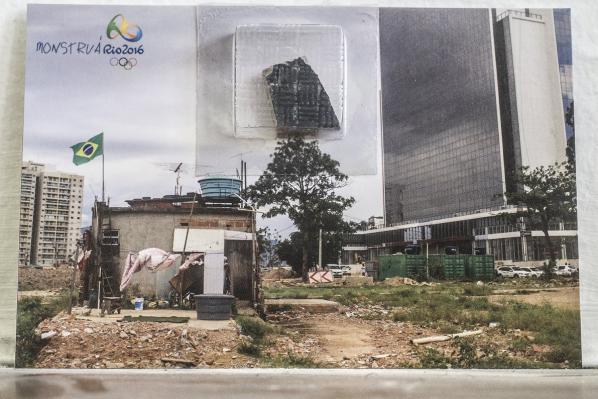
The connection between rules and cultural systems in sports is fascinating to me. You have worked as an organizer/curator in Multimedia Institute/MaMa before focusing on sport. What is your perspective on the rise of technological systems in the enforcement of rules, like for example drug testing or electronic goal-line and court line tracking?
Actually, the technological aspects of sport are the ones that still need to be addressed more specifically (technology centered single sport competitions exist since years, with The Cybathlon as their olympics premiere in Zurich, October 8th 2016). They not only re-enforce certain types of (measurable) norms, but also reduce the complexity into what appears to be arguable ‘logic’ and ‘common sense,’ while hiding other aspects (psychological and even aesthetic). Drug testing is an important measure of control, but is usually focused on the supra-performance of medal-winning athletes, rather than concerning itself with more generally applicable questions: what are the drugs, who has access to them and why. As long as the prevalent ‘production’ of results at all costs is dominating sports, the goal of ‘clean’ sports regardless of technological advancements in control will remain impossible. Gender policing at the Olympics has had a lengthy technological path, starting with visual and medical inspections, moving on to DNA and hormone testing and nowadays being fully questioned. Measuring and tracking technologies have the most interesting potential, not only for confirming line calls but for reshaping sports into allowing potentialities of variable norms and measuring based on generative fields/infrastructures. However, this kind of innovation is more likely to develop in the edges of eSports industry (that is pushed by novelty rather than burdened by traditions and conventions) and then maybe get normalized into traditional sport competitions once existing sport federations and regulatory bodies start losing young markets.

It was important for us to initiate conversations and collaborations that were not in place before, especially between those excluded from the mainstream sport system. We stirred up some interest from academic researchers for immediate follow-ups, but also informed some activists and artists of each other’s work. Ideally this could be developed further to elevate the critical and creative work in the field of sport and address issues in multifaceted ways.
We hope the exhibition and program enabled visitors to develop a more articulate position rather than just LOVING / HATING SPORTS, maybe supporting our platform — and ideally also inspired them to build personal or collective proactive relationships to sports. Maybe through practices of engagement against mega-spectacles and hyper-commercialization of sports, while supporting/partaking in grass-root sports or reforming the mainstream system.

Now we look forward to have the time for reflection after the intense work of materializing the exhibition and the extensive events program, as well as to see what future sport events could be interesting to contest and/or contextualize. One of the most important follow-ups is establishing an online space for sustainable communication, exchange and sharing information, know-how, methods, most likely using wikis, maps and media that came out of our research and workshops during the summer exhibition program.
This will be ncluding video of closing lecture by prof. Jennifer Doyle on art, sports and questioning the origins and need for the gender segregation in sports! More info will be appearing on our working website http://www.ccSPORT.link/
Techno-feminisms are, once again, on the ascent. The Xenofeminist Manifesto, published in 2015 by the collective Laboria Cuboniks, is a provocative and elaborate example for the renewed exhortation for gendered bodies to merge with technology, rationality and the sciences in order to defeat white supremacist patriarchal capitalism. Cornelia Sollfrank, a practising technofeminist artist with a long history and rich experience in building and contributing to cyber-feminist-net-art platforms and organisations, and Rachel Baker, a former ‘net artist’ currently involved in collaborative feminist performance and writing practices, are curious: What drives the resurrected hype around techno-feminisms? What is new about the future 30 years after Cyberfeminism? Will the current techno-feminist virus take hold? Or has recent history resulted in an aesthetic immunity to the strategy of “seductive semiotic parasites?”
CS: Who is Laboria Cuboniks? How did you meet and why did you decide to work together?
LC: We are currently six women spread across three continents, all coming from different disciplinary backgrounds which gives us access to cover a broader territory of thought than working alone, and also provides us an intensive context for sharing our discrete approaches. We met in 2014 at a summer school in Berlin (Emancipation as Navigation) – which was equally a transdisciplinary affair focusing on developments in neo-rationalism. We decided to work together to address the rather quick, dismissive reactions that were circulating at the time surrounding neo-rationalism and accelerationism, as being de facto (and permanently so) cis-white masculine pursuits. While the historicity of some of these ideas most certainly does fall into that category, the consequences of brushing off things like reason, science, technology, and scalability as being enduringly locked into patriarchal regimes, seemed to us a serious limitation when trying to think an emancipatory politics and its necessary feminisms, fit for an age of planetary complexity.

CS: It hardly needs mentioning that there has been a feminist history of reclaiming reason, science and technology. In your Xenofeminist manifesto (XF) [i] you are alluding to both earlier technofeminist concepts, including cyberfeminism, but also to accelerationist ideas. What is your challenge, if any, adding a feminist agenda to a philosophical project that has largely been based on ignoring gender issues? Would XF have ever come into existence without accelerationism?
LC: Certainly the original Accelerationist Manifesto (MAP) did nothing to address gender politics, in a way mirroring its Marxian tones insofar as Marx himself also ignored gender and the types of labour (specifically care and reproductive labour) associated with a binary gender structure to which females have historically been subject to. MAP was a manifesto, which, by form alone is forthright; cannot address everything and is scant on nuance. Our own manifesto is no different in that regard. What we read from it, rather, was a demand for a scalar approach to leftist politics that can affirmatively face up to our situation systematically – the scope of which necessitates massive collective and collaborative mobilisation (which further entails the de-demonizing of the word ‘power’ as it is often portrayed in purely horizontalist approaches). XF responded to some of the general diagnoses mapped out in the MAP, but in its own terms, and opened up other territories for thought neglected by MAP. It’s instructive here to use this as a fruitful example against the type of puritanism that seems to be plaguing much of leftist efforts of late. When we don’t agree with every point, when we are offended at others, when we put all interpretive emphasis on authors’ biographies, we can end up dismissing entire thought-projects in one shot – rather than working out conceptual / pragmatic weaknesses and directing them, augmenting them otherwise. To be clear this isn’t about being conciliatory and taking every position on board – that would be pure triviality – but it is to say that we on the left desire some general transformations. How can we move beyond the game of ‘being right/superior’, of being locked into certain theoretical dogmatisms, of pissing perimeters around intellectual territories for our personal success in the name of a leftist-fashionability, towards the construction of useful concepts that can honestly respond to our complex reality? None of these concepts will ever be possible by a single ‘heroic’ actor/thinker.

CS: I can understand the desire to leave theoretical dogmatisms behind. This is also what we have tried with the Old Boys Network: to open up the term cyberfeminism and offer a platform where diverse and even contradictory concepts could meet. This entails, however, the problem of creating a common ground which is needed for collective agency… Some of the basic claims of accelerationism – that you are sharing – affirm an emphasis on rationality, universalism and self-mastery as well as the dismissal of traditional leftist political beliefs in micropolitics, direct action, inclusiveness, autonomous zones, politics of localism and horizontalism. Therefore, I’m wondering what agency could mean in a xenofeminist context.
LC: These ‘traditional’ leftist forms are only one side of the coin – the ones you mentioned seem more recent historically speaking, but there is also a long history of counter-hegemonically proportioned leftist activity. The danger in binding a leftist politics strictly and solely to a politics of immediacy (presentness, localisation, horizontalism, etc.) is that it seems ineffective at tackling globally-scaled systemic injustices (both structurally and ideologically), often existing in affective or symbolic form alone. The said, all politics occur in a local form – and that’s why a total dismissal of ‘localism’ does a great disservice to the ultimate task at hand (what we might envision as a postcapitalist turn) – but of course it cannot operate in isolation (as many of those with an investment in localist politics themselves acknowledge). The point is to articulate a politics that has the capacity to move between these scales that are commensurate with global reality, constructing vectors of connectivity that transverse these localisations (not only with regards to humans, but to things and disciplines of knowledge as well). Transiting between such scales (between the concrete here and now, and the untouchable, yet thinkable abstract) is a requirement for 21st century emancipatory politics, involving an expanded conception of ‘specificity’, ‘particularity’ and ‘situatedness’. These have been (and continue to be) crucial, contra-modern concepts developed in-large by feminist, post-colonial, queer and sub-altern discourses, but, like every theoretical proposition, have perspectival limits and require bootstrapping within larger ‘field’ conditions. Every difference or particularity exists in relation to something else, it’s embedded so it cannot be extracted and analysed in isolation. The more complex political question to us seem not only identifying/describing (or locating) a site, particularity or identitarian difference, but looking towards the field context as a kind of glue; that is, to approach the field context in which those situated differences experience structural discrimination or unjust advantages and to contemplate how that field context can be manipulated otherwise.
CS: I see your point, and I think it is exactly the complexity of the global situation which makes it impossible to come up with the one universal theory – which is what you are demanding?
LC: The demand would certainly never be for ‘one’ universal theory, but rather for a new theory of what a universalism on the left could mean today. The concept itself needs to be reformulated if it is to signify a non-totalitarian totality. This is where the metaphor of seeing the universal not as a top-down schematic, but as a type of artificial ‘glue’ that needs to be constructed is useful. The universal needs to be seen more as a kind of hosting condition; it is not ‘there’ to be unveiled; it is not a diagram to plug-into; it is an abstraction we urgently need to create in order for maximal human and non-human solidarities to be forged.

CS: Obviously, these ideas of universalism, totality, abstraction and scaleability are adopted from accelerationism that, nevertheless, remains somehow unaccomplished without gender politics? Is this the reason that you have set out to renew technofeminist thinking?
LC: One of the most pernicious critical reflexes against accelerationism (and we need to be clear we are talking about left-accelerationism) was that it was a Futurism 2.0, based on techno-utopianism and brute, masculine virility. While no one is trying to ‘enlist’ people for the accelerationist cause (some amongst us find the term itself quite misrepresentational to the project it espouses), we felt it was necessary to mine the field in two directions: to see what could be usefully applied to contemporary gender politics, and heighten the techno-feminist lineages of several claims made in the MAP. There are a myriad of points in which accelerationist politics intersect with (and are indebted to) feminist thinkers – as for instance with Judy Wajcman’s insistence that technology will neither save us, nor enslave us; but it requires refined analysis in the context of how it is used. Such a position echoes claims made in the MAP that advocate for an examination of the affordances of particular technologies rather than outright celebration or dismissal. Other thinkers associated with the neo-rationalist strand of left-accelerationism, like Ray Brassier, also tend to reverberate certain historically feminist positions, like the Promethean feminism of Shulamith Firestone when addressing the project of refashioning the human; or his emphasis on the use of abstraction for human cognition which also draws upon someone like Donna Haraway as a response to theoretical limitations ushered in via postmodernist positions.
CS: I guess tracking the feminist lineages of accelerationism could be an adventurous project in itself. For reasons of practicality, let’s stay with one example here. Building on Donna Haraway’s anti-naturalist Cyborg Manifesto (1983)[ii], cyberfeminists claimed to rebuild and repurpose technology in order to apply it for emancipatory purposes. At its core, the Cyborg Manifesto is about deconstructing traditionally Western antagonistic dualisms such as human-animal/machine and physical/non-physical. Haraway shows the taxonomic function of such categorisation and how it has been used to identify and construct “the other” in order to establish unjust power relations. She also emphasizes the importance of new technologies as playing an essential role in addressing, challenging and overcoming these dualisms. How does XF exceed this theoretical framework?
LC: We are quite theoretically aligned to the complexities inherent in Haraway’s work – cyborgian concerns – which examine human/machinic coupling adapted to an age where that coupling isn’t necessarily restricted to silicon chips and hardware, but it equally refers to the very ability to hack one’s biological/endocrine operating system. What we glean from such an understanding, is that we can’t simply ‘invest’ in the virtuality of online being as an emancipatory category unto itself, and we need to focus on how virtuality can be better interfaced with material existence. Furthermore, the sprawl-like functioning of online life has since been consolidated by a movement of deep centralization (mainly one search engine, one shop, one social media platform, etc.), so our collective efforts require systemic consideration. We need to conceive of larger structures of governance/justice that are commensurable with these new couplings; we need to focus on the construction of a milieu where the real and virtual, abstract and concrete couplings are politicized towards an emancipatory horizon.

OBN Readers (1998, 1999, 2001). Available online at www.obn.org
CS: Your manifesto stands in the tradition of a whole series of feminist manifestos like the Manifesto of Futurist Woman (1912), the SCUM Manifesto (1969), the Black women’s Manifesto (1970), the BITCH Manifesto (1972), the Cyberfeminist Manifesto for the 21st Century (1991), any many more [iii]. The cyberfeminist alliance Old Boys Network, however, agreed in 1997, at the end of the first Cyberfeminist International, to undermine the character of a proclamation by publishing an anti-manifesto… Why did you return to the traditional form of a manifesto – including its limitations – while at the same time claiming that what is needed is a refined analysis of technology in the context of how it is used?
LC: The manifesto, above all, gave us a highly compressed form through which to achieve a maximal libidinal engagement with ideas. There’s a reason why this form seems to be proliferating of late across movements; it’s quick to read online and can be readily shareable in snippet form. Those stylistic and factors of dissemination played a crucial role in deciding to write in an aphoristic way. As Sarah Kember puts it in her recent work on “iMedia”, the writing strategies common to manifestos ‘serve as hinge points between description and reinvention, art and activism, critique and creativity, writing about and writing out’. As such, there is still a great deal that the manifesto can do.
CS & RB: This takes us to the question of strategy. You are describing your strategy as the creation of “seductive semiotic parasites,” and we are wondering, if you understand your manifesto as a fictional scenario, or rather as political theory. We noticed, for instance, that you refer to ‘hyperstition’, a term originally employed in the mid-90’s to describe auto-loading ad windows during the delay incurred when the browser loads the main content – i.e what happens in the gaps created by the central activity. More latterly, it was used as an allusion to the practices of computer-based networked literatures (cf Simon Biggs, ‘The Hyperstitial Poetics of Media’) of which there is a notable precedence (Doll Yoko, Mez Breeze, Mark Amerika… etc). What can these linguistic forms and fictions achieve in terms of a politics? What can fiction writing and the creation of myths as literary forms achieve in terms of politics?
LC: We reference ‘hyperstition’ directly only one time in the text. It’s a disputed concept within the group; disputed not in the sense that it doesn’t ‘exist’, but disputed in terms of its operability or the ways in which hyperstition could be guided. The signification you mentioned is a bit foreign to us – we’ll have to check that out! But as far as we used it, it was to indicate the process whereby fictional entities become real. We can see many instances of this phenomenon at work, especially in finance where the sheer (collective) belief in a future occurrence can instantiate that very event, as in speculation. It is one thing to identify existence of hyperstitional operators, but it is another to understand and possibly leverage this type of novel causation they seem to exhibit. So, it’s not a phenomenon one can simply ‘celebrate’ as such. Some of the people – like Nick Land – who coined the term rather happily prognosticated dystopian visions as a result of its deterritorialising force. If XF or any other emancipatory project is to strategize hyperstitionally, it seems that it would be most effective, when conceptualized through the lens of contemporary power operations. Why are some fictions able to permeate reality (and by whom) and why do others simply fade out? One of the main qualities of hyperstition, or these fictional operators is that you can’t quite pinpoint this causation as if it’s of a purely mechanical order with clear input and outputs. So, it’s never something that can be fully determined. The fact, though, that we can see these processes at work, cracks open the given for what it is – contingent and subject to change. That this ‘given’ is volatile to fictional operations, is a clear indication of the relationship between ideality and reality and of a need for future interventions to find ways to mobilise that dialectic without falling into the pitfalls of an either / or dualism.
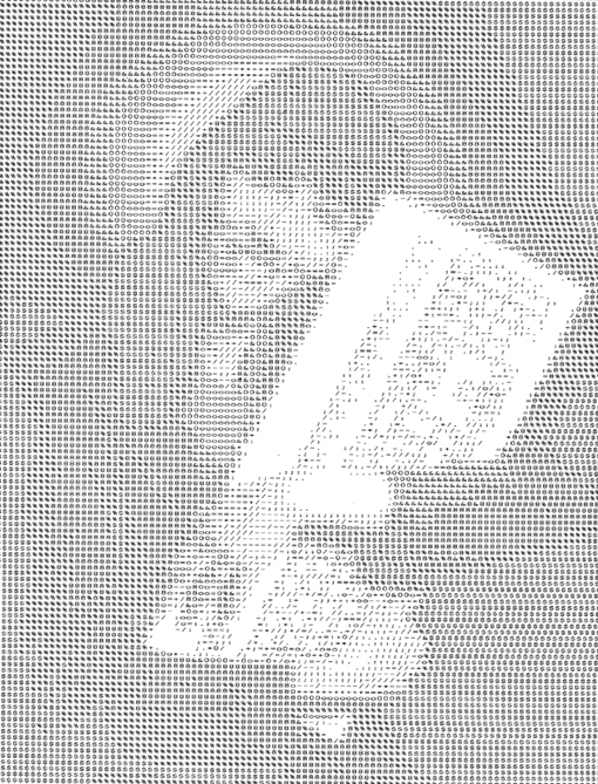
RB: Ok, maybe to concretise this question a little – what are ‘hyperstitional operators’? Are they ‘memes’? And in what terrains would their ‘future interventions’ most significantly occur for XF? Upon what terrains, exactly, is the fictive, the semiotic, the hyperstitional, actually acting for XF? Does it ever meet a ‘realpolitik’?
LC: Hyperstitional operators could be a variety of things – but at least according to CCRU definitions they are ideas that enter and transform the flow of cultural reality – a kind of hype mutated into actuality. We don’t spend much time on hyperstition because there doesn’t seem to be an adequate understanding of how this engine works exactly, but perhaps a more useful way to illustrate the power of fiction upon reality, is to look at it through the lens of modelling practices. The study on the Black-Scholes model of options pricing (arguably one of the most important models ushering in financialisation) from the sociologist Donald Mackenzie is a really interesting case wherein the model – at first – had little correlation to pricing activities on the trading floor; but as the model gained traction, won a Nobel Prize and became a tool of the trade, reality started to conform to the predictions of the model. This is a simplification of a book-length study, but the point being that the uptake, or ‘performativity’ of the model produced a reality in its likeness, provoking Mackenzie to even close his book with the question “What sort of reality do we want to see performed?” Clearly, we are not advocating for more profit-imperative modelling innovations, but we can leverage this incredible potency differently since we know how effective it can be. Models don’t represent or merely ‘reduce’ reality; they are tools as the philosopher Margaret Morrison argues, to intervene in reality.
RB: There is a sense that accelerationism and XF is invested in the organisational techno-architectures of social programmes, in platform-building and scaling networks. If so, how can one avoid the bureaucratic traps of techno-social administration – like the coercion and (self) surveillance through data management – that are encouraged under the guise of ‘creative tech innovation’? In addition, how can one escape the internal race, gender and class hierarchies that are often so constitutive to open techno-collaborative platforms?
LC: The materialisation of the conceptual framework raised in XF is certainly the largest, most difficult task at hand, one that will require substantial collaboration outside of our group. The hope with XF is that it manages to conceptually infect others to experiment on this tangible level. We know that the development of technology is also a reflection of our own biases, limitations, needs, desires and perceptions of the world, so contaminating this perceptual or cognitive level, although not enough, is still an important step. Your question really points to the delicacy and riskiness of our current world where so many potentially beneficial innovations are twisted to serve the few, be it either through sheer profit gains or through the cultural capital of becoming an antagonistic hero. The gross demographic misrepresentation within the building of techno-architecture (not to mention access to it) is the most obvious, direct hurdle to leap in order to mould and retrain these structures to serve the many. There are no user-manuals as to how to avoid the hazards you mentioned, all of which are bound to ideological imperatives of our time (for profit and self-branding), so any radical overhauling of the purposes that technology may serve, is wholly dependent on the restructuring of our given ideological ‘myths’ or frameworks.
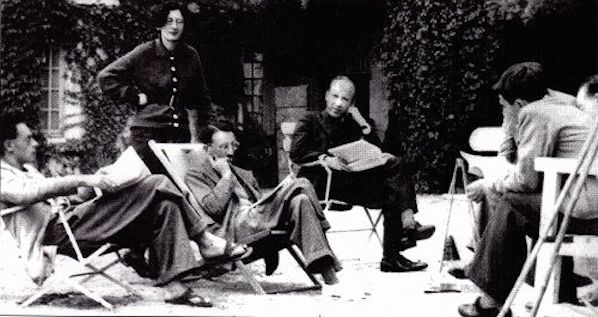
RB: Is Laboria Cuboniks intended as collective pseudonym for others to inhabit, in a similar way, for example, to Luther Blisset where a specific political tactic was applied through its availability as an open alias, or is it a more limited identification, akin to art group Bernadette Corporation which was always a specific core group of authors? How important is anonymity? Are there other groups you know of assuming the tenets of Xenofeminism as a discourse/practice? Do you envisage more Xenofeminist ‘chapters’ as a scaling strategy?
LC: Our name is an anagram of Nicolas Bourbaki, another collective pseudonym for group of largely French mathematicians from the 20th century advocating for abstraction and genericity in their field, so we playfully identify with them. As of now, the group is just the six of us, and, for the better or for the worse, anonymity was never achieved from the outset having launched the manifesto in person (without costumes and robot voices). In hindsight, the performative ‘appearance’ of Laboria could have been much more elaborately conceived and enacted – but as it is now, the importance must be placed on the labour of XF in general (open to anyone who wants to tinker, intervene, augment, refute and expand on these initial claims), and not on ‘Laboria’, the author. We’ve seen several groups and individuals respond to the manifesto – either through translation, dissemination, zine creation, talk-radio, inclusion in course readings, artistic practices and so on – and this is crucial to any ambitions of scaling up beyond our own finite capacities. Perhaps it would make sense to speak of ‘nodes and forks’ rather than ‘chapters’; ‘chapters’ seem to indicate a certain linear sequence that fulfils a narrative, whereas ‘nodes and forks’ affords a plurality of actants and events, piece by piece, deviation by deviation.

CS+ RB: Many thanks for clarifying some of our questions related to xenofeminism. The issues you address are urgent and we hope your manifesto will inspire technofeminist experiments on all scales and levels and contribute to the materialisation of more feminist concepts, particularly within the development of technology.
The Critical Atlas of the Internet, Louise Drulhe’s latest project, is a virtual and physical exploration of the Internet space. The implications of our physical actions in ‘real-time’ are not only timeless in ‘cyberspace’, but also constitute the making of an obscure Internet architecture every time we browse the web. The Atlas itself is an enveloping notebook of Drulhe’s discerning methodology in desiring to represent the geography and architecture of the ‘unseen’ Internet territory. Initially, a graphic designer, Drulhe’s practice has meticulously evolved into including cyber-spatial analysis. She yearns to understand the sociological, political and economical issues that appear online or are exasperated by an online presence – ‘a territory we spend time in without knowing its shape’. The Critical Atlas of the Internet, by being parted between fifteen different hypotheses, sheds light on matters such as the monopolisation of non-physical spaces, the possibility of encumbered networks and the potential forms of the Internet.
I had the pleasure of interviewing Drulhe, where she clarified certain distinctive matters that arise from reading or looking at the virtual form of the Atlas online.
CS: In 2014, Google measured 200TB of data that they claim to be just an estimated 0.004% of the total vastness of the Internet. Initially, the Atlas perceives the Internet through many geometric shapes such as cones and spheres. Is this your approach to establishing that the Internet is an infinite space of shared connections and motion? If this is the case, do you believe it is immeasurable?
LD: I will probably get back to you with a better answer to this question in a few months… I am starting an art residency in Paris at La Paillasse, and I will study the question: “can we measure Internet?”. I am curious to see the best way to represent the Internet: to count the data or to measure the borders. I haven’t started this research yet, but I will look for the best unit of measure to calculate the dimensions of Internet territory: meters? Litres? Percentages? Data traffic? I wonder how to define the “size” of a website. If we look at Google.com, it’s only one webpage, so does this mean that Google is smaller than a regular shopping website that might have thousands of pages?
With the fourth hypothesis of the Atlas, “The Geographic Relief of the Internet”, I tried to represent the «size» of Internet platforms. Their size is actually based on the concentration of the activities they host. The Internet giants try to saturate and incorporate as much territory as possible. Google (now called Alphabet) possesses Chrome, Gmail, Android, Google +, YouTube, Blogger, Google Map / Earth / Street View, Cloud, Nest, and Google X… to cite a few. Internet giants are almost raging an online war to monopolize most Internet territory. I think the next virgin land to conquer is the Internet of Things. The map of this 4th hypothesis is based on a ranking by Alexa’s Top 500 Global Sites. What I would like to do next is to measure this representation.
CS: Extrapolating from your claim that the Internet is a single point at the centre of the globe, what would the repercussions if that space were to be encumbered? Can a network not be encumbered?
LD: It’s true. A reticular space cannot be encumbered, I guess. Facebook.com, for instance, is getting more and more popular, but the site works perfectly; you don’t feel crowded situations on Facebook. If Facebook were a physical public square and 1 billion people met there one day, the situation would be really problematic. On Facebook, you never see the crowd.
In the Atlas, I quote Boris Beaude on this idea “The growth of reticular networks, unlike that of cities, increases their interaction potential without boosting their internal distances. Regardless of the network size, the distance between its respective parts is potentially non-existent. Facebook can host 800 million people without affecting its interaction capacity.”[1] This is what he calls “reticular coalescence”.
[1] Boris Beaude, Internet : “Changer l’espace, changer la société“. 2012.
CS: You build your thesis on the hypothesis that Internet space does not require distance; each component is of equal distance to the other. Otherwise, one click away. Whilst this grants no special status to any person’s ‘search’ to being more important or unimportant, aren’t these ‘search results’ always altered depending on the search engine? For example, untracked browsers such as Tor or extensions on Chrome such as ‘Hola’ have the capability to displace a user from their current location and thus materialise a different order by which results appear to us.
LD: I wrote that the search engines “control Internet architecture” and “distribute the space”. Because almost everyone uses Google, we can assume that Google is the one that controls Internet space so if you use another search engine, like “DuckDuckGo”, you will access the web through a different architecture. But “Tor” and “Hola” are not search engines. “Tor” is a network that enables anonymous communication, and “Hola” is a VPN.
By using a VPN, you can bypass censorship. By changing your localisation, the VPN will give you access to another web. There are as many Internets as there are legislations. This idea is represented in the hypothesis, “A Global Object Projected at the Local Level”. The Internet is global, but we use a national projection of the global network. If you are in China, with a VPN, you can browse the Romanian web and access websites censored by the Chinese government. VPNs also enable anonymity, but that’s another aspect of it.
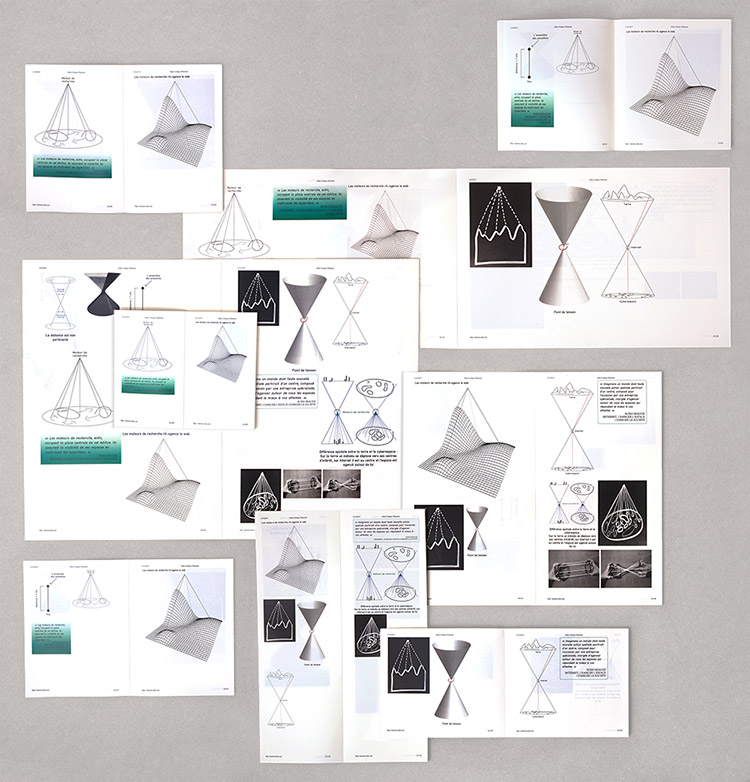
CS: Another one of your hypotheses places us (the users) at the Internet’s centre, constructing the space around us as we move through it. Indeed, the Internet meets our individual needs. Would you, therefore, account for it more as a product – the world’s only flawless consumer good?
LD: Here, I would like to draw your attention to another aspect of my research. If we look at the Internet as a consumer good, it’s probably the first that actually turned consumers into products! In rephrasing one of Mike Edgan’s statements, Jason Fitzpatrick says, “If you are not paying for it, you’re not the customer; you’re the product being sold”. The personal data that are generated through users’ browsing are the new “petrol” of the oncoming economy. And in this particular economy, we won’t be the consumer anymore!
CS: In early forms of the Internet, ‘cyberspaces’ were decentralised. Now, as the Atlas conveys, data is concentrated within the hands of a few ‘heavy players’, illustrated as ‘network nodes’ of various weights burying themselves within the Internet’s surface. Since most of the ‘network nodes’ come from the west, would you consider the Internet to possess a particular Westphalian sovereignty?
LD: The centre of gravity of the Internet is clearly the west, but not, in my opinion, the west as a whole. The US has a dominant position for multiple reasons that I detailed in the Atlas. The Internet’s centre of gravity is defined as “the weight, concentrated solely at one focal point, instead of being distributed over several different points”, a focal point which is undeniably Silicon Valley.
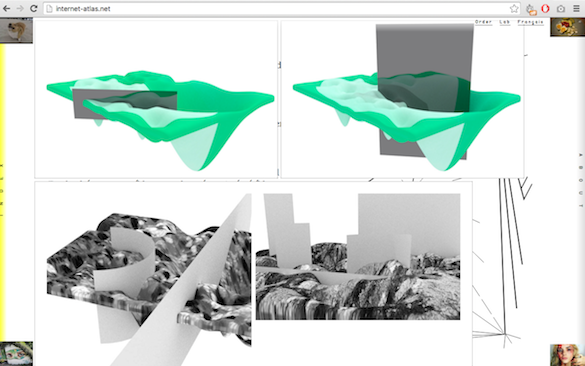
CS: I’d like to ask you about the visual representation of your online Atlas. In particular, about the rigid protrusions of space, you used to convey the ‘splinternet’ and the humorous intrusions of Hilary Clinton and Bernie Sanders, among other seemingly unplanned objects such as fried eggs. Could you comment?
LD: We often imagine the Internet as a single Cloud and a unified territory, but this is wrong. Some multiple limits or frontiers exist online. Some of them are really clear, like the Great Firewall of China: the wall of censorship that divides the Chinese Internet from the rest of the Internet. Another obvious frontier is the limit between the deep web and the surface web. But the frontiers that interested me most were the ones that nobody seemed to pay attention to. The limits are defined by private networks, such as Facebook. People with a Facebook profile never see the frontier because there are always logged in. But when you do not have the password, Facebook is closed, even if some pages are left open to attract you. Their goal is to make you join the private network.
CS: And the unsystematic quirks?
LD: Each time the website loads, the images are automatically taken from the emblematic forum “Reddit”, defined as « the front page of the Internet ». Those images work as timestamps in the Atlas; you can find them at the 4 corners of the website and on the books. The Internet is a perpetually changing space, constantly evolving. It was important for me to bring a timestamp to my Atlas. In addition, these images are symbols of the Internet culture; the Internet meme: viral images spreading through the web and overflowing onto my Atlas.
CS: I’d like to address your citing of Introduction: Rhizome by Guattari and Deleuze. They claim that a rhizome can be connected to anything other and must be’ and therefore does not follow the same arborescent structure of a book or tree. However, as mentioned before, there are arborescent nodes within the Internet itself – the ‘heavy players’. Do you believe this may distract multiplicity or enhance the creation of territories within the Internet? Would you also support that in the case of a rupture, where a rhizome breaks or one of the arborescent nodes fall apart, another node responds to replace as if it was always as such?
LD: Yes, that’s a good comparison. I believe that the heavy players saturate and erode Internet space. This idea is supported by the fact that each company creates a personalized arborescence that is really difficult to connect to by developing its own patterns or ecosystems, like the arborescence of a tree. In this idea, they are breaking with the original shape of the network and its interoperability.
About the rupture, actually, I am not sure. If a node disappears on the network, another node will not necessarily be replaced. If a web page goes offline and at the same time a Facebook page has just been created, the new node (from Facebook) does not take its place. The new node is actually created within the Facebook network. And to refer to my hypothesis about the geographic relief of the Internet, the node opens on the slope of a dominant gap.

CS: As a final point, there’s a particular passage from Baudrillard’s Simulacra and Simulation which I find can be quite relative when considering the structure of the Internet:
“Abstraction today is no longer that of the map, the double, the mirror or the concept. Simulation is no longer that of a territory, a referential being or a substance. It is the generation by models of a real without origin or reality: a hyperreal. The territory no longer precedes the map nor survives it. Henceforth, it is the map that precedes the territory – the precession of simulacra – it is the map that engenders the territory. If we were to revive the fable today, it would be the territory whose shreds are slowly rotting across the map.”
How would you interpret this if we took into consideration Internet territories?
LD: Most people do not consider the Internet as a territory. This idea of cyberspace is a bit old-fashioned. But, I think it is still pertinent today to study the Internet as a real space.
The way we access representations of the Earth today is really magical. Google provides easy access to an extremely precise representation of the Earth through satellite images and maps… But for the territory of the Internet, it’s the opposite. Even if there are a few maps of the Internet, there are no basic tools to map the web. The territory still precedes the map. I would love to see what a Google street view of the Internet looks like!
Featured Image: Obscurity (2016), Paolo Cirio
Obscurity, the latest project of Paolo Cirio, targets american mugshot websites. Mugshots are one of the utmost paradigms of the inexorable logic of today’s online economy and its controversial ethics; they collect and expose photos of people who have been arrested in the U.S., irrespective of the type of offence, and they profit by placing reputation management ads or by charging a removal fee. The owners of these websites are often anonymous or based offshore. As part of his project, Cirio cloned some the most known mugshots, scrambled the data profiles of the listed individuals and obfuscated their identities. In addition, he programmed the algorithm so that it boosts the ranking of the cloned websites in order to interfere with the activity of the original ones and to therefore sabotage their function. Mugshots can have a decisive role in someone’s life, reinforcing a new form of social stigmatisation defined by search engines results. When visiting the mugshot duplicates, users are invited to decide whether the listed profiles should be kept or removed. Obscurity brings to the foreground critical and complicated issues around today’s privacy and transparency, discussing the current legislative system in the U.S. in comparison to Europe and other parts of the world.
I talked with Paolo Cirio about the challenges and difficulties behind his -once again- daring act and artistic work.
DD: Mugshot websites are based on the exploitation of the anxiety and fear of people who have been arrested in the U.S. It addresses a new form of monetisation that takes reputation management to its extreme. Could you tell us how ‘big’ is the issue of mugshots in the U.S. and what made you develop a project about it?
PC: There are probably over 50 million mugshots on the Internet, and perhaps more, considering that every year in the U.S., city and county jails admit between 11 and 13 million people, an average that has been steadily increasing in the last twenty years. I personally met people that had their mugshots published on those websites and had to pay a removal fee. I would say that this is a very common issue for non-white and low-income Americans, who are the majority, although they’re often neglected by public attention.
I was surprised that this issue was being ignored and not addressed seriously. I couldn’t find any privacy organization in the U.S. focusing on this issue or making a major case for the Right to Be Forgotten in the U.S.
In particular, the several contradictions and complexities of the situation offered me an exciting subject to intervening practically and conceptually. It was the saddest and most delicate material I had ever worked with. However, it was important to address how the flow of information today can impact lives so directly and how art can do something with that. In most of my artworks, I highlight our information society’s legal, economic, and social implications. These fields are all tightly interconnected in this work: the economic value of sensitive information with the personal interest and the legal system with the public democratic interest. I would say that this work is about society as a whole.
DD: At the heart of your project lies an obfuscation algorithm. Obfuscation is a strategy against datafication which has been very much discussed in the last few years. How is it used as part of your project, and why?
PC: The obfuscation of information became quite a sophisticated operation in this work. The huge dataset I assembled with such delicate material could not be wasted or mishandled. That’s why I decided to apply different layers of obfuscation to protect the privacy of the individuals and, at the same time, keep the data accurate.
The algorithm shuffles first and last names and mugshots based on common gender, race, age, and location, making their obfuscated identities similar to the original ones. Meanwhile, for the profile of the person arrested, all the data concerning the arrest is maintained accurately. The individual records provide the social context of the arrest for public scrutiny without exposing the individual. For instance, you can still count how many people of colour have been arrested in a specific county, but it would be hard to identify individuals.
I believe there is a need to learn how to handle sensitive information very carefully, case by case, and to deal with complexity to provide simplicity and not make it more overwhelming. The notion of privacy and transparency can’t be polarized between fears and utopias of big data.
In past years, I’ve been working on several projects concerning the circulation, appropriation and exposure of sensitive information over the Internet. In particular, I made artwork by recontextualizing photos of individuals on Facebook, Twitter, Google Street View, and other online platforms. These provocative works were meant as a warning regarding social media companies’ privacy policies and the danger of losing control over one’s pictures posted online. However, I never let search engines index this personal information or expose their names in all cases.
I believe in a need for an ecology of information. I see information as water; it should be safe, accessible, and clear for everyone’s sake. Any form of pollution could damage an entire ecosystem. Therefore, for me, obfuscating a particular flow of information is more of a technique to clean a toxic spill into a reserve of data that can be essential for a democratic society. Like when it allows public scrutiny over law enforcement agencies. Imagine some operations trying to obfuscate open data or inject fake stories into WikiLeaks. Wouldn’t it be as shameful an act as polluting spring water? In the future, it’ll be even more important to fight to keep the oceans of data clean, safe, and navigable.
This is another reason why obfuscation is something that should be done carefully.
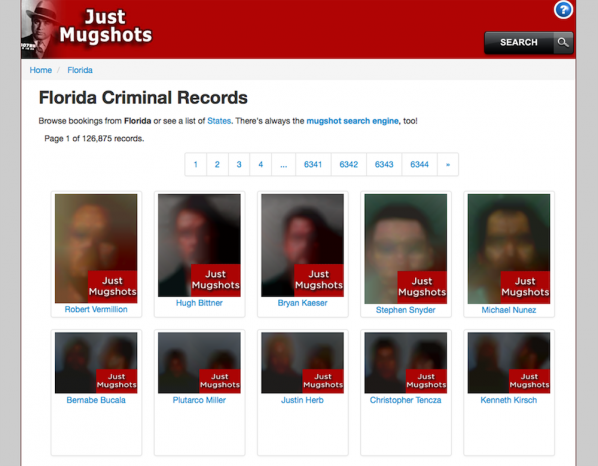
DD: As part of your artistic practice, you often deploy participatory formats for the audience. Lately, though, you seem to be more and more interested in having the audience take a stance and become more involved in the decision-making or problem-solving process. What made you turn in this direction for this particular project? How does user participation become an indispensable part of the work?
PC: I follow the natural evolution of the Internet. I started research works involving millions of individuals in early 2009 when I noticed how quickly Facebook was becoming popular, thus offering a huge audience for my work, which became the actual material of it. Many apps let us manage our life and everything around it by tapping buttons on screens. At this point, everyone makes decisions on the Internet that affects someone else as they produce changes in concrete reality. The Internet is the best tool and environment for decision-making and problem-solving today. Therefore, the basic sense of civility we developed in the physical space should be learned in the online environment.
Yet, with the Internet, we are in the Paleolithic Period, almost naked in public, and learning about what we can do with primitive tools while not knowing how to live together peacefully and with respect for one another.
In this project, I examine online judgment. The rating that is taken to its extreme is online shaming. I’m interested in the ethics and aesthetics around it concerning algorithms and individuals who rate and score others.
With the participatory model proposed, everyone can decide to keep or remove an individual criminal record. I like to invent systems of participation, as they can be structured to channel flows of social dynamics for creative forms of society.
It is a preposition, “what if” everyone could judge people online accused of a crime like an open jury and give a verdict on whether they should be forgiven or punished by society. The project also questions the necessary information to make a fair judgment. I’d not be surprised if tribunals were to one day have this type of online public forum.
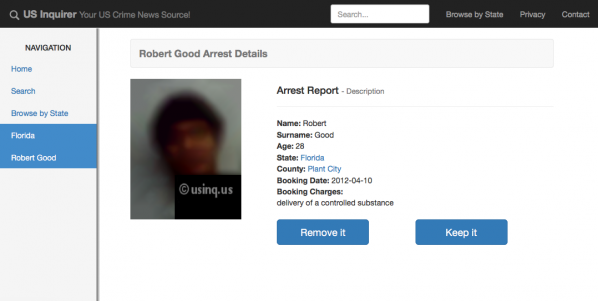
DD: Through your artwork, you are underlining the urge for the ‘Right to Remove.’ How does this differ from what we know in Europe as the ‘Right to be Forgotten?
PC: The Right to Be Forgotten has been largely contested in both the U.S. and the E.U. for its potential to censure, for its lack of transparency on the decision process, and because it makes search engines the only jury on what the public can find online. Yet, in the E.U., although not perfect, the law offers all European citizens some rights since a few years ago.
In the U.S., it’s more complicated, mainly because the First Amendment protecting the Freedom of Expression is supposed to win over any attempt to curb the publishing of public information and opinions. This is the case made to oppose the Right to Be Forgotten in the U.S., and the one pushed forward by many organizations, like those dedicated to lobbying for freedom of the press or governmental transparency laws, that still defend the publishing of mugshots.
The federal system in the U.S. further complicates this situation. Every state in the U.S. has been approaching issues concerning the online publication of mugshots, revenge porn, and even information on minors differently. In many states, these are still totally unregulated. Talking about the legal and justice system in the U.S. is very hopeless when considering that Google is the company that has spent the most money ever in lobbying the U.S. Congress. Google has always been strongly opposed to the Right to Be Forgotten in both the E.U. and the U.S. They always mention censorship, technical impracticality, and not being accountable for their search results.
However, with copyright and trademark claims, search engine companies can manage huge quantities of takedown requests. Why would they not be able to offer the same for personal information complaints? Ownership rights should not be more important than human rights.
With this project, I made a proposal for a basic list of very specific categories of personal information that ordinary people in the U.S. should be able to remove from search results. With the Right to Remove, I wanted to create a straightforward campaign to inspire a workable form of this right for the U.S. To do so, I researched this legal subject on the campaign’s website. I launched a petition that I plan to have signed by a few key privacy lawyers, academics, and organizations in the U.S. in the coming months, to be finally presented as an open letter to search engine companies and the FTC. However, for me, this proposal is part of the conceptual artwork. I don’t have hopes of being able to effect change as that would require a huge press effort, and so far, I haven’t received any funding or institutional support for this project.
DD: Are you also interested in the aesthetic qualities of obfuscation? Are you planning a physical installation of the artwork?
For me, the aesthetic qualities are mainly conceptual and strategic.
In most of my work, there is also a documentative function, in this case, it’s about bringing attention to mass incarceration and the lack of a privacy policy in the U.S. Because of the research presenting facts with videos, texts, data, and images, the audience can enjoy the artwork as an interactive documentary. I don’t find data visualization an interesting mode of presentation. Still, I did use the database to find gross human rights violations like the mugshots of ten-year-old kids or seniors over ninety-five.
I later realised that the algorithm that manipulates the mugshots created very interesting visual effects. It seems worth it to make prints of them for the installation. The darkness and the blueness recall the obfuscation of data in a visual form. They look scarier or more inoffensive when the colours hide their appearance. This reminds the audience of how difficult it can be to judge someone without having clear and complete information about the individual. In the installation, I would have a paper shredder that destroys mugshots as they are printed based on the audience’s browsing and interactions on the mugshot websites.
With this project, I also suggest a form of Internet social art practice. It’s inspired by many artists I admire that have been doing social practice work in the U.S. In this case, I’m suggesting that artists can make Internet artworks that have a social function for a problematic group of people, communities and the environment.
For instance, with this project, I started to receive an increasing number of emails from people asking me to remove their records because they thought I was behind the real mugshot websites. They are automatically redirected to sign the petition.
What makes an aesthetic difference for me is when artworks live outside the art world and artistic modes of representation. My audience is not really the minority attending the spectacle of art. Instead, it’s real people with real lives and concerns. Even when the artwork is not exhibited, reviewed, or sold, it’s still online, informing, producing reactions, and possibly changing.
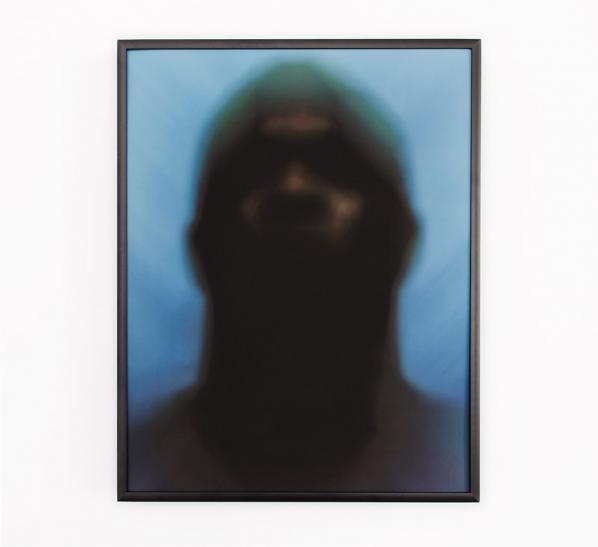
project website: https://obscurity.online
cloned websites:
http://Jailbase.us
http://Usinq.us
http://Mug-Shots.us
http://JustMugshots.us
http://MugshotsOnline.us
http://BustedMugshots.us
Featured Image: Smoke Signals at the International Anthony Burgess Foundation, Manchester
Red floodlights illuminate the silhouette of a grand piano standing in the centre of a darkened room. As musician and composer Jonathan Hering begins to strike the keys of the late Anthony Burgess’ piano, a hidden bank of machines cough a sequence of smoke rings into the air, which catch in the red light above. The room fills with a ghostly red mist, all but obscuring the source of the beautiful music. The irregular pattern of smoke puffs suggest it’s some sort of message or code. In fact, it’s a sequence based on email data from seven arts organisations, put through a Polybius cipher.
Smoke Signals places digital communication in context, as simply the latest in a line of our approaches to long-distance forms of communication,” explains co-creator Ed Carter. “I was very interested in the way that as the smoke, or ‘data’, filled the room it became more and more dense. At the beginning, you can decipher it if you understood the code, but eventually it becomes more of a fog – which is a nice analogy for the way data works on a big scale.”
This performance of Smoke Signals at Manchester’s International Anthony Burgess Foundation captures much of what FutureEverything festival is all about: looking simultaneously backward and forward through technology, fusing the analogue and the digital, the theoretical and the artistic, and uniting practitioners across disciplines.
FutureEverything is an innovation lab for digital culture and an annual ideas festival exploring the space where technology, society and culture collide. Featuring thought-provoking panel discussions, original commissions and parties, this year it took place in arts venues across the city, from Wednesday 30th March to Saturday 2nd April.
This summary explores how the festival encourages multi-disciplinary collaboration between different creative communities through interviews with artists who embody this collaborative ethos in a variety of different ways. How do they bridge the divides between disciplines to break new ground and meet the challenges of the future?
Commissioned for FutureEverything, artist Ed Carter created Smoke Signals with engineer and technologist David Cranmer. Musicians Sara Lowes and Jo Dudderidge & Harry Fausing Smith and Hering, then devised original compositions in response to the piece, taking each performance in a new direction. “Working with a collaborator or collaborators is like working with a process or working with a data set,” Ed says. “You create a framework but leave a degree of openness which allows for the unexpected.”
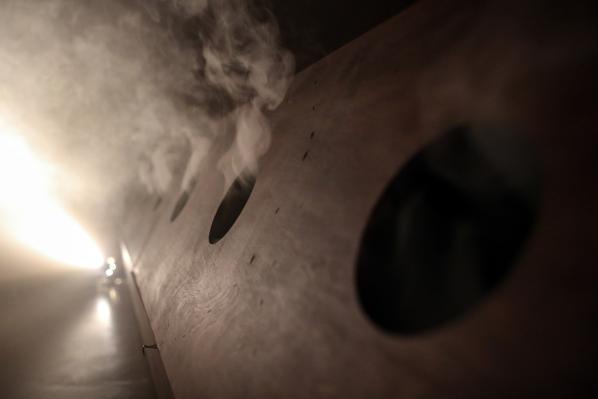
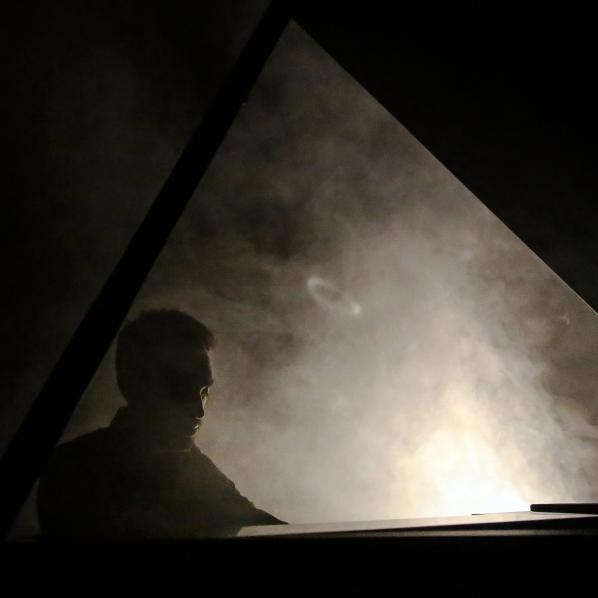
Newcastle’s Occasion Collective chose to deconstruct the collaboration process behind their Babble series of improvised performances at Islington Mill in a lively workshop on the final day of the festival. The collective invited participants to get hands-on with improvised dance and live-sampling in sound and video, to help reveal the feedback loops between artists at the heart of their multilayered performances.
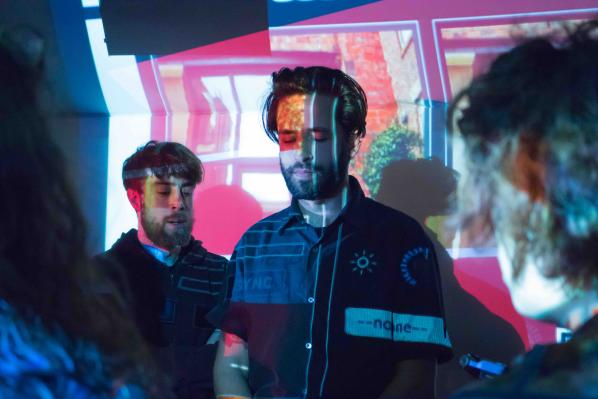
The concept grew from musician Jamie Cook’s final-year music degree performance, where he played with a saxophonist and manipulated her audio live, creating loops, sampling, applying effects and changing speed. “I wanted to use electronics in a very tactile way, so that the audience weren’t shut out between me and the computer screen,” he says. “They could see all of the sounds I was creating, they could see them being taken and then transformed. Over time I added more members from other media, like dancers and visual artists, which grew into this ensemble where everyone improvises live and feeds off each-other’s ideas.”
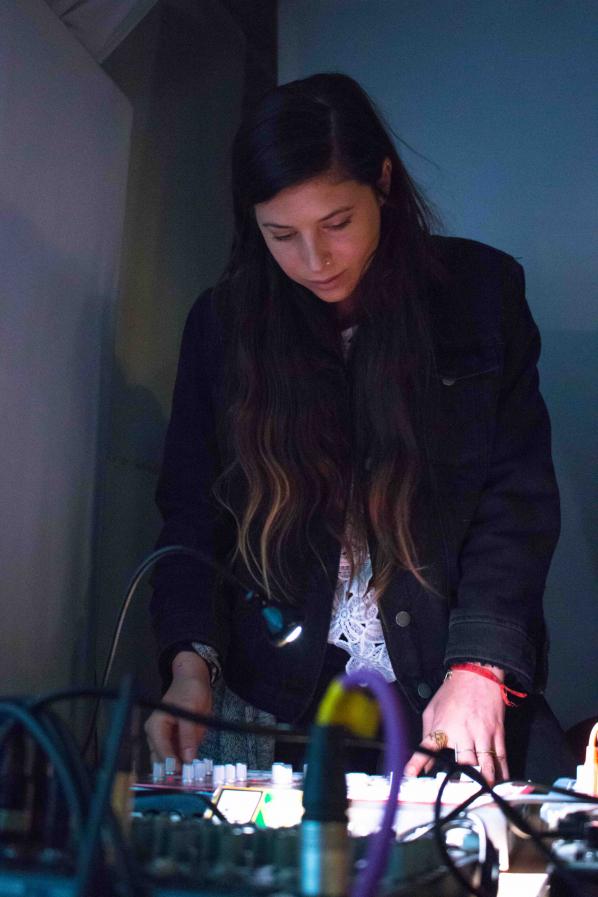
Each Babble performance refers to a short poem written by Charlie Dearnley, based on stories told by his grandmother, which “all grapple with a point of death or unburdening,” he explains. While performing, sensors on his costume feed to digital artist Sean Cotterill, whose software translates the movement into light and sound. “The idea of digital communities, using digital technologies to gather creative communities around them, is important to me,” Sean explains. Written in the supercollider language, Sean has put all his code for the show online, in the hope of developing further feedback loops beyond the live performance.
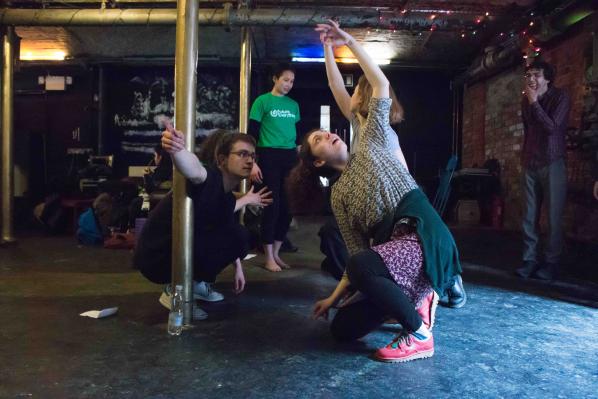
While process is an explicit part of Occasion Collective’s performances, each one feels stirring and organic. “It’s an attempt at honest expression which is heightened and realised through collaboration and working with others,” Charlie says, “acknowledging, for myself, the inadequacy of words in genuinely conveying experience; trying to create something that is more engaging.”
Engaging people is the challenge at the heart of Nelly Ben Hayoun’s work, as she explained after her talk at the Intelligence panel. The so-called ‘Willy Wonka of design’, Nelly is a one-woman nexus of collaboration who creates experiences to generate social action around science and technology, often space exploration. She assembled the International Space Orchestra, the world’s first orchestra composed of space scientists from NASA’s Ames Research Center and the SETI Institute (Search for Extraterrestrial Life). Featuring original music by Beck, Damon Albarn, The Prodigy, Penguin Cafe, Two time Grammy award winner Evan Price and Bobby Womack, she convinced scientists and astronauts to participate in an ambitious musical retelling of the Apollo 11 moon landing in 1969.
Video embed: The International Space Orchestra_ Official IFFR selection 2013 (https://vimeo.com/57863847)
“There are audiences that are not keen to be transported or play any part, but it’s my role to then force them into it,” she explains. “Most of the public is becoming quite lethargic, so it’s really difficult to get them to move. My way of doing things is what I call total bombardment: getting to people through the fields of music, design, arts, theatre, tech, digital and architecture. Even though you might not want to be engaged with the issues or the questions I’m raising, you will find yourself confronted, in any case.”
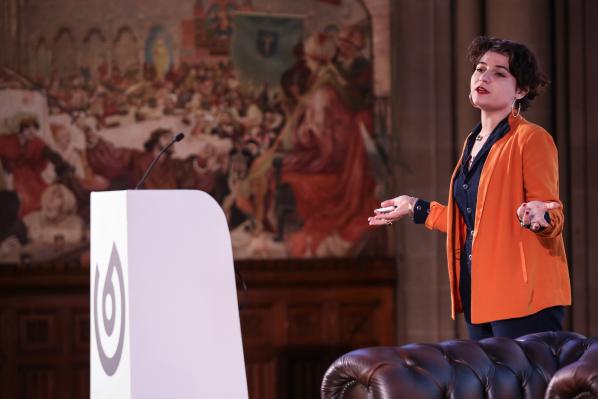
Nelly studied at the Royal College of Art under Anthony Dunne and Fiona Raby, who inspired her problem-finding rather than problem-solving approach to design, particularly with regard to future challenges and the potential impact of evolving technology. Her most recent project, Disaster Playground, investigates the planet’s emergency procedures through attempts to stage a simulation of an asteroid strike. Soberingly, Nelly finds that only about 20 ageing scientists are charged with planning for disasters such as asteroid collisions and meteor showers.
Video embed: Disaster Playground Teaser (https://vimeo.com/107466074)
“I’m applying critical thinking and critical design, but also looking at a range of artistic fields to see how we can merge all of these different disciplines to aim for social action,” Nelly says. “I apply Antonin Artaud’s theory of the Theatre of Cruelty to the way I engage members of the public with scientific research, looking for much more extreme and visceral ways to engage them, which you open up through collaboration. Whenever I work with scientific partners or sociologists or philosophers, I pick the ones who will fight with me. I believe that conflict generates innovation.”
The Turner Prize-winning Assemble collective prefers a more harmonious atmosphere. Comprised of 18 members, Assemble’s collaborative approach to architecture and urban development puts local people at the heart of development, implementation and ultimately the long-term life of each project. They also work on sustainable principles, choosing where possible to work with pre-existing local materials, reusing or repurposing them to better serve the area’s needs.
Assemble’s Mat Leung posed new ways to think about communities in a thought-provoking panel discussion with science fiction writer and futurist Madeline Ashby and new communication technologies expert Sarah Kember at FutureEverything’s Community panel. “[Sarah, Madeline and Assemble] understand community not as a monolithic term,” Mat explains. “Obviously there are loads of different elements to it. The term community is difficult because it assumes a single kind of identity, but together we wanted to interrogate that.”
Multiple communities can exist simultaneously and overlap in a given area, such as a community of residents, who Assemble empowered through the Turner Prize-winning Granby Workshop project, creating jobs through rebuilding a neglected area of Liverpool from the grassroots up; or a community of makers and artists, with whom they worked on the Blackhorse Workshop project in East London.
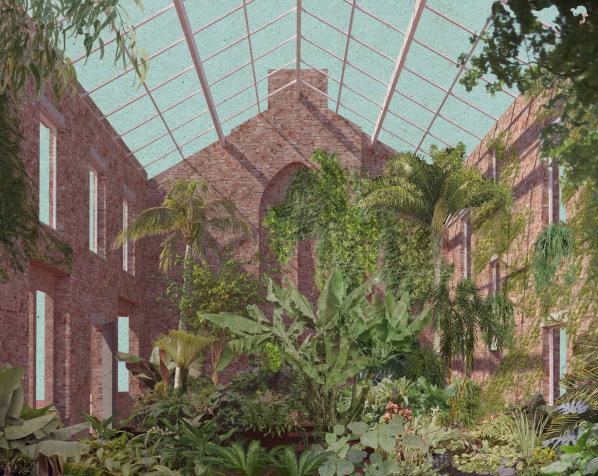
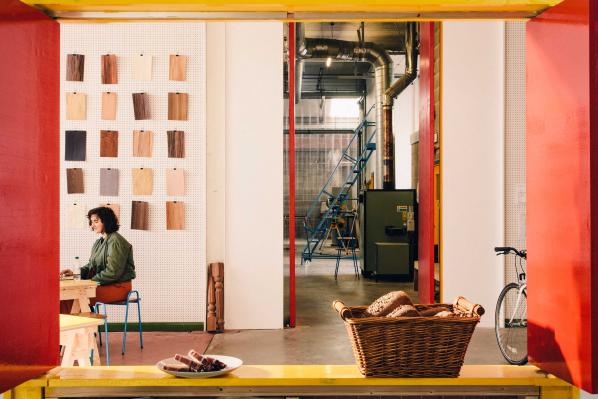
The Community panel developed a theme that ran through the festival: that no one individual or group is capable of meeting the challenges of the future alone. Finding ways to positively engage multiple stakeholders with a variety of knowledge and skills is vital to finding solutions that meet the needs of the wider community.
“Our successful collaborations come from an understanding that there’s a diversity of stakeholders, skills and knowledge,” Mat says. “We’re interested in a broad range of things, but we acknowledge we’re not amazing at everything. Each different member of Assemble has their own training and expertise, but when we work with a community, people who’ve been there for 15 years know more than we do – they’re experts in a different way. They might not know about which materials to use for a given job, but they can tell you the effect of a layout or the practical implications of what you’re doing. You have to acknowledge that people are experts in different fields”.
Projecting a vision into the future can be one of the hardest challenges for architects – but Assemble have developed what appears to be a powerful and effective way of ensuring the longevity of projects. “When you say ‘Let’s talk about the near future’, architects get hysterical, designers go into meltdown,” Mat explains. “As soon as you say community, legacy, or things like that, it brings up a set of expectations. But what you’re really saying is that you want your idea to be taken on and exist beyond the period you’re directly involved in its life. So we’ve found that collaborating with the community throughout the process, through workshops for example, is a great way to encourage people to continue using spaces after we’ve moved on.”
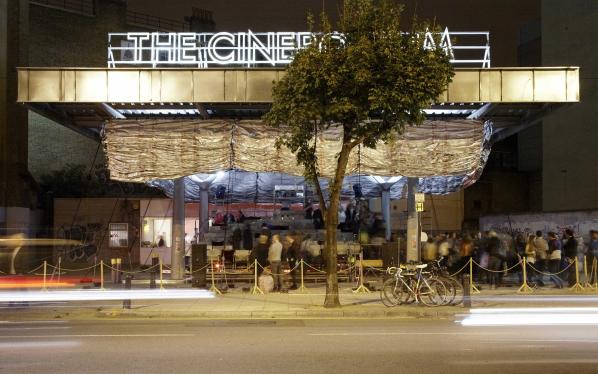
The enthusiastic spirit of collaboration fostered by FutureEverything transcended each event and sparked conversations between practitioners from a variety of different fields, who gave each other new perspectives through which to consider their own work. Drawing on the participatory ethos of progressive digital communities, the festival encouraged a refreshingly open atmosphere. But how to keep this energy going once the festival comes to an end? Many of the artists involved shared their processes in the hope that others can build on their achievements. The vibrant creative melting pot FutureEverything presided over will ensure that the new connections created will lead to even more inspiring projects in the years to come, from networks that extend far beyond Manchester.
Find out more about FutureEverything.
Featured Image: Charlotte Moorman with Nam June Paik, 1980. Photo © Erik Andersch
Lynn Hershman Leeson is a renowned and accomplished artist and filmmaker in her own right. Over the last three decades she has pioneered uses of new technologies in critical investigations of issues, recognised as key to the workings of our society today. She tackles the big questions surrounding: identity in a time of consumerism; privacy in a era of surveillance; the interfacing of humans and machines; the relationship between real and virtual worlds; and growing parts of the human body from DNA samples. Last year Modern Art Oxford hosted a major solo exhibition of her work Origins of a Species, Part 2 and she has work in The Electronic Superhighway, at Whitechapel Gallery, in London at the moment. Her work has had a strong influence on many contemporary artists working with technology. Recently, ZKM in cooperation with the Deichtorhallen Hamburg / Sammlung Falckenberg exhibited the first comprehensive retrospective of Leeson’s oeuvre, and also the most recent productions of her work. In May this year a book of the same name Civic Radar, will be published, featuring a comprehensive monograph of this Feminist pioneer in the fields of film and performance art, edited by Peter Weibel.
Nam June Paik was born in 1932 Seoul, Korea and died 2006. Many in the artworld regard him as a visionary artist, thinker, and innovator. Considered the “father of video art,” his groundbreaking use of video technology blurred past distinctions between science, fine art, and popular culture to create a new visual language. Paik’s interest in exploring the human condition through the lens of technology and science has created a far-reaching legacy that may be seen in broad recognition of new media art and the growing numbers of subsequent generations of artists who now use various forms of technology in their work.
Through his progressive ideas and artworks Paik dared to imagine a future where the technological and playful innovations that we now take for granted might exist. This interview with Hershman Leeson is timely, documenting the meeting of two imaginative beings who have changed the history of work at the intersection of art and technology. The issues they discuss are as important now as they were then.
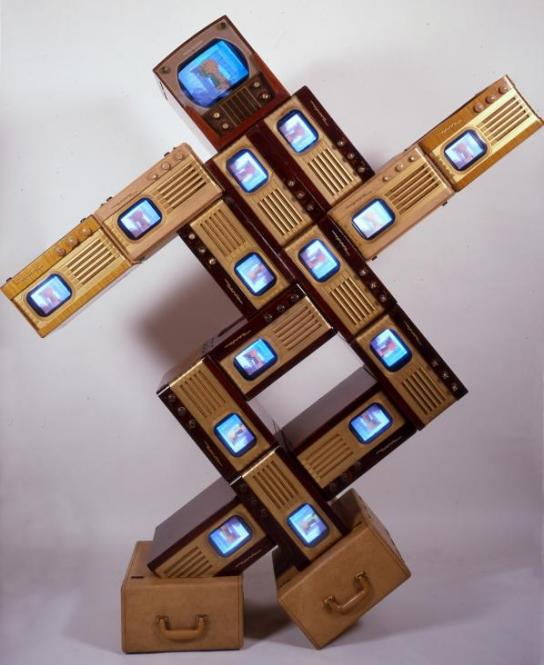
This interview of Nam June Paik by Lynn Hershman Leeson was first published by Artweek, April 1980 Electronic Art.
LHL: If you were elected president, how would you solve the world’s problems?
NJP: I just wrote an essay about how to make oil obsolete. Number one, information has to be recognized officially as an alternate energy source. Information changes our lifestyle. Dancers and yogis achieve ecstasy with 200 calories. However, racing drivers, if they want to achieve ecstasy, have to burn 200,000 calories. I found this new economical law… any consuming activities – certain activities which have a higher spiritual quality – use less energy. For instance, when rich man can buy a Jasper Johns for $100,000, that takes very little energy. However, if rich man buys Cessna airplane and flies around, it takes a lot of energy. But contributions to national economy would be the same… $100,000 spent. Same thing when you buy a videotape recorder for $500. Or if rent a car for $500 – ten days – national economy benefits from the same. But videotape recorder consumes much less energy. So when we shift our economic priorities of consuming to more spiritual sphere then we can solve all economic problems with much less energy. I found it is much easier to go to Paradise than to make this a paradise. It’s much cheaper to die than to make this world a paradise.
LHL: Do you think we’re getting closer to that now – global spirituality or global promiscuity?
NJP: Same thing. Sex requires only 800 calories. Same ecstasy, but racing cars take many more calories. Everything counts on calories. We need worldwide dieting. Lose weight.
LHL: Do you think pleasure or ecstasy is being popularly redefined because of technology?
NJP: Also because of a lack of energy. Things are getting so expensive that we have to use less. If you telephoned me instead of flying to New York, we not only save $300 air fare, we also save American Airlines gasoline. If they have less business, they will fly less. So we should move ideas and not weight. Less gravity we use the better. Transportation and communication are a trade-off. The more communication and less transportation we use, the better.
LHL: So your ideal is that we shouldn’t move too much…
NJP: Well I coined a term called “Stationary Nomad.” We are nomads but we don’t move.
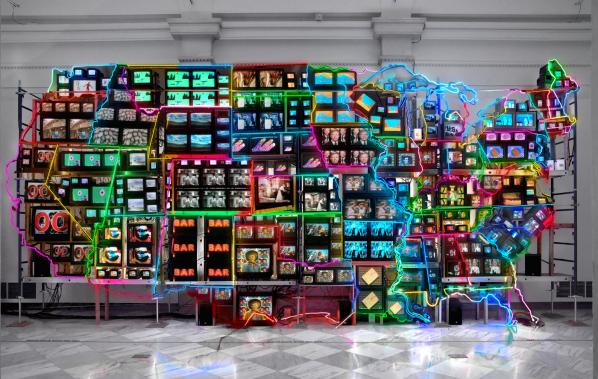
LHL: Do you think that we, as a species, are becoming biologically changed, that we’re almost becoming married to electronic systems?
NJP: Most important biological change is that when you move to moon you have to change sex patterns. You can make sex because you have certain weight. On the moon our weight is only one sixth so our whole muscular coordination has to be different.
LHL: What about all the perceptual changes?
NJP: When we have videodisc, all the New York Times microfilms will become like ten videodiscs. Then we’ll start browsing all hundred years of New York Times. Then you’ll look at early “help wanted” columns. Very interesting how the “help wanted” pattern changes over one hundred years. A new set of computer games would be born. Have you ever looked at New York Times microfilms? It’s very interesting. Celebration… that, I think, is the contribution of John Cage to world artists, because John Cage is first conceptual artist. Conceptual art is still very interesting movement because it requires least energy. No canvas. No movement. Just head!First time I’m coming from Asia to Europe, I’m flying from Calcutta to Cairo on a night plane. Everybody is sleeping. Only one light is on. A young American girl is reading paperback science fiction and I was so impressed. This girl was made for technology, you see. Celebrating.
LHL: How long will it be before ordinary people supersede movie stars, and intercommunicative TV and computers supplant fictional film?
NJP: I got an idea which I hope some capitalist will do. Interaction. Gene Youngblood had a conference at USC about the future of television, and he thought that interactive TV must be the alternative television. He knew but couldn’t quite formulate a complete idea about it. So it became chaos. Well, I thought chaos would be a great interactive TV. So the problem is how to create electronic chaos so we can enjoy each other. When you watch television or a very good film – which they make – really not very good… another one, you make it yourself, then there is also a limit of making it good because we don’t really know yet how to make our television. At the intermediate stage you will have ten different discs, and the first disc has only kissing scenes, the next only killing scenes, the third only music, the fourth only driving around scenes, the sixth just talking scenes, etc. Each disc is very complete. Kissing disc has all the kissing from movie history, every kissing of Marilyn Monroe, every kissing of Greta Garbo, and the second every killing scene from John Wayne. So we could just mix it according to our rhythms. Television proceeds in three-minute cycles. Every three minutes you want one nice thing, one bad thing, one mediocre thing… and music. So you have console and you just push buttons. So you interact with all of film history. I think that will be the intermediate stage before everyone has interactive television. It’s nice to meet and touch people, but it’s more exciting to talk very far. I just talked on telephone with Shigeko. It’s very exciting. She says: “Oh you’re never there!” She’s in a bad mood yesterday. She called… then I called back and she didn’t answer. This morning she didn’t answer again. I got an answering service. Distance makes things very exciting!
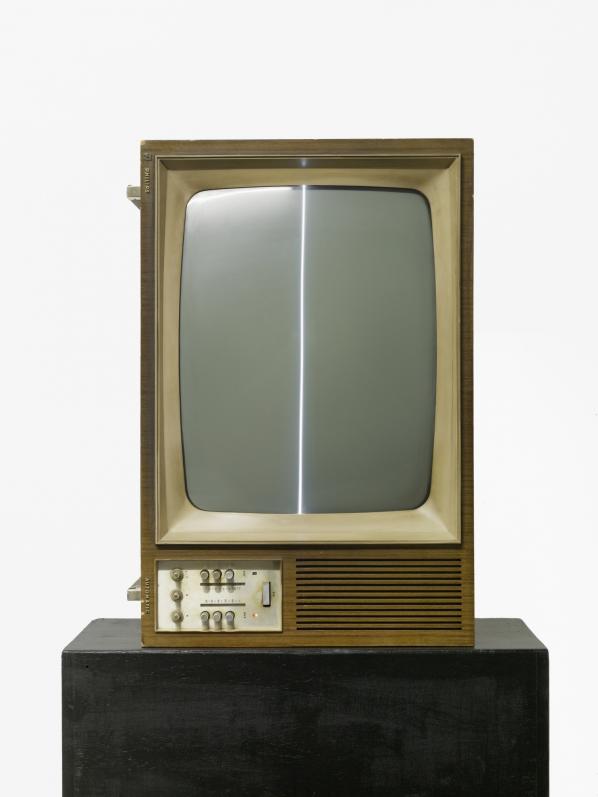
LHL: What are you working on now? You were just in Israel.
NJP: Yes. For Allen Ginsberg and Allan Kaprow. For some reason I got to know people very early in their development. I’m just lucky. I got to know Kaprow very early. These two famous men kept my friendship. They let me be their friend. So I want to make a variety show with two Allens because they are so different. Kaprow is a very cerebral man. Ginsberg is a very emotional man. Ginsberg is very semantically avant-garde and Kaprow is very formalistically avant-garde. We were going to do a show with them on a raft on the Mississippi River… let them talk to each other. This was to be me Bicentennial product. Then everything got delayed. Delay and delay and delay in our lives. That has to be solved. The plot got thicker and thicker. Two years ago I had some travel money available so I thought maybe I’d bring Ginsberg and Kaprow to Israel. Then my travel fund dried up so I had to pay for all these tickets to go to Israel. It wiped out my whole savings.
LHL: Can’t business and pleasure be the same?
NJP: Yes. But playing is more interesting. Yet playing is harder. The futurist thing is how to play without being bored. That is the most important thing… how to forget the Protestant ethic… Confucianist has same thing… how to be able to play. Americans know how to play a little bit better than Europeans or Asians. Africans know a little more about playing than Americans. America and Africa got together and made American entertainment. America invaded the world through their jazz and not by their airplanes. Because of black people’s music, America is such a big image around the world. American defenses are made form two things… hardware and software. Russians can match American hardware because they can produce. But Russians cannot match American software because Russians don’t have black people. Russian culture is all nineteenth century… Bolshio Ballet. Now you can’t make video out of Bolshoi Ballet. You can only do it live. So Bolshoi, it’s only where rich people can go who are anti-Communist anyway. So they are wasting all Bolshoi Ballet because it never reaches poor people who are target for their propaganda. That’s because their culture is made before information technology. Scott Joplin, a black man, made his art especially for mass production – the “player piano.” The black people’s music from the beginning was developed for mass production. The rich Americans packaged it to sell. Of course the black people are exploited.
LHL: Do you have trouble playing?
NJP: I think I have this guilt complex… must work all the time. My doctor told me I should get enlightened. But I always think I must get enlightened after next job. Then, with the next job, I get more and more in debt. Then I need another two jobs to pay the bills. So my enlightenment gets postponed.
LHL: Do you think being enlightened and being in debt are related?
NJP: You can act enlightened even if you are hopelessly in debt. There’s a guy I know… he’s a Catholic. He drinks. He’s very fat… but he drinks one quart of Coca Cola everyday. He thinks he’ll just work until he dies. But I don’t want that kind of enlightenment. I don’t work too hard anyway. I just work minimum.
Artweek, April 1980 Electronic Art NAM JUNE PAIK – VIDEO PHILOSOPHER
c.lynnhershman1980 all rights reserved
Megan Prelinger is an historian/archivist (originally from Oregon) who in 2004 co-founded a bibliophile’s utopia: the Prelinger Library. Tucked away in the SOMA district of San Francisco–and now highly regarded by researchers from around the world–the library has quietly become a California landmark. The myriads of materials contained there (books and ephemera “geospatially” arranged by Megan and her partner Rick) are made available to the public at least once a week for in-situ use (and one needn’t have academic credentials to enter).
In addition to being a world-renowned sharer (and repairer!) of books though, Megan Prelinger has also authored several. Inside the Machine–her latest work–is a book that traces a visual history of all manner of electronics from roughly the interwar era to the early space age. But it derives its narrative, she says, from exactly and only one source: “the intersection of commerce and graphic art.” As with her previous book (which presents commercial artists’ depictions of early space travel and rocket tech), Inside The Machine is a story told largely through the illustrations that one finds scattered throughout archival tech ephemera–of the sort that line many a shelf at the Prelinger Library. Prelinger’s visually rich book deftly guides the reader through countless innovations that preceded today’s computers, all with an eye towards celebrating the power and reach of the human imagination.
[The following interview was conducted via email.]
Montgomery Cantsin: You say that the Prelinger Library and its community constitute the “rhythmic pulse” which sustains your work as a writer of nonfiction. I wonder if you can say a bit more about that, and how that maybe differs from the situation of many nonfiction writers–that of being ensconced in a bureaucratic university setting. Also, how much of the material in your newest book was discovered there on your own shelves in San Francisco?
Megan Prelinger: During the research and writing of Inside the Machine, between 2011 and 2014, I was simultaneously engaged in a number of projects. You ask about how my situation differs from that of an academic historian: The academic model did not fully “take” in my mind when I was younger. It was introduced to me as one option among many, and I elected take the option of being an independent and self-supporting contributor to the human knowledge project. Throughout the duration of the library project, and my life for that matter, I have therefore always engaged in a number of different types of work more or less simultaneously; types of work that fall in different places on the spectrum between “day job” and freelance artist or knowledge-producer.
My work-week during those Inside the Machine years, as before and since, was a cycle of different forms of research, engagement, and production. The common anchor point around which every week “turns” is the public day in the library that happens every Wednesday. On those public days I set aside my own work and face outward, engaging our library visitors and facilitating their work. The Wednesday community is intellectually sustaining, as hundreds of people every year who are engaged in a universe of different kinds of research-based projects stop by and spend time. Our library is a social library, with discussion being one aspect of the access model. As with visitors, the collaborative relationships I’ve had with our volunteers and artists-in-residence such as yourself have put that library environment at the center of my social, intellectual and creative life since we opened it
To answer the question about how much of the material of the book was discovered on our own shelves: The short answer is “most of it.” There are 184 images in Inside the Machine, I believe, and about 6 of them were sourced from other collections. It was the serendipitous discovery of these overlooked images that drove the research process that became both Another Science Fiction (2010), and Inside the Machine (2015).
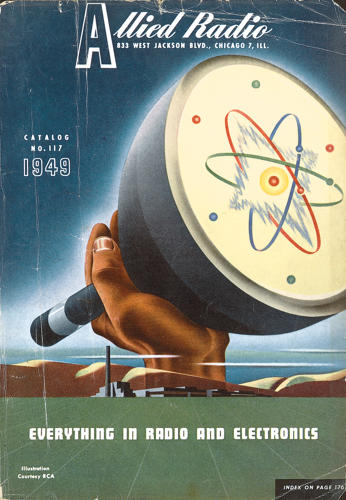
MC: I know that your interest in space travel developed in part due to your love of Star Trek as a youth. Is your interest in electronics something that grew out of that? At what point in your career did you realize you were passionate enough about electronics to write a book? …Have you ever tinkered with the insides of machines?
MP: My love of space exploration has many antecedents and you’re correct that Star Trek: TOS is one of them. I was born in 1967 as Season Two was beginning, just in time to be exposed fairly uncritically to a regular stream of images on television that suggested that space exploration was an emerging and “normal” part of everyday life. I remember watching Apollo astronauts explore the Moon on TV, and as a small child formed the unexamined assumption that Star Trek and the Apollo program were in a fact-and-fiction relationship to one another that was analogous to the relationship between the Little House on the Prairie books (fictionalized history) and the real histories of European colonization of North America (fact).
At the same time my dad was away in Vietnam serving in the U.S. Army construction brigades, while my mom was in college studying to be an archaeologist. Mom exposed me to Native American history, and Dad exposed me to the challenges of reintegrating into society as a damaged war veteran. Dad then became an architect. Those two parental models oriented me to the ground-based world that I lived in. I grew up sharply aware of divisions in society because of these two models, and had a sense of myself as an actor in a distinctly ground-based society. I studied anthropology and became a writer in order to develop tools to understand and affect the course of society and history.
The area of my psychogeography that was shaped by visions of space exploration were filled in by science fiction, which formed a bridge between ground-based and space-based spheres. In my thirties I discovered the left-behind literature of the mid-century space industry, and discovered that those handy tools of cultural analysis and writing would enable me to make an original contribution to the cultural history of space exploration. I was gobsmacked by this discovery. It was an unexpected point of integration between realms of my intellectual life and psychogeography that had previously been united only in the lifelong practice of reading and appreciating science fiction.
Coincidentally, in the course of taking that degree in anthropology I was required in college to take a year of science as a distribution requirement. This was actually a wish come true, since part of me had wanted to be a math major from the beginning but I lacked the background to do college-level math. That year-long general science course for non-science majors was possibly my favorite class in college. One third of the years’ curriculum was devoted to exploring electronics, understanding how circuits worked, learning to read circuit diagrams, and ultimately building a simple working radio out of found materials.
When my research on the cultural history of space exploration led me to try to understand space electronics, that history was invaluable. My passion to understand electronics grew directly out of a desire to understand why space exploration technologies matured when they did, apart from geopolitics and funding streams. When I realized that space exploration in the 1950s was reliant on the simultaneous development of very large-scale computers (mainframes) and very small-scale computers (the miniaturization made possible by the transistor), I then felt an overwhelming impulse to share what I had learned with other people. Inside the Machine ended up with a space electronics chapter in the 8th position (out of 9 chapters), but space electronics was the starting point in my research and the rest of the book mushroomed out from it.
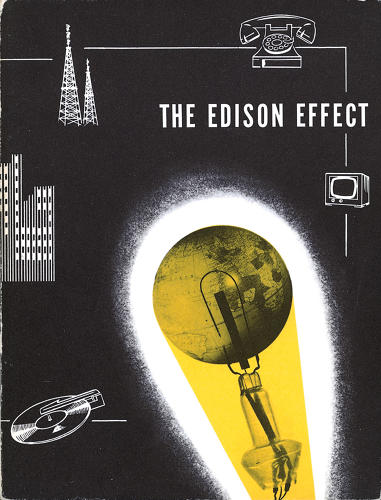
MC: The artists whose work is featured in your book (often anonymous at the time) were given the job of depicting a reality that exists, as you say, “behind reality.” You point to the inherent surrealism of such a task–can you expand on that? …You also note that in 1935, when the electric signals in the human brain were first detected, the study of the electricity, etc, was considered to be “a new assault on the mystery of life…”
MP: The study of the relationship between electricity and the human body is still pretty new. In fact, one reason that I wrote the book is that the future of the practical integration between electronics and the body could be immense enough that its recent history would be overshadowed. That history is already not commonly understood, even as people are increasingly symbiotic with their devices. I wrote the book to serve as a prehistory to counter any historical amnesia that may be induced by possible futures.
The scientific verification, in 1935, that life is reliant on a flow of electricity through the body, proved and extended an idea that Mary Shelley was working with in Frankenstein. Tracing the historical literature it’s interesting to watch the dialogue between electricity and the body migrate out of subcultures and into mainstream hard science over the past 200 years. I’m referring to subcultures like science fiction and also 19th-century experimental para-medical techniques, such as dosing people with electrical current to improve their health. That relationship was subjected to the changing standards of rigor around medical and scientific investigations over the 20th century. Today, work on electronic circuits that could have biomedical applications and that could actually be ingested and dissolved within the body is at the forefront of such research. Assuming that such circuits are developed and proven useful, I wouldn’t be surprised if they came to be a dominant biomedical technology.
When I say “behind reality” I’m referring most literally to the invisibility of the electron stream. While electricity can be made visible as illumination, the flow of electrons through electronic devices, on the other hand, is invisible. Hence, “Inside the Machine.” For a time the components that channeled the flow of electrons, such as vacuum tubes and switches, were visible on the inside of radio cabinets. Some 1930s radio cabinet designs deliberately revealed the circuit board in a gesture to demystify the flow of electrons and glamorize the components. That short window of visibility, however, quickly retreated in the face of ever more complex circuits and ever more “built” environments that housed them. The cultural signification around electronics came to be centered on the integral devices: radio, TV, and eventually computers and everything that flows from them. I felt that there was a cultural history of the components that combine to form electronic devices that needed to be told, and that it was the graphic artists and illustrators working for industry who had made that cultural history–a history that it became my job to expose and interpret for a contemporary audience.
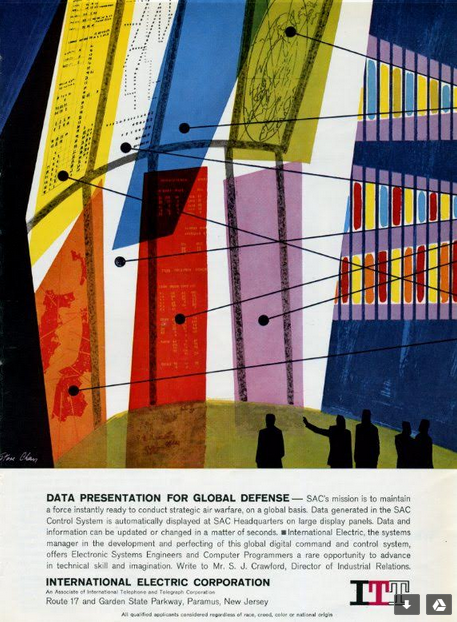
At a more philosophical level, the flow of electrons multiplied our senses. By forming invisible channels through which sounds and images were carried and replicated, electronics created a hierarchy of sense perceptions that had immediate cultural and political significations. How else to characterize that phenomenon besides surreal? Coincidentally the fine art movement known as Surrealism emerged in the 1920s and radios very shortly thereafter, coming to market in the late 20s and exploding in popularity during the 1930s. Think of it this way: multiple electromechanical eyes, faces, ears, and mouths populating homes, offices, and streets, in the form of a proliferation of new gadgets. The world filling with sense receptor multipliers everywhere you look. A mountaintop may be media in the sense that it opens up a perspective impossible to gain any other (unassisted) way, but a climb up a mountain is a unique event offering a unique perspective. Electronic media, in contrast, are most profound in their most ordinary distinguishing feature, which is their simultaneous multiplicity.
MC: You bring up Lewis Mumford in the book, saying that he regarded the craftperson’s bench as a sort of “bridge between art and applied skill.” To what degree has Mumford’s work influenced your thinking?
MP: I discovered the work of Lewis Mumford back in high school and appreciated his broad-spectrum thinking on a range of ground-based systems, like cities and highways. (The first book of his that I read was The Highway and the City.) Back in high school it was a novelty to me that subjects like freeways and cities were written about as subjects in their own right. They hadn’t been previously represented in any spectrum of “subjects” that I had been exposed to. I also liked about Mumford that he incorporated ecological thinking into his philosophies of the built environment, and that his environmental politics predated, and therefore did not fit into, contemporary modes of approaching those subjects.
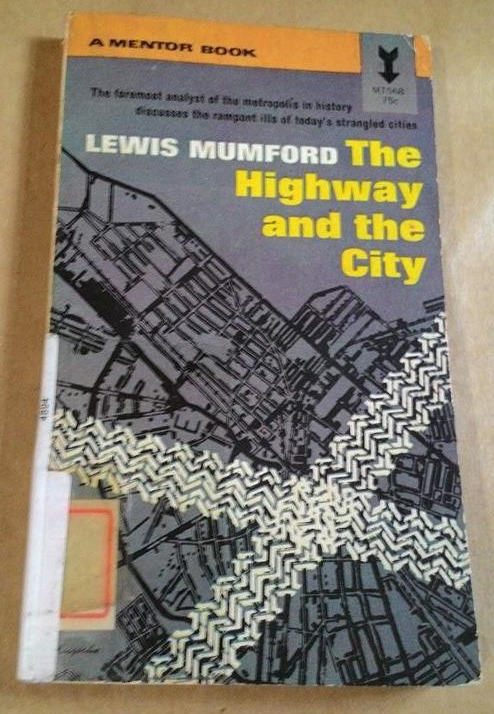
When it came to writing Inside the Machine, I drew on Mumford, who had once been a radio engineer, as a historian of technology (or “technics” in his parlance). His work to elaborate the relationship between fine art and applied art expressed by the craft bench was a needed historical context for discussing the relationship between craft and art.
MC: The constant need for an “enlargement of the military field of perception” has been hugely responsible for innovations in moving-image technology (I am quoting here from Paul Virilio’s book War and Cinema–which I found on your shelves). I wonder how things might have developed differently if such had not been the case? (In other words, if R&D had been guided by the Teslas and the Martenots of the world instead of by Westinghouse, the Pentagon, etc.).
MP: Well… the need for an enlargement of the military field of perception may have been responsible for innovations in moving-image technology, but it must exceed that in the extent to which it influenced space technology! The original satellite programs around the world, both USSR and US, were funded and dedicated to that purpose.
To get back directly, though, to the question you pose: It’s one that opens the door to many interesting possible alternate realities. That’s one reason I became so deeply focused on the work that fine and applied artists did to paint the future of new technologies. If I can make a blanket characterization of those artists as a group: I don’t think they were motivated to pick up a pencil or brush by a desire to enlarge the military field of perception! Instead they were creating all kinds of hybrid visions of the future, including pastoral and surrealist elements that addressed the multiplication of the senses in very humane terms.
There are perhaps more examples of the possibilities you suggest than you might think. For example: the influence of Hugo Gernsback, for whom the science fiction Hugo award is named. Gernsback was an active futurist who promoted science fiction and speculative futures through the mass publication of a wide range of pulp fiction magazines. At the same time he was a serious radio and TV pioneer who founded a radio station, experimented with early television broadcasting, and published “straight” news and craft magazine for radio professionals and amateurs alike, such as Radio-Electronics and Science and Mechanics to name just two. His “straight” news and craft magazines typically had a futurist-oriented editorial edge; one that was uninterested in mapping problems or limits or real-world geopolitics onto the emergence of new technologies. I don’t doubt that Gernsback’s influence was a shaping force on the emergence of electronic technology in ways that may not be fully understood for years. I don’t mean to dwell on Gernsback — he’s been widely written about in histories and biographies and I have never felt the call to add much to his hagiography. But I’m mentioning him here to directly respond to your query of “What if (R&D had been guided by the Teslas and the Martenots of the world)”. One more note: Tesla’s name was not attached to his invention in the way that Edison’s was, but he did invent AC (alternating current). Given that most people in the industrialized world use AC every day, I would argue that Tesla did guide the research and development of some of the essential infrastructure of everyday life.
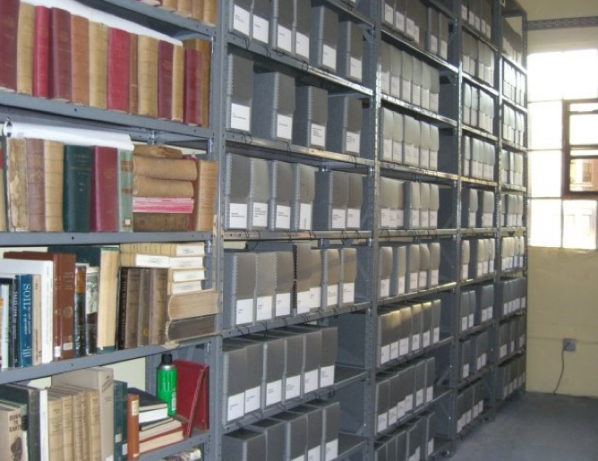
MC: Toward the end of the book you wonder whether computers will someday be “grown” instead of built. Sounds cool! Brings to my mind certain left-field figures such as Bern Porter. …Porter chose to drop out of professional science (to pursue DIY “sci-art” and many other things) after having worked on the Manhattan Project. I thought of him while looking at your book, since he is also said to have helped develop the cathode ray tube. …I am curious, what you may have learned about humanity’s future by delving into all these inventions of the past?
MP: In crafting that conclusion I was putting together a few different pieces of real evidence and combining them in a hypothetical exercise. I didn’t think it was that crazy. Consider the following verifiable phenomena: The biomedical circuits that can be ingested and dissolved in the human body; the capacity of mycelia networks–underground networks of fungal bodies—to effectively redistribute nutrients between different plants in the soil; the published theory that life itself may have emerged from primordial clay (not “soup”); the wisdom of permaculture.
I’ve read widely about all these phenomena, and other related phenomena. When I try to visualize an answer to the problem of toxic chemicals and heavy metals bound up in electronic devices, it seems reasonable to me that a hundred years from now, or maybe even only twenty years from now, people will have figured out how to extract computational functions from some combination of these kinds of existing features of the natural world. Or will have developed some intelligent permaculture that can perform media functions at the same time as producing food.
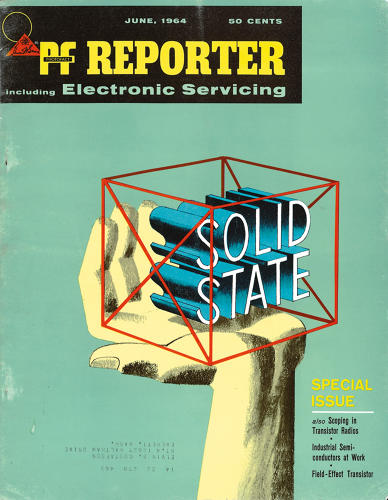
Or, never mind organic phenomena, what if all the essential elements of sand, stone, glass, (plastic) and metal that form electronic machines could be formulated and constructed to smartly dematerialize when they were no longer needed? What if you could drop a laptop into special bin that would use magnets and clean biochemical processes to disassemble all those building blocks, and distill them into measured piles and vials of raw materials for new machines?
Maybe I’ve read too much science fiction… but I’d prefer to believe that I’ve just read too much history to feel that the possibilities for the future are in any way fixed or limited. In human history–in natural history too, for that matter–epochal shifts happen sometimes “overnight” (at least in geological or historical senses), usually from the emergence of a new phenomenon that results from combined antecedents that were hidden below the surface until abruptly transformed and brought to daylight. There’s no reason to think that the dirty century of the 20th/21st centuries couldn’t experience an abrupt paradigm shift in favor of a very different kind of model.